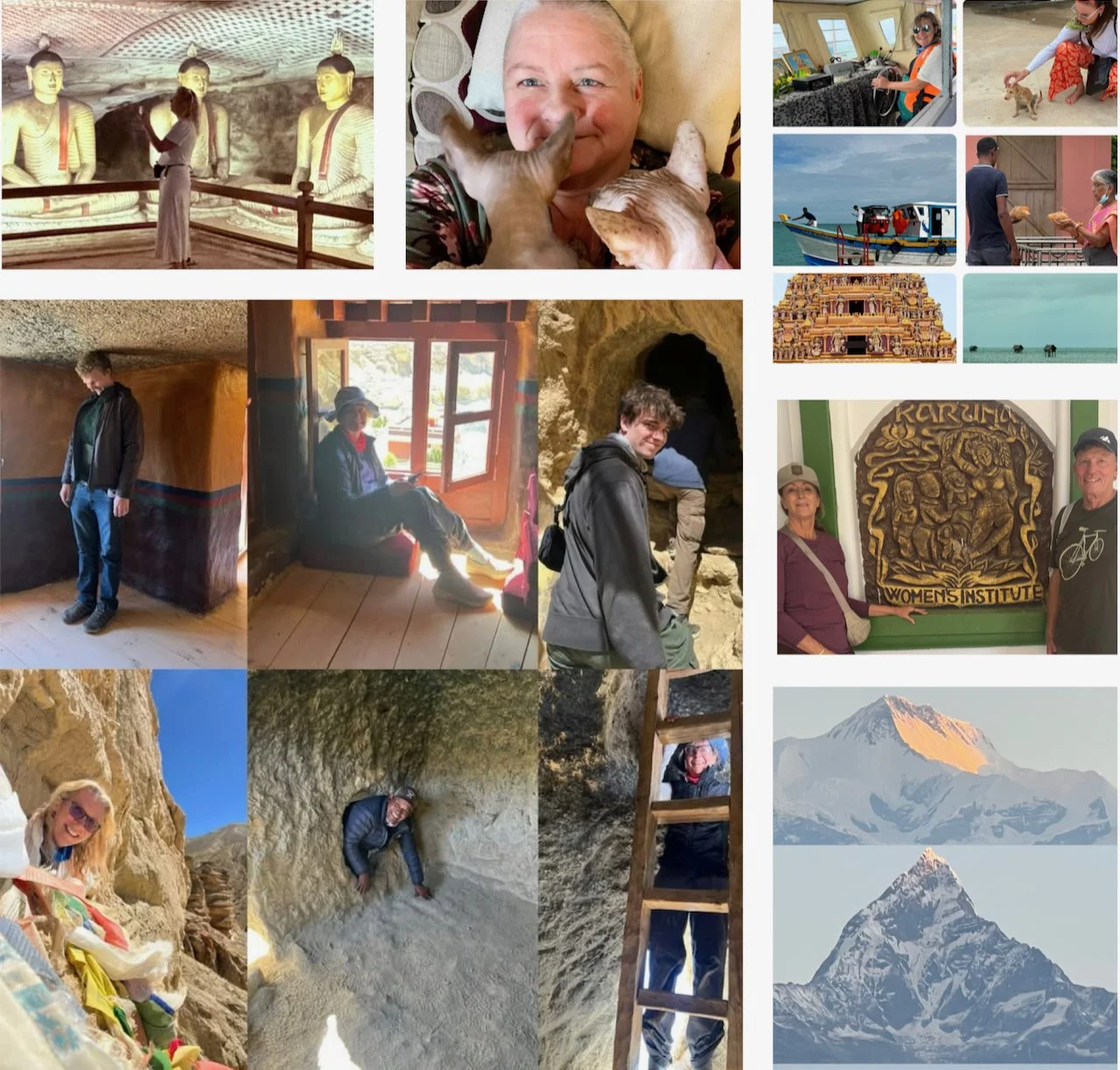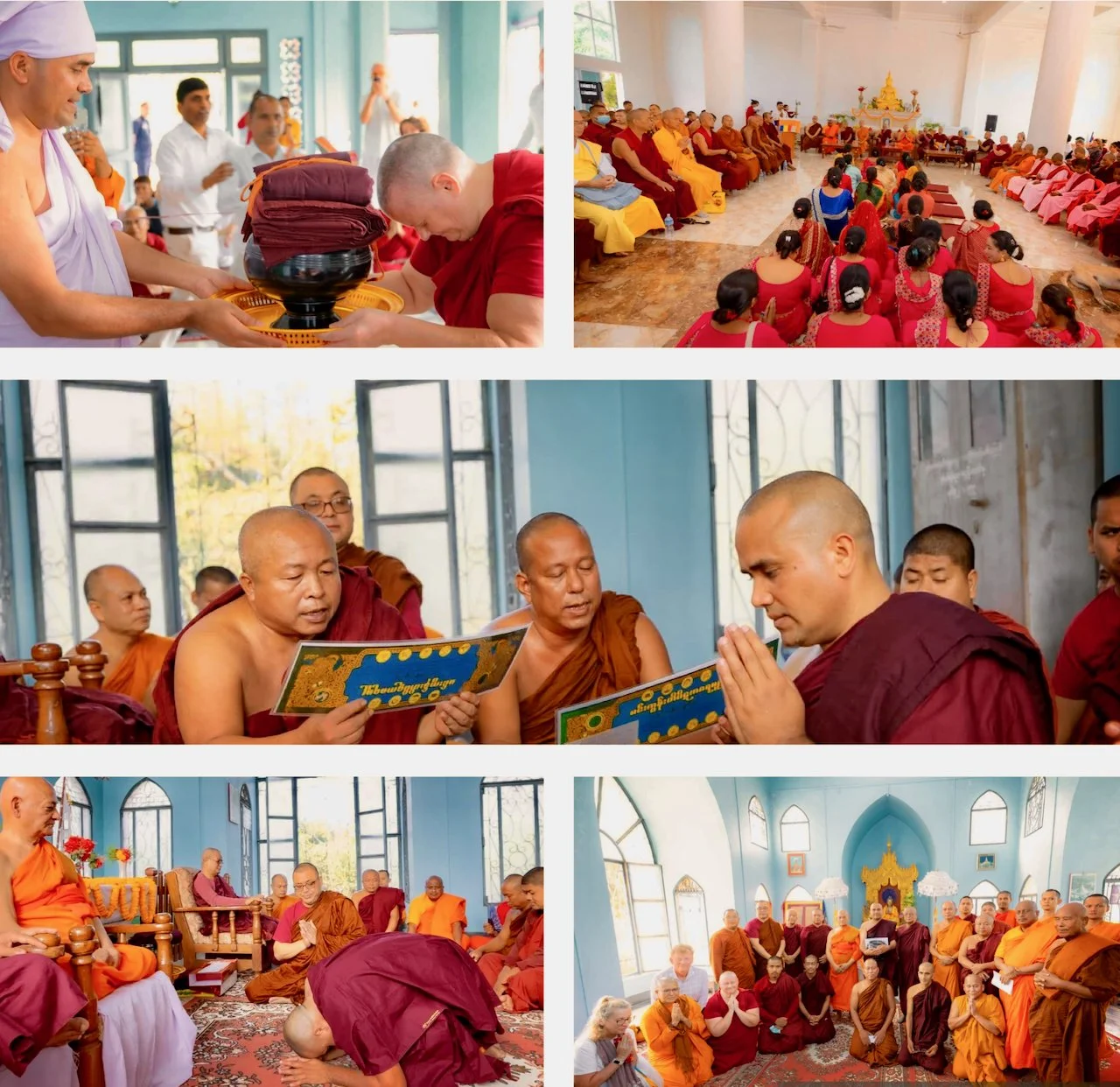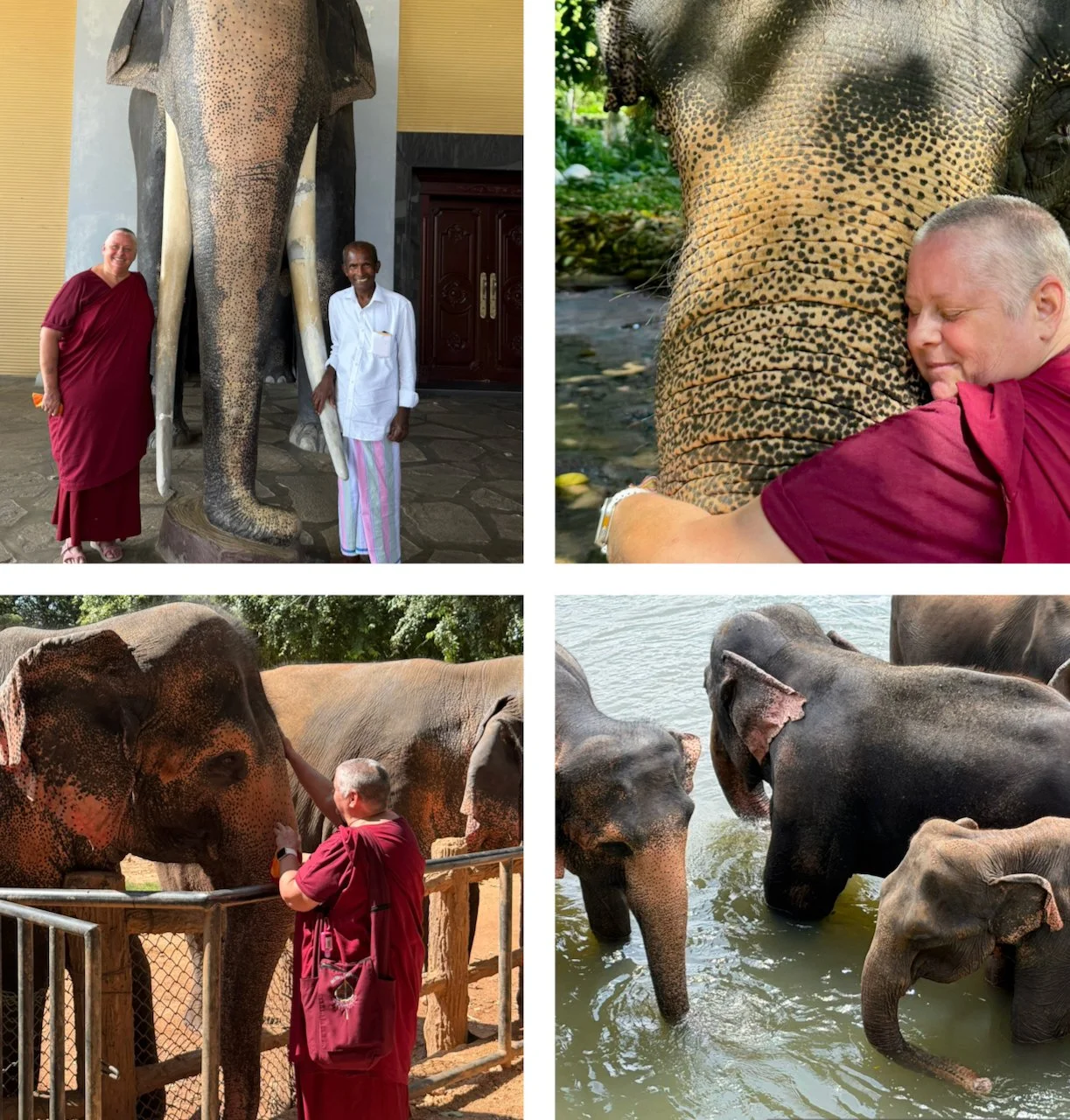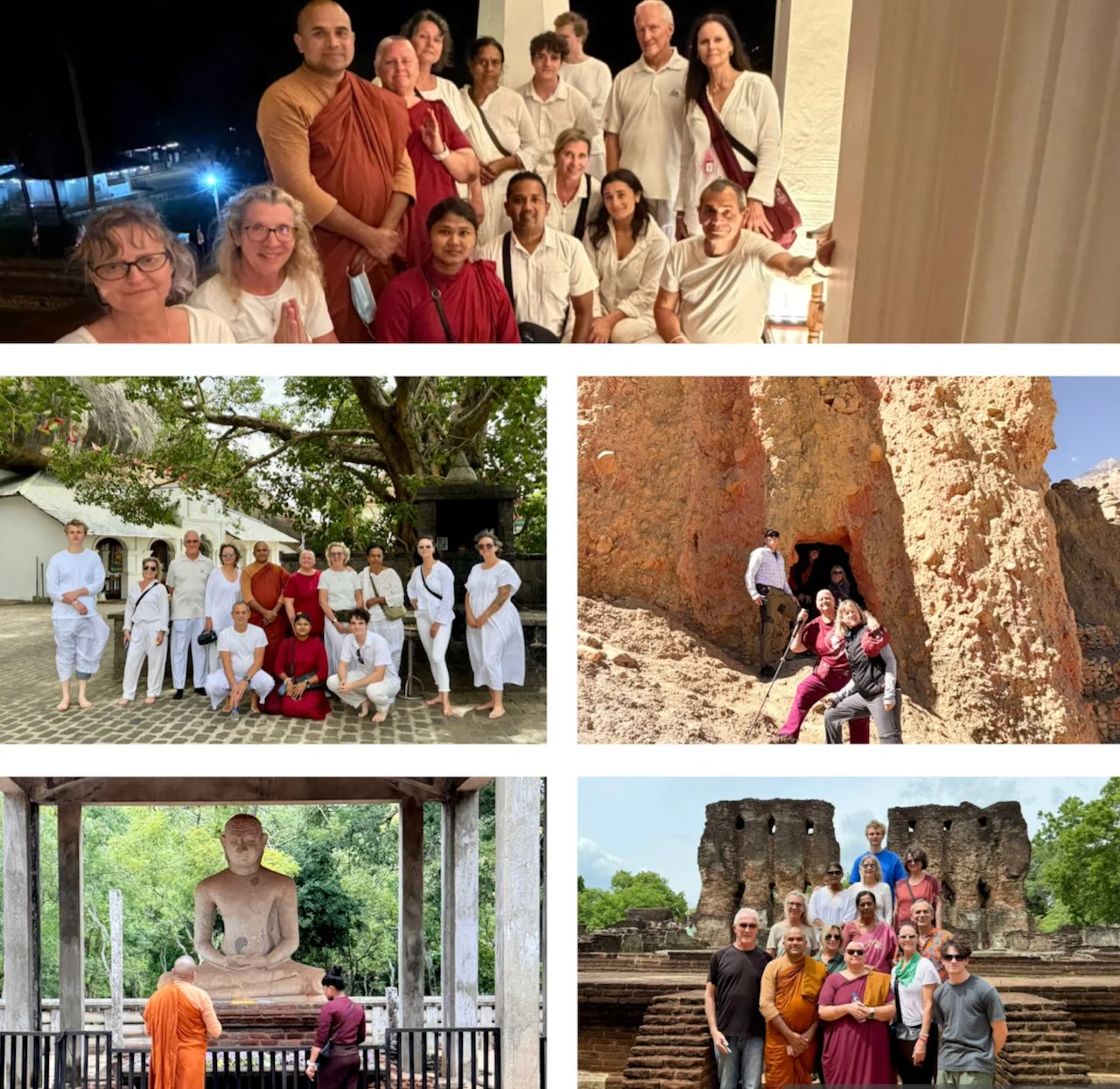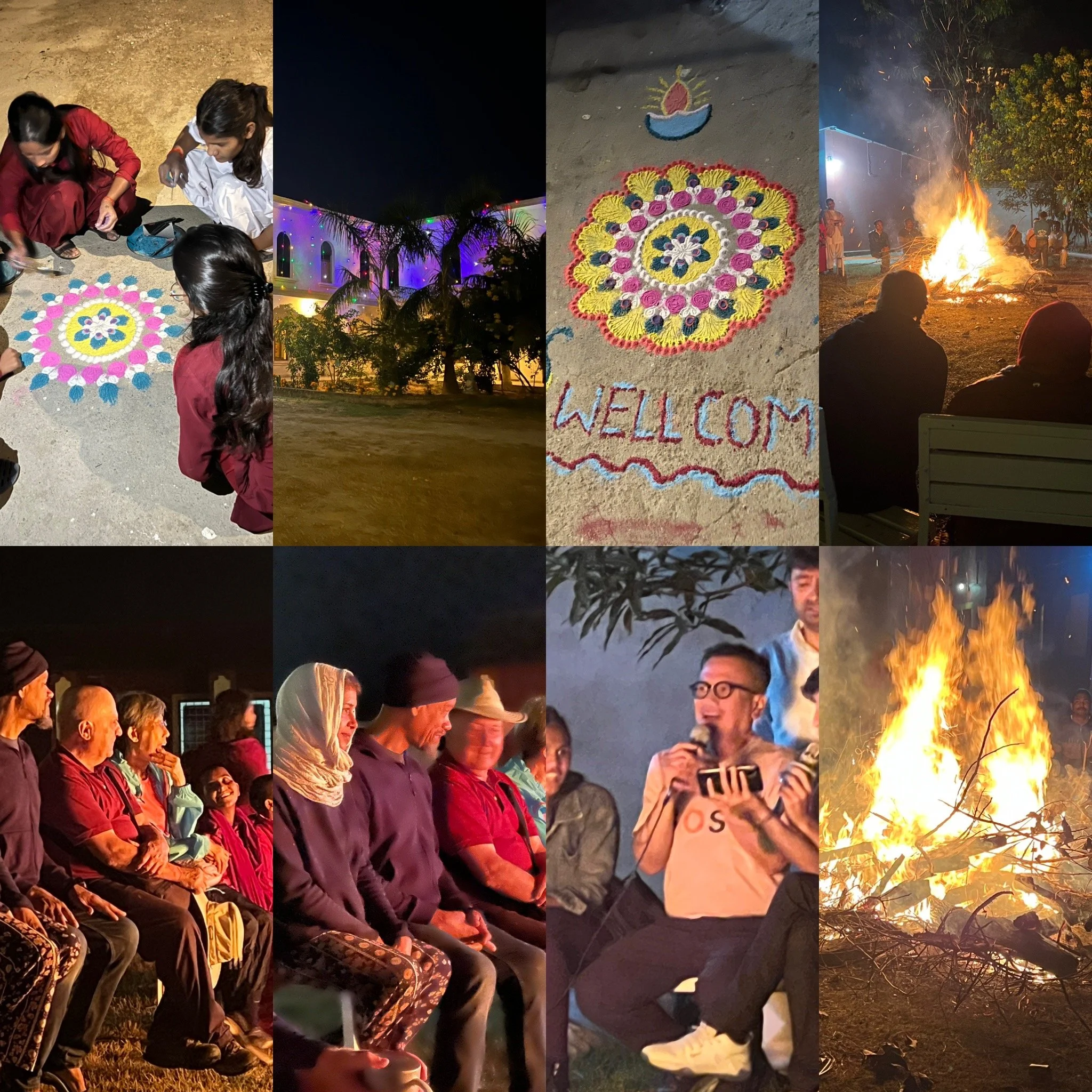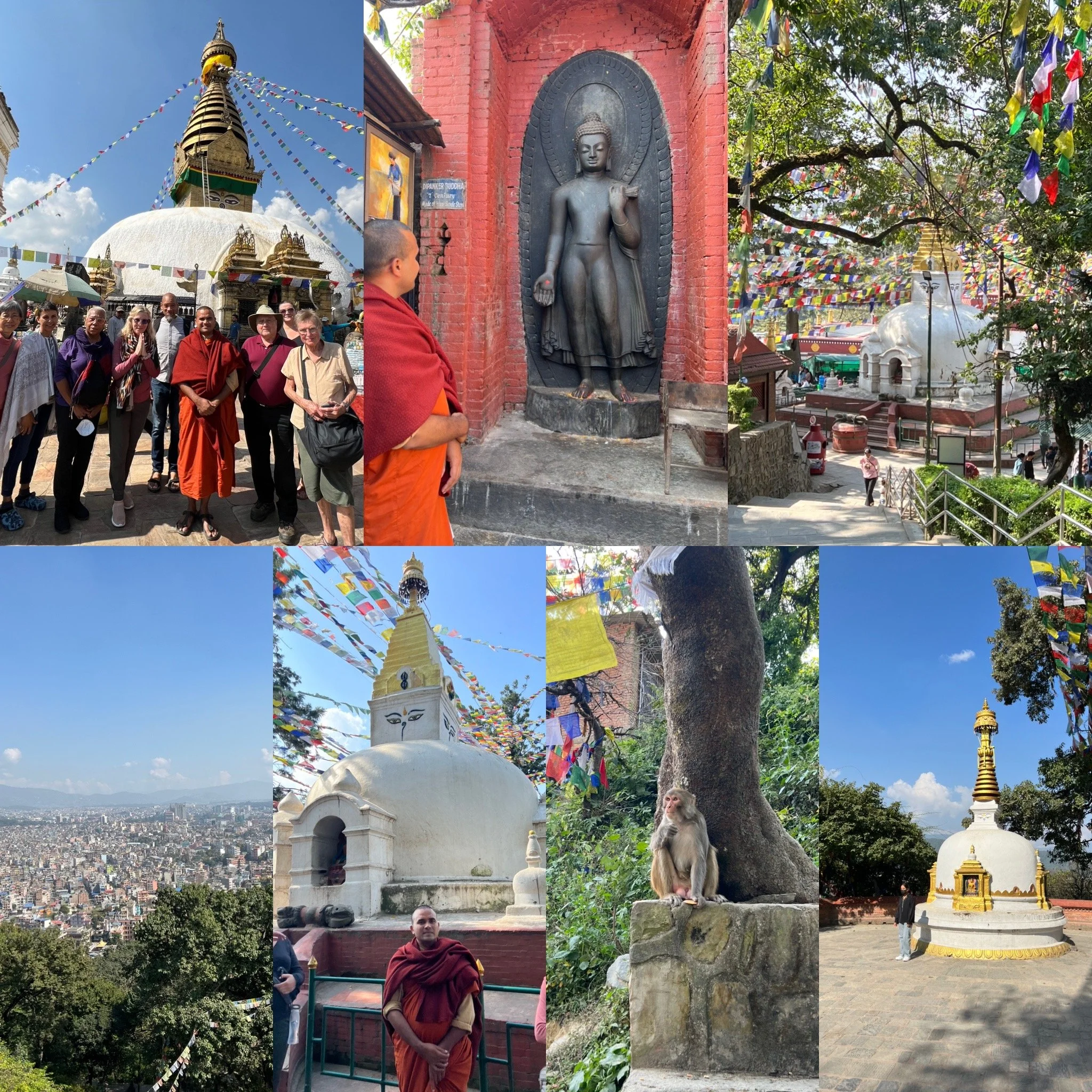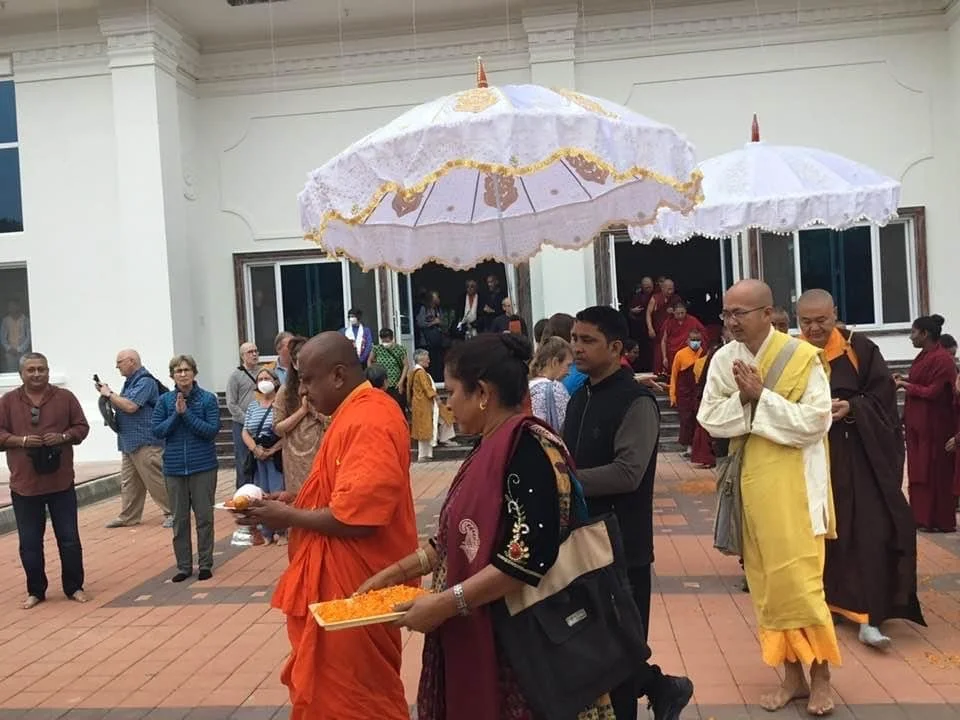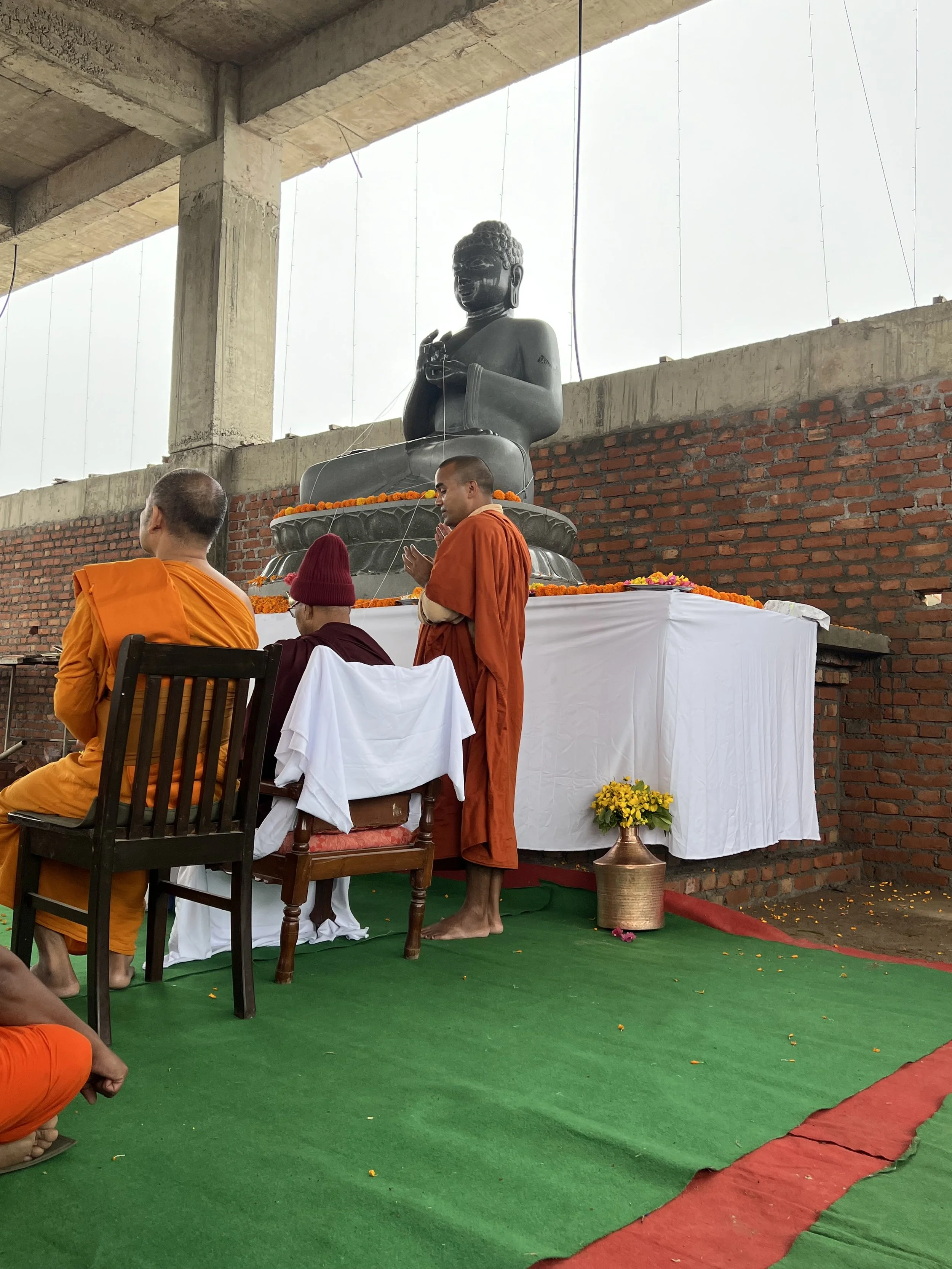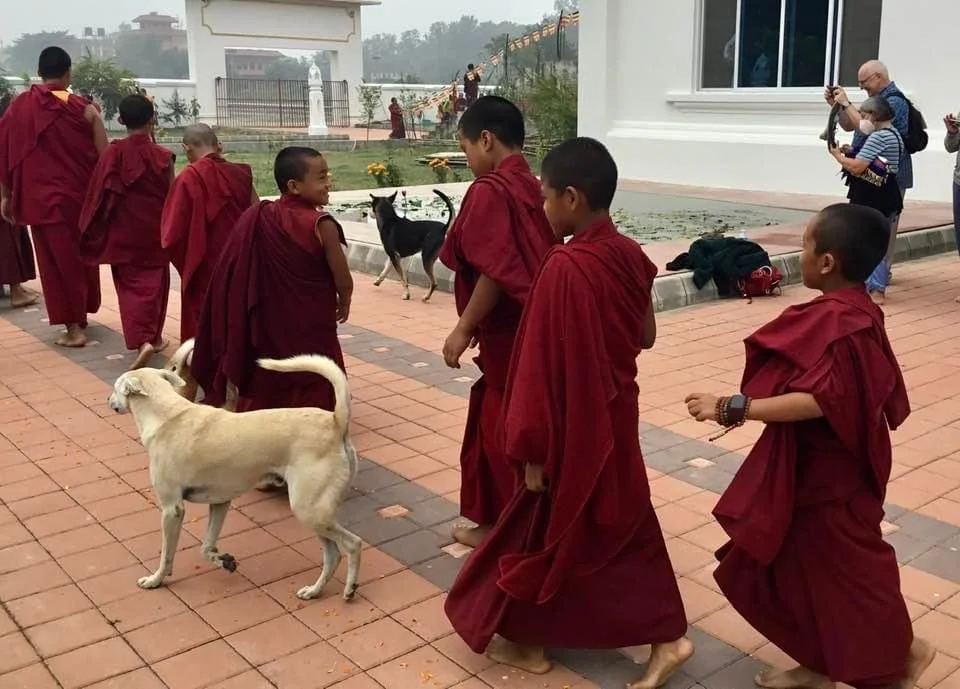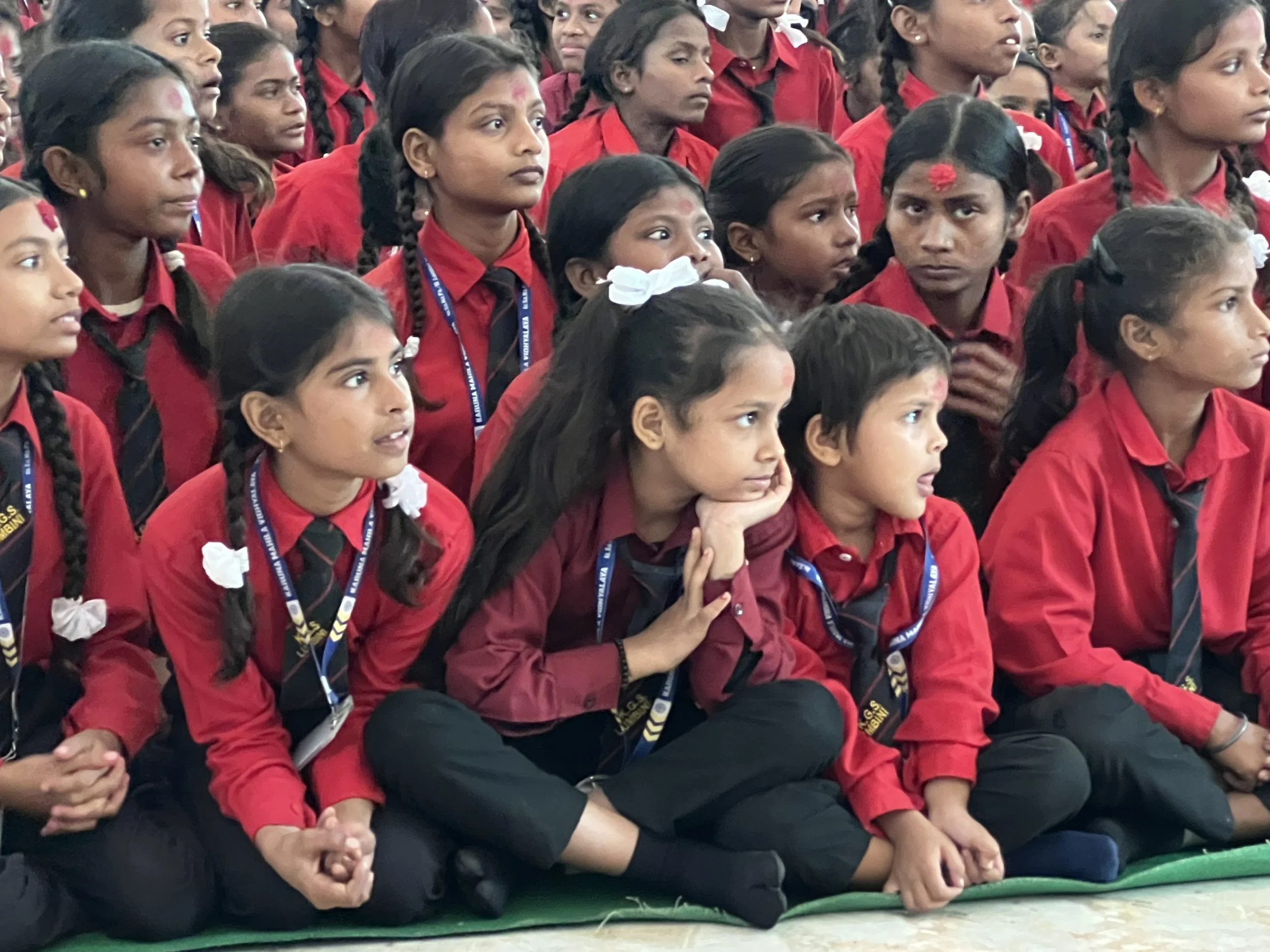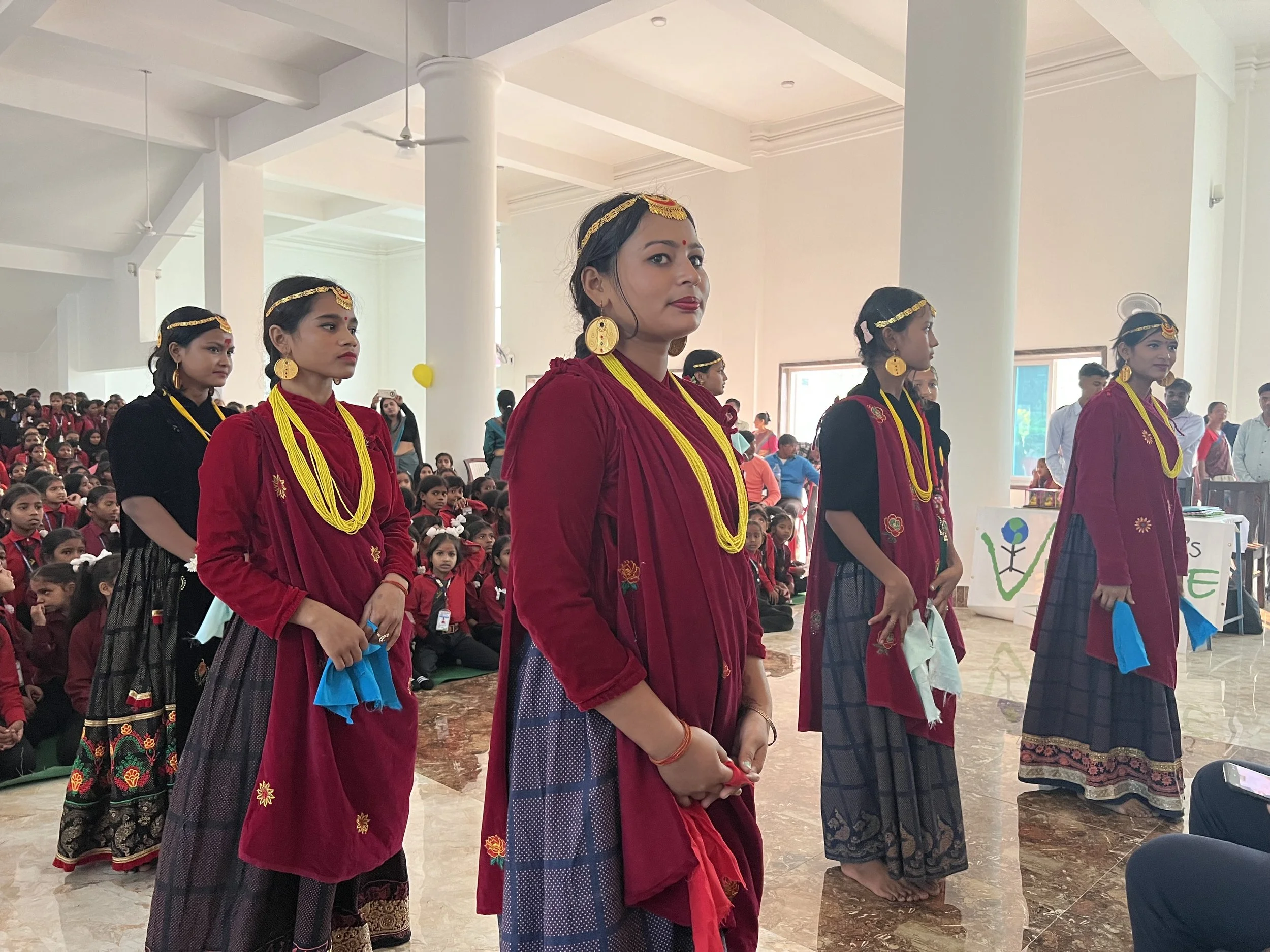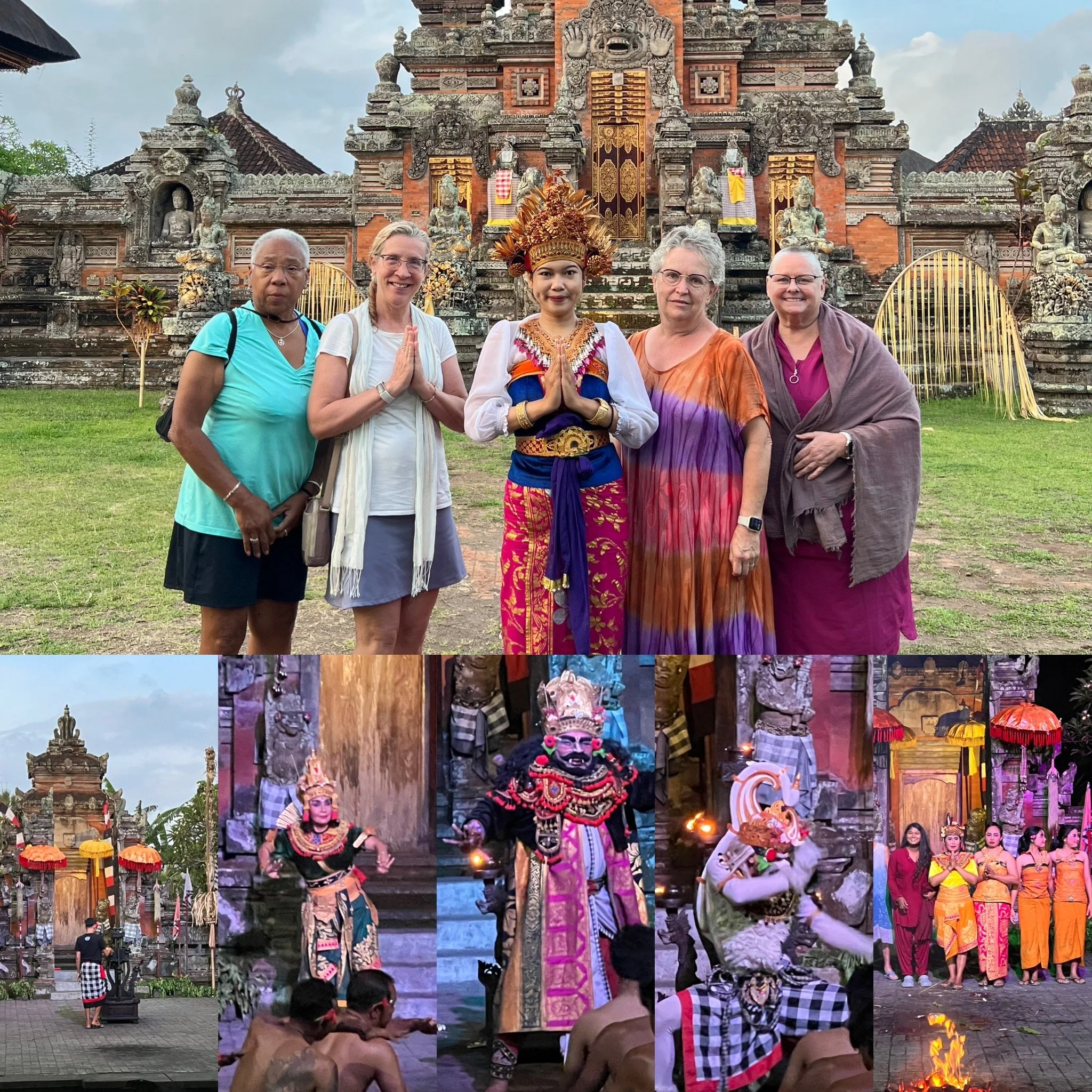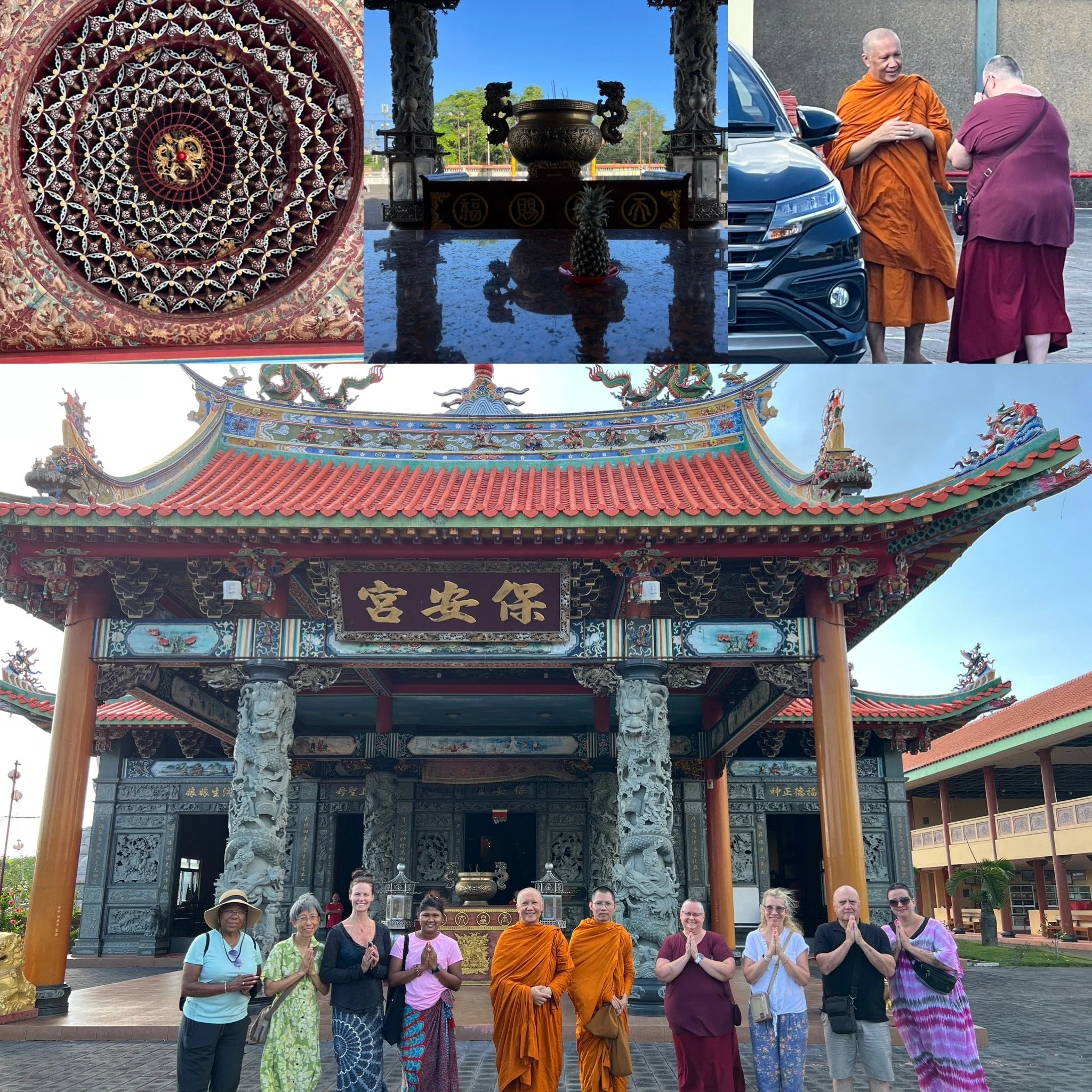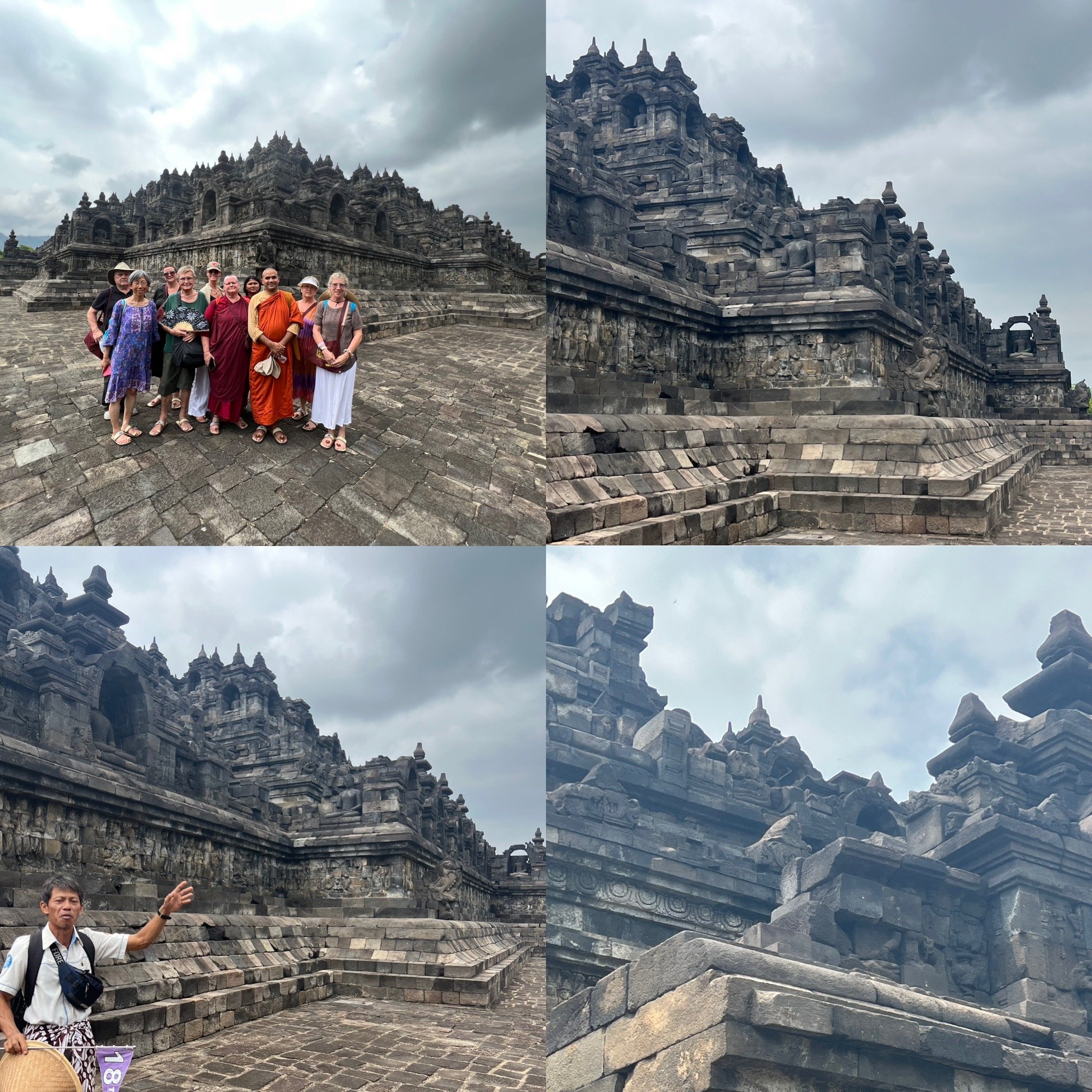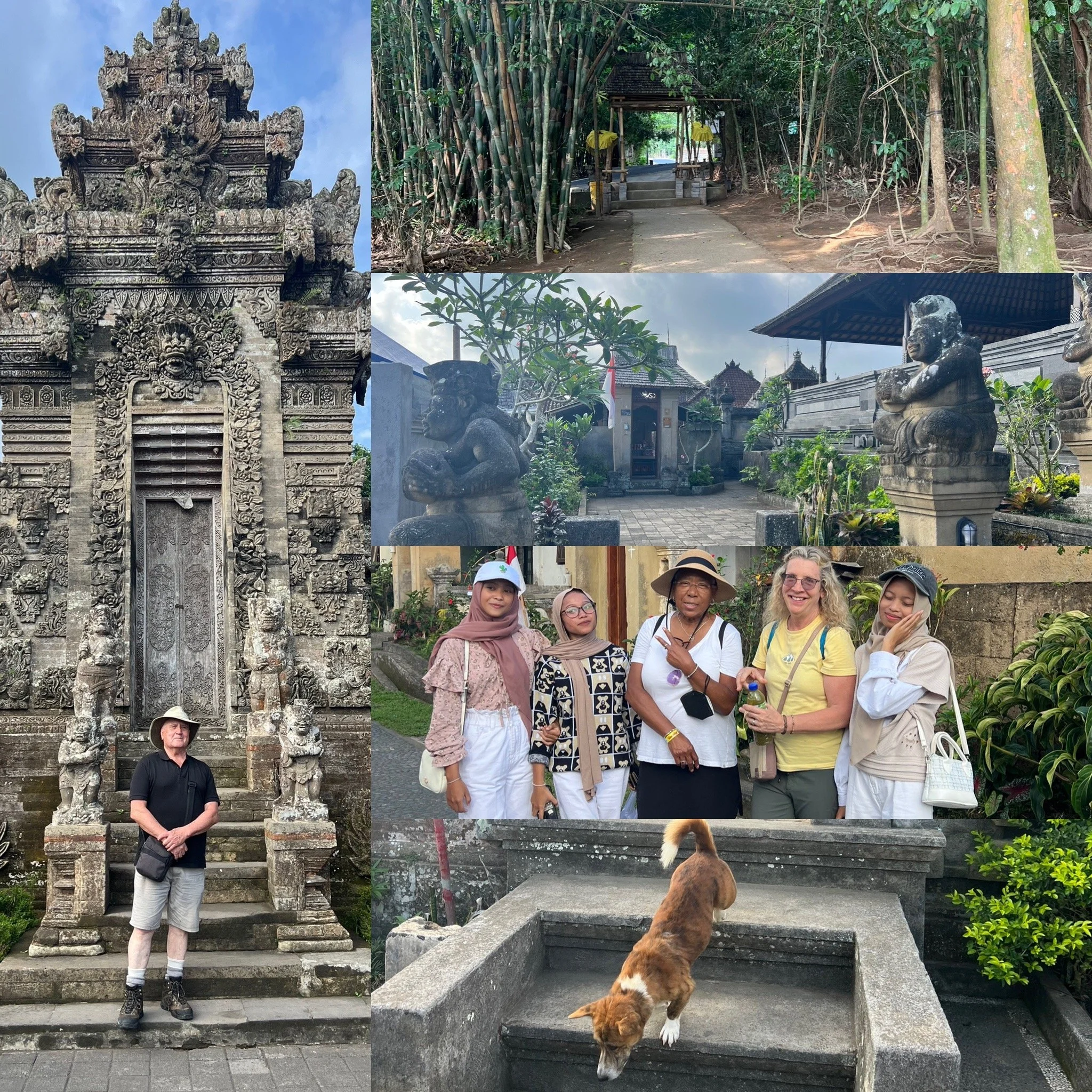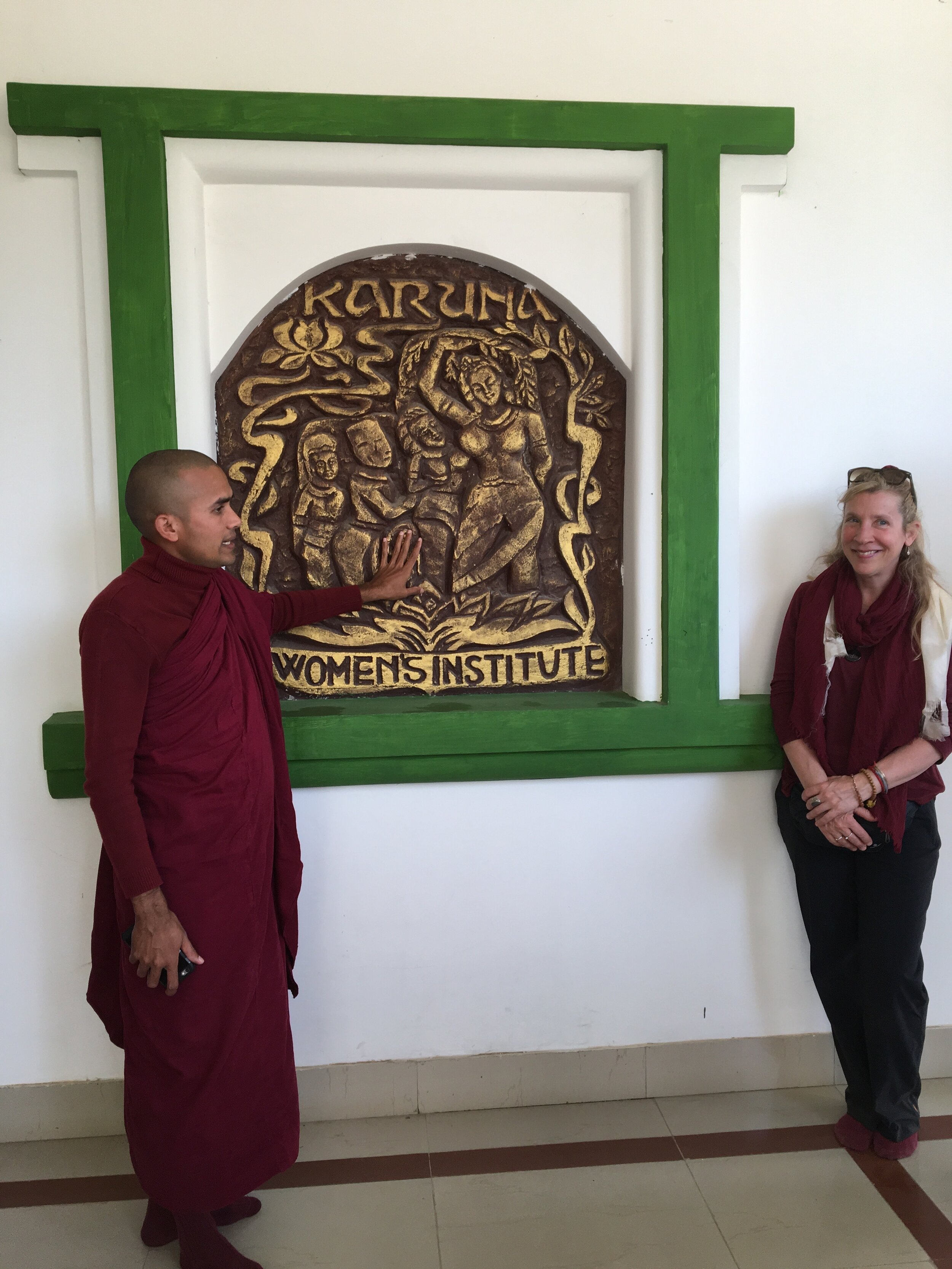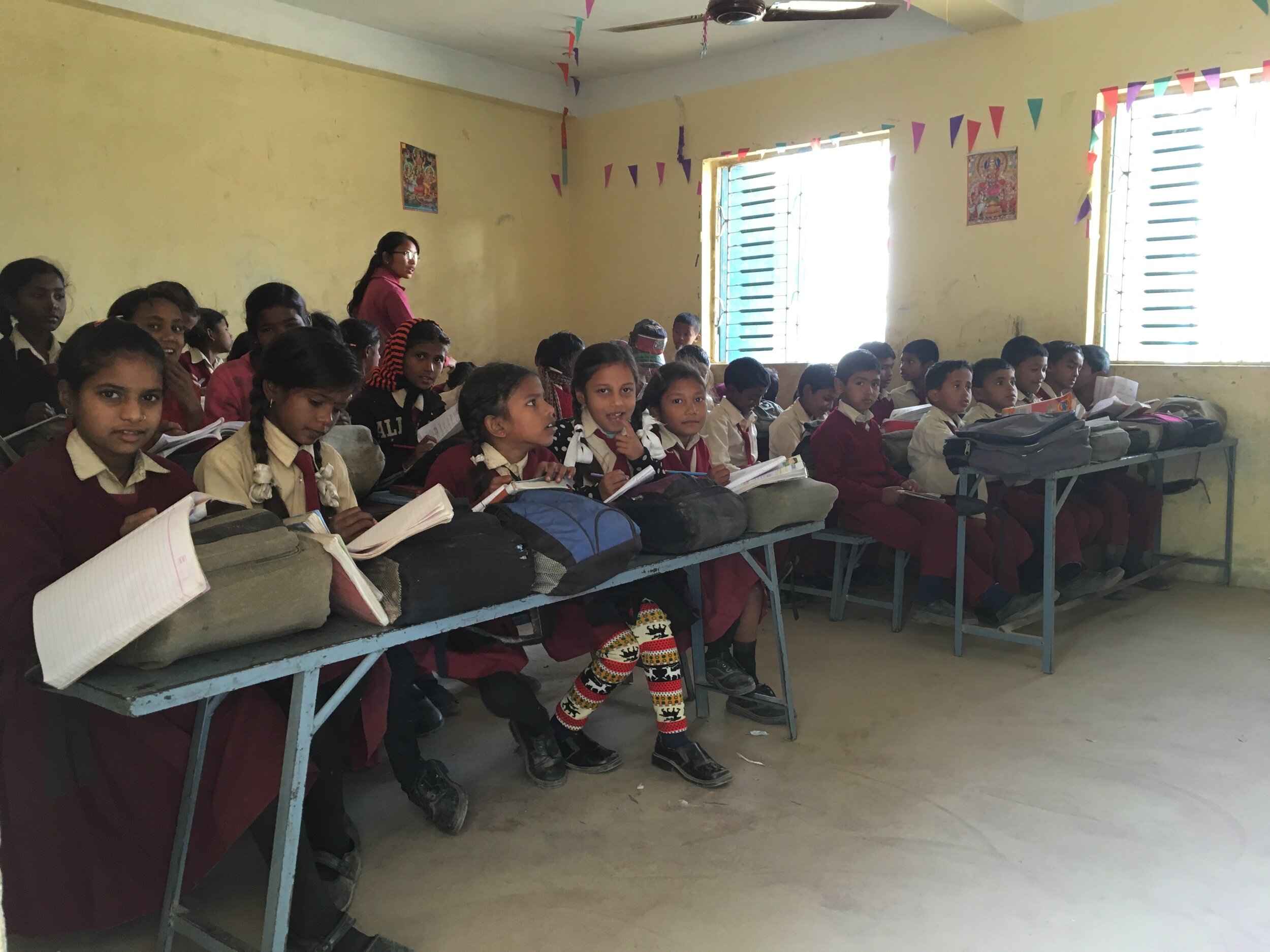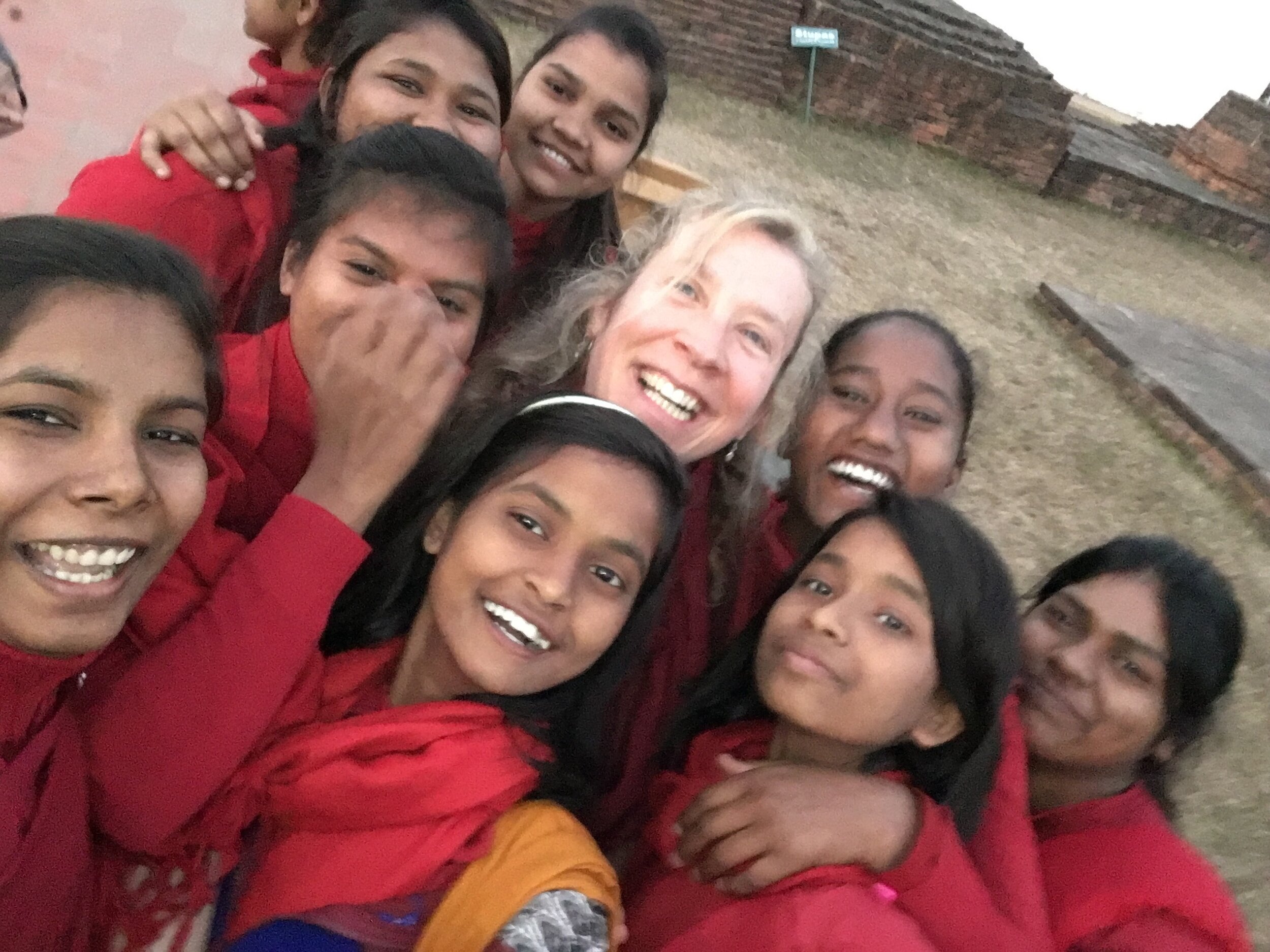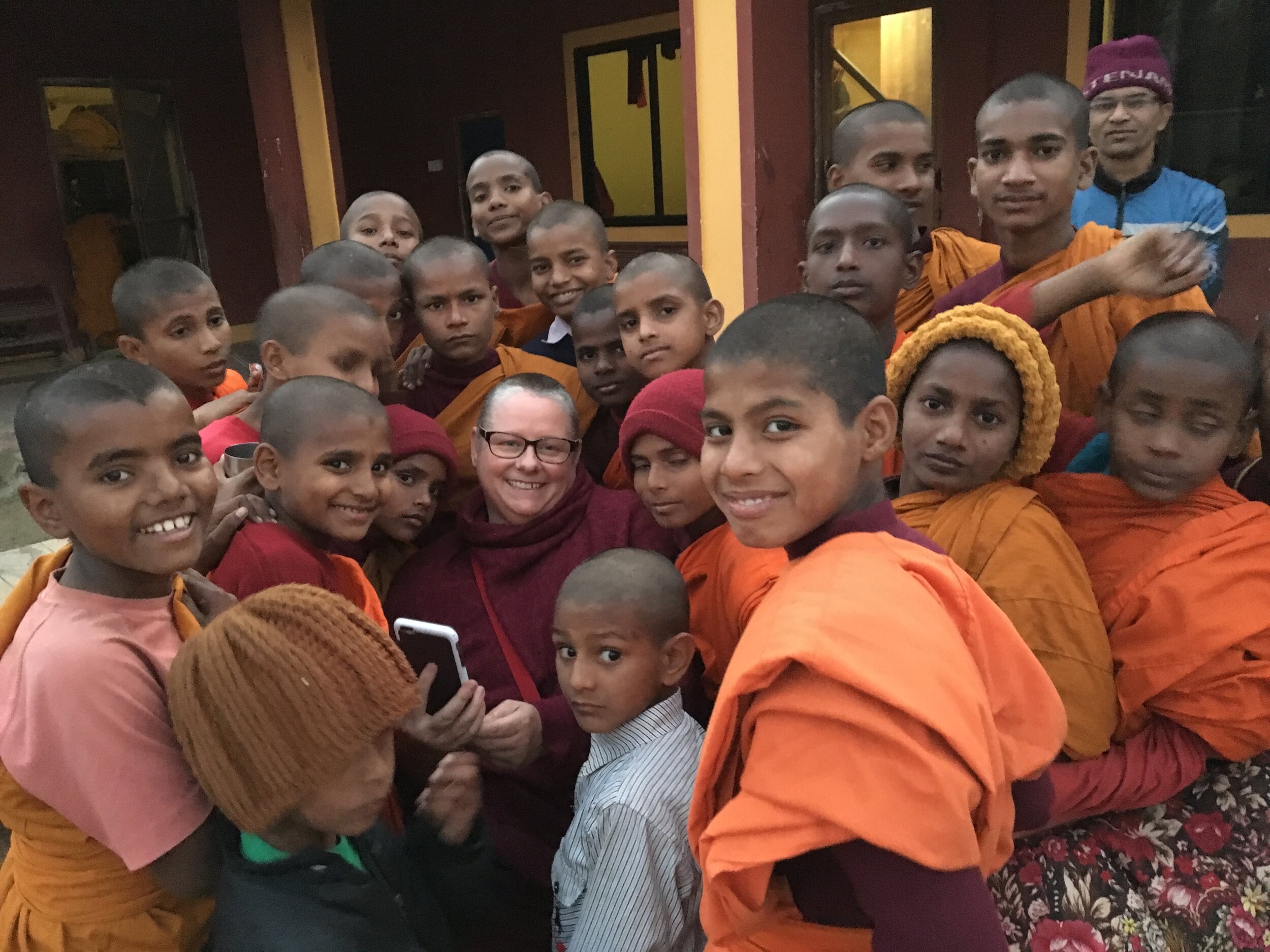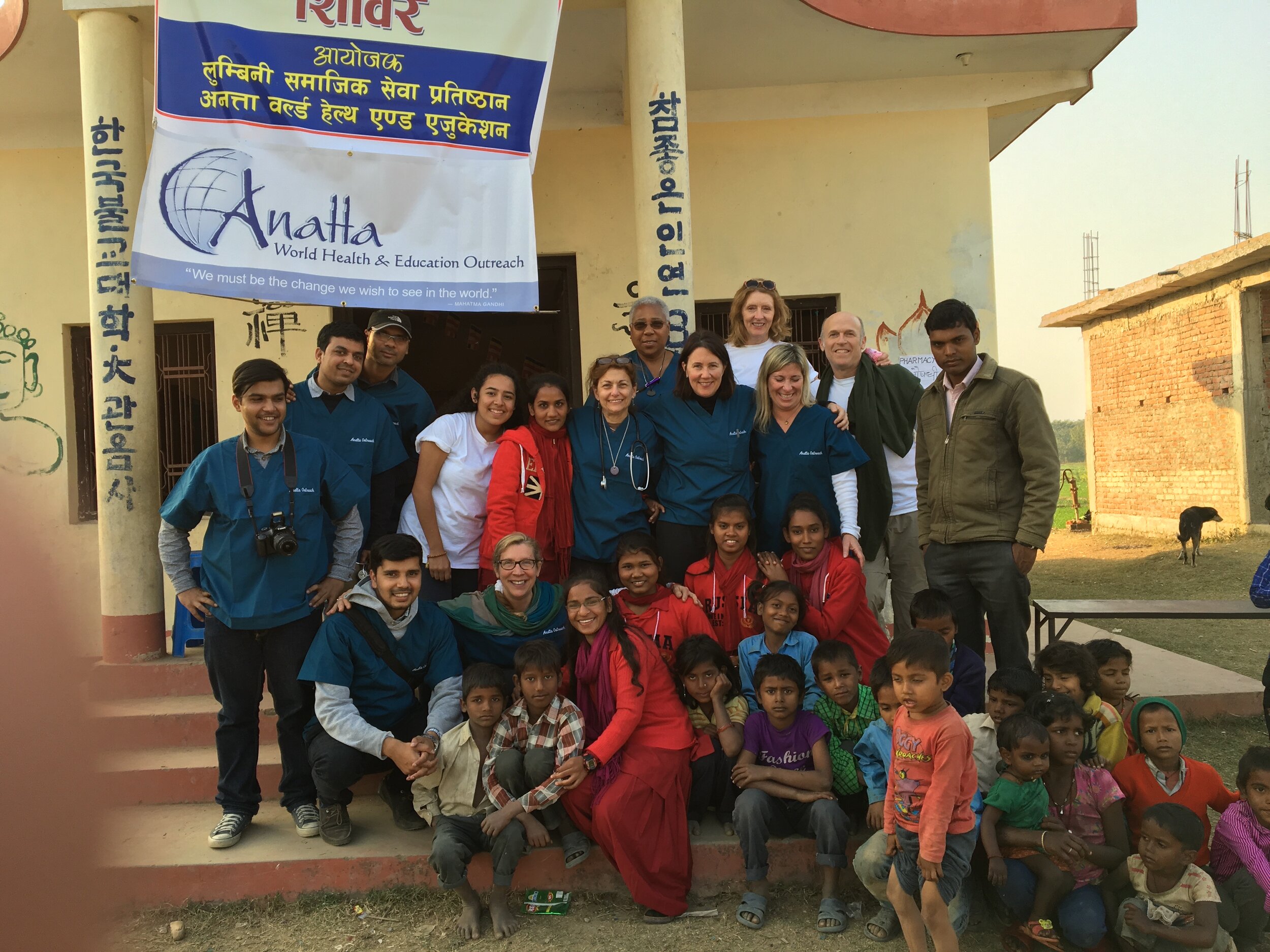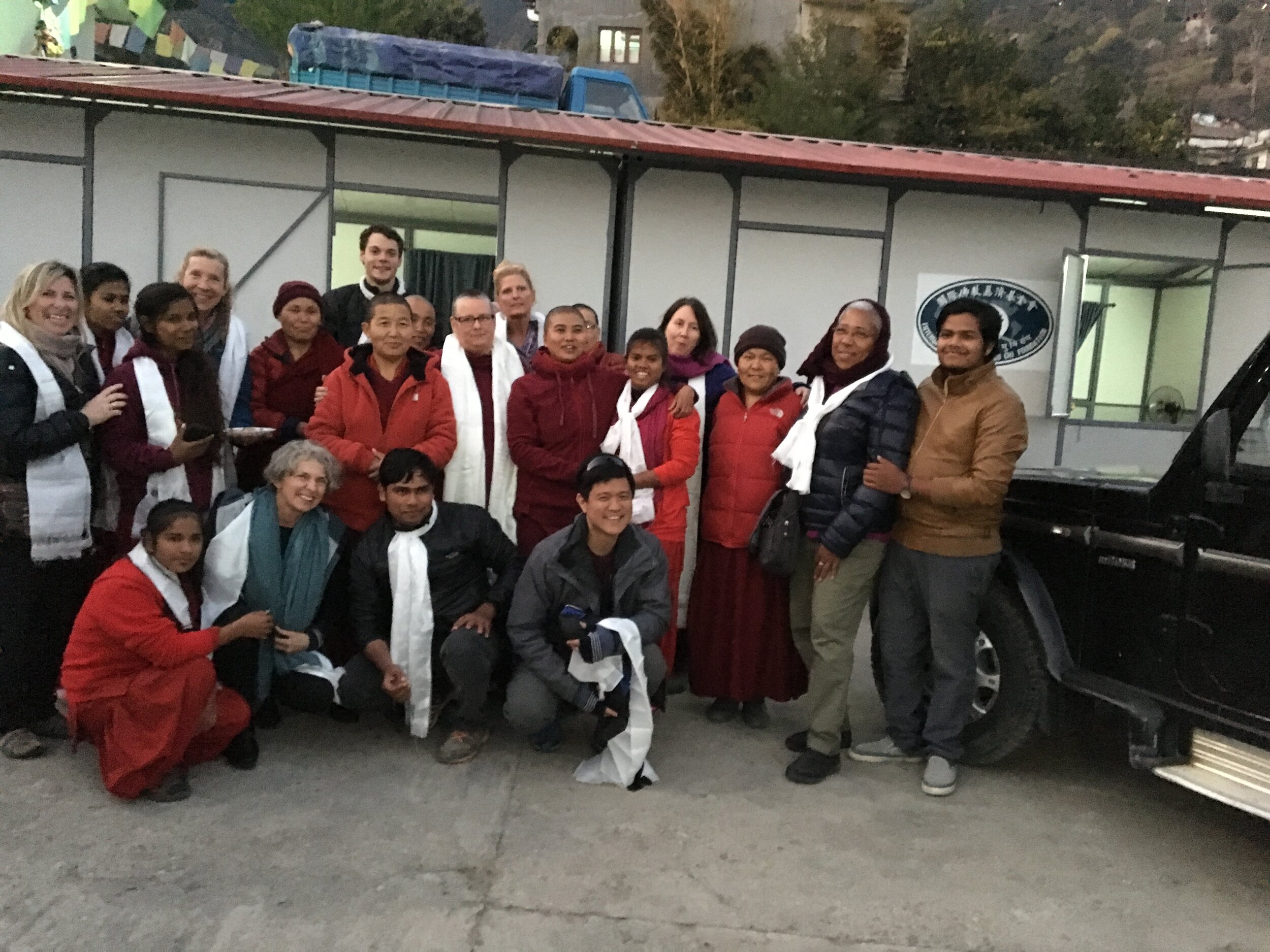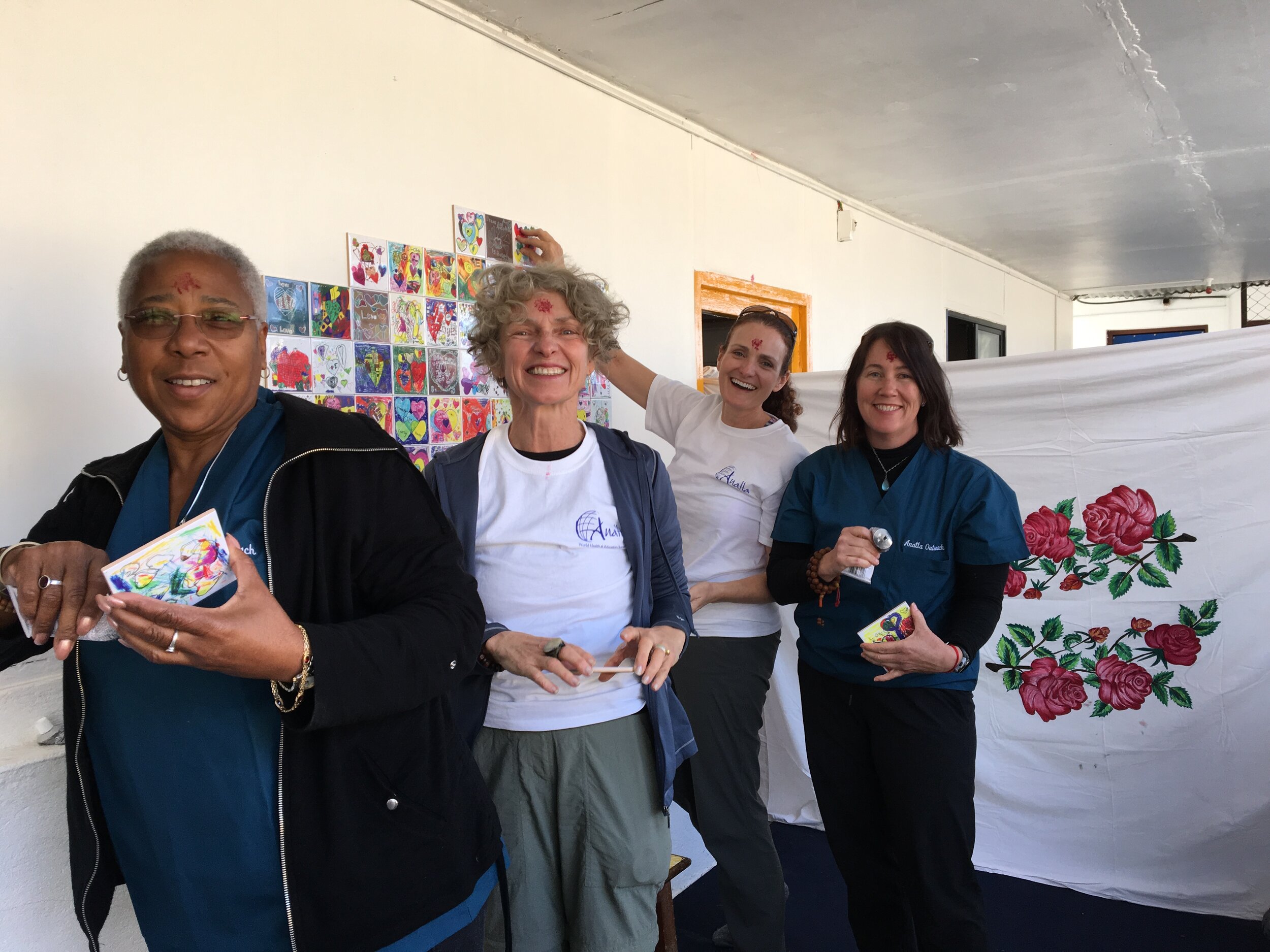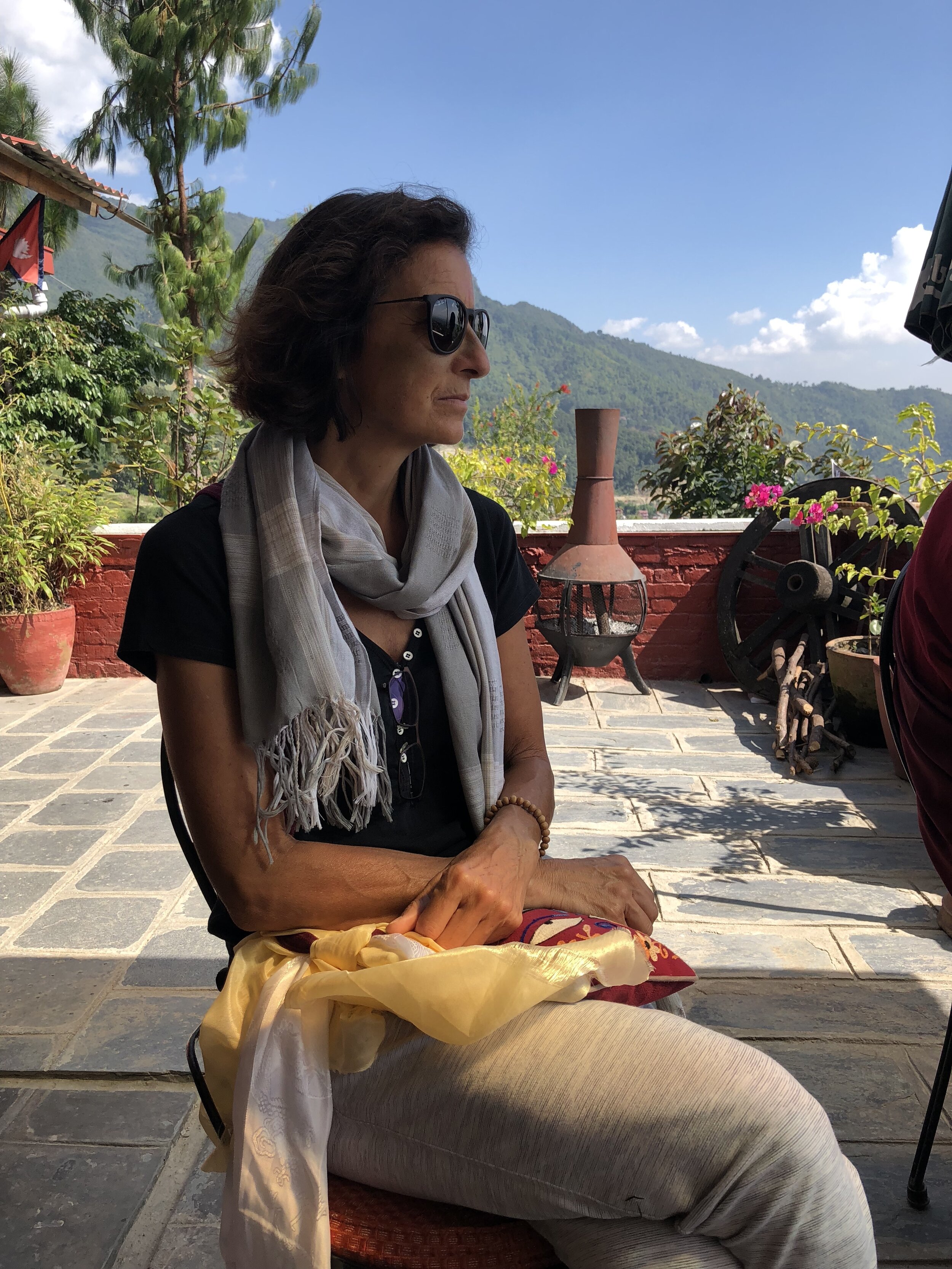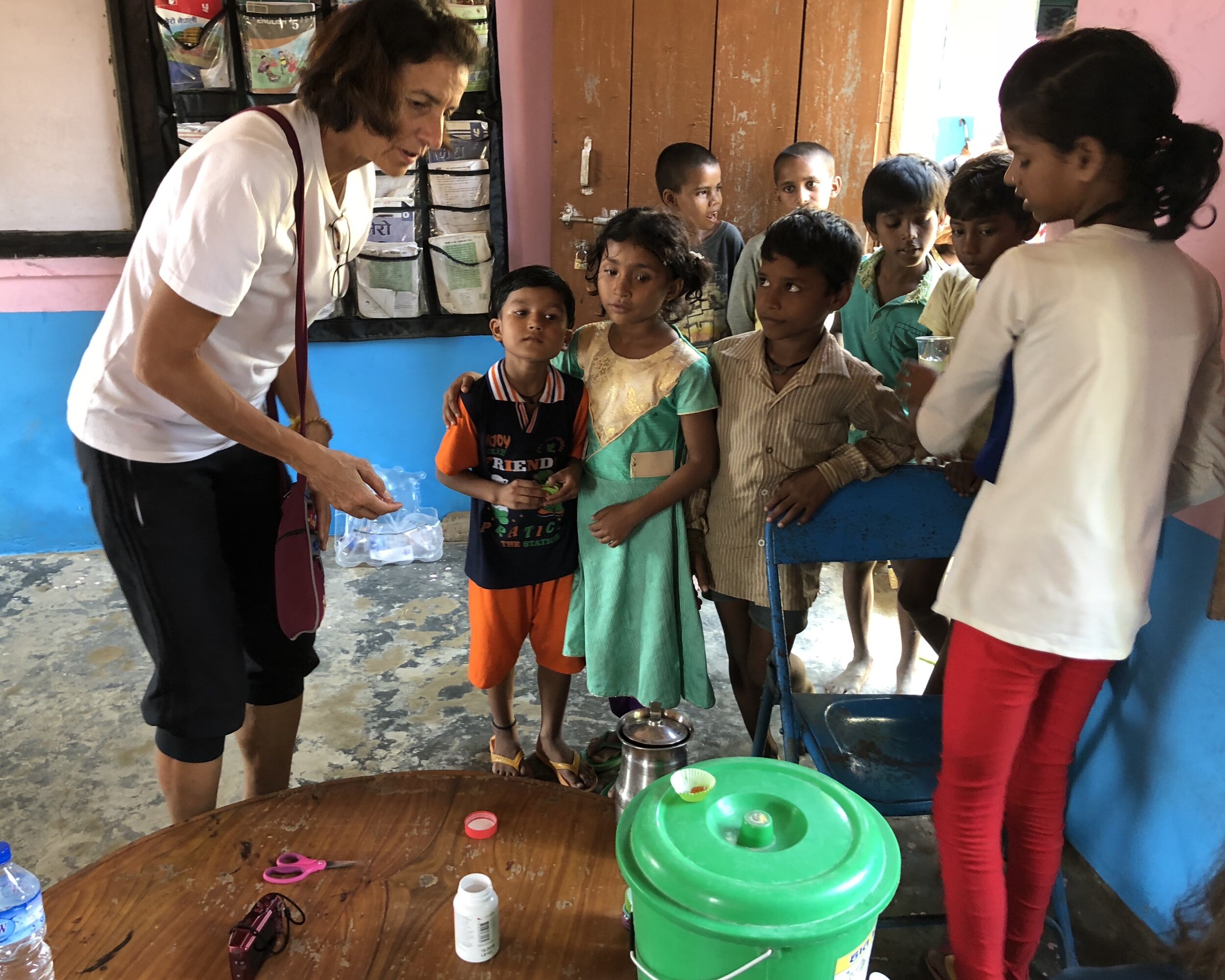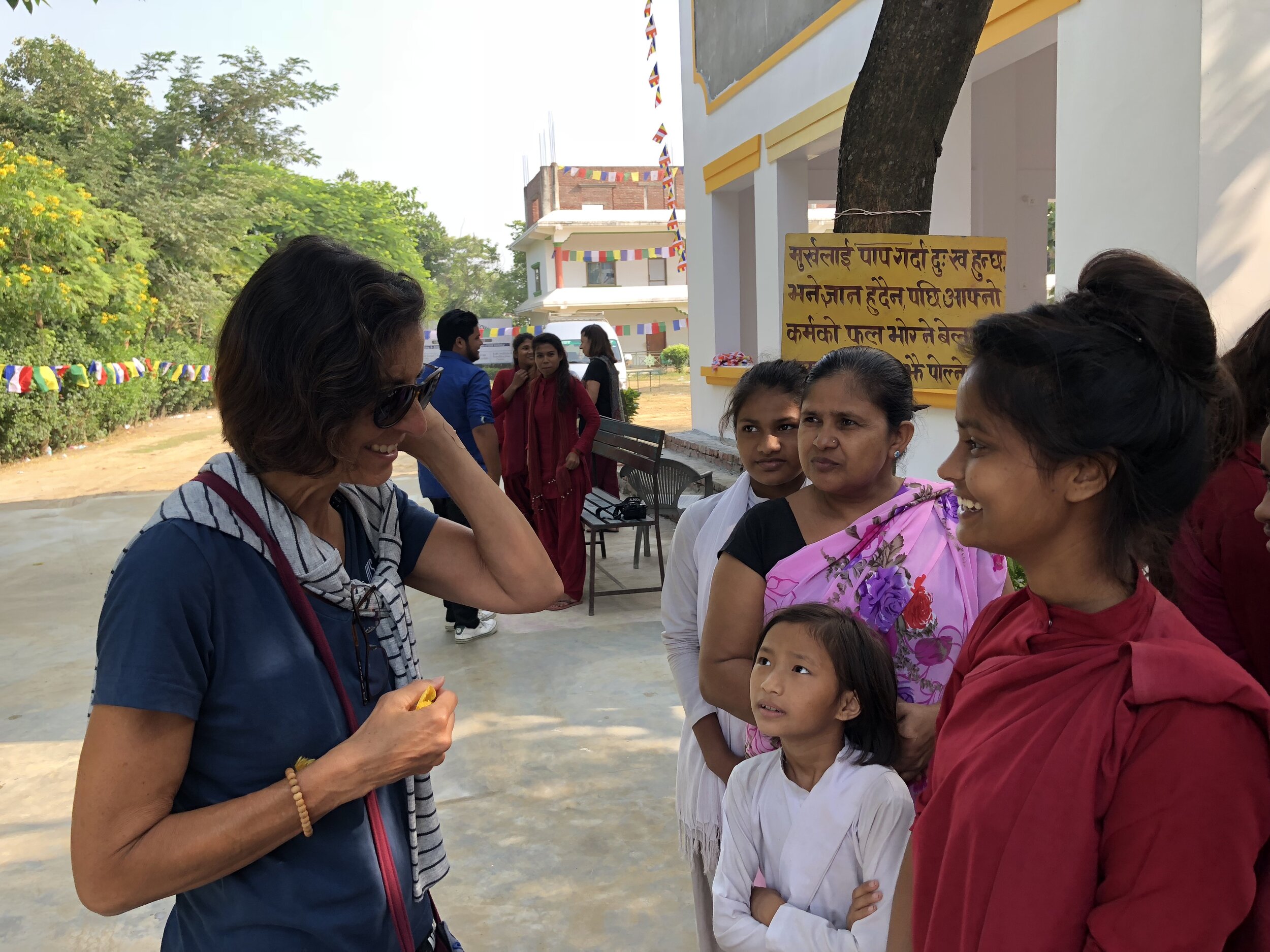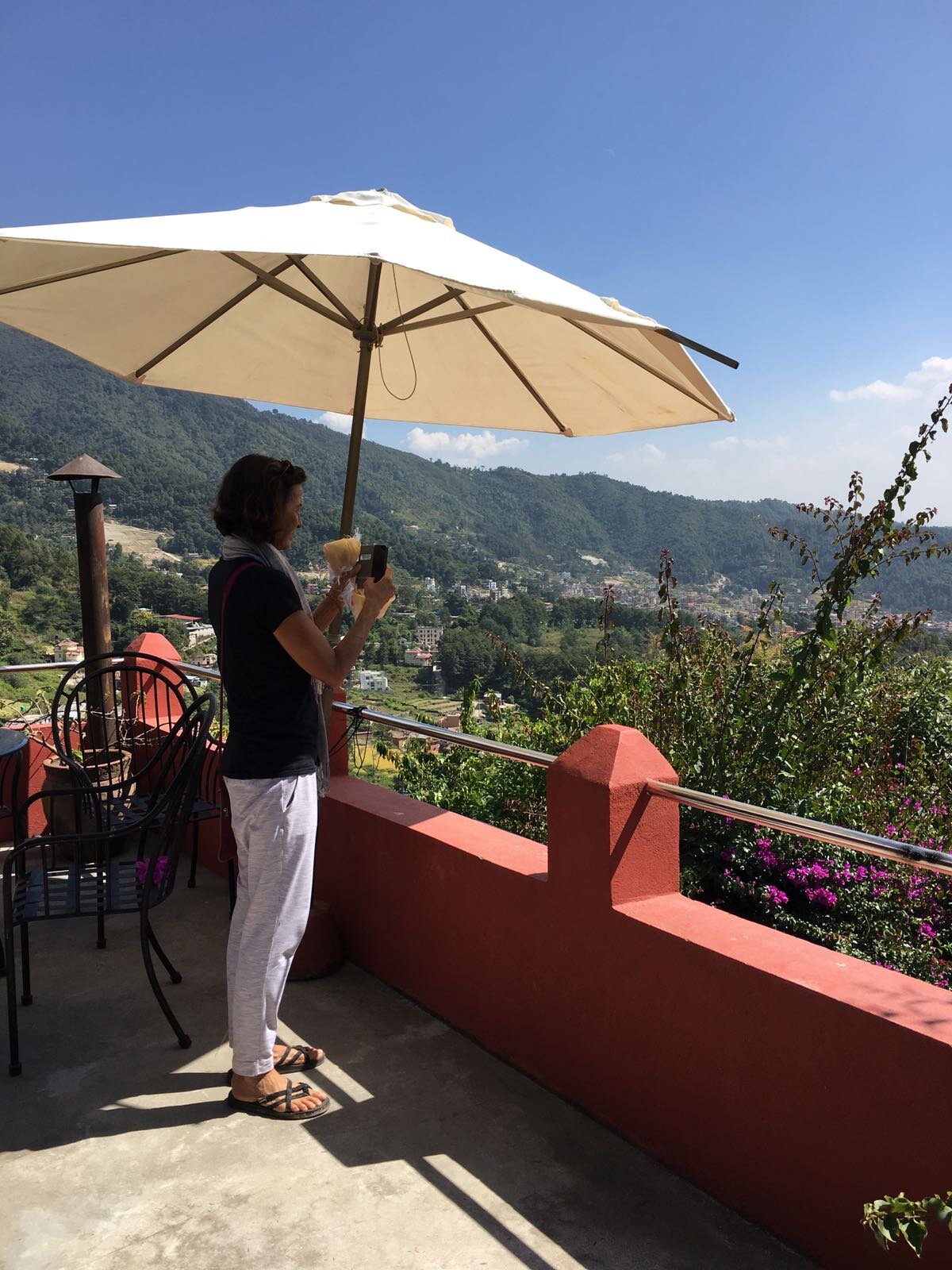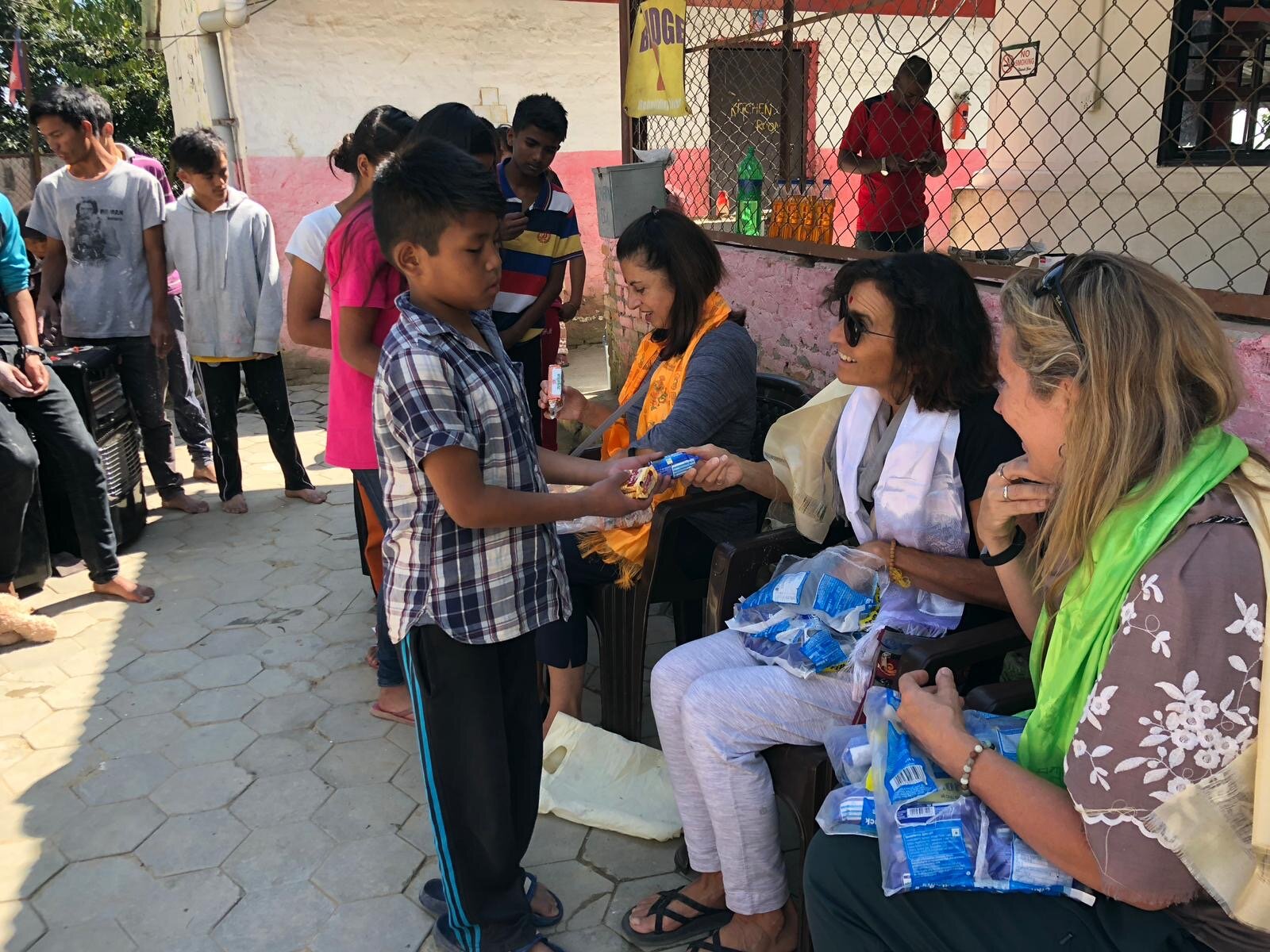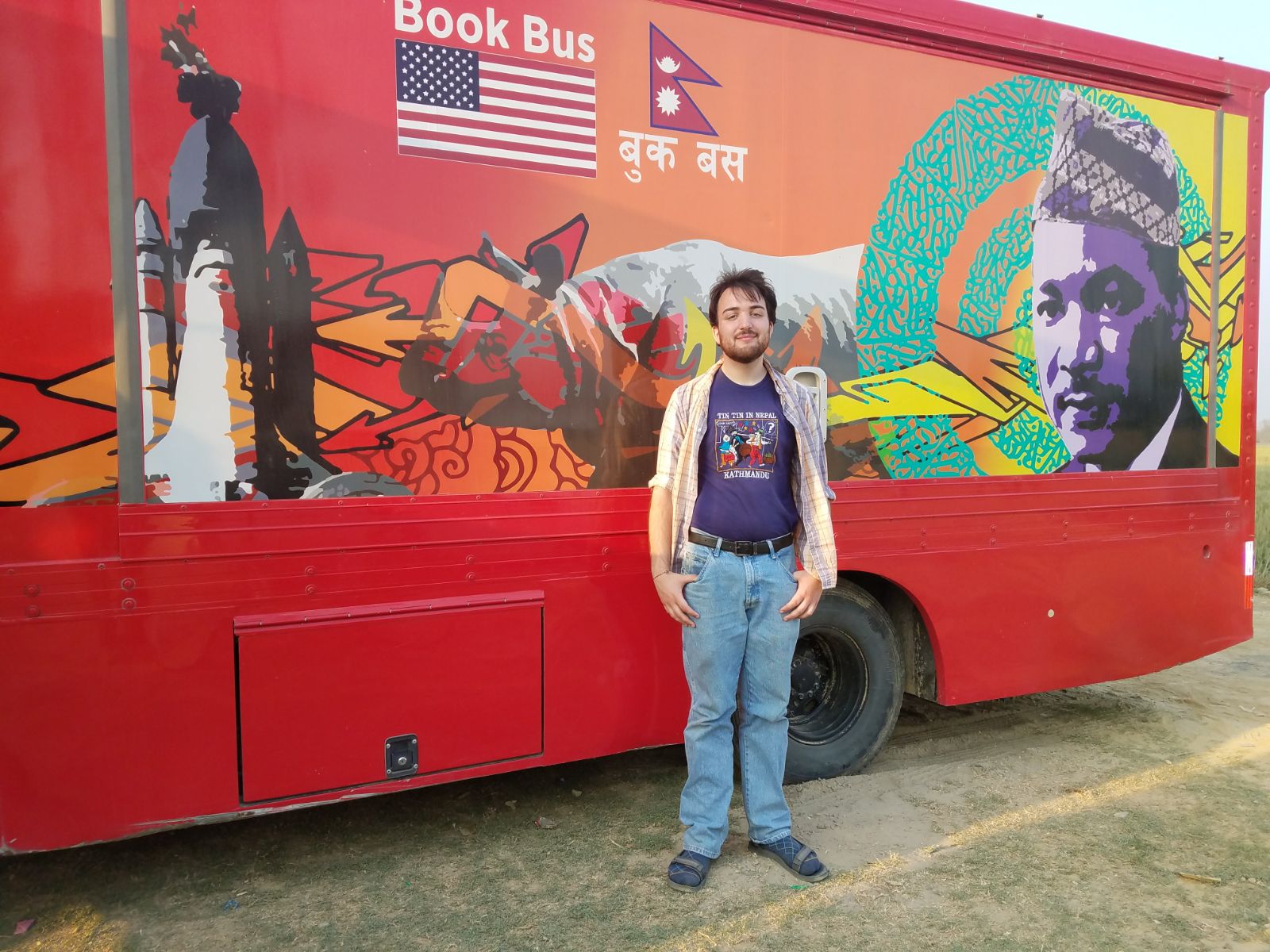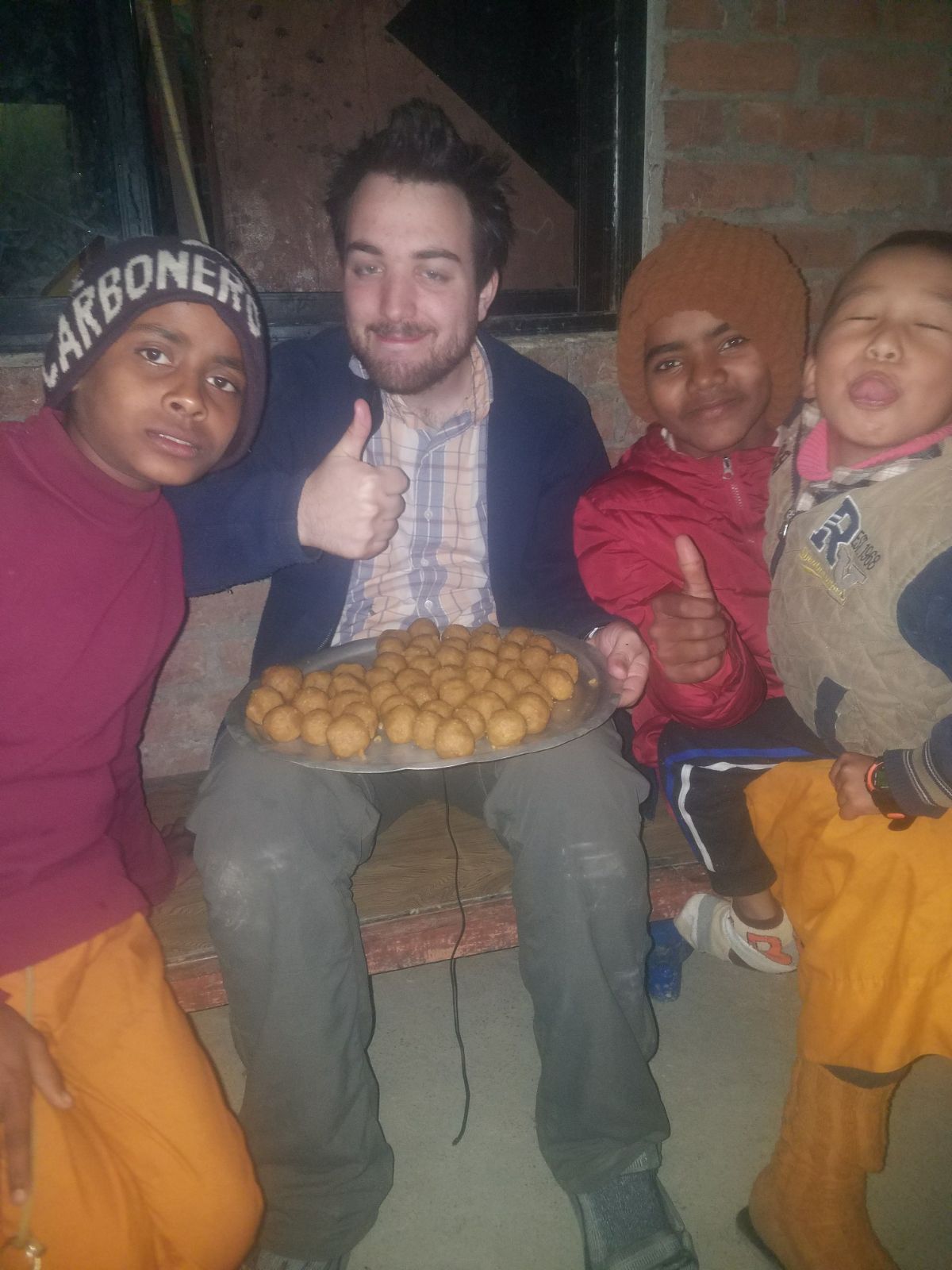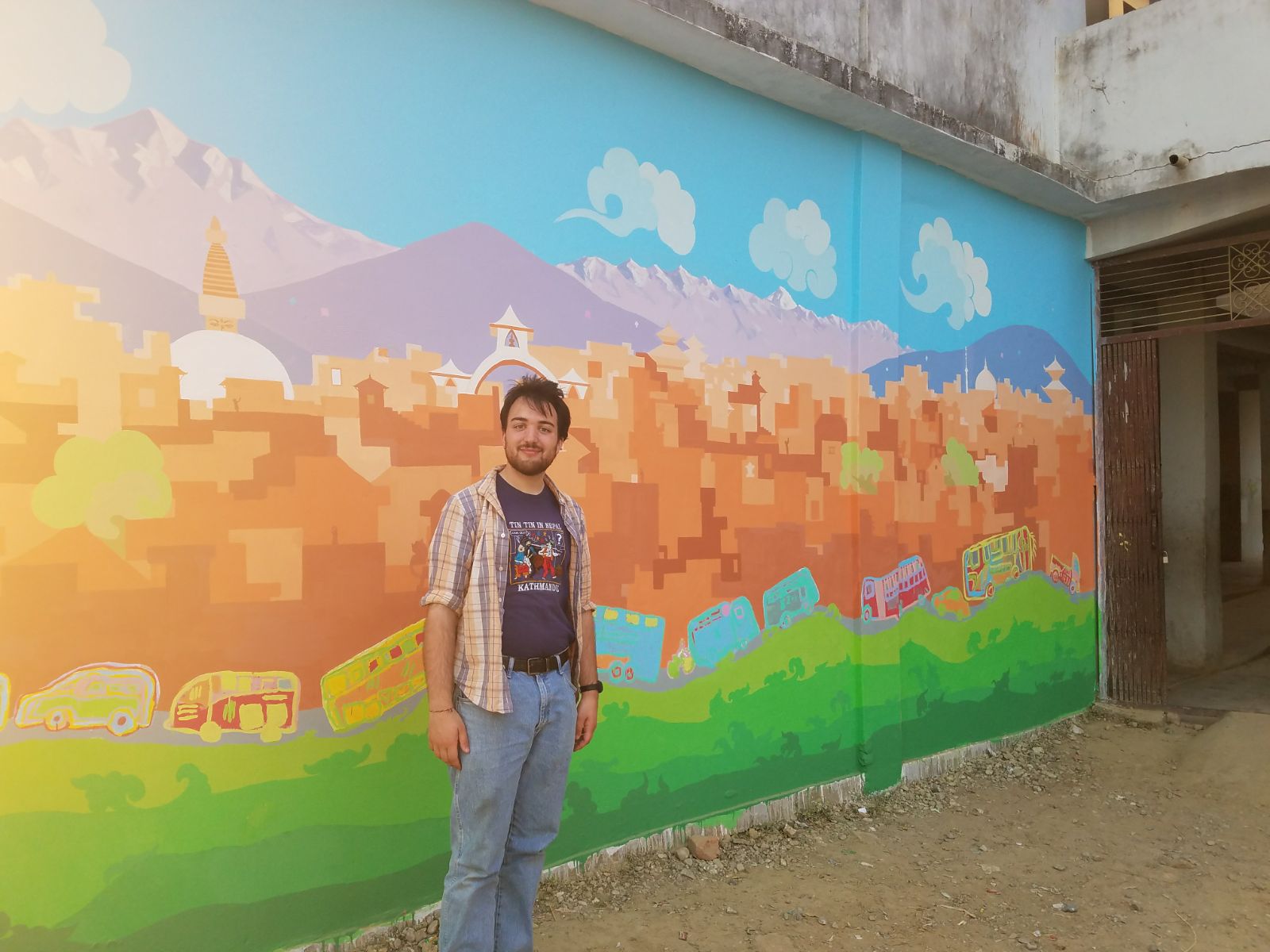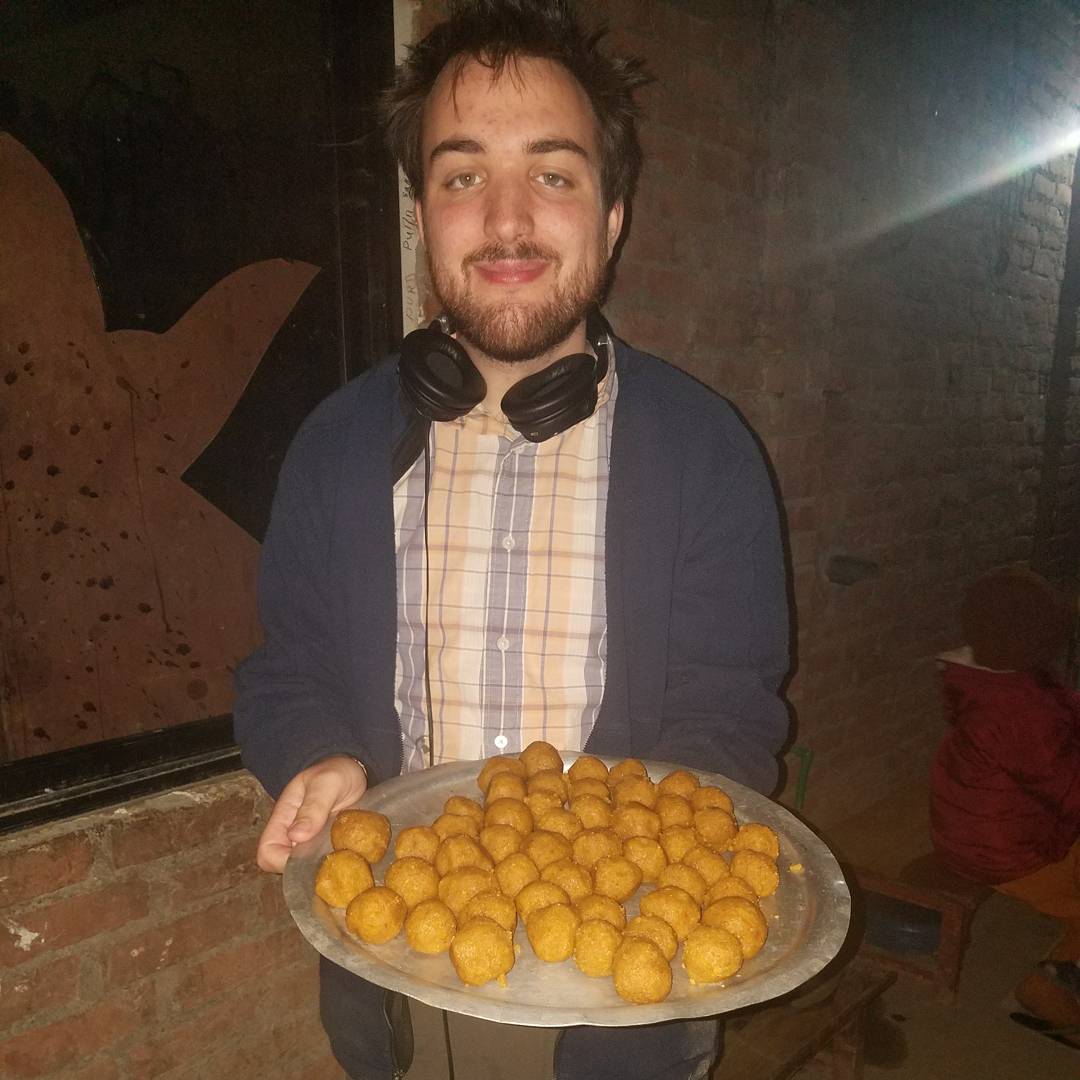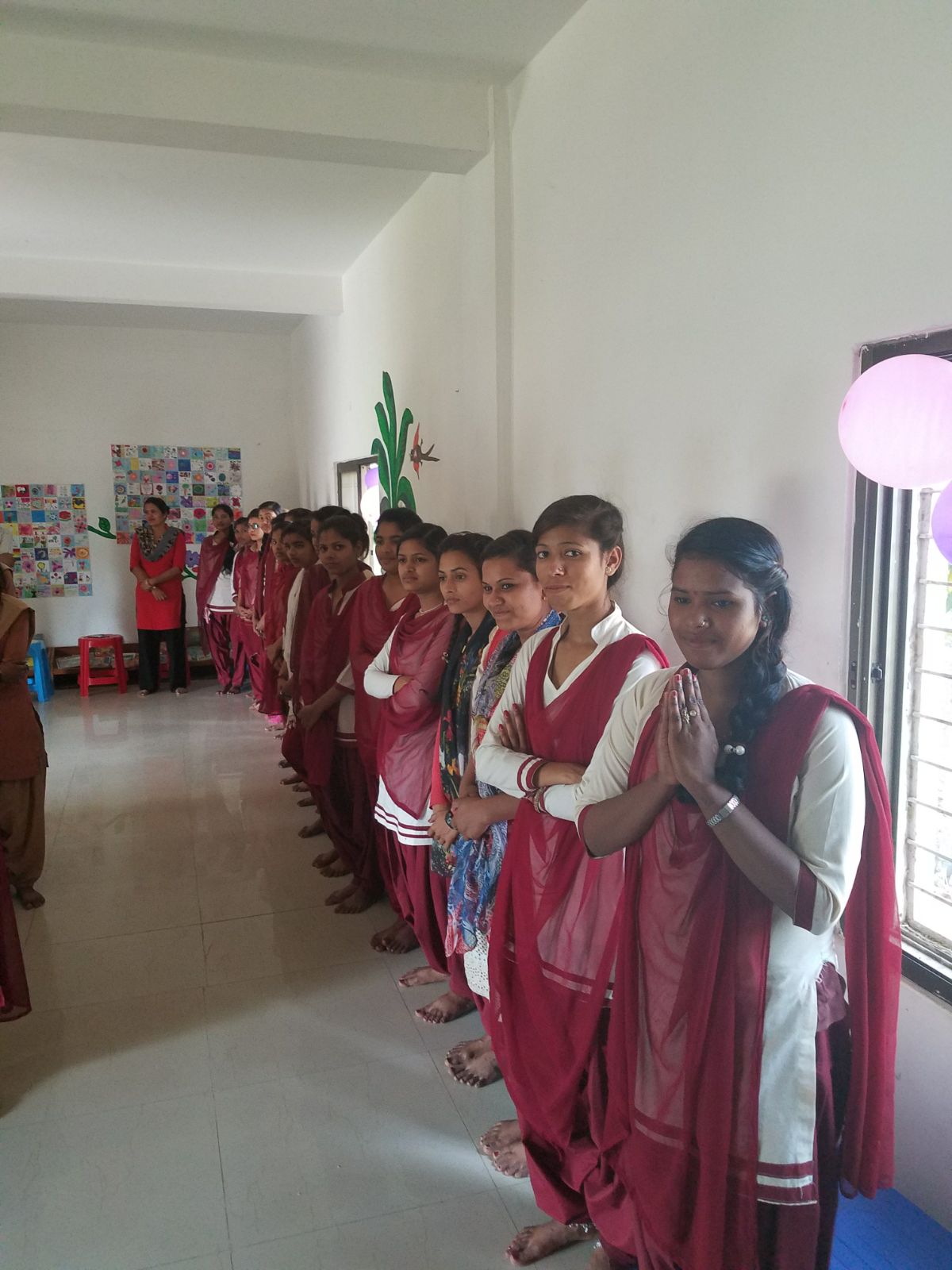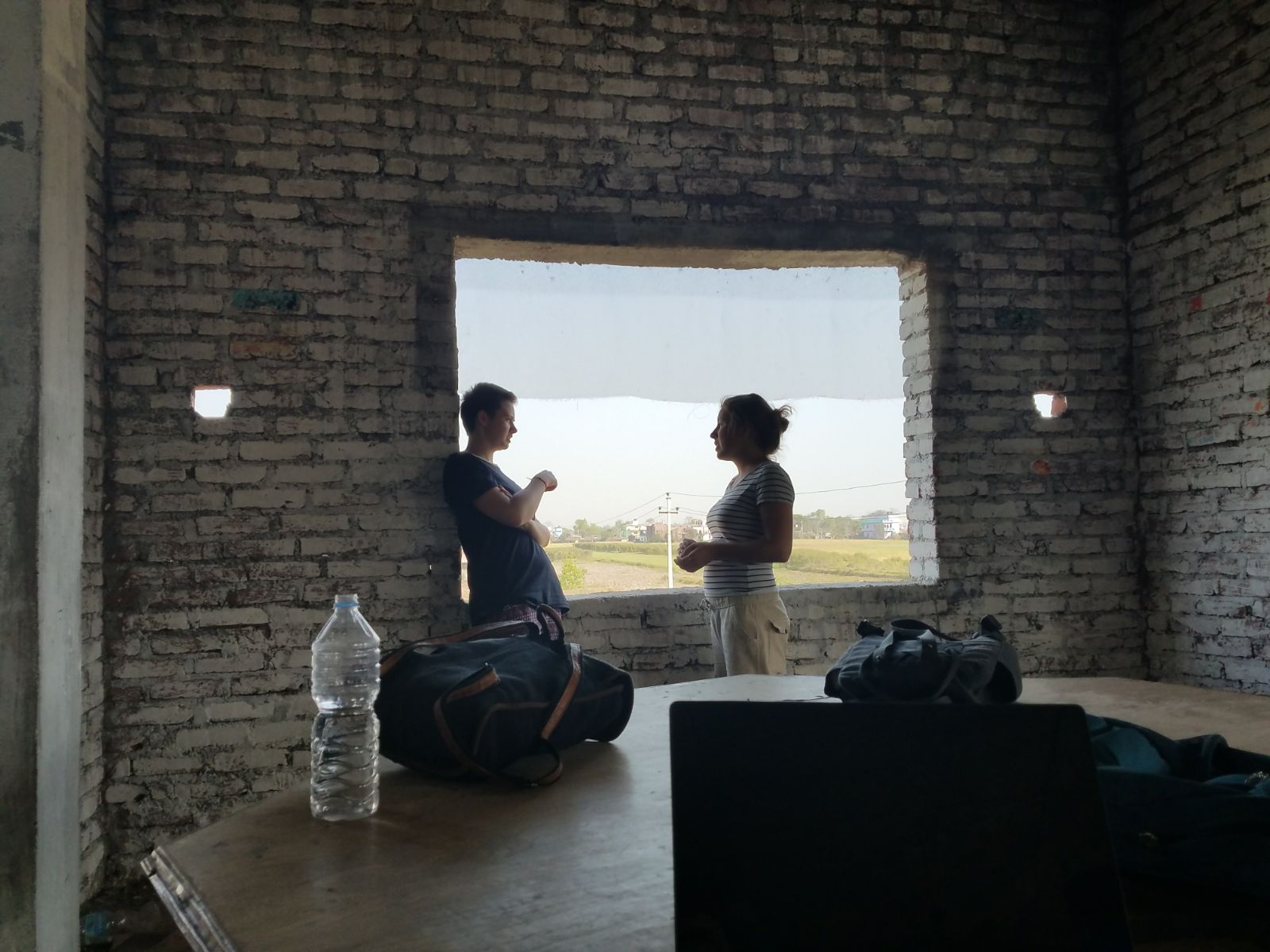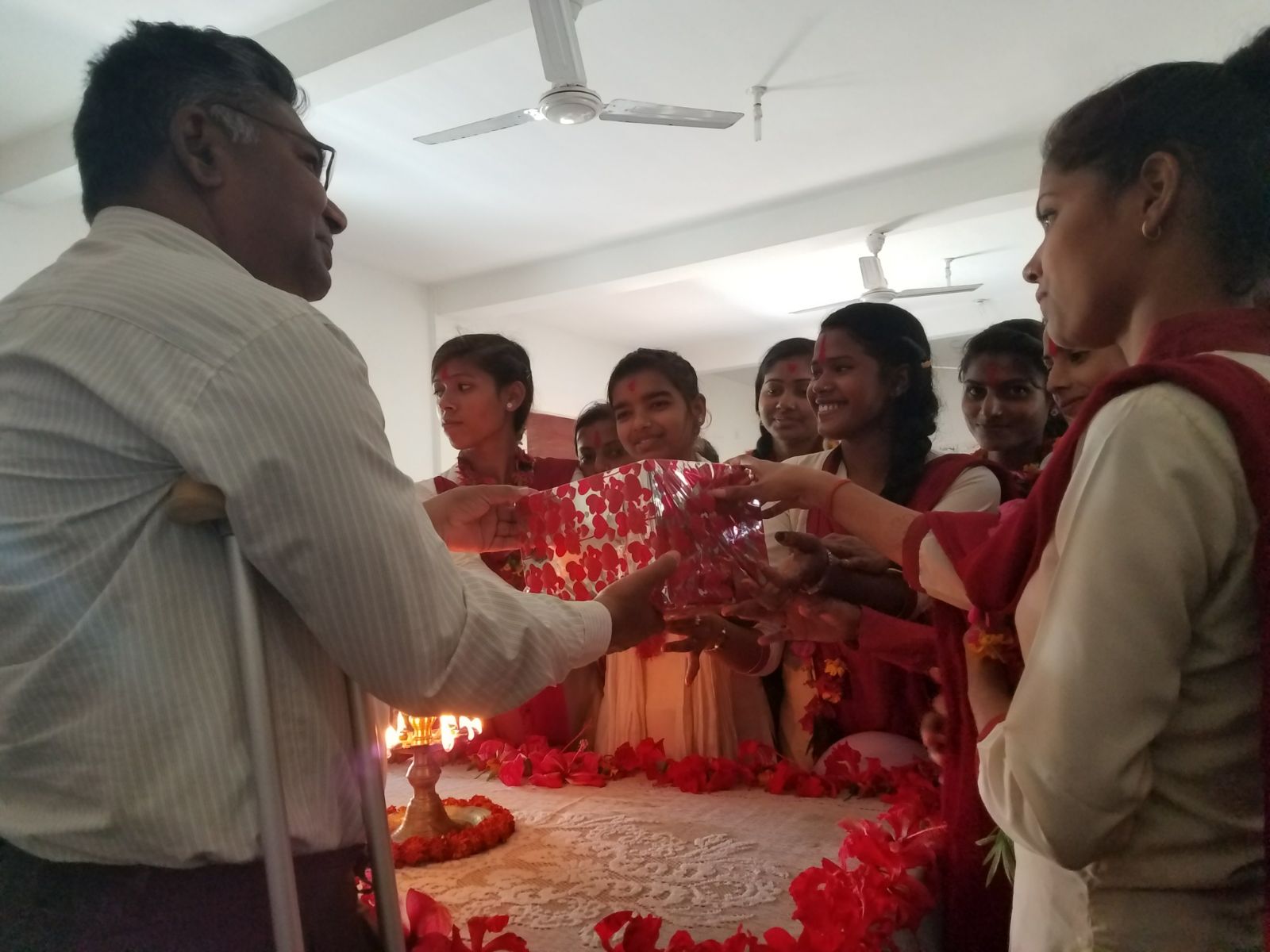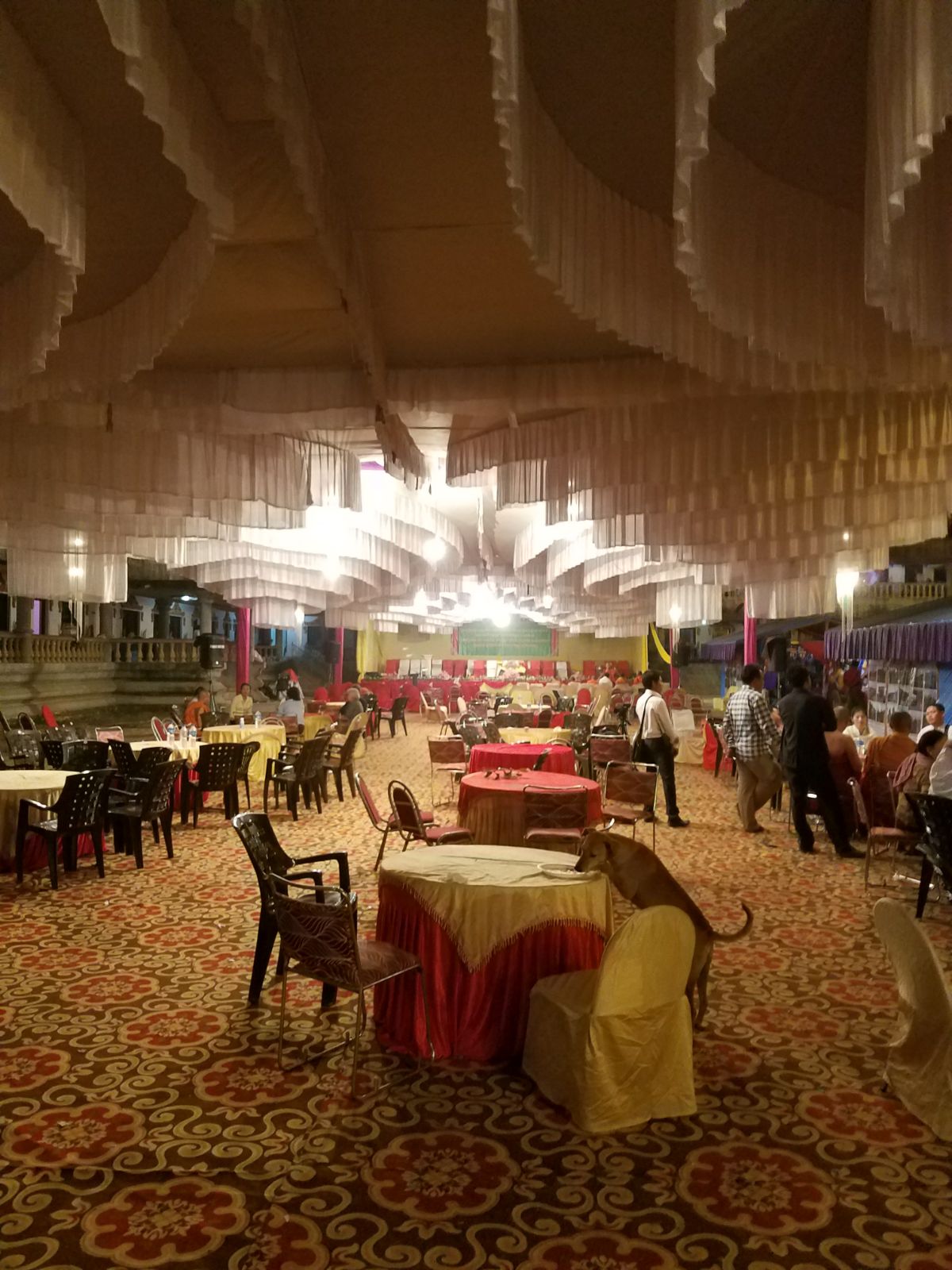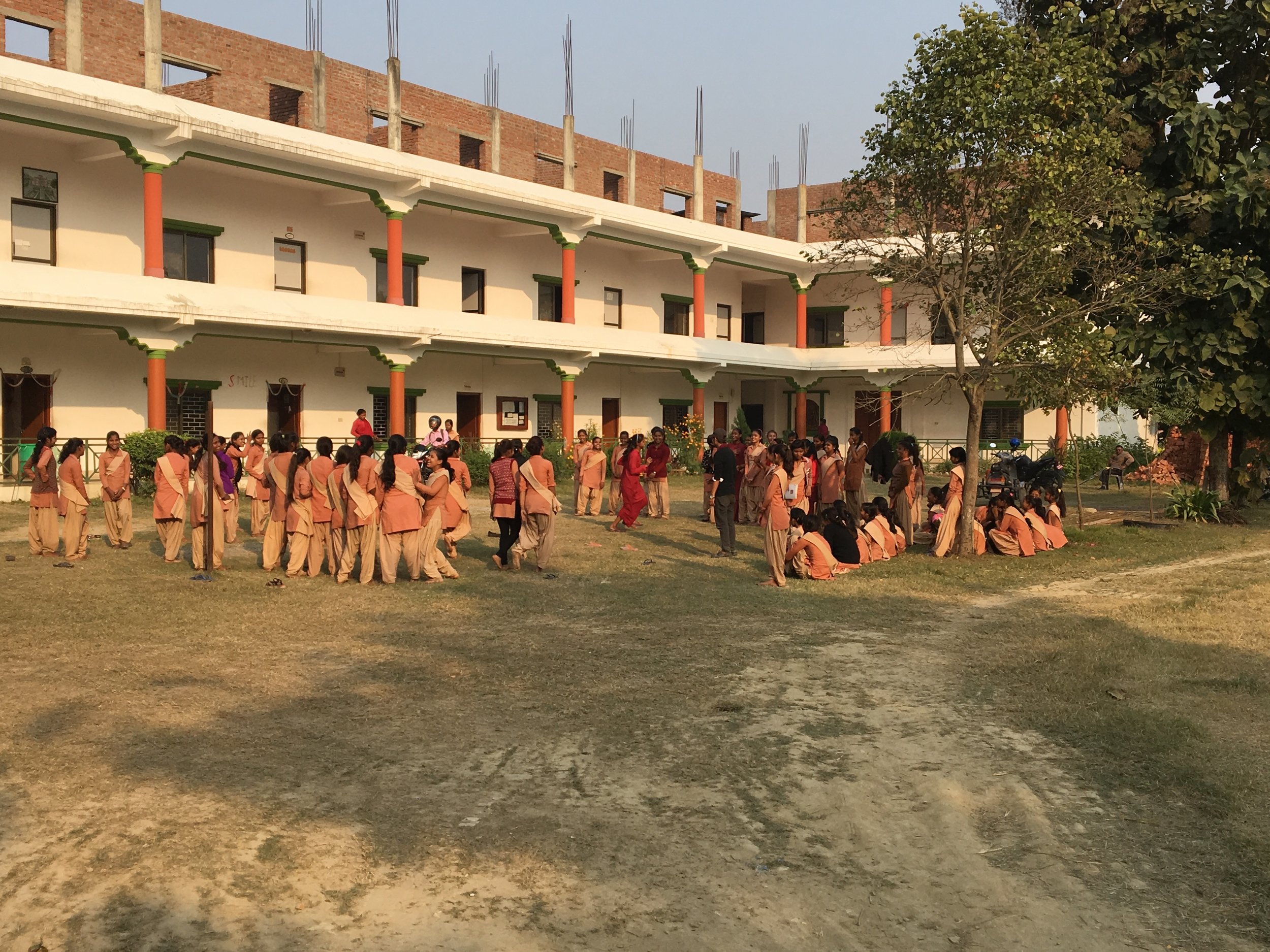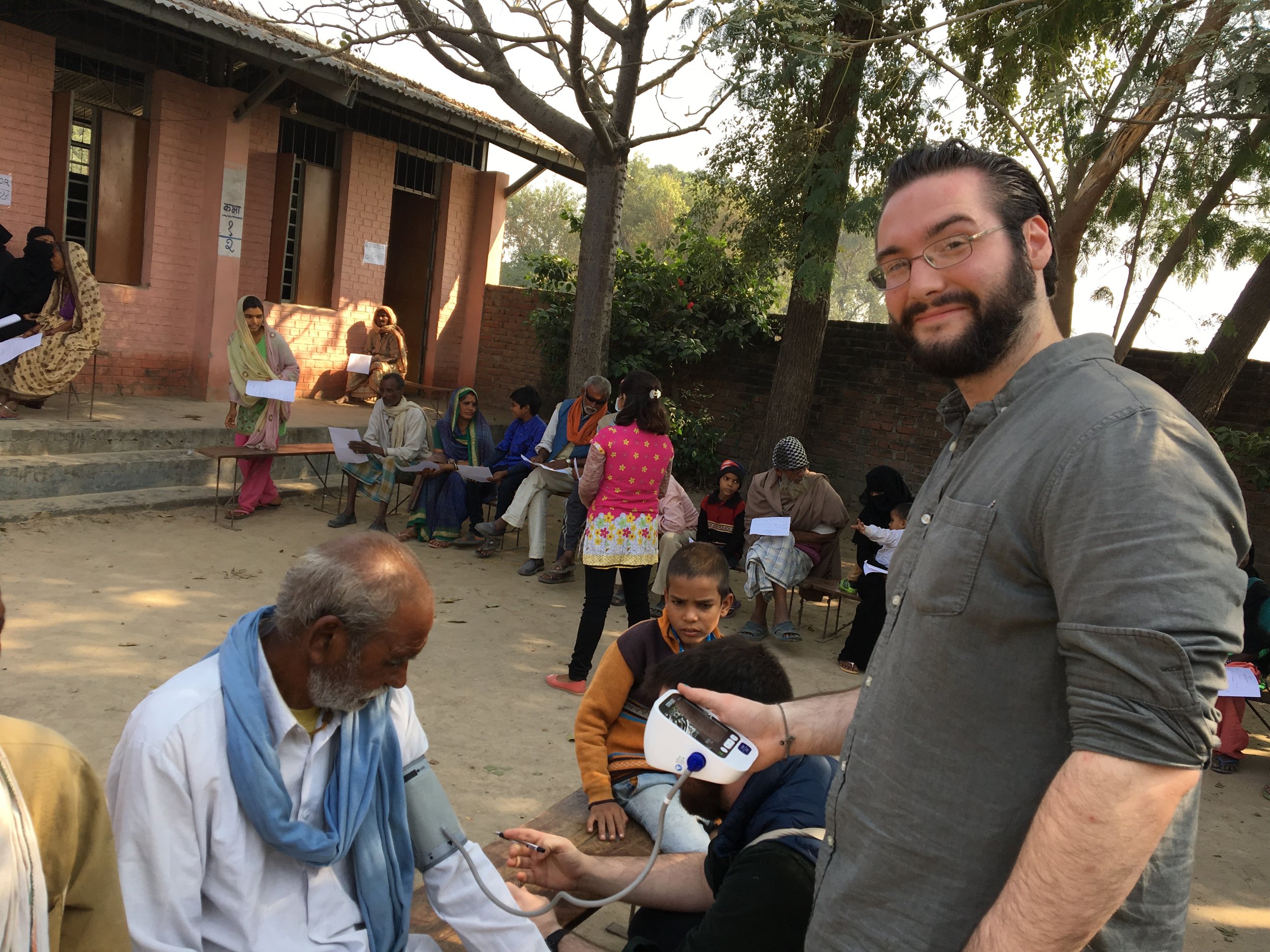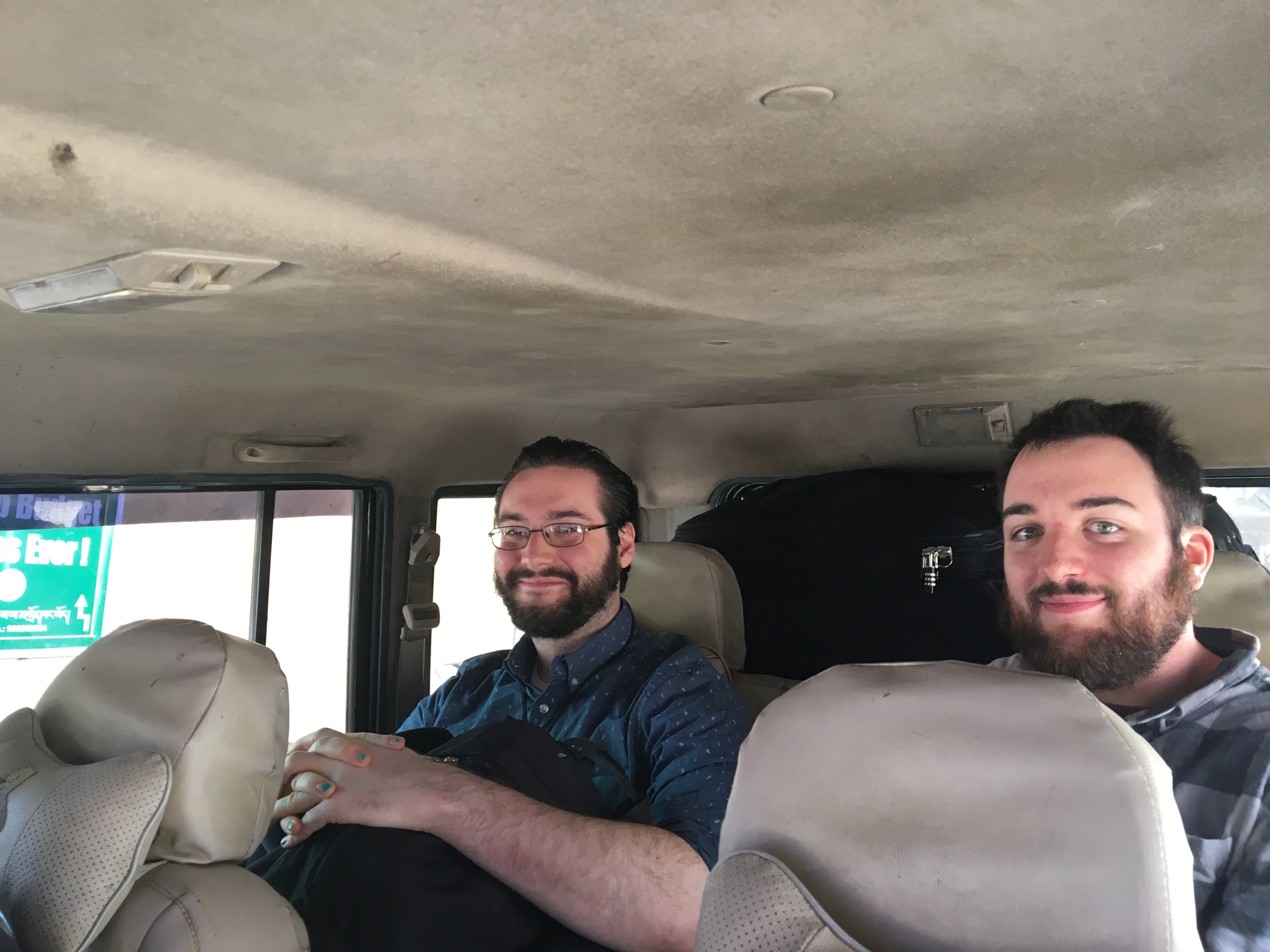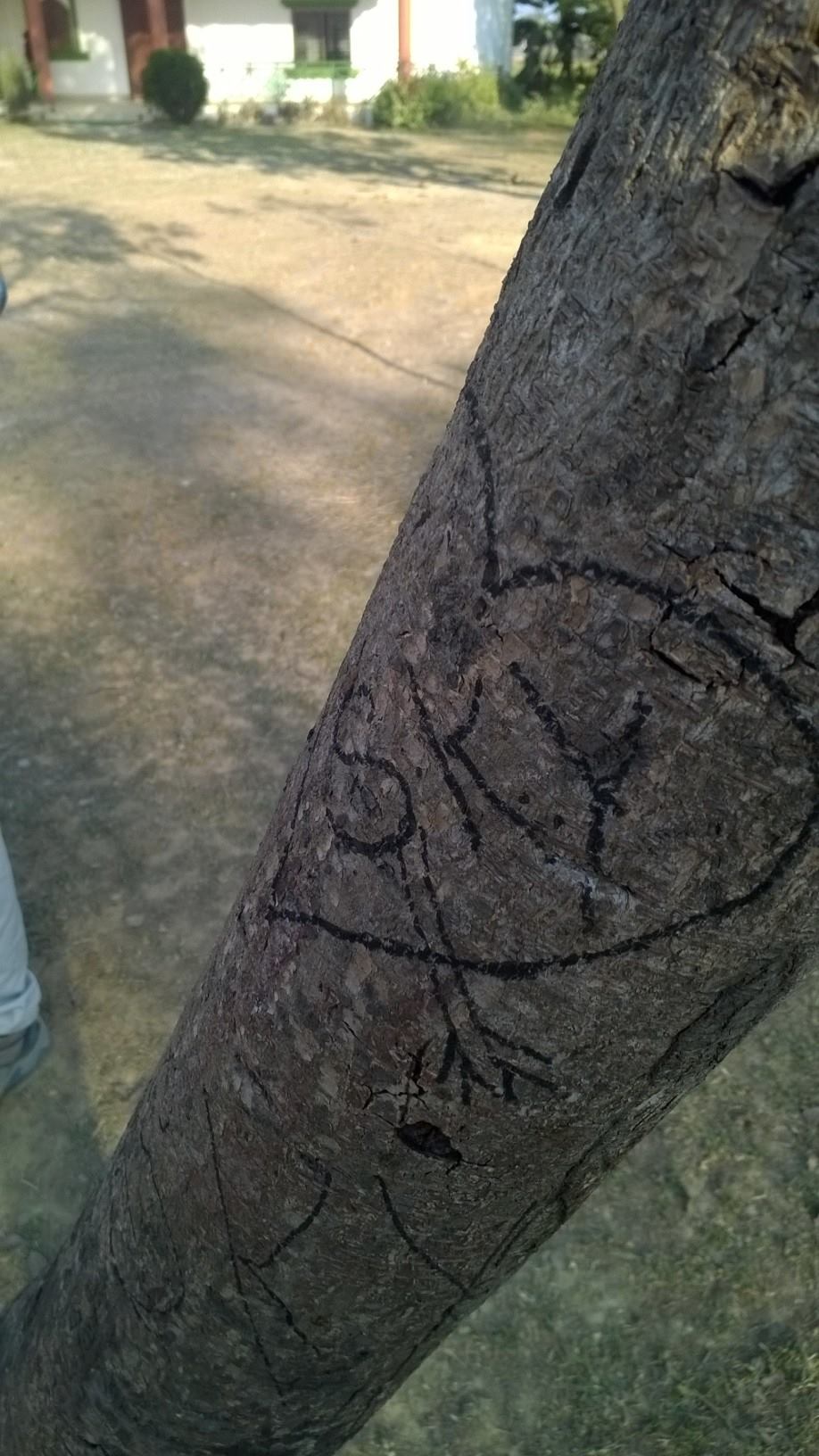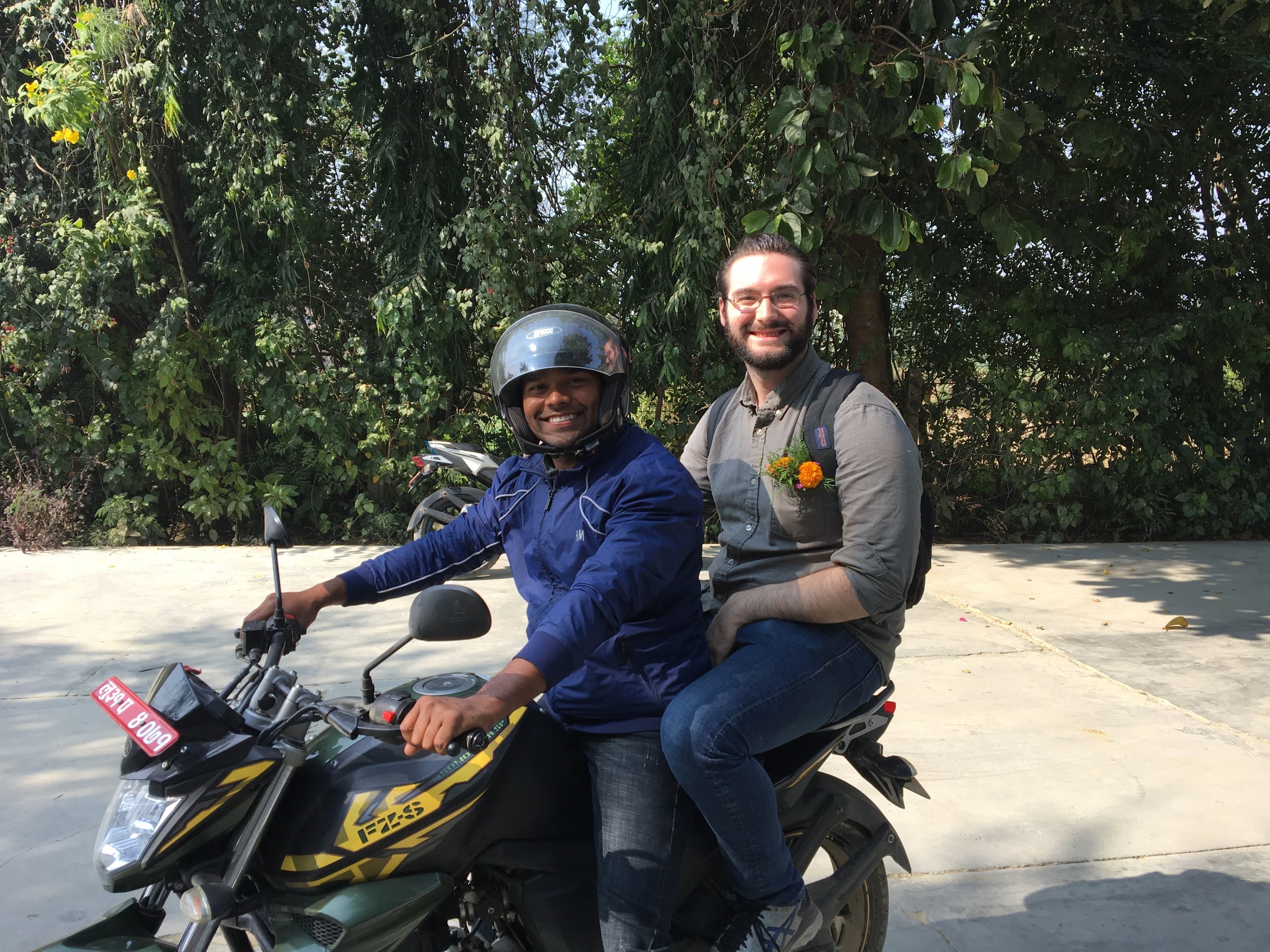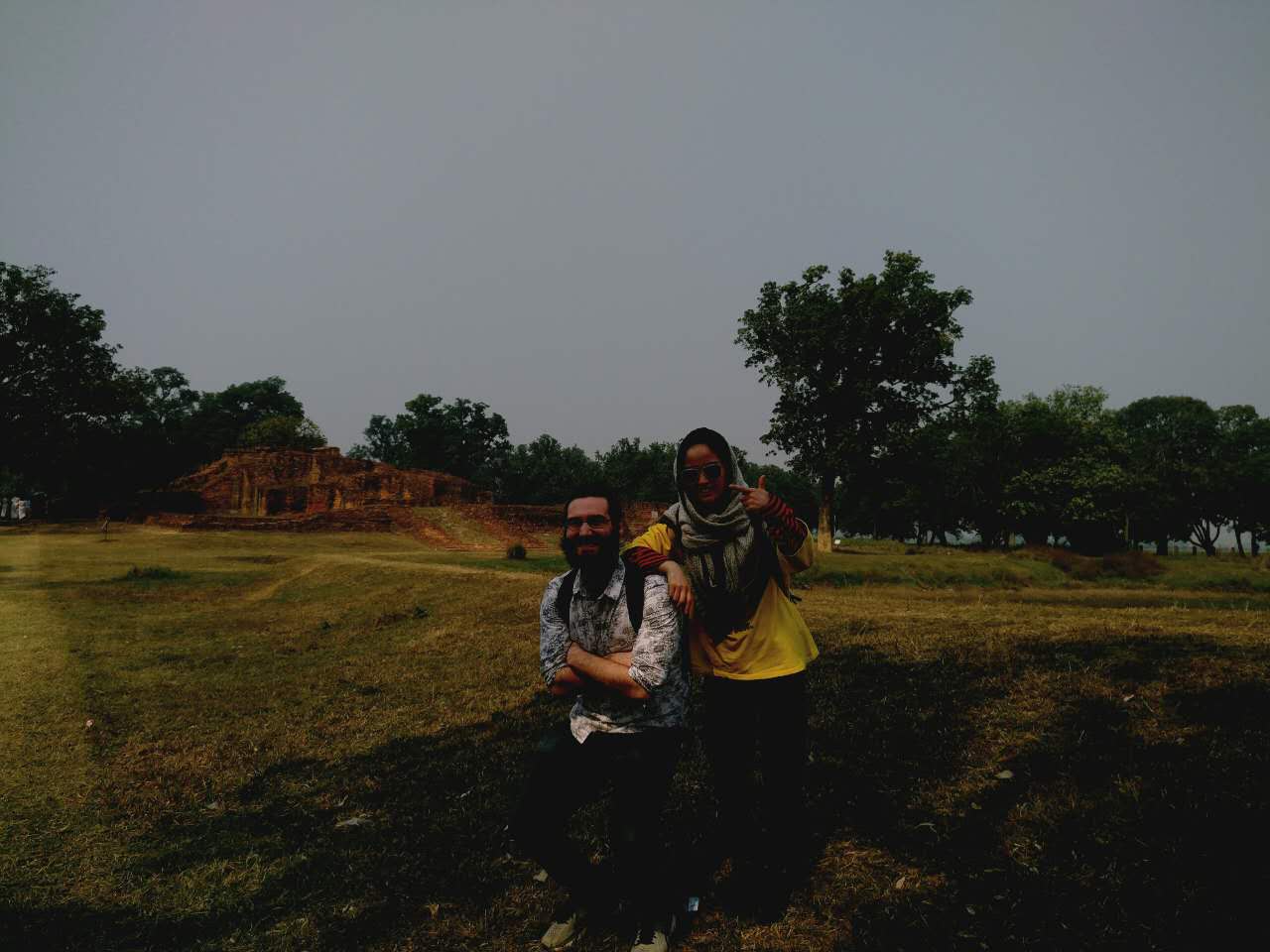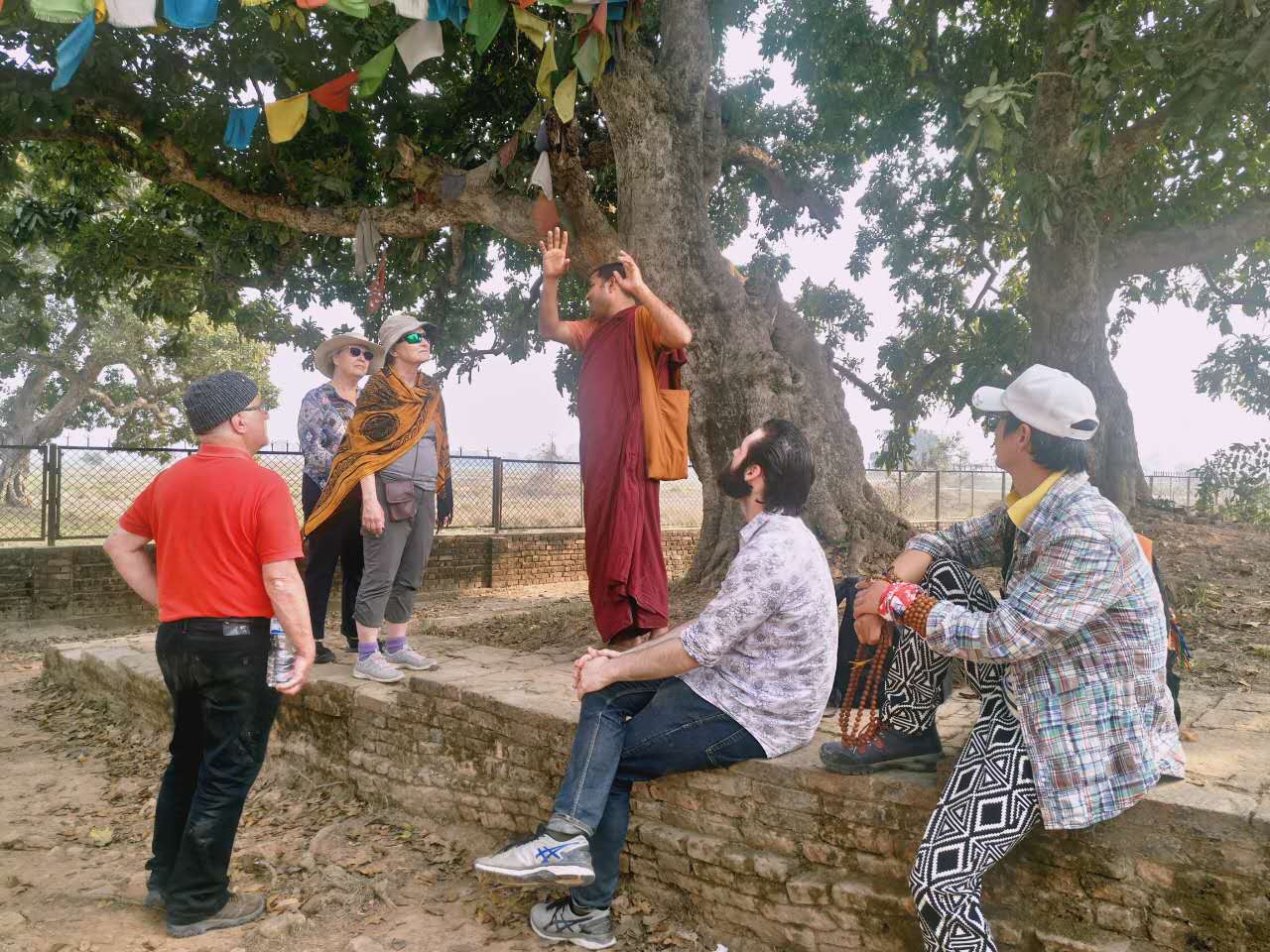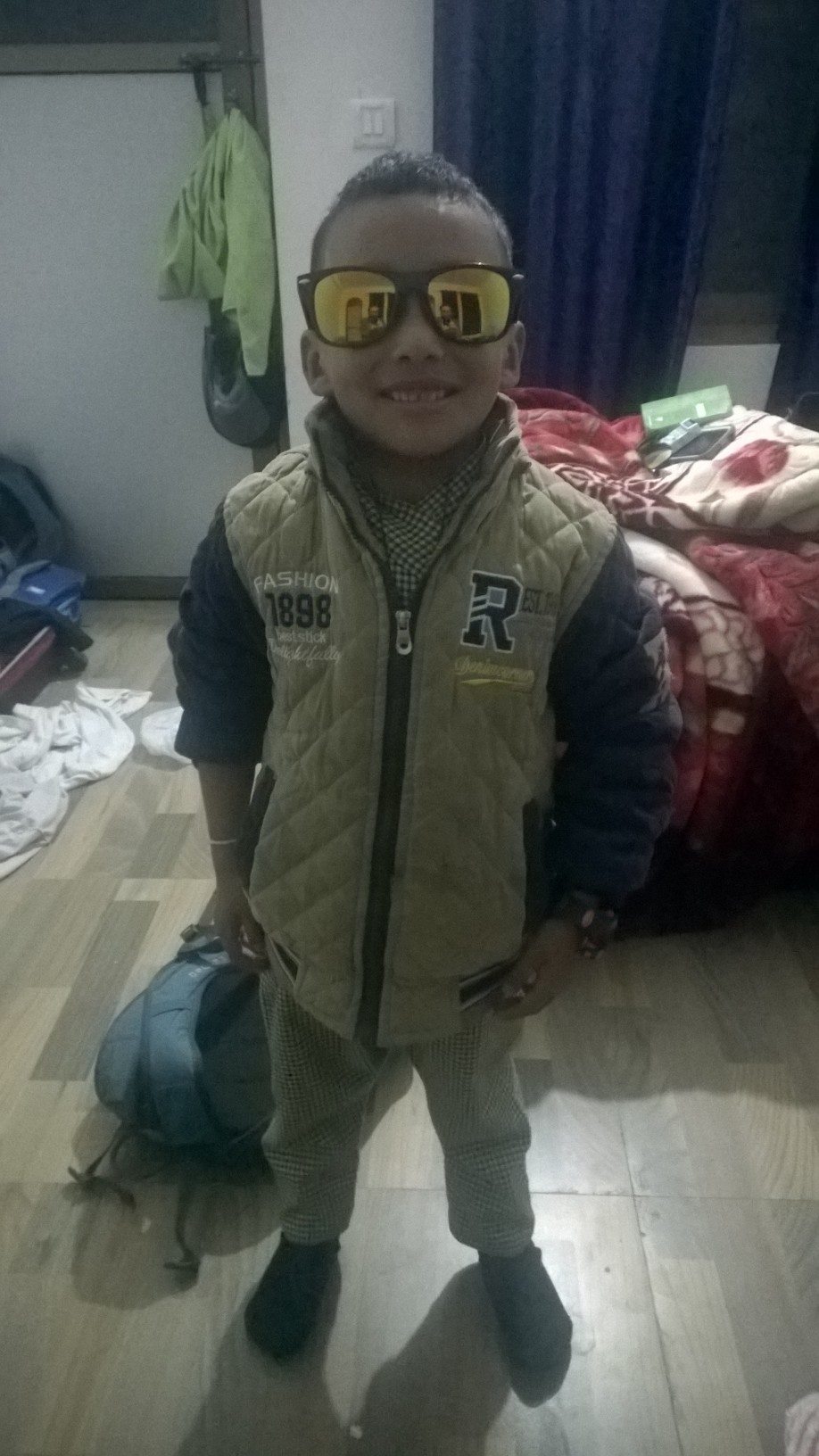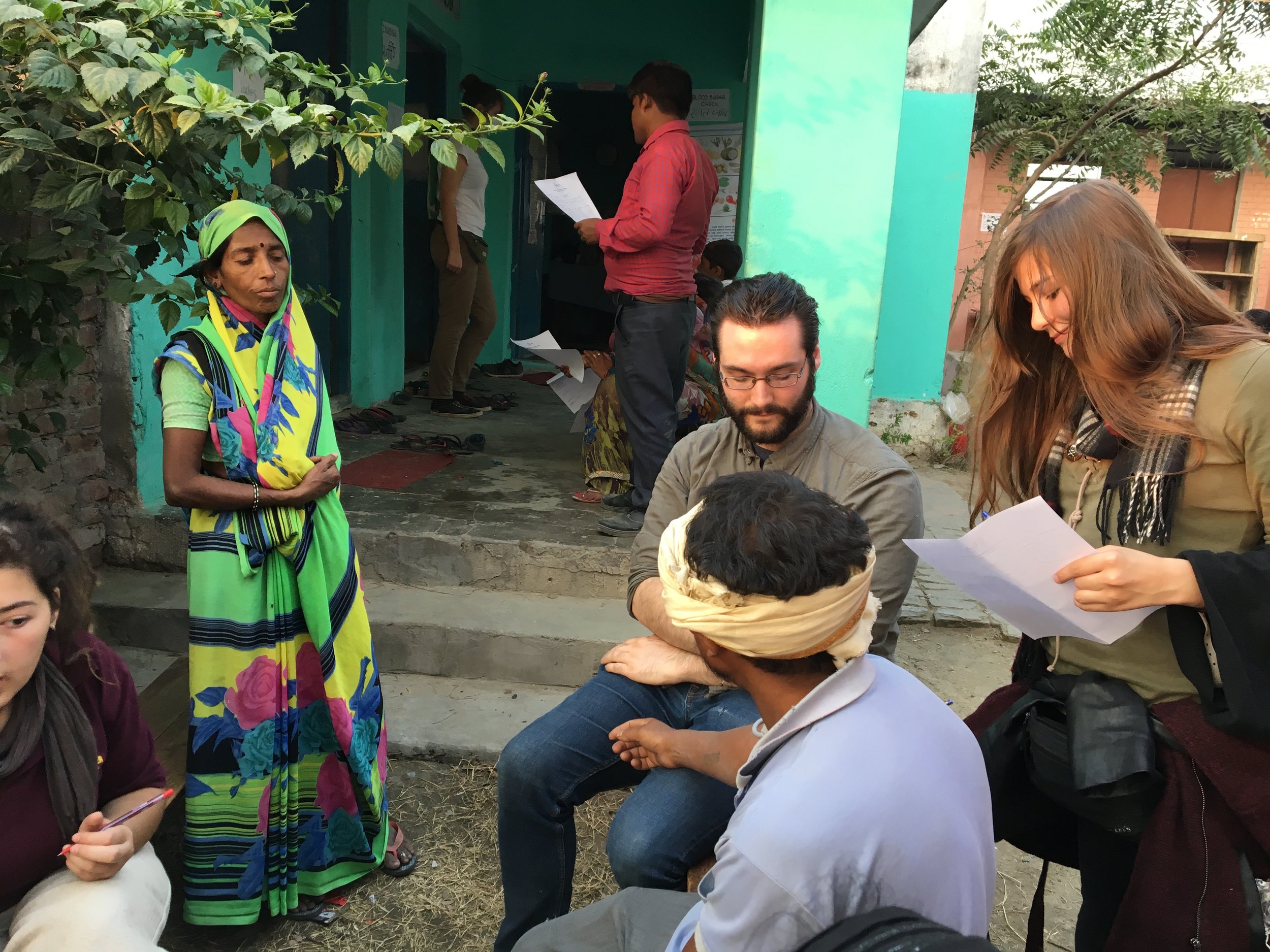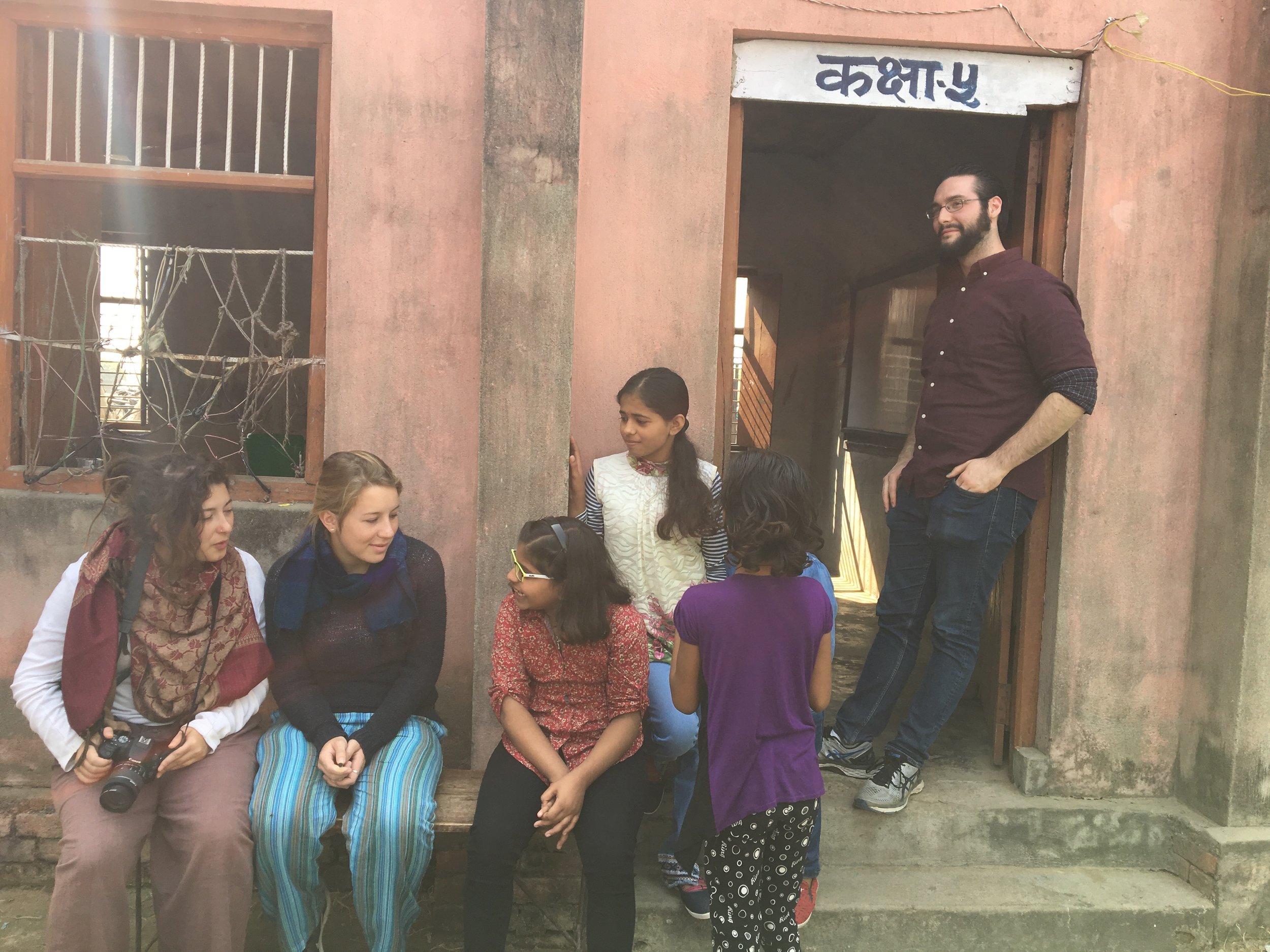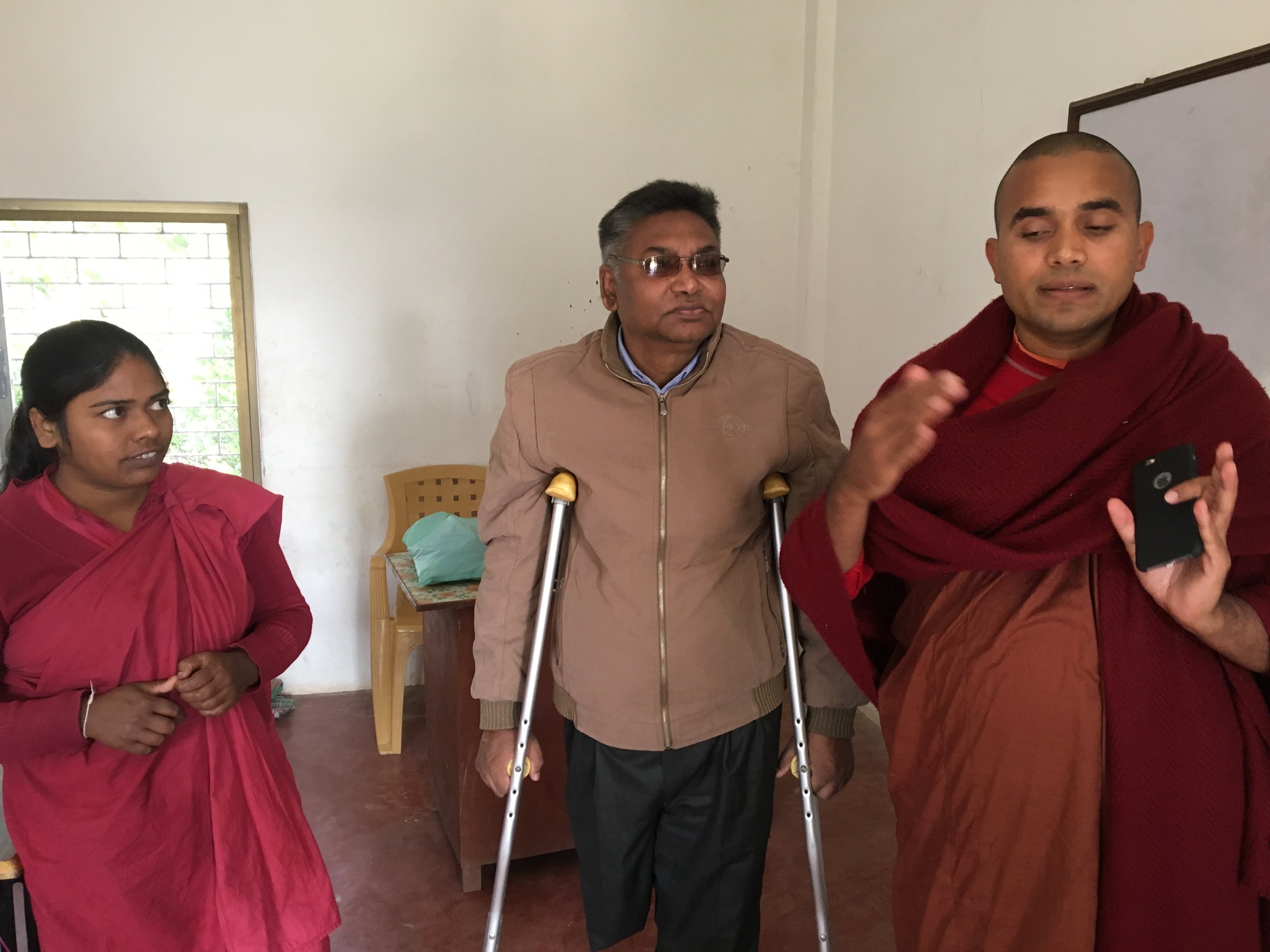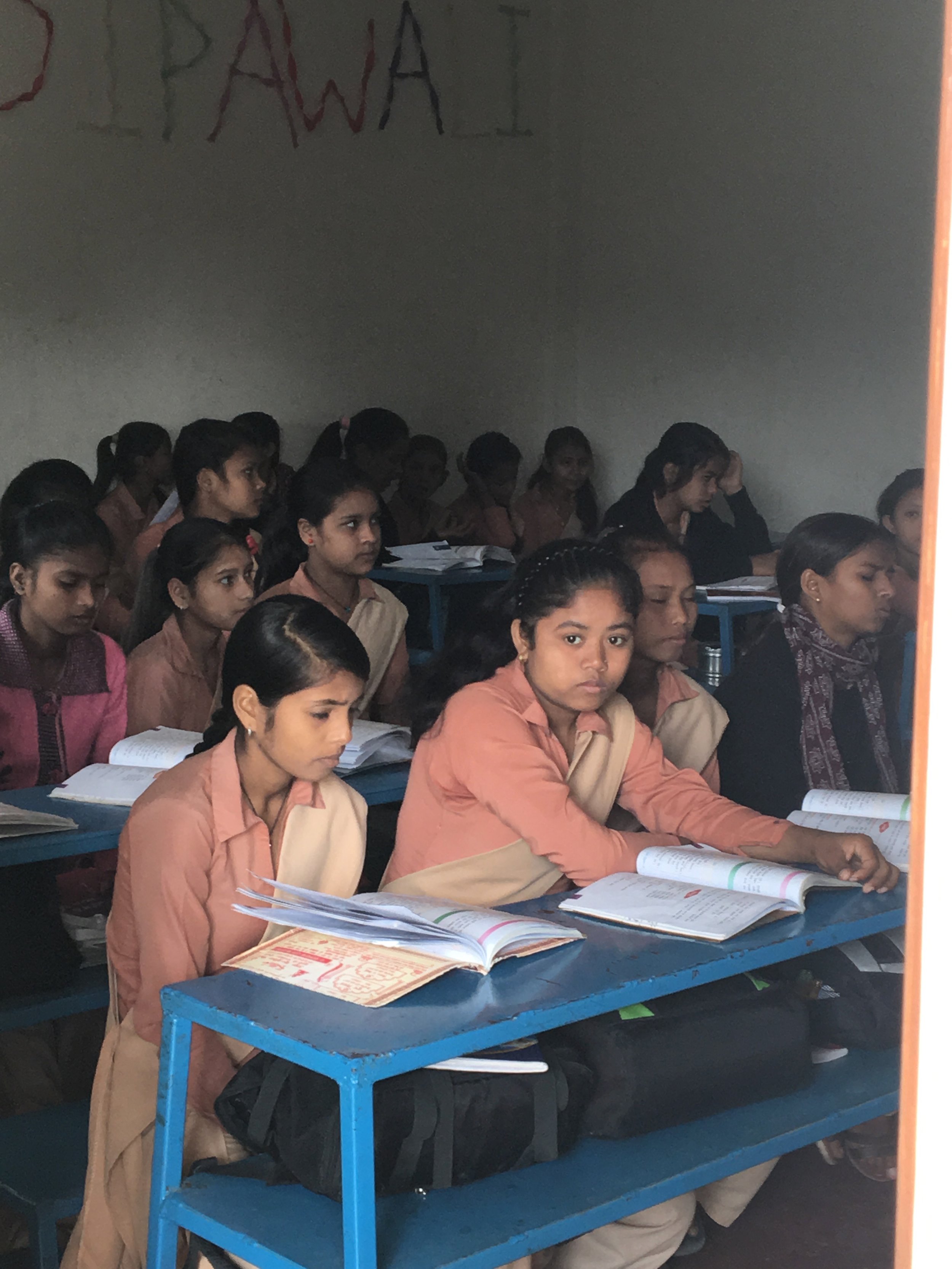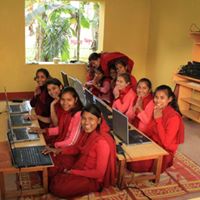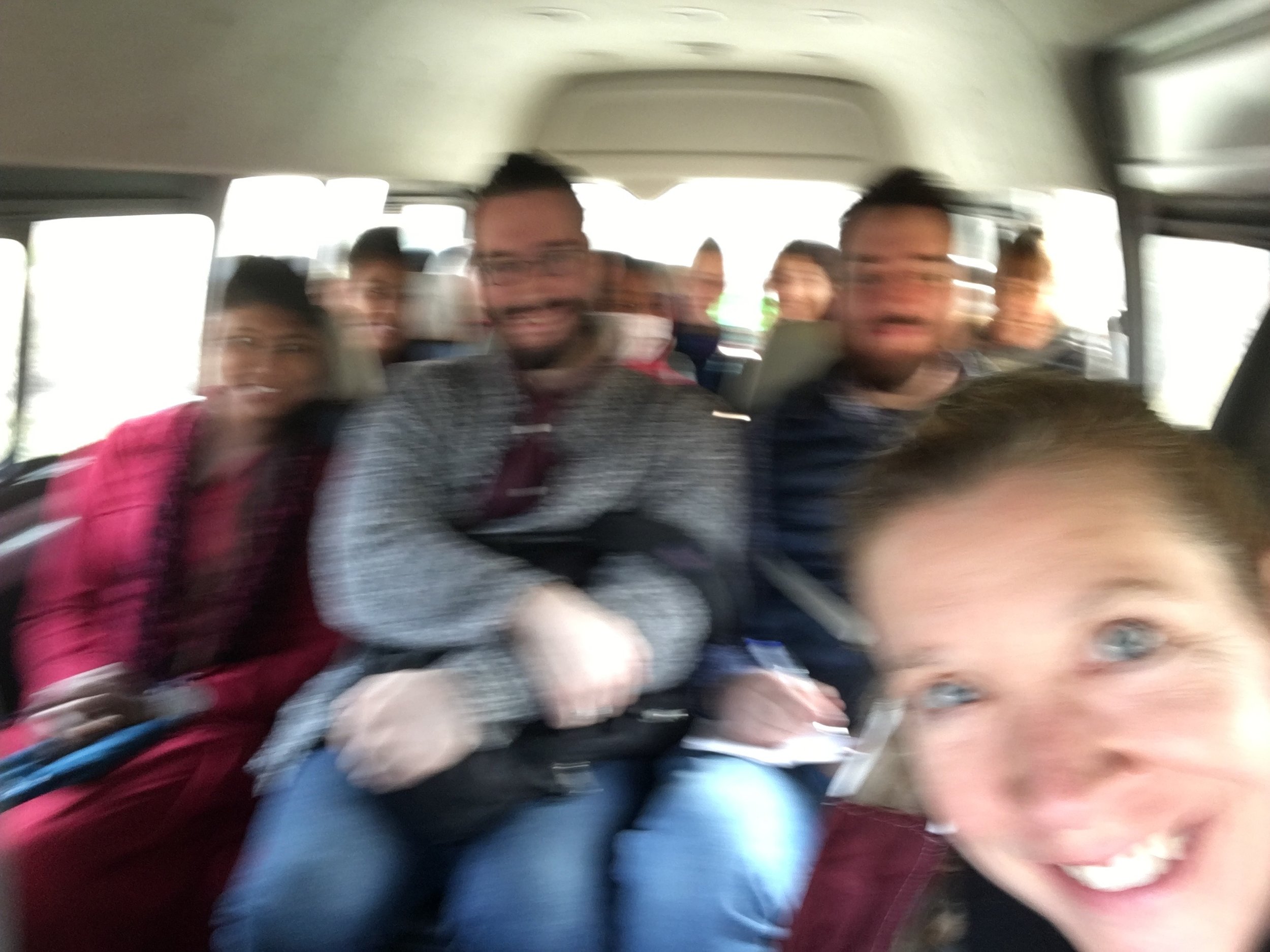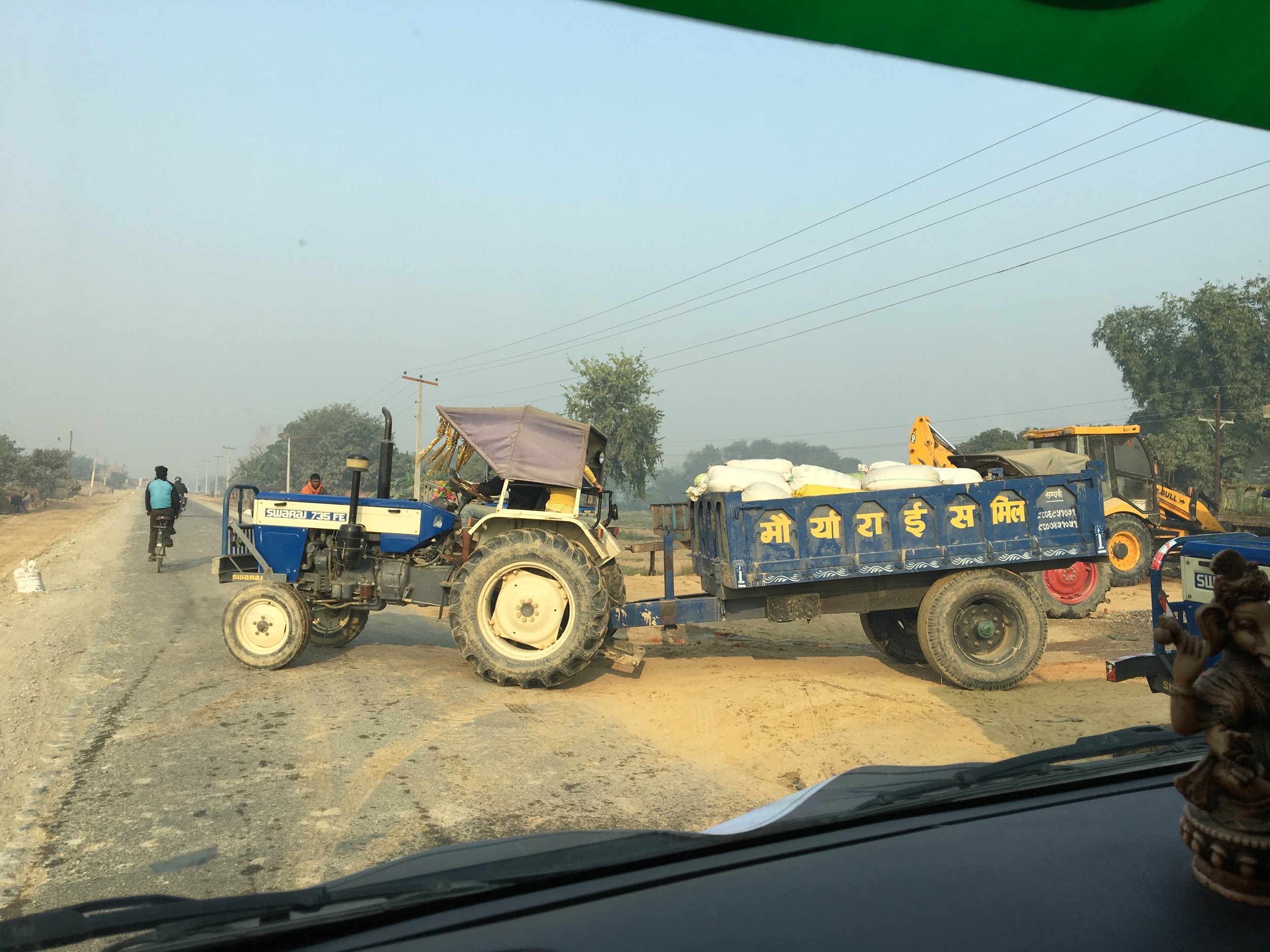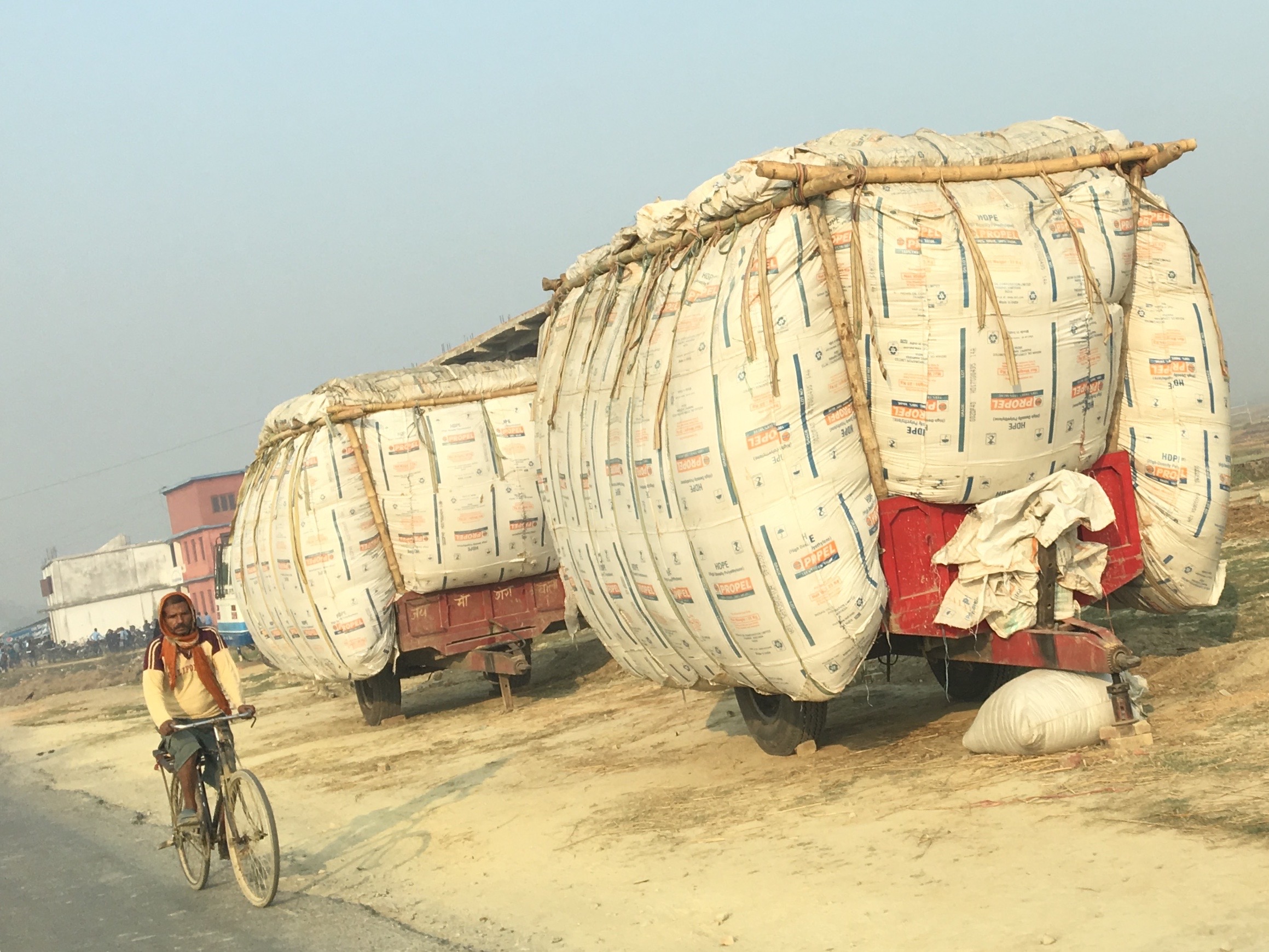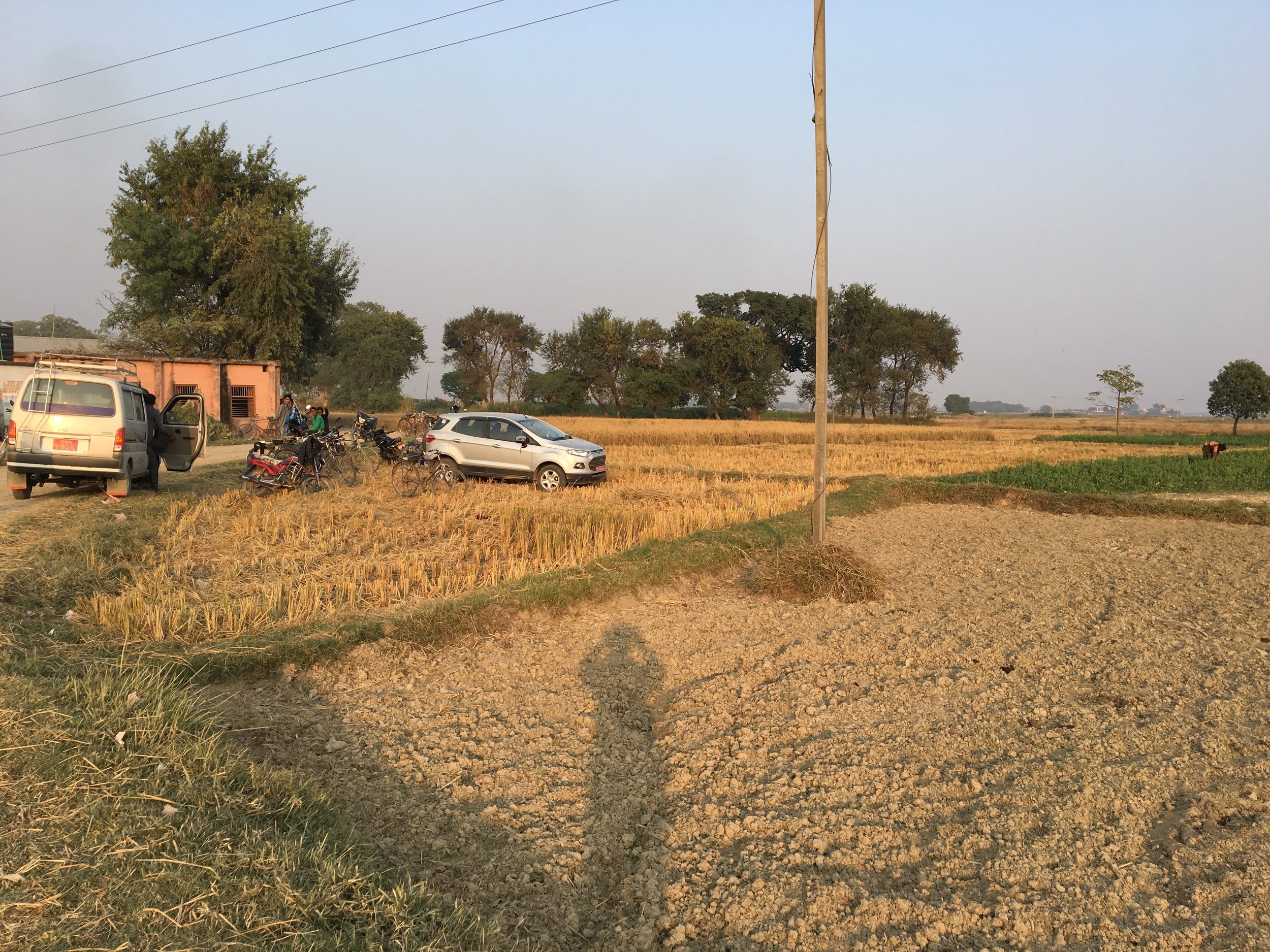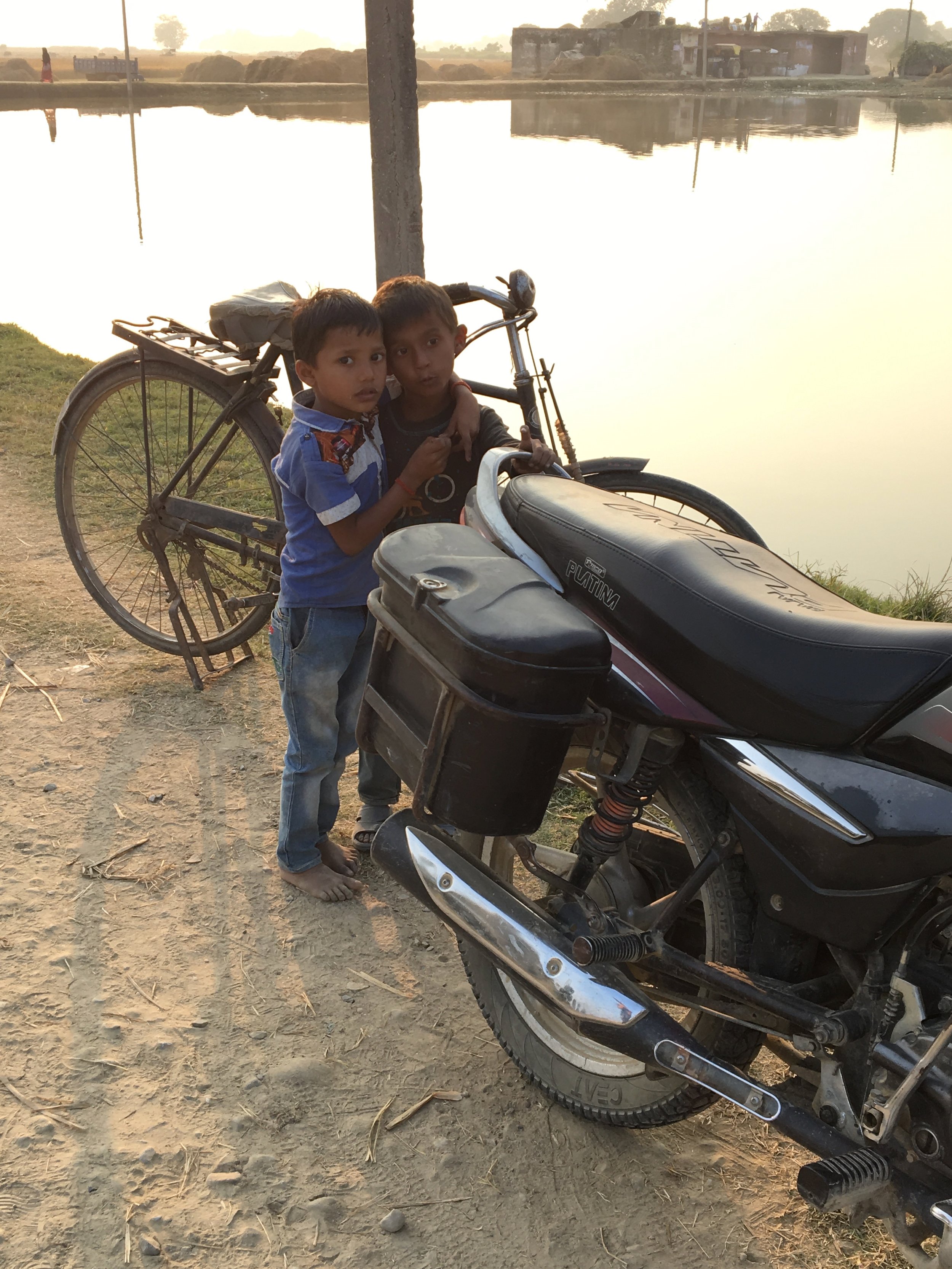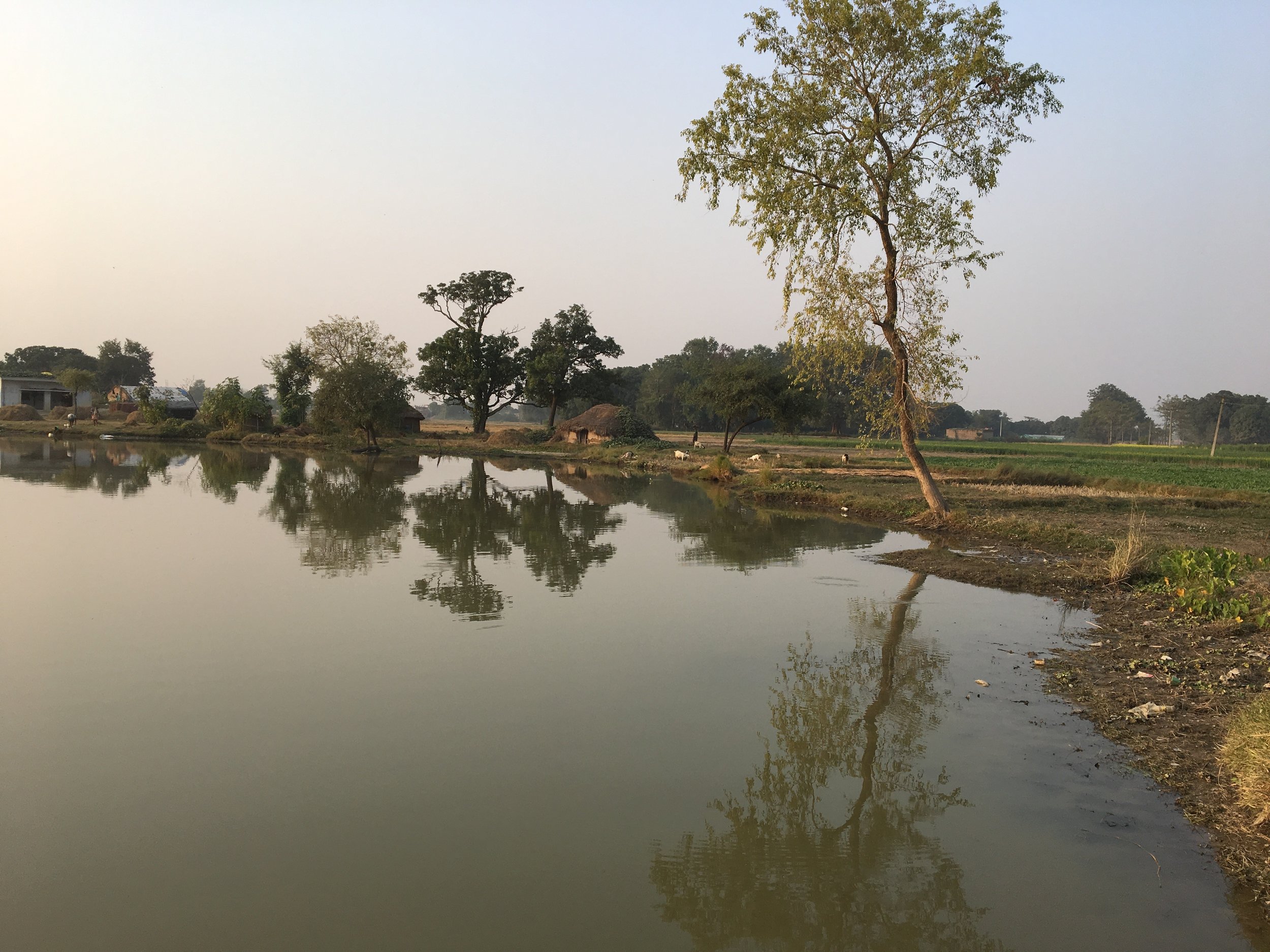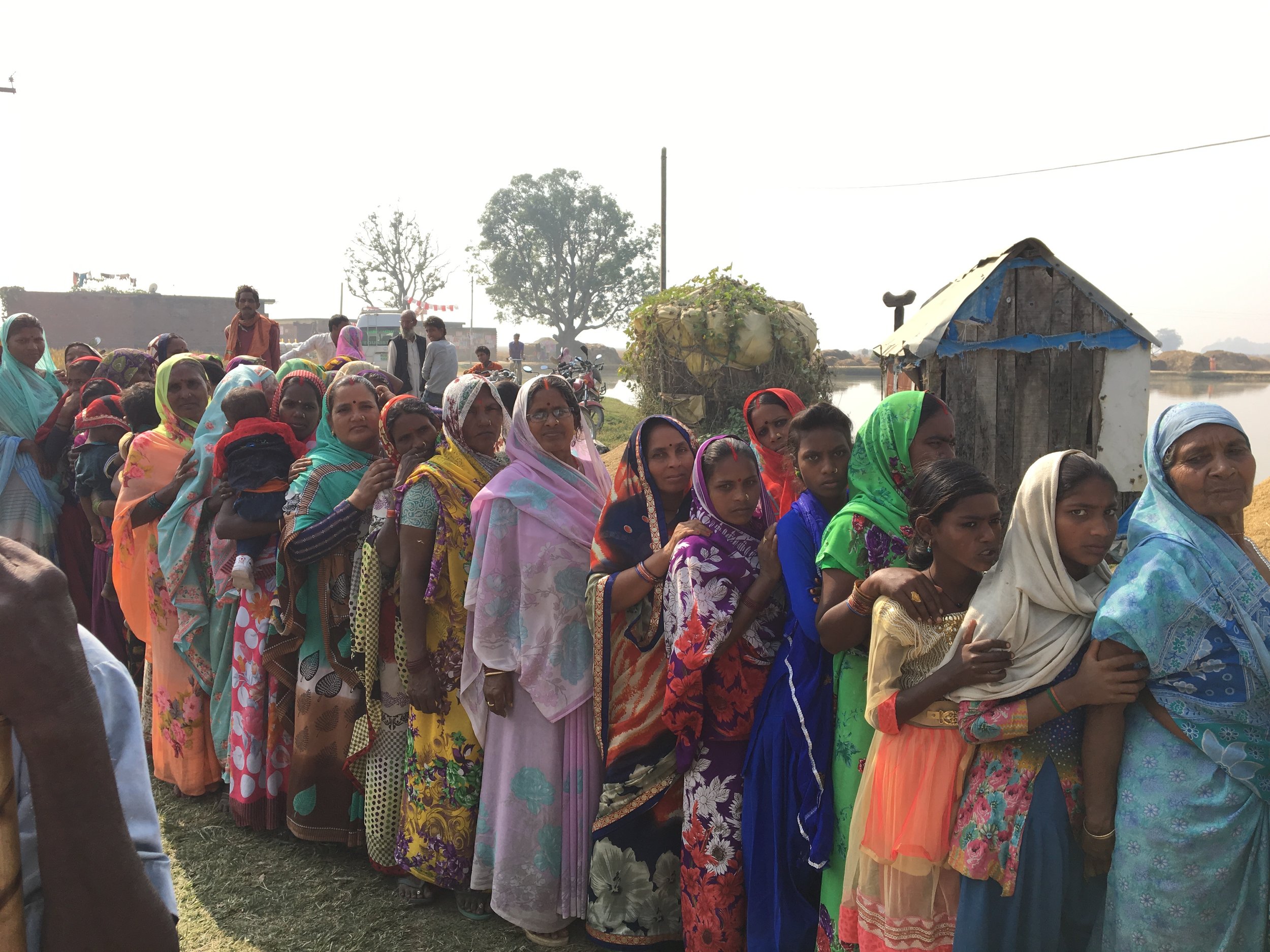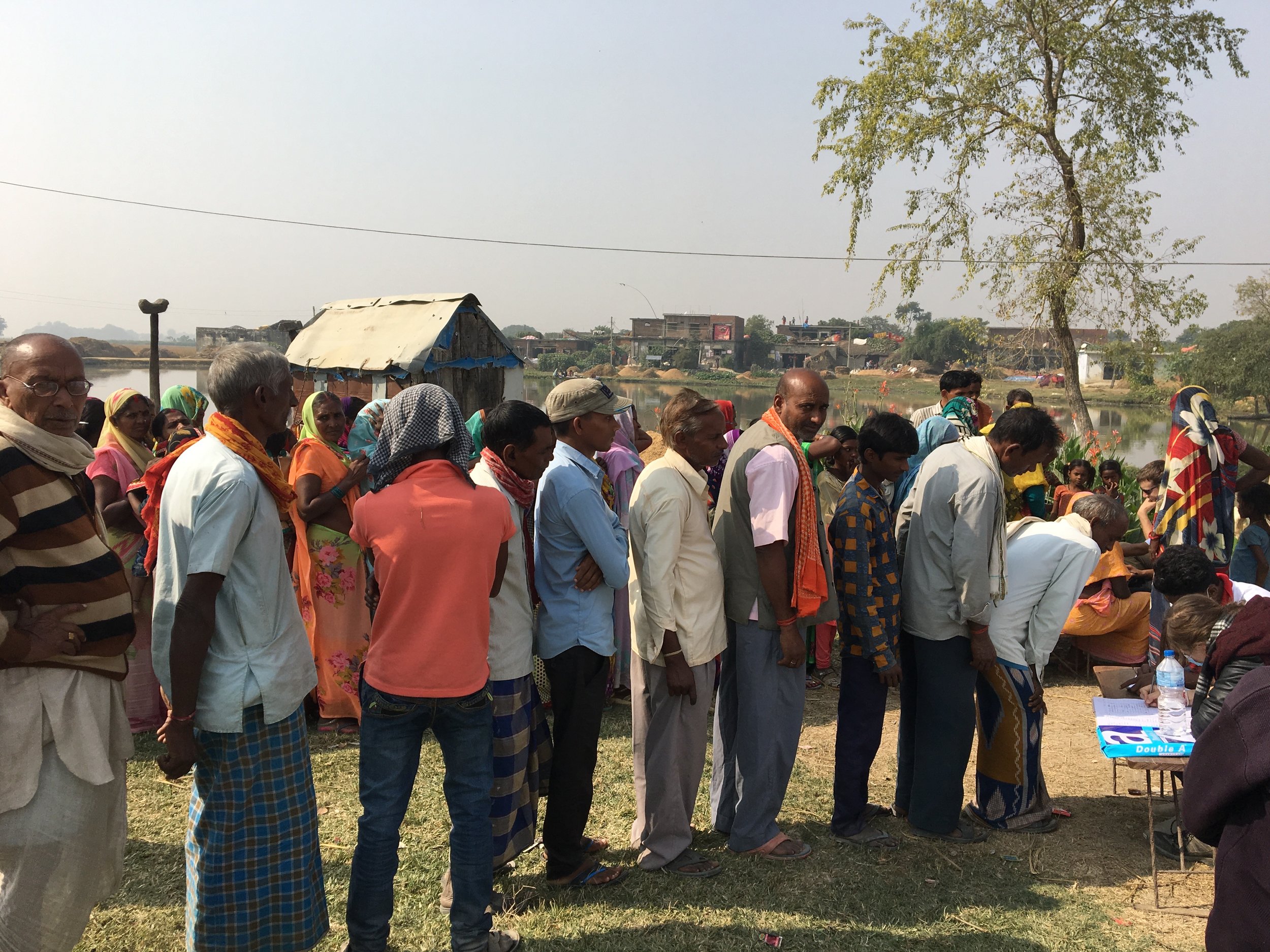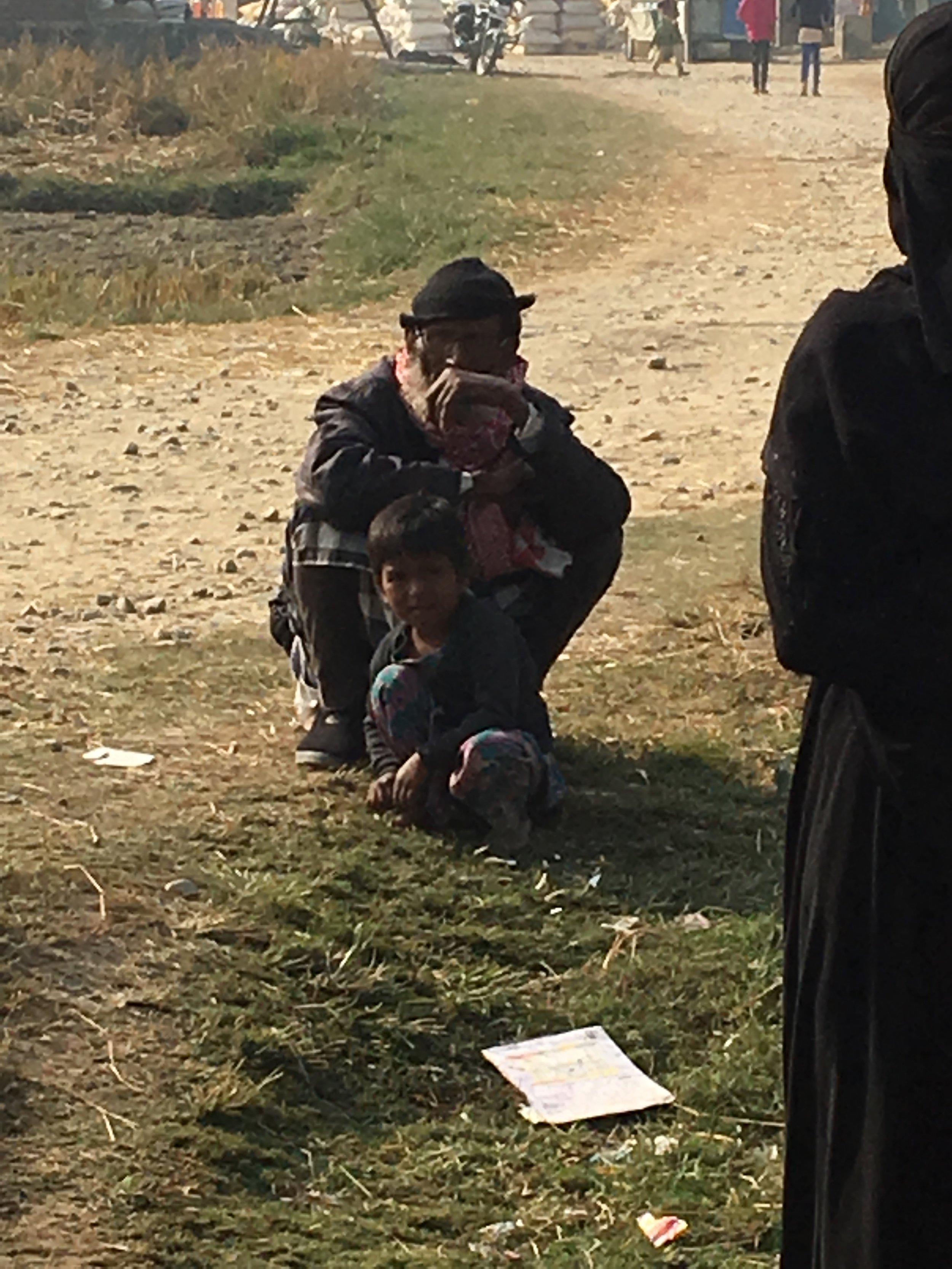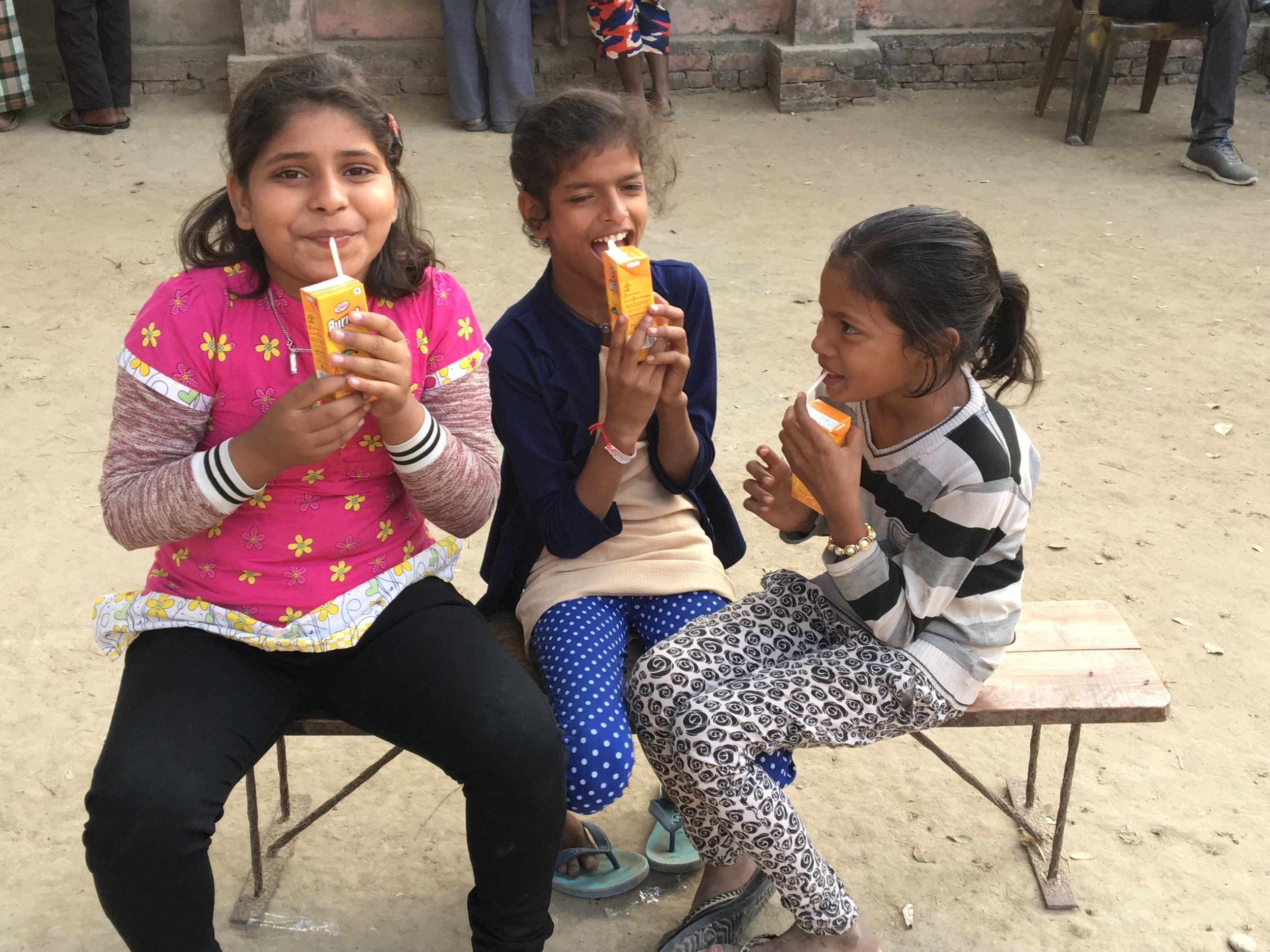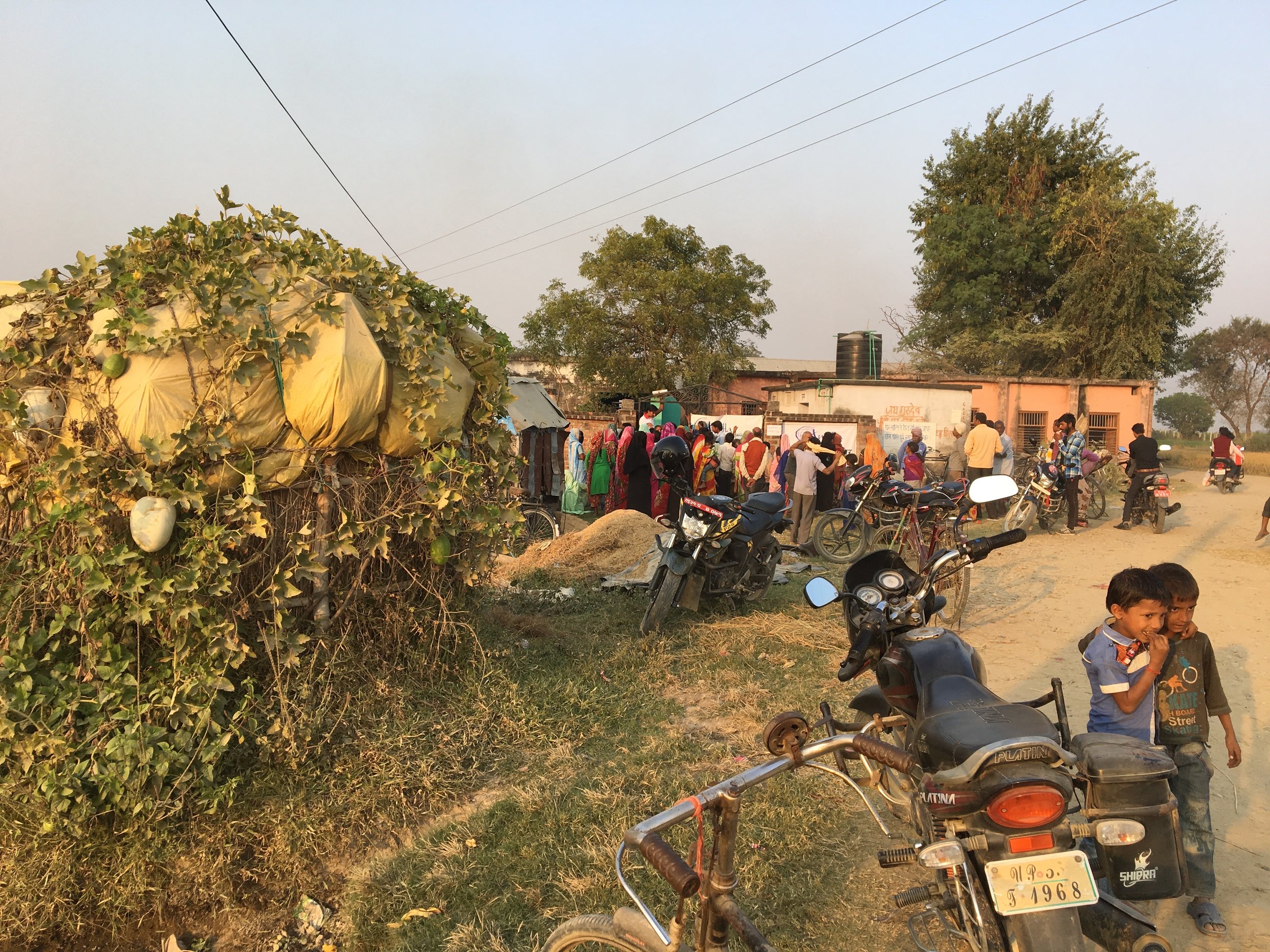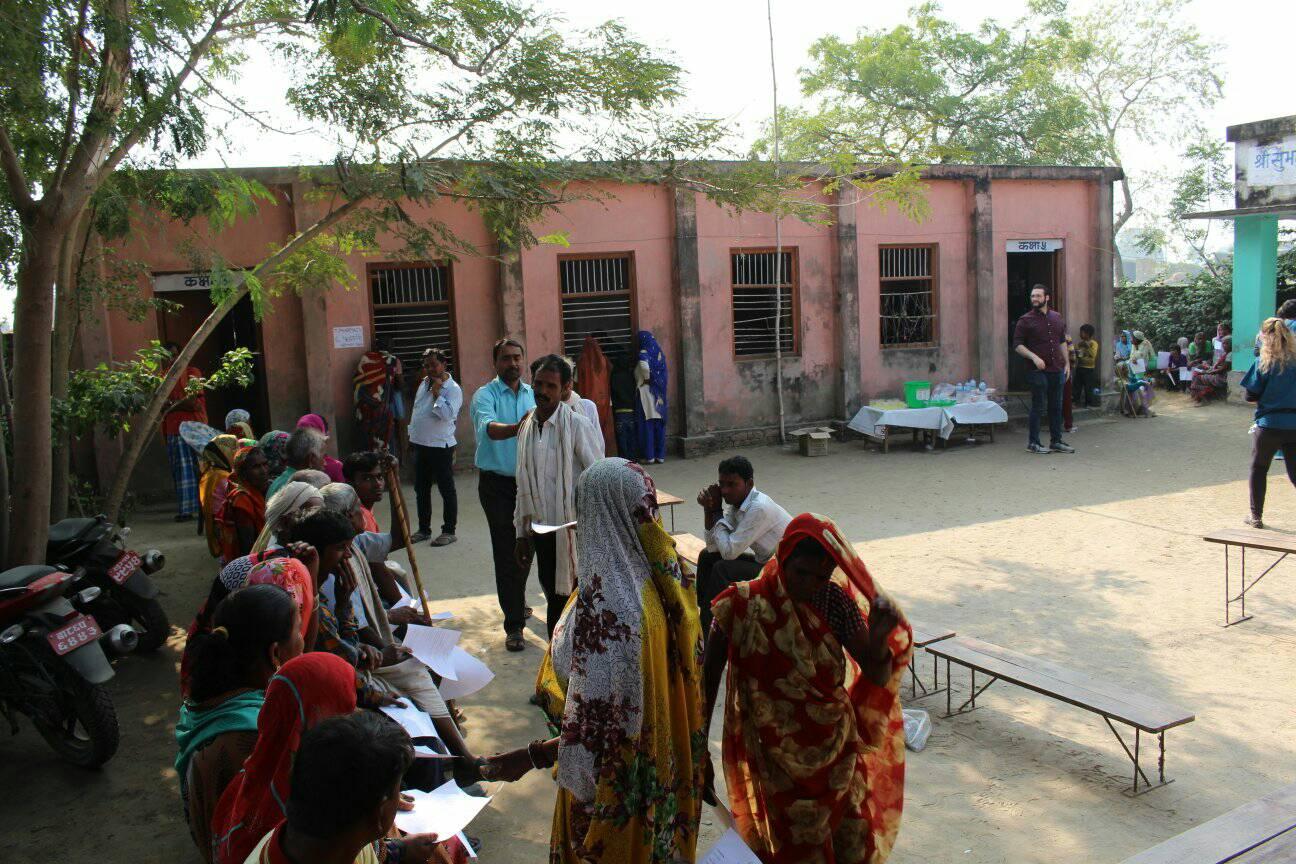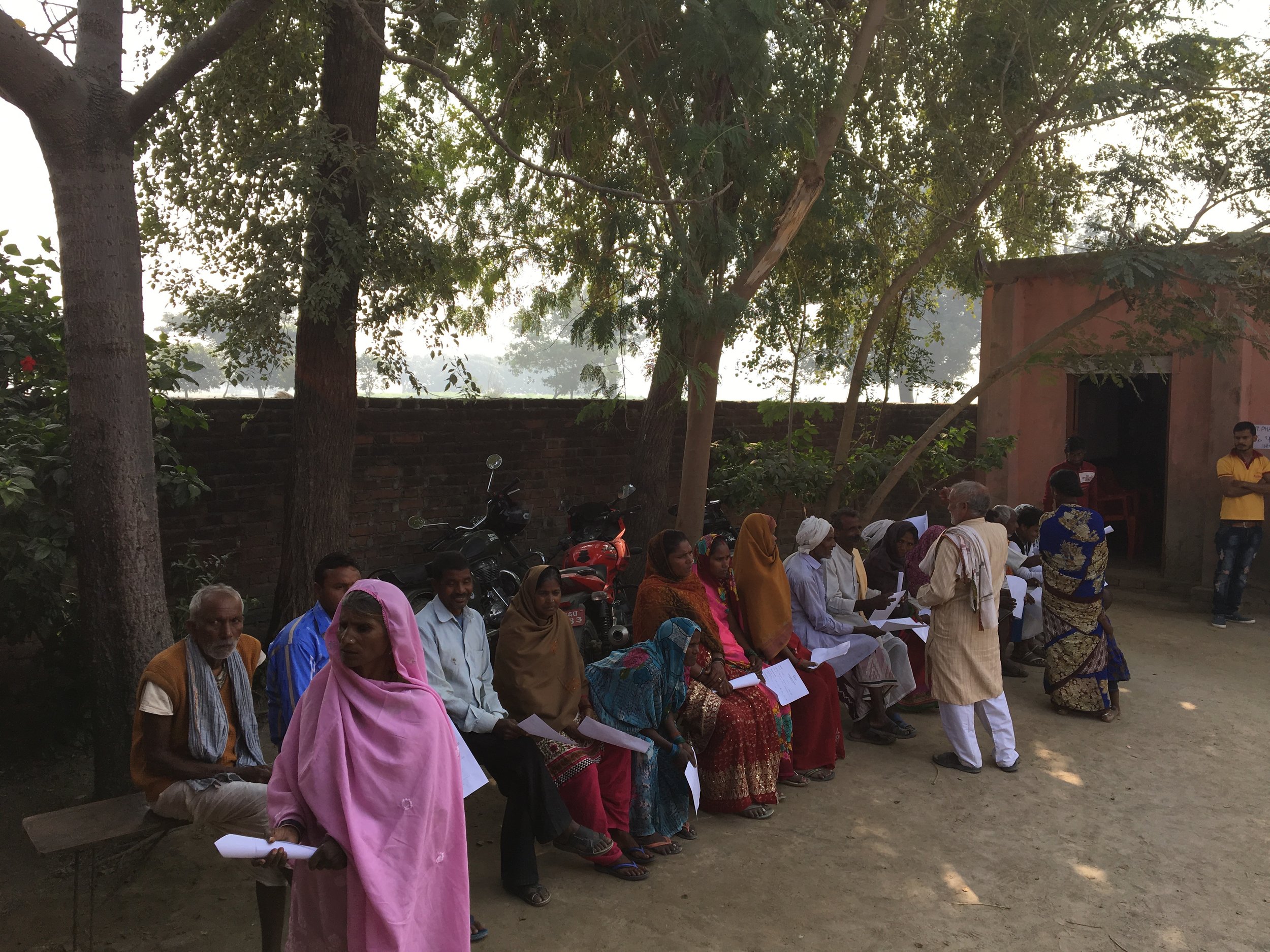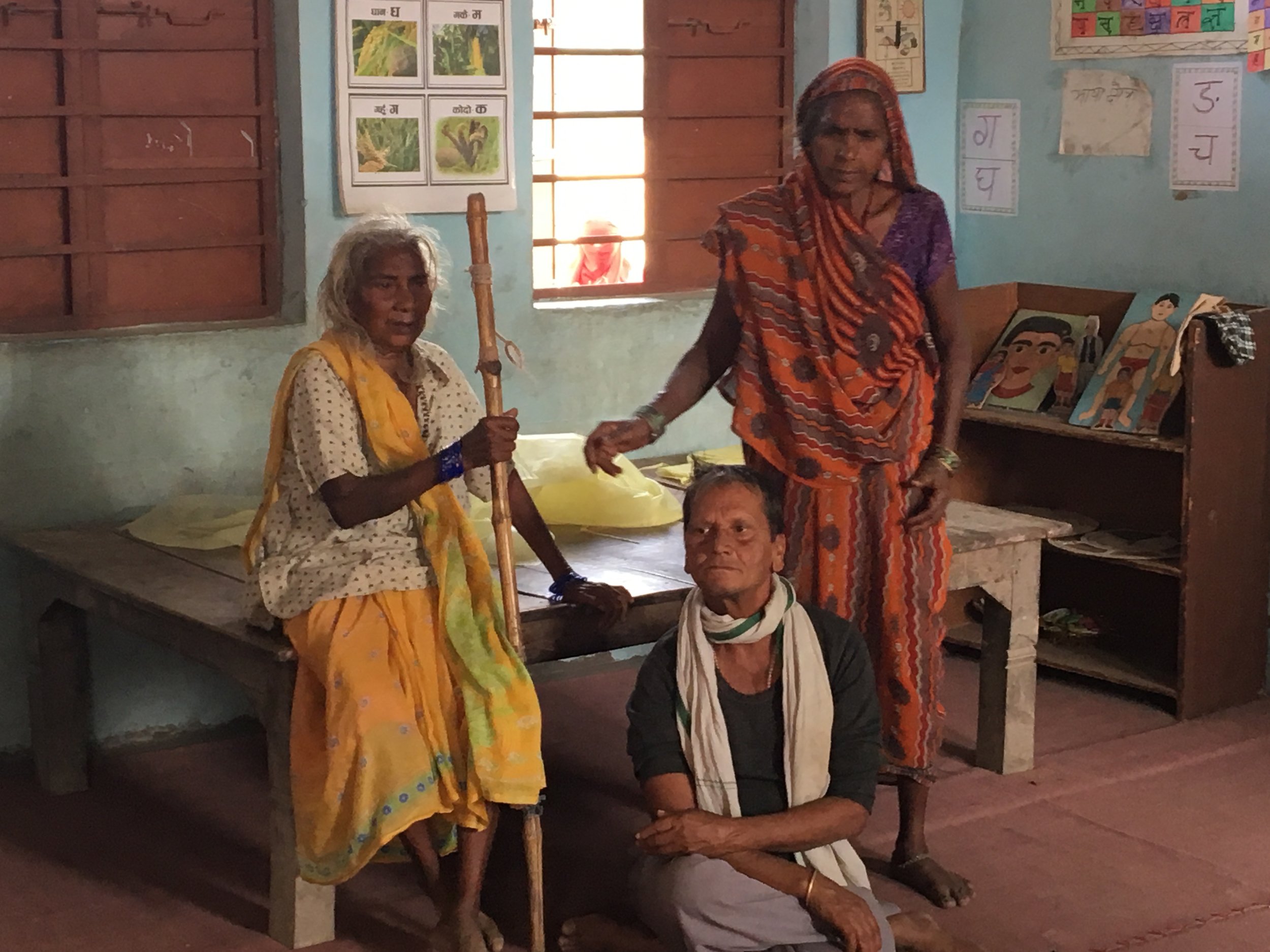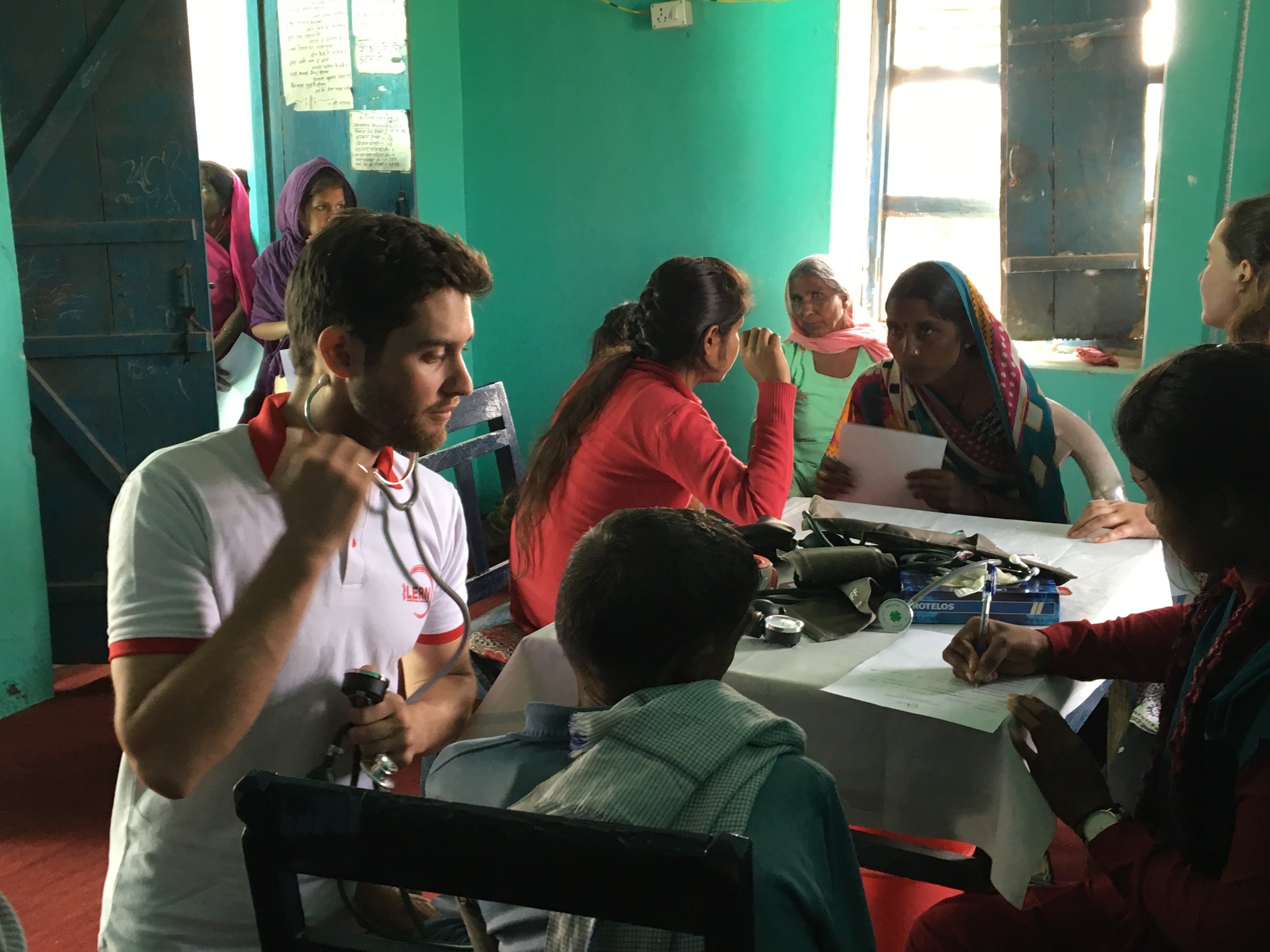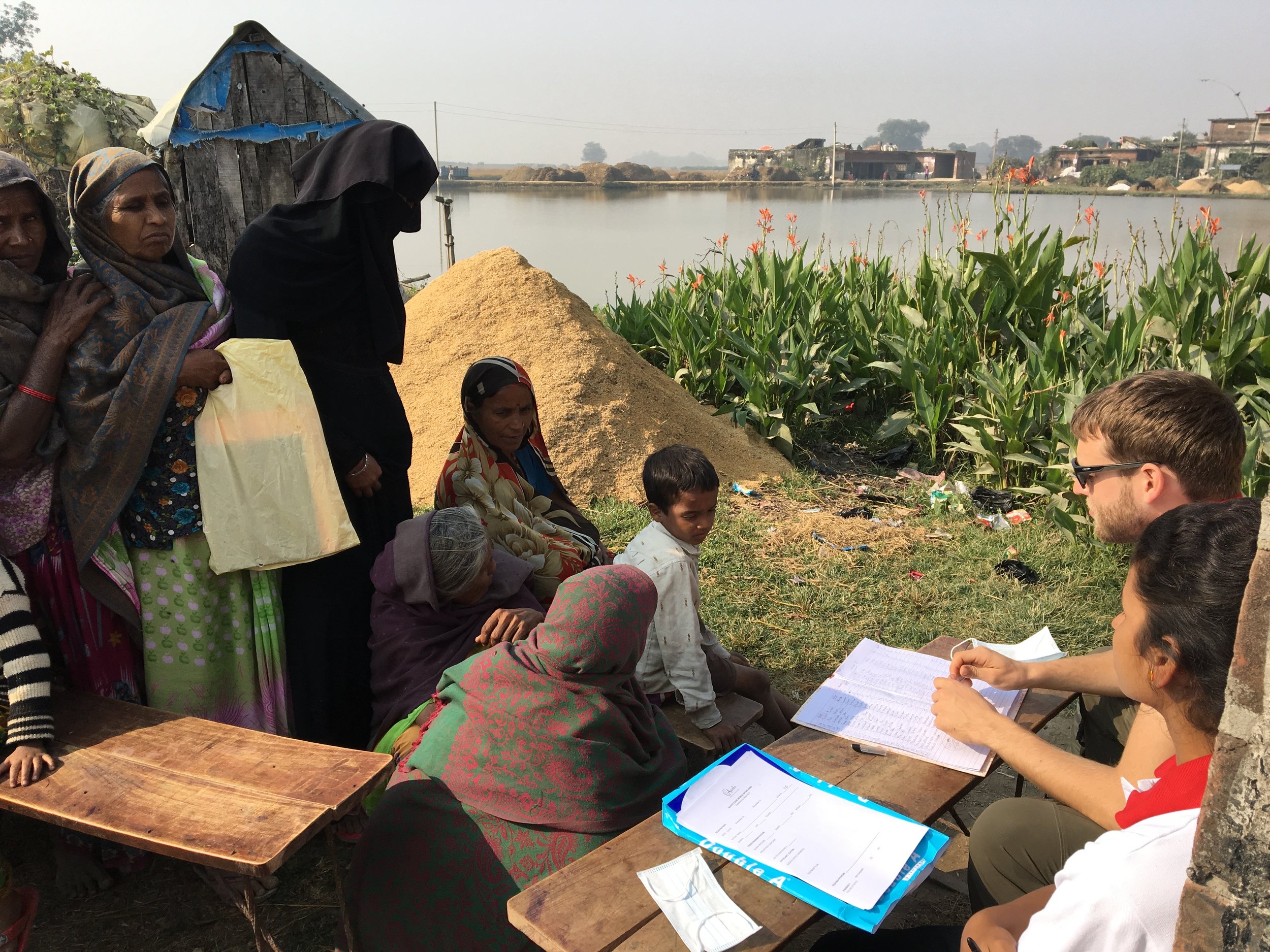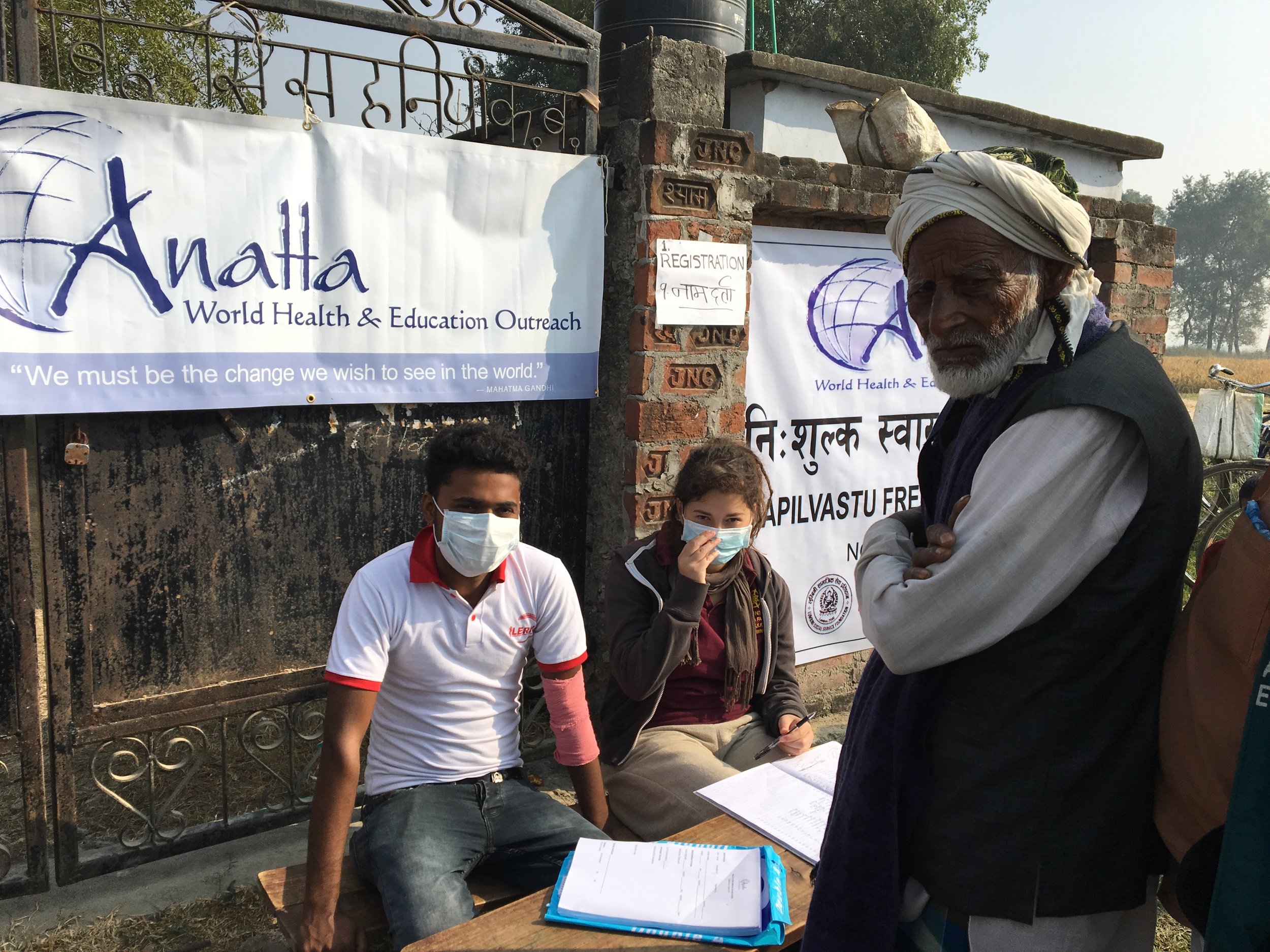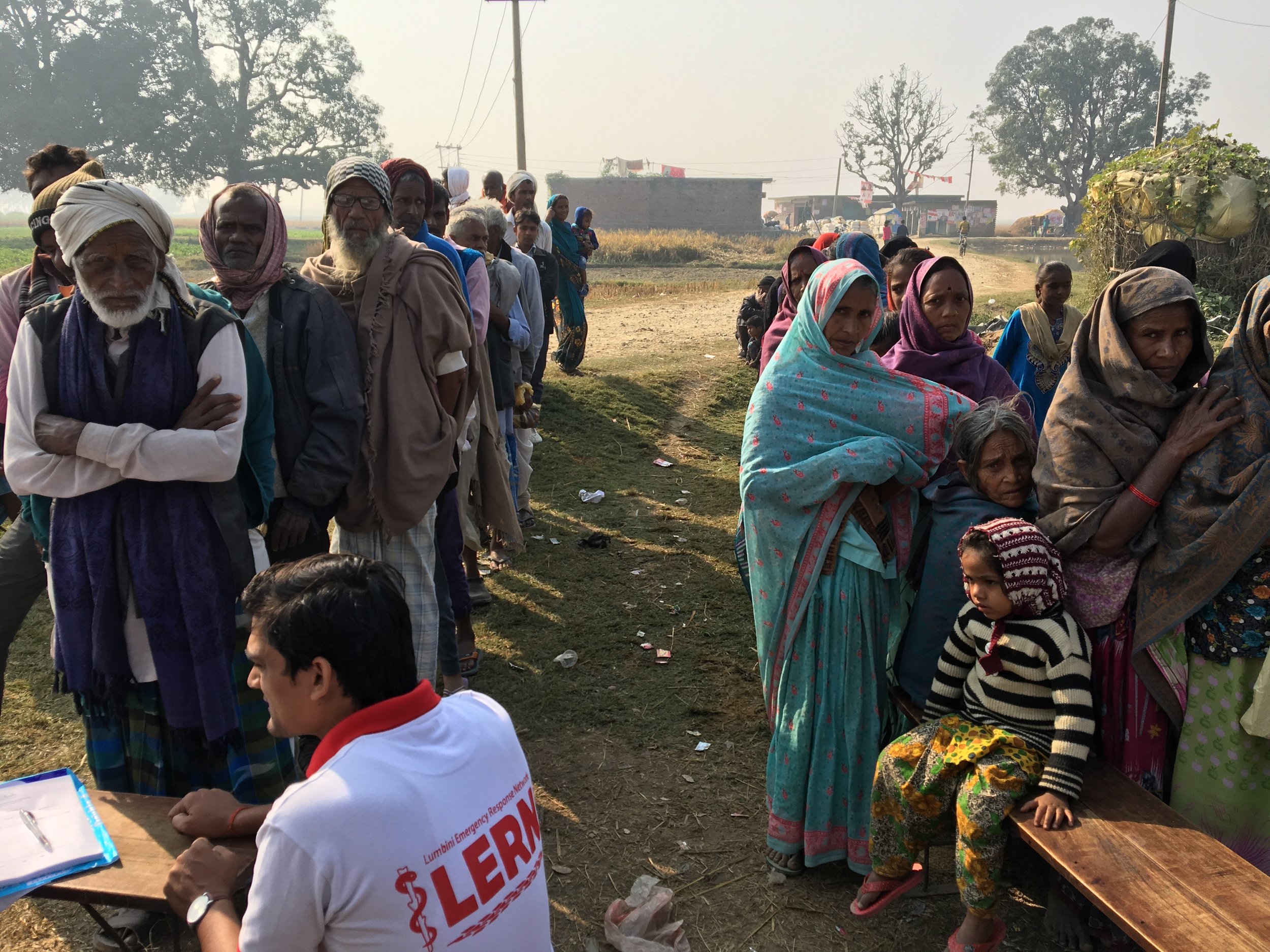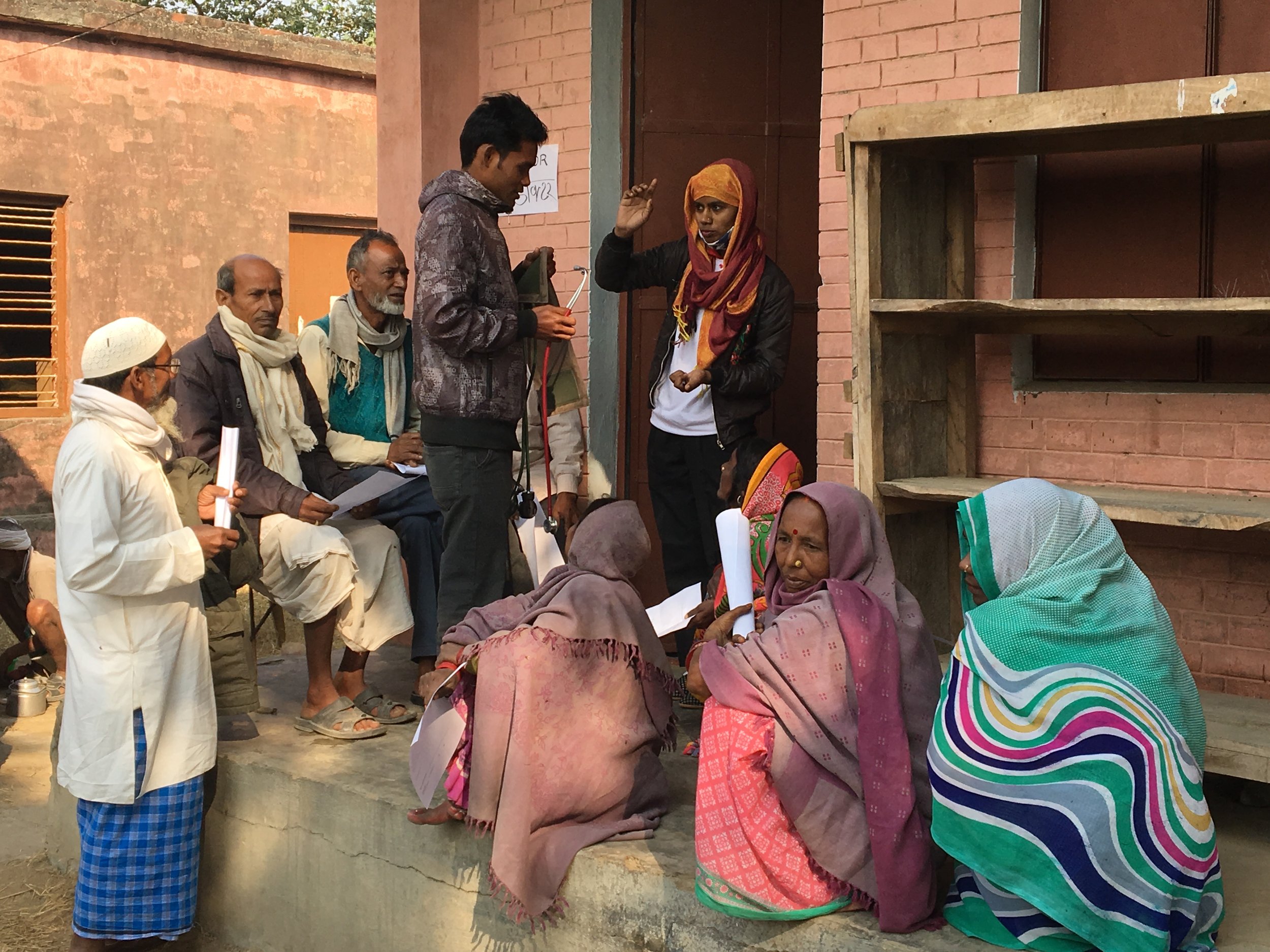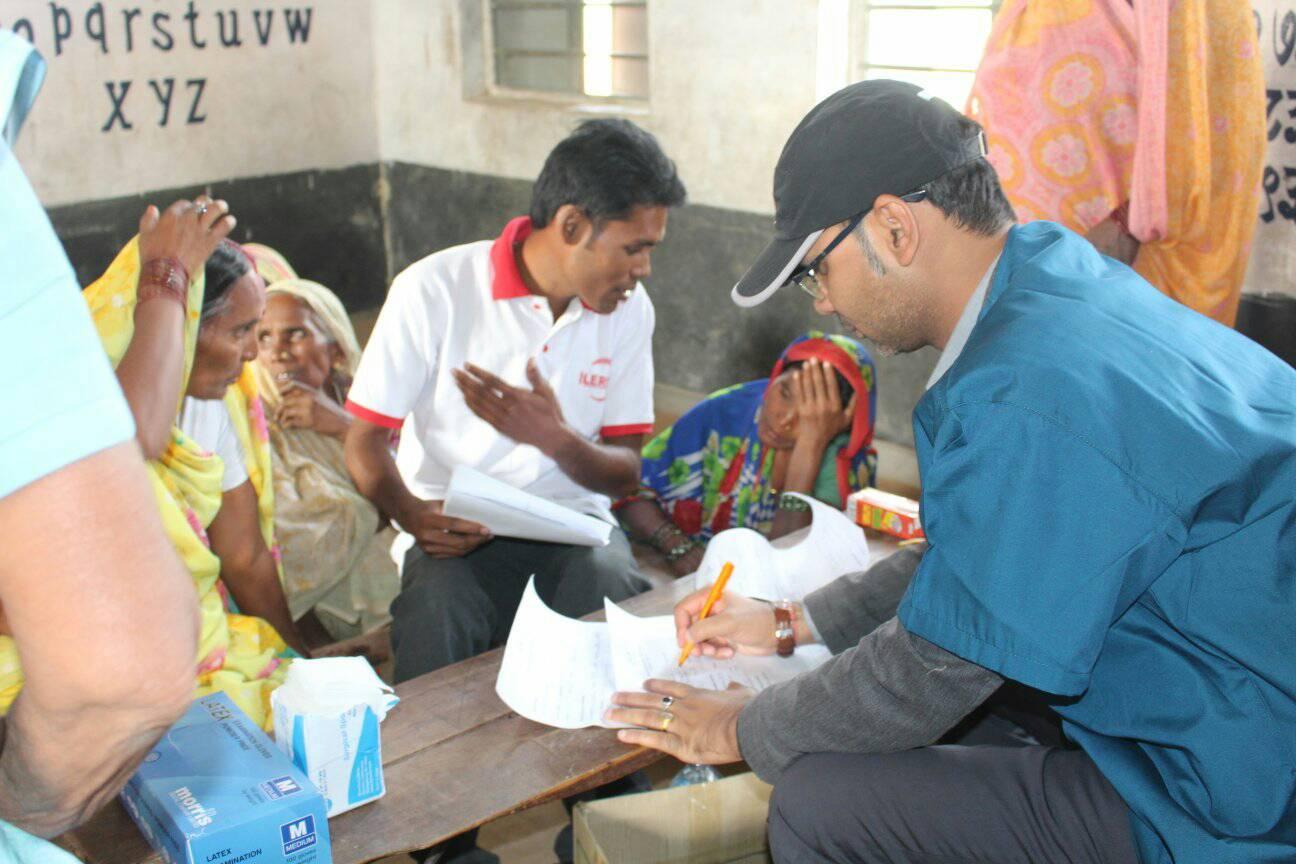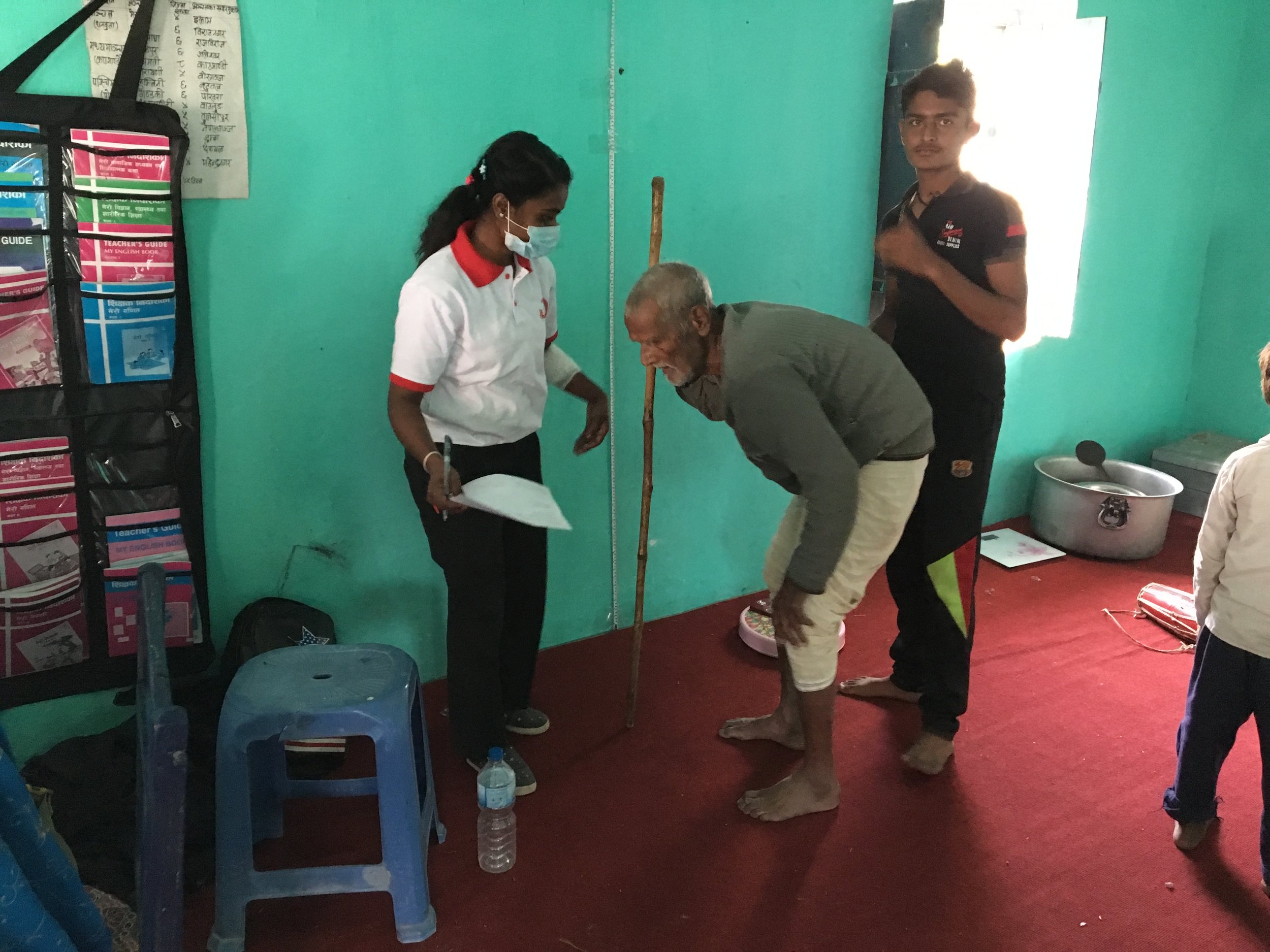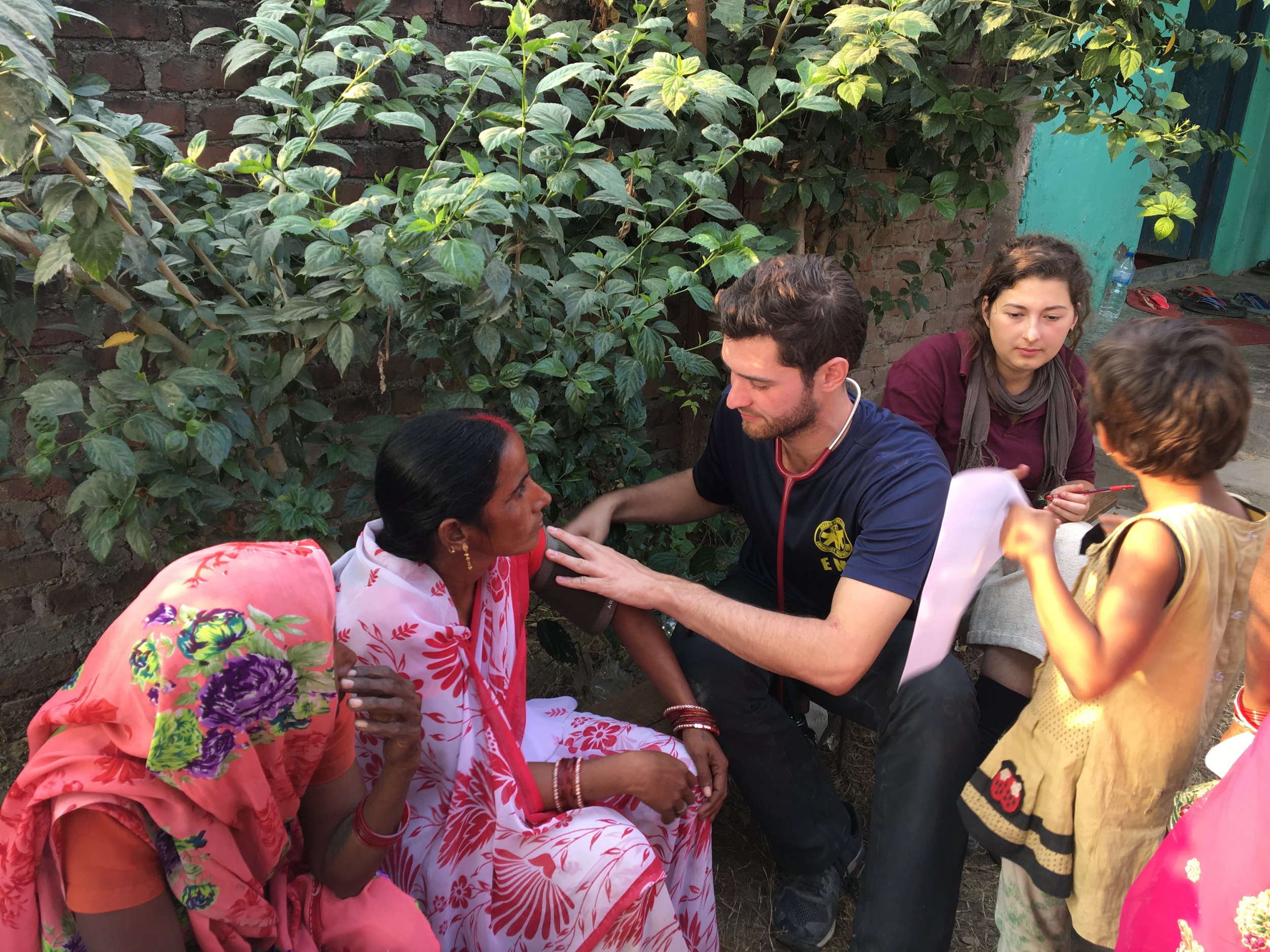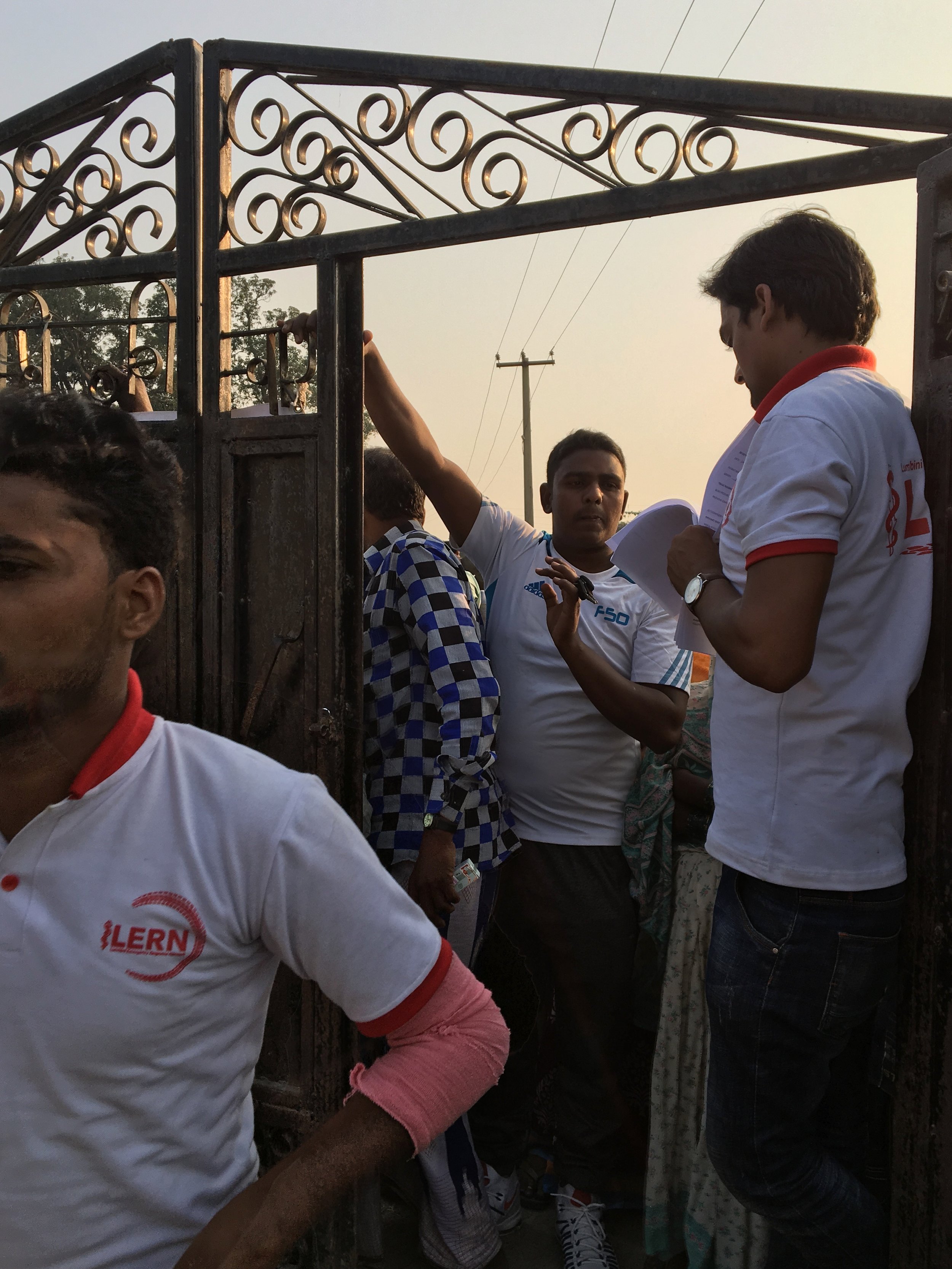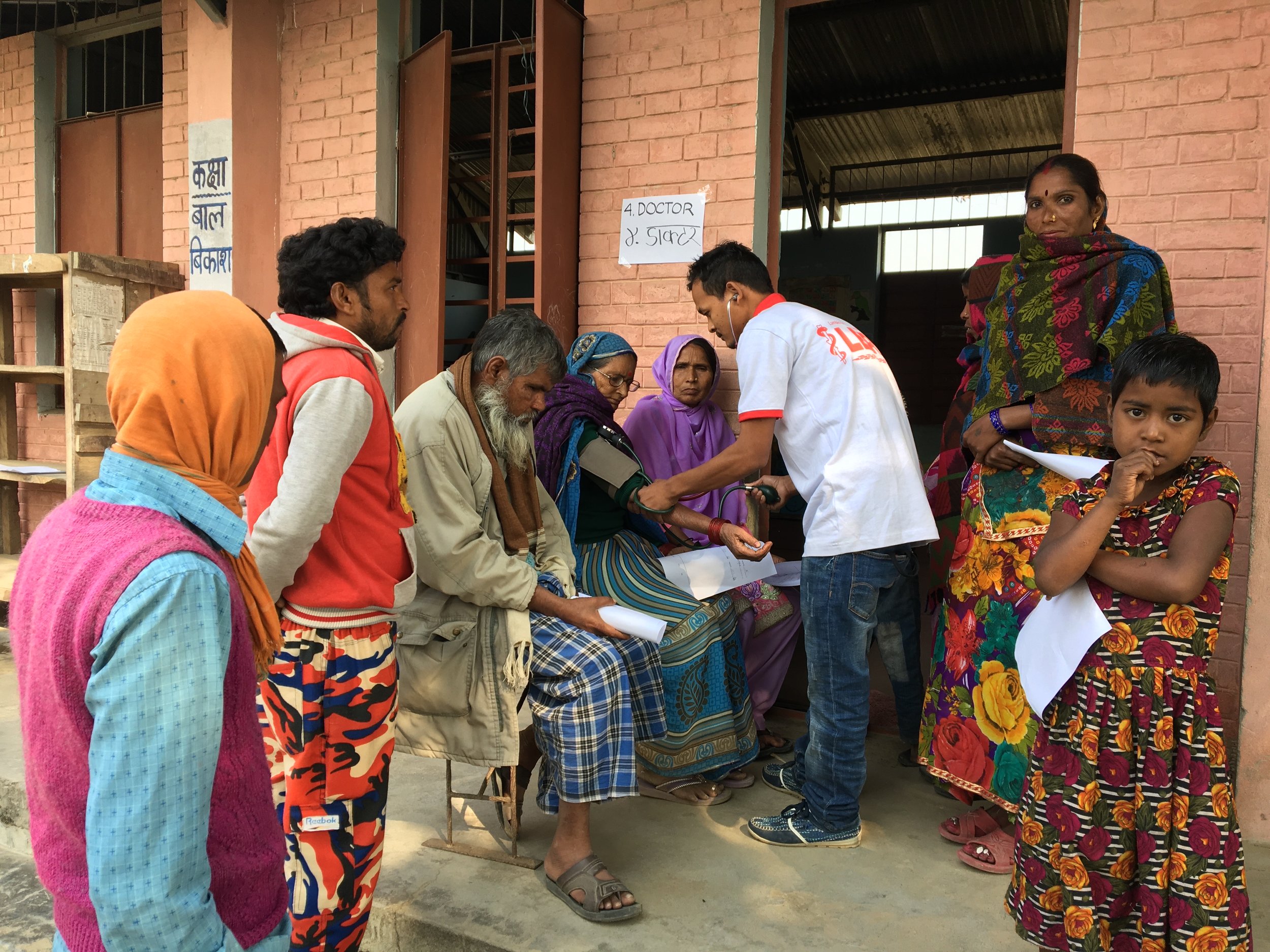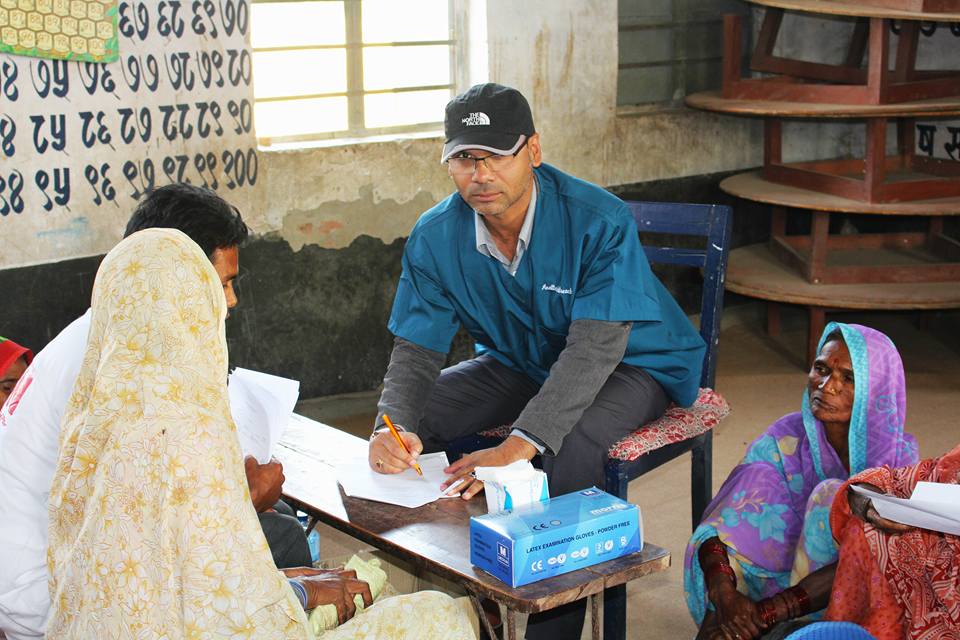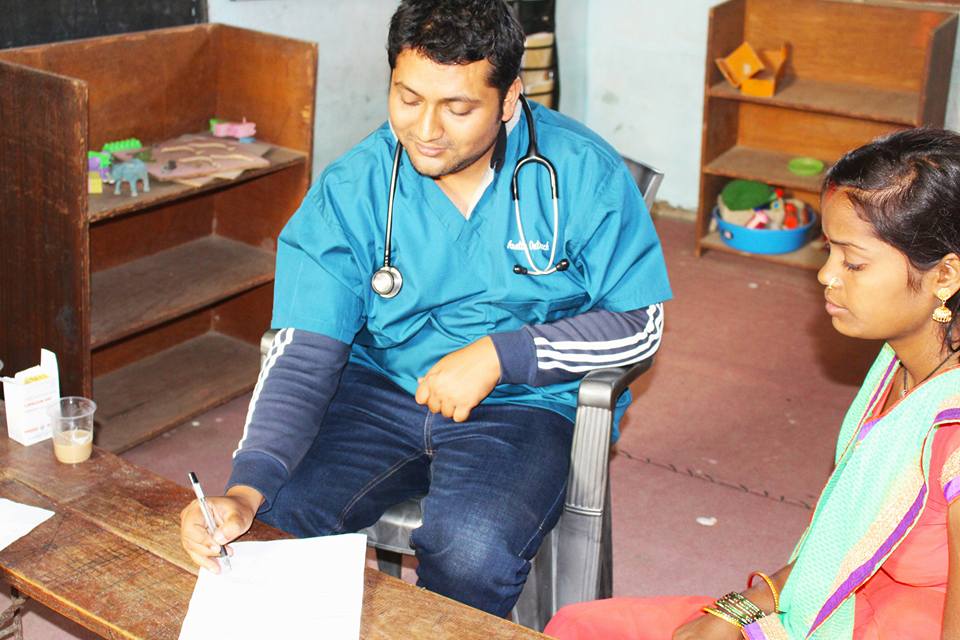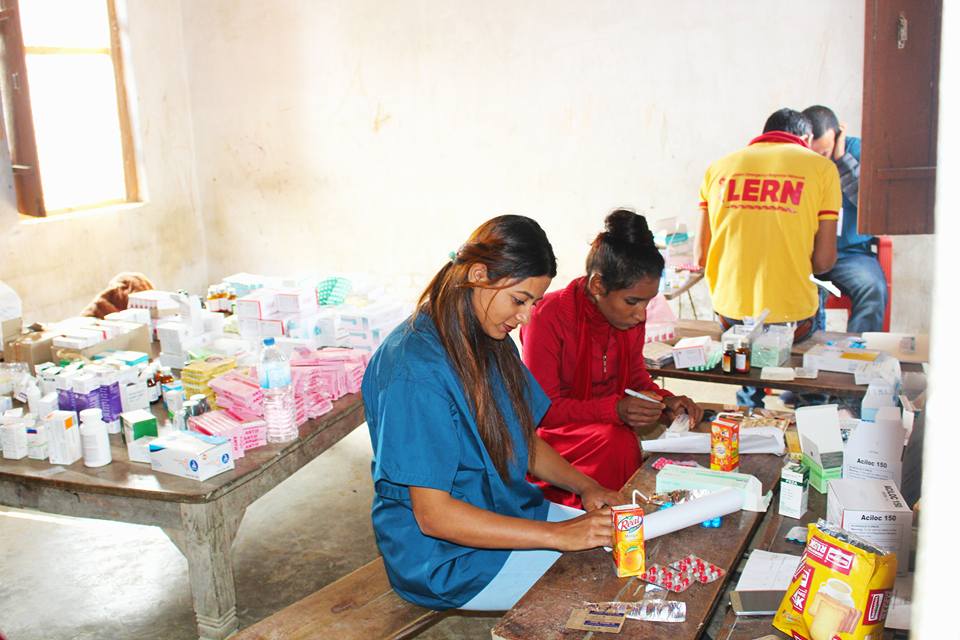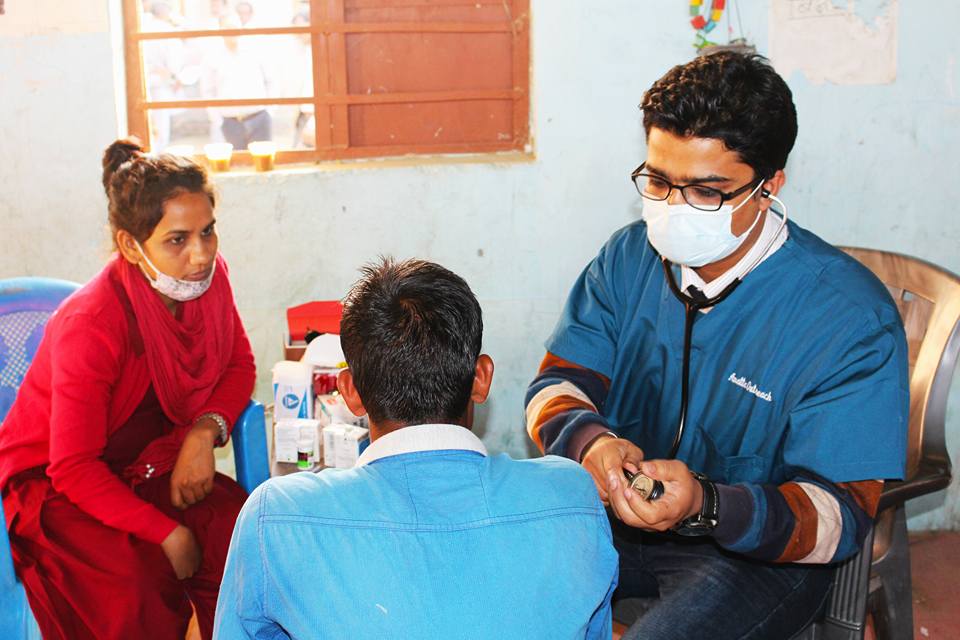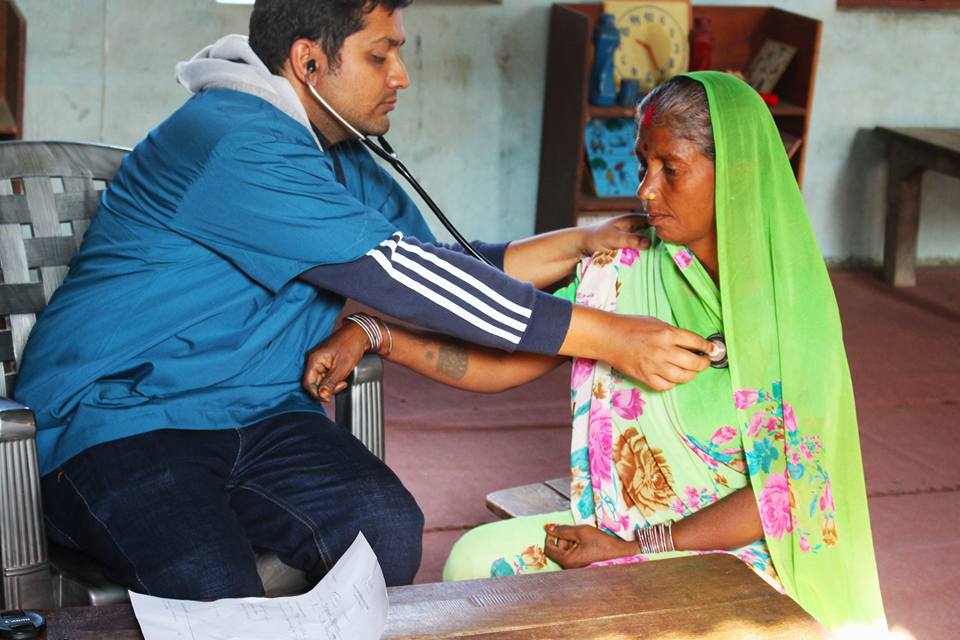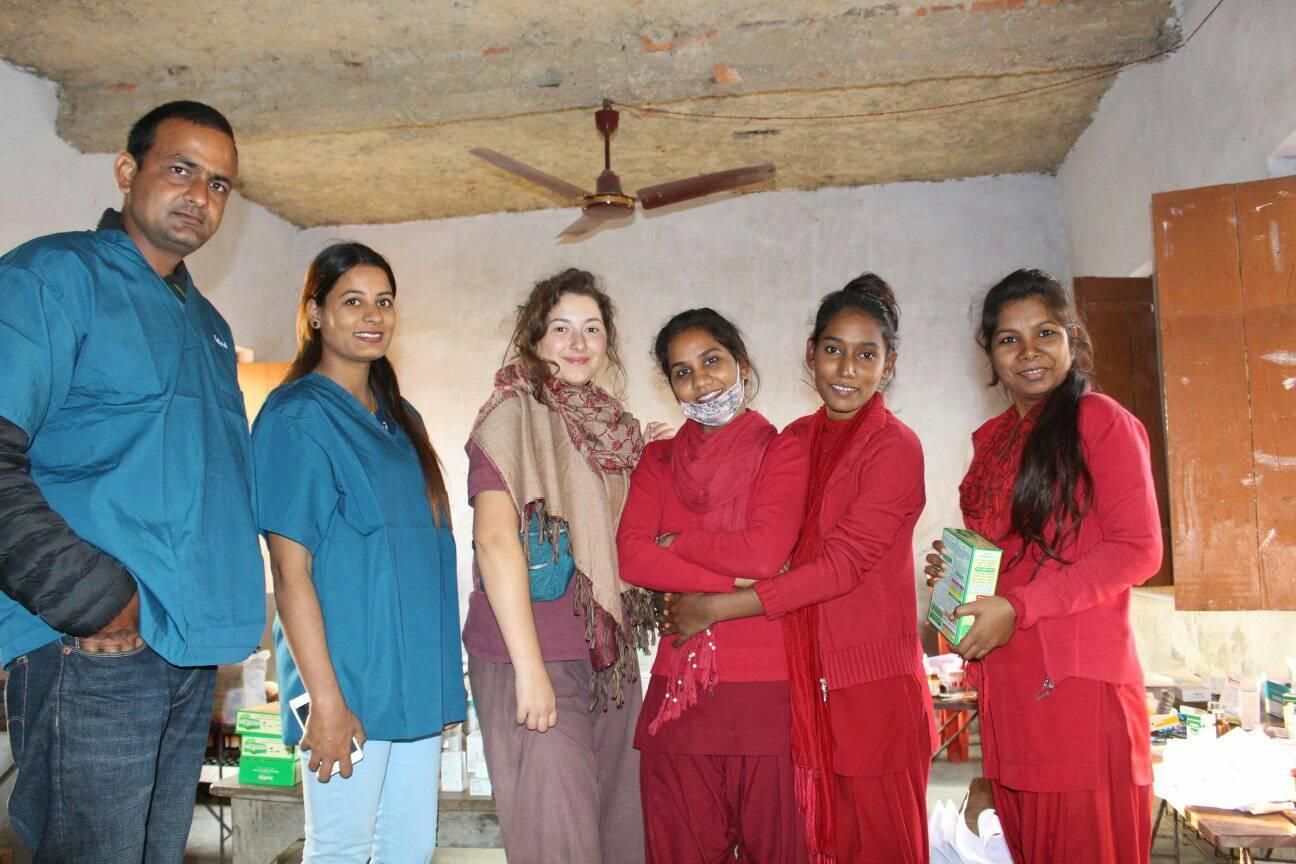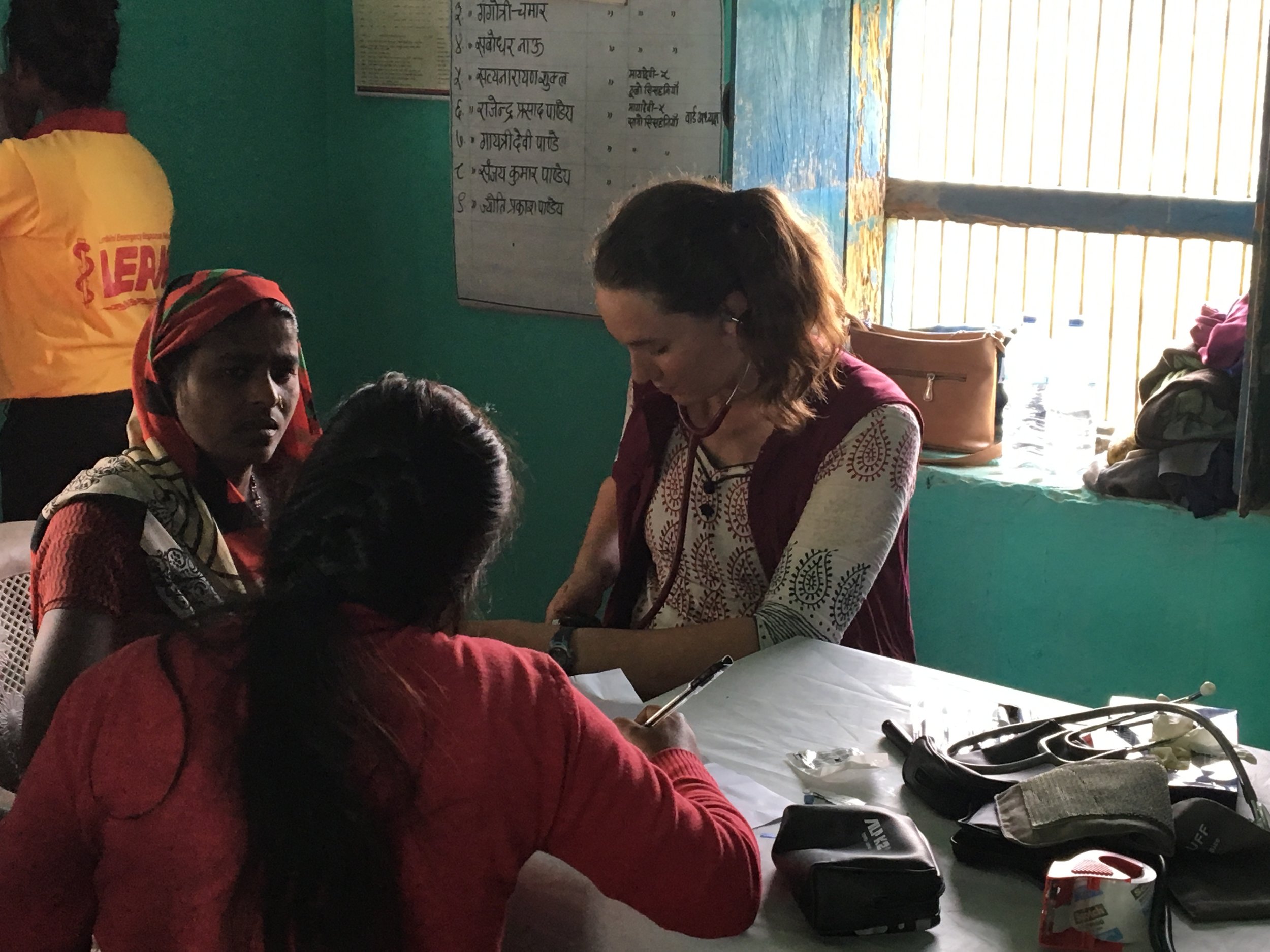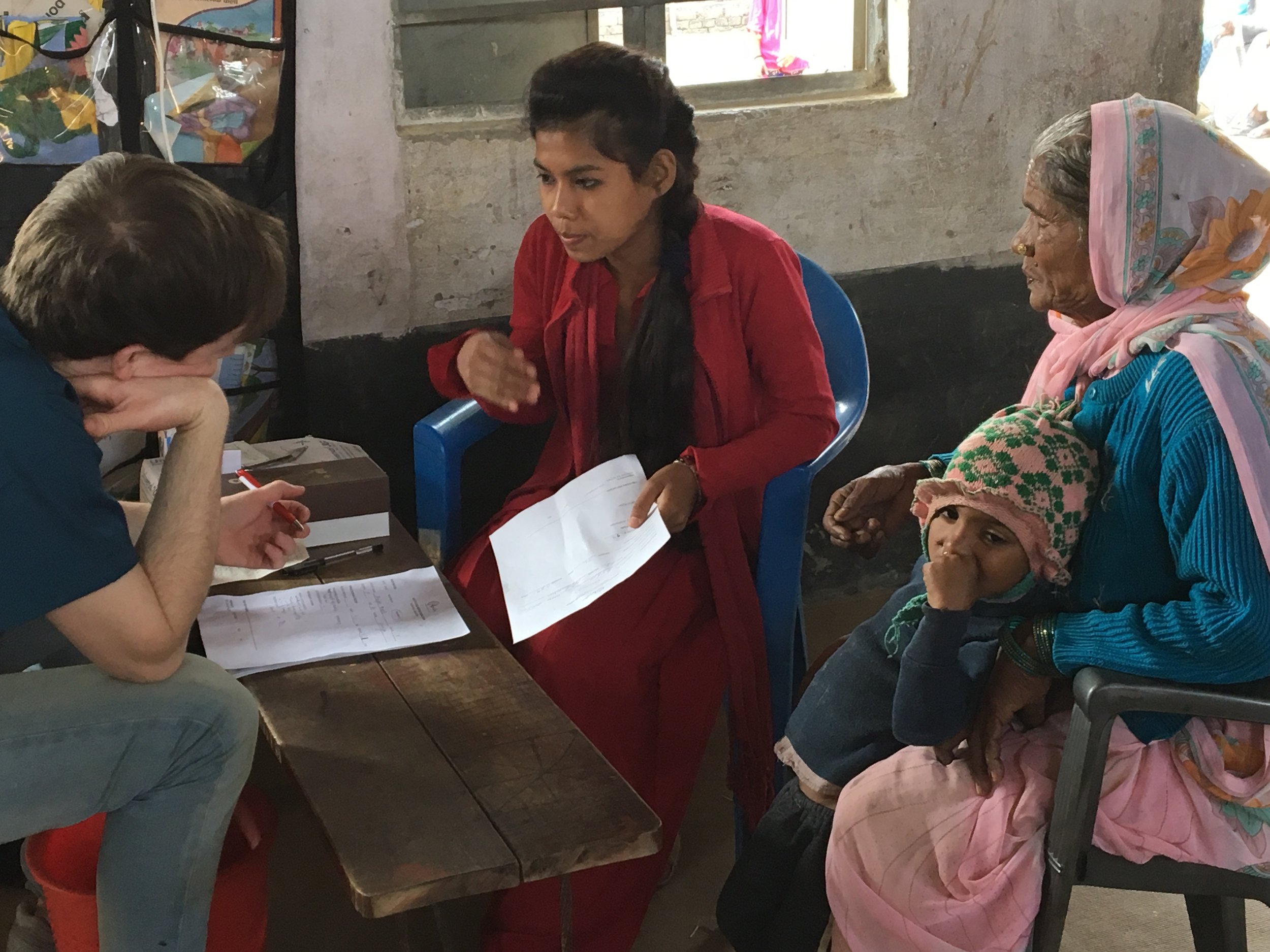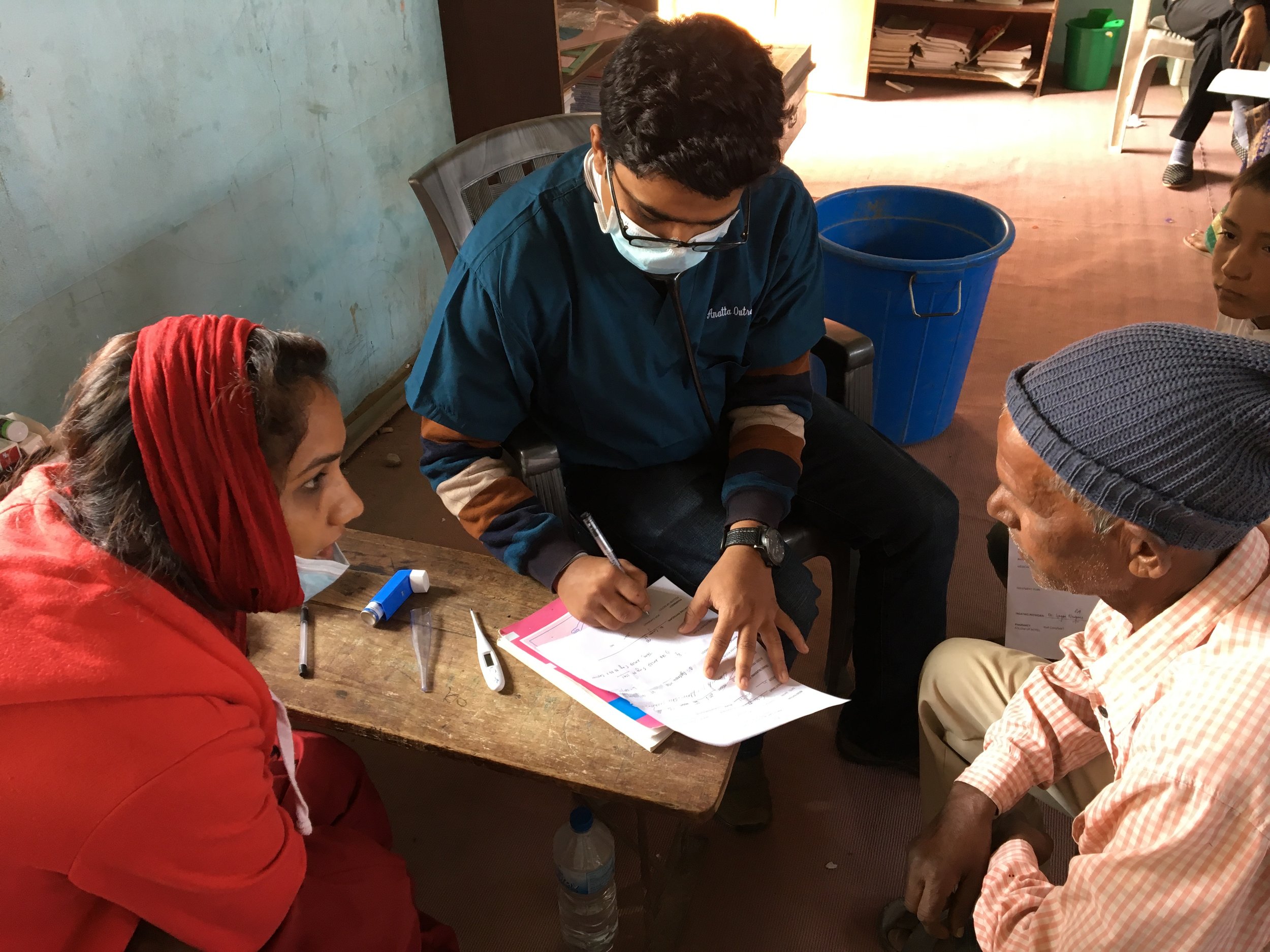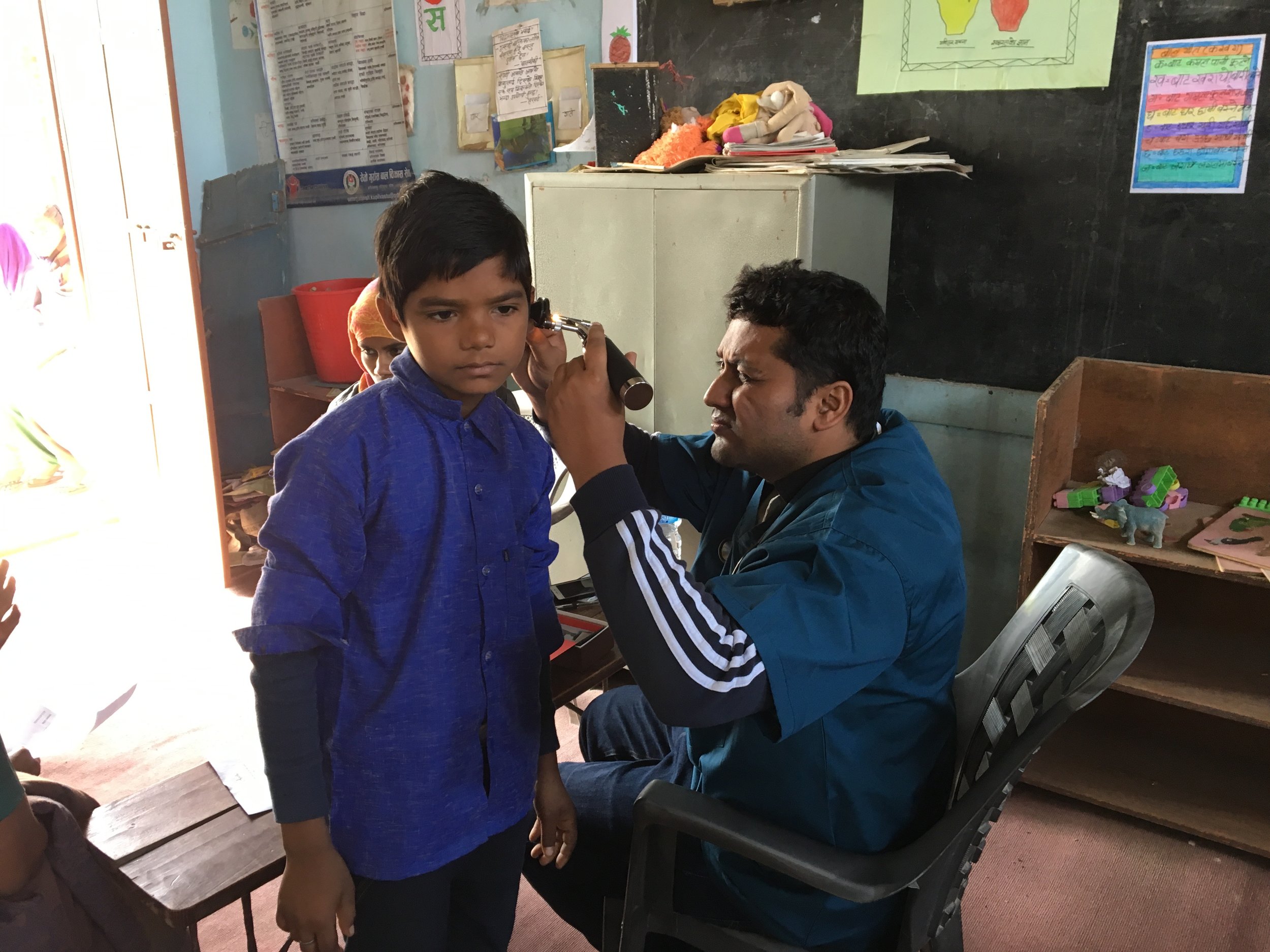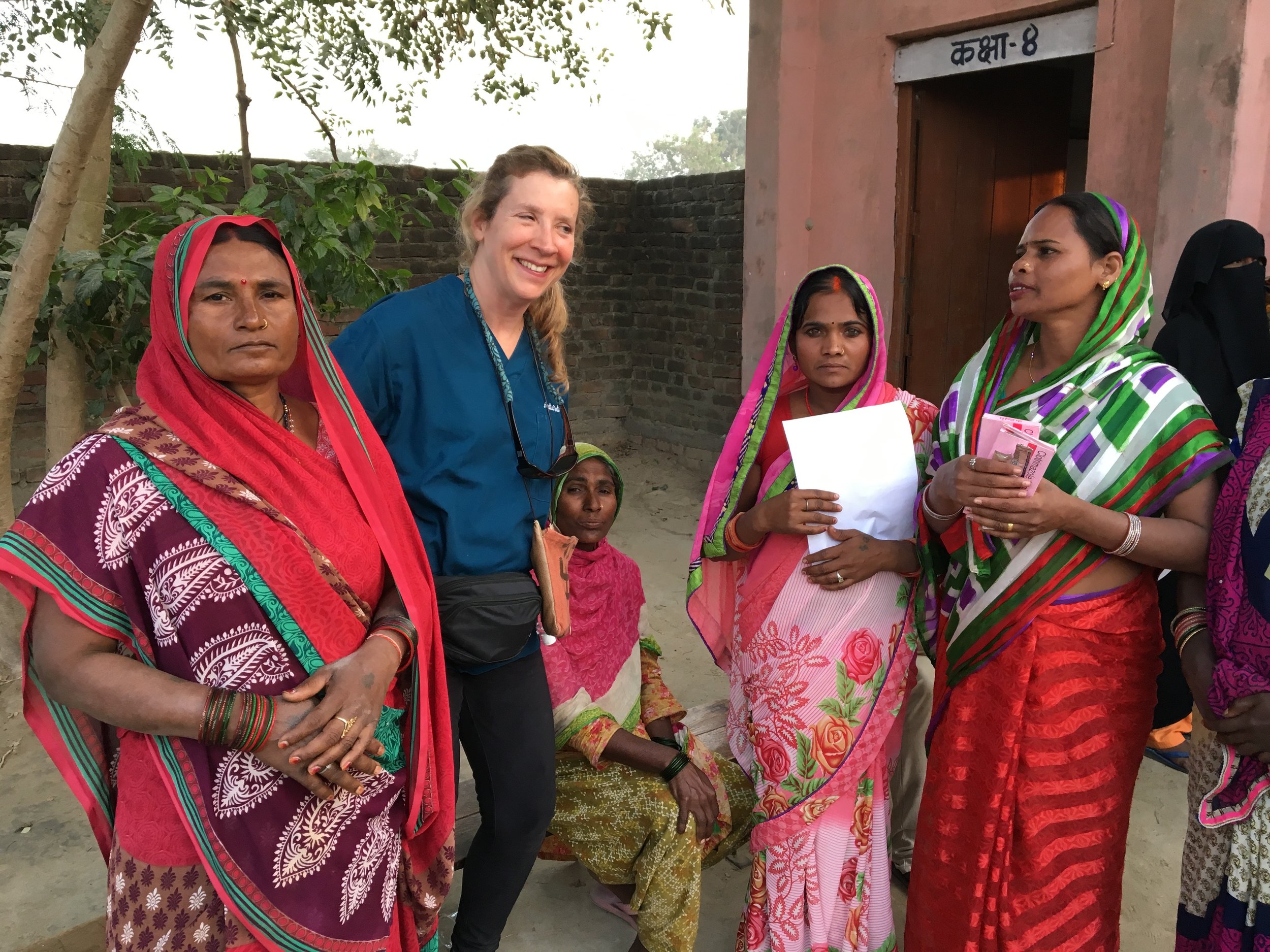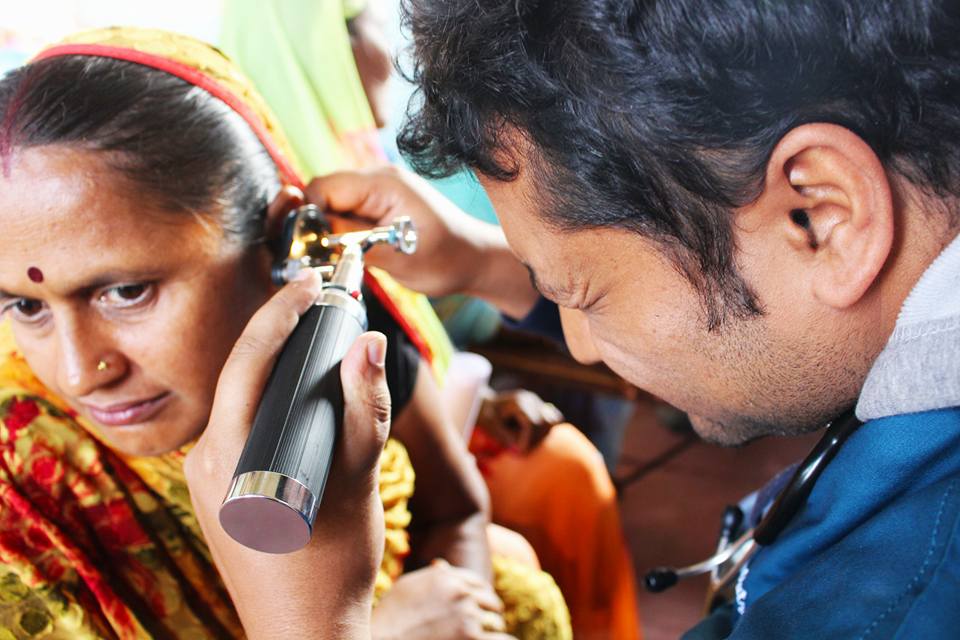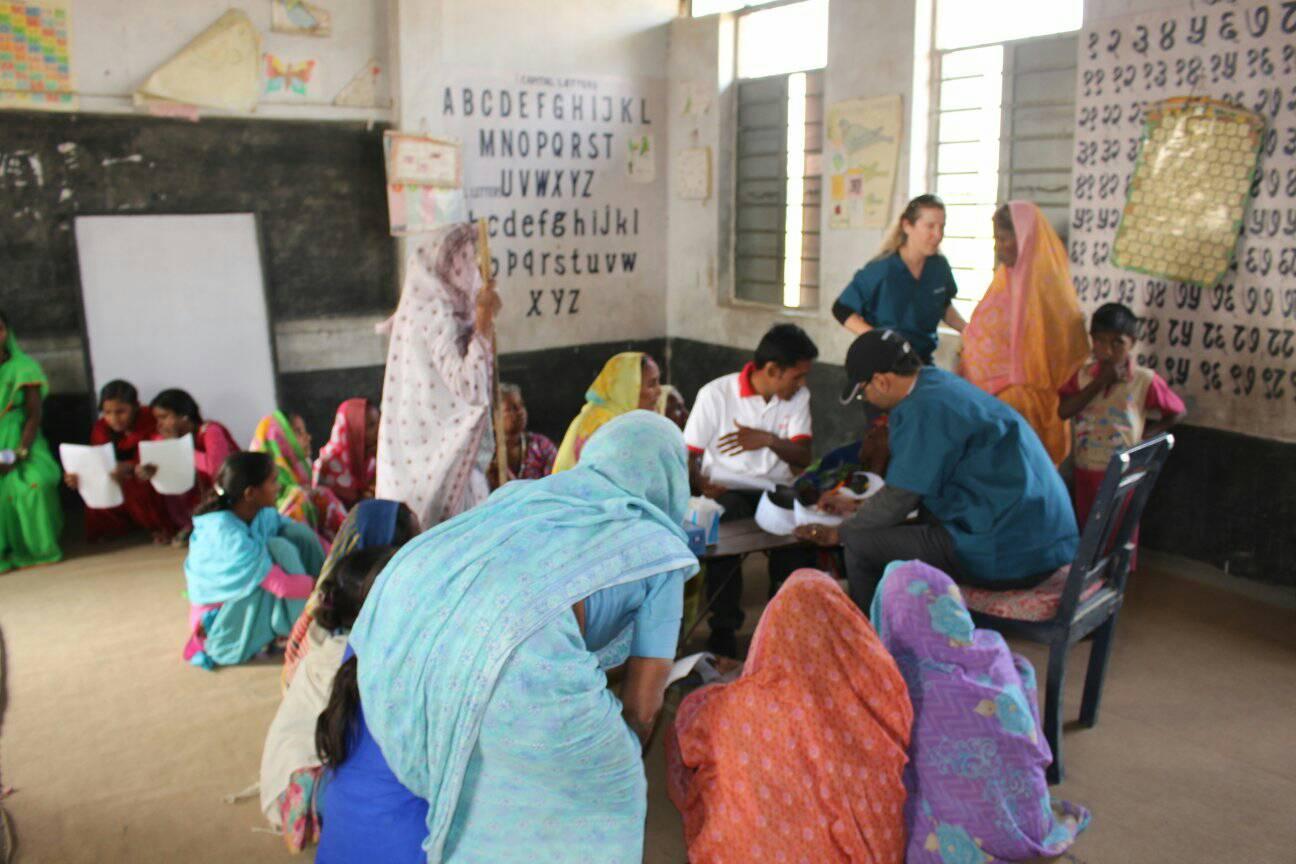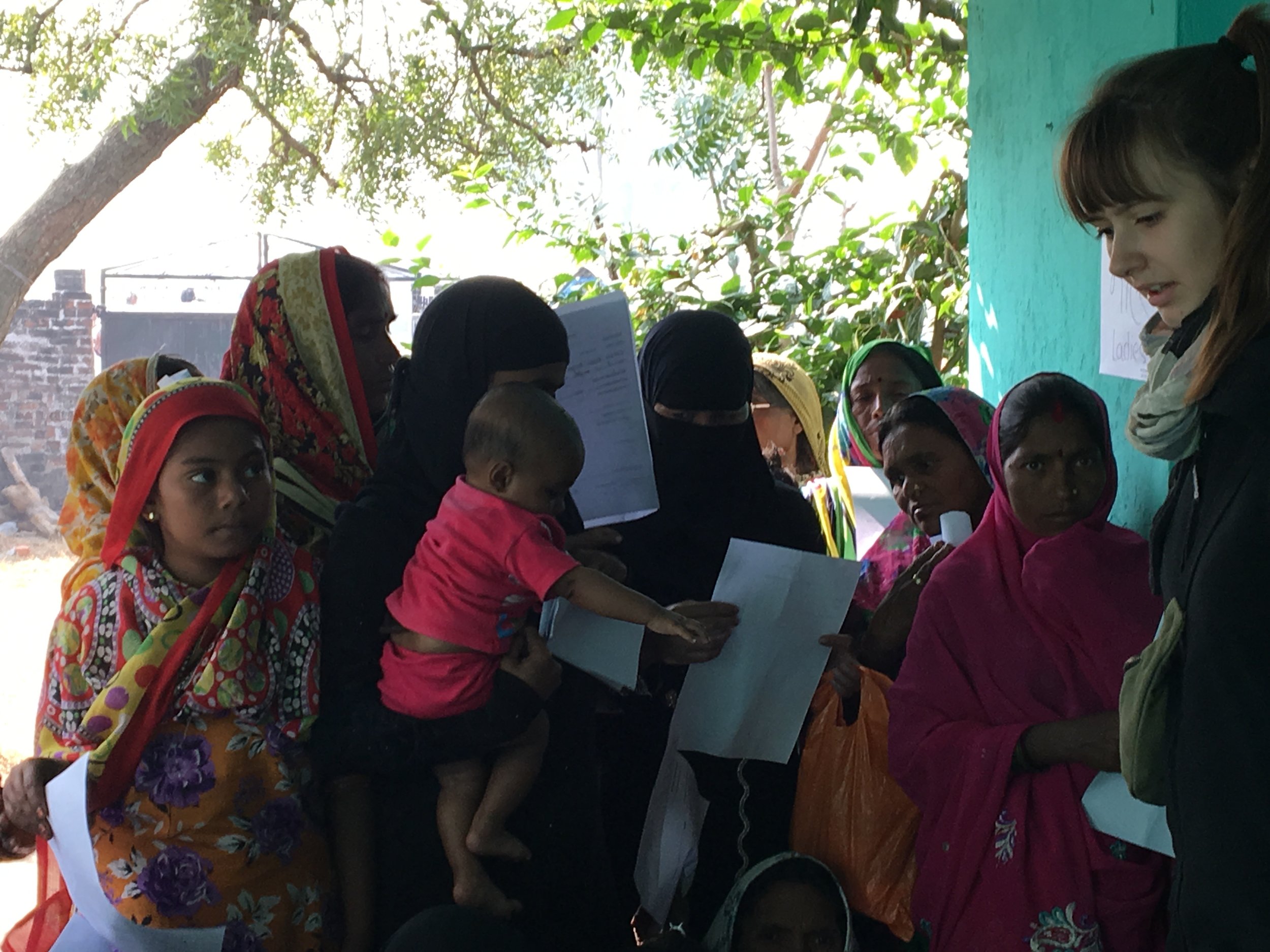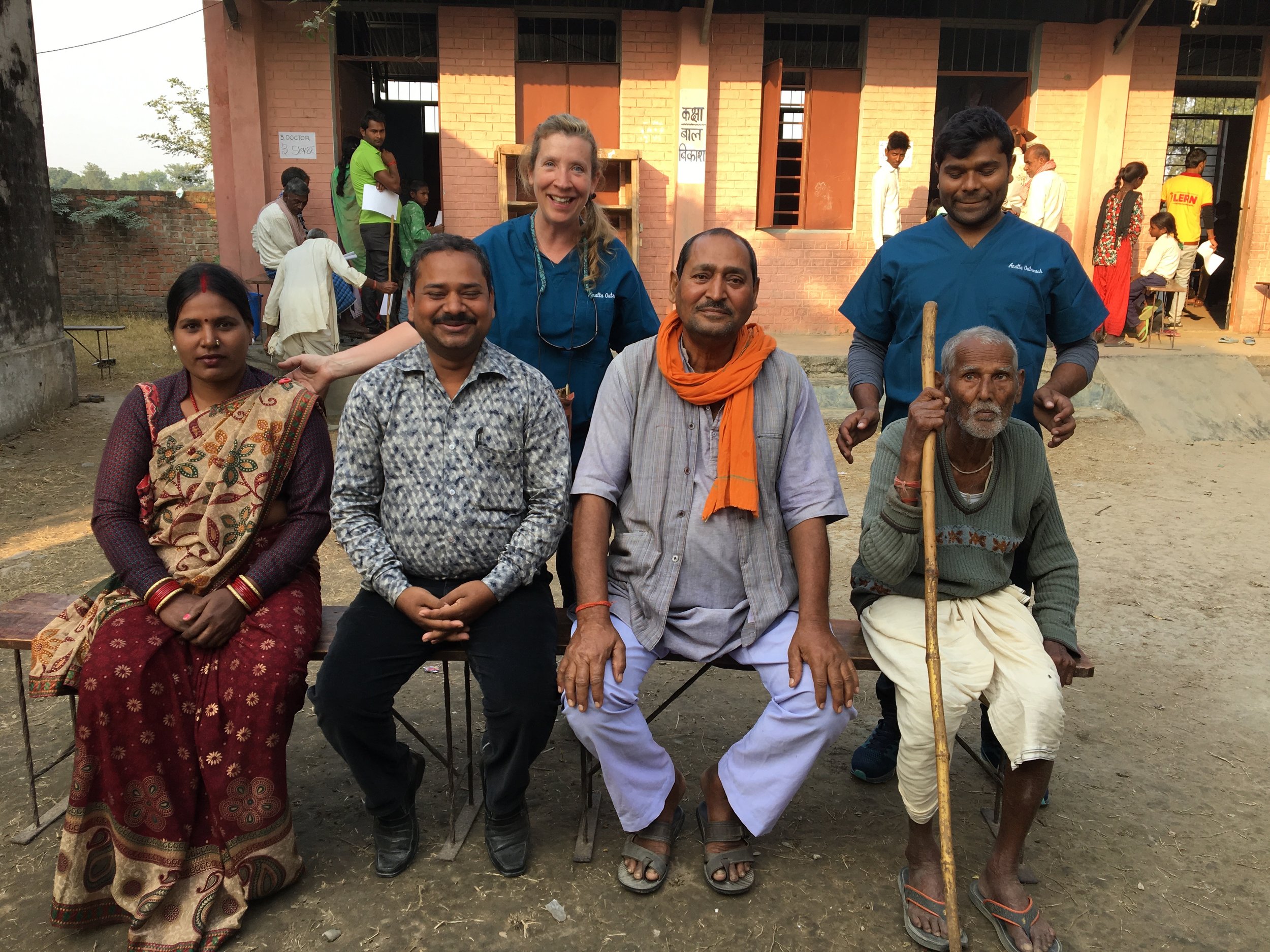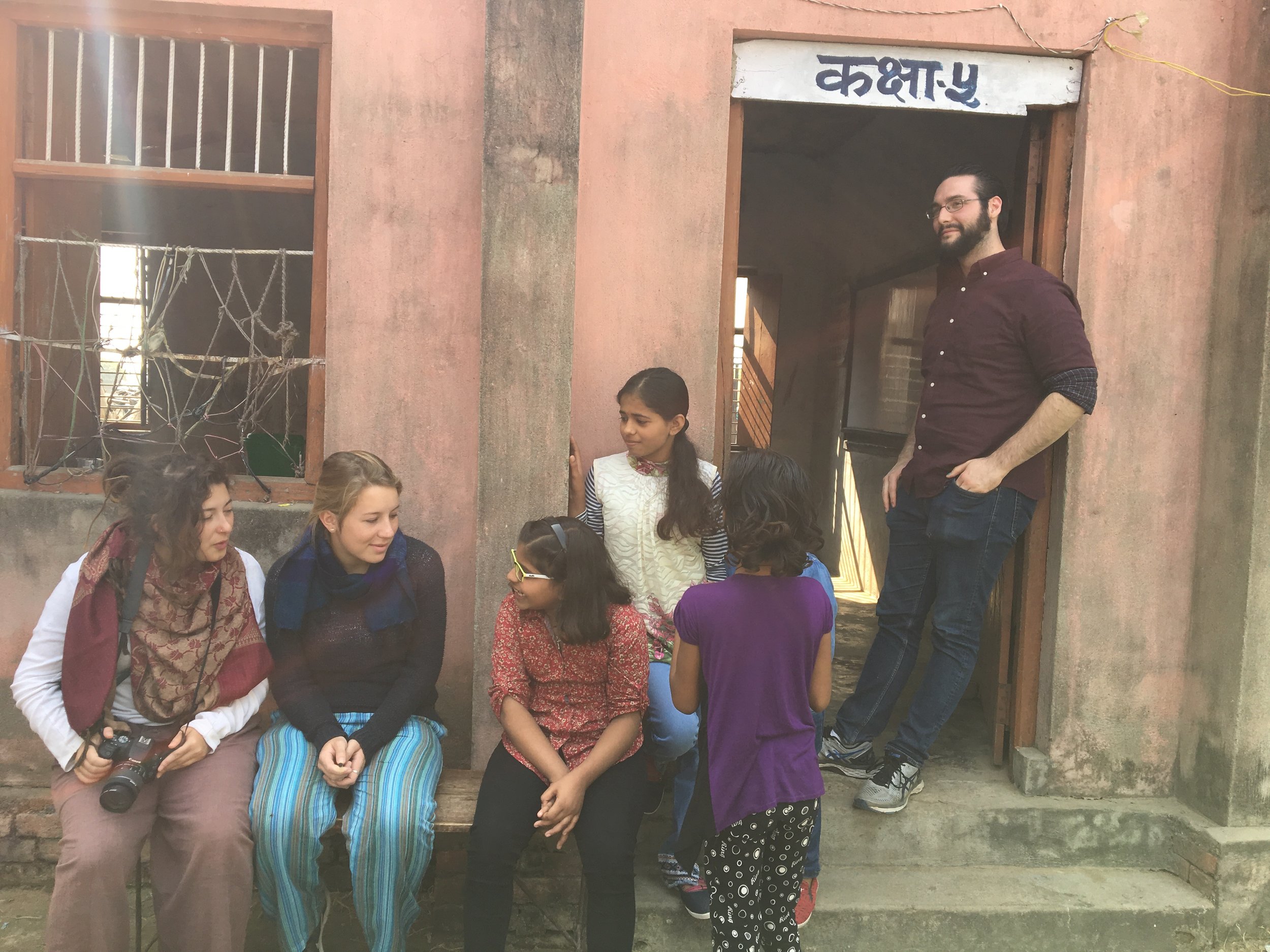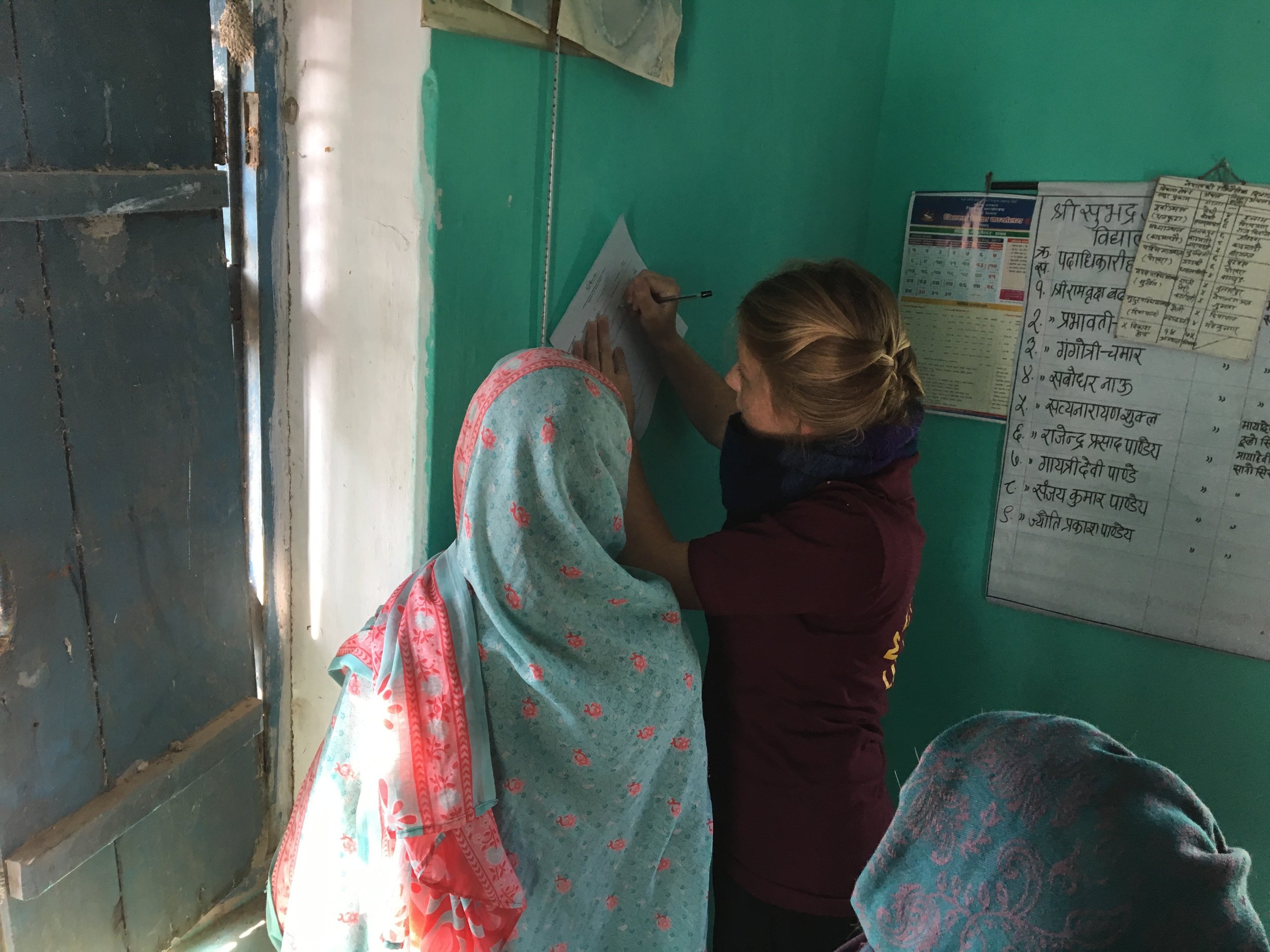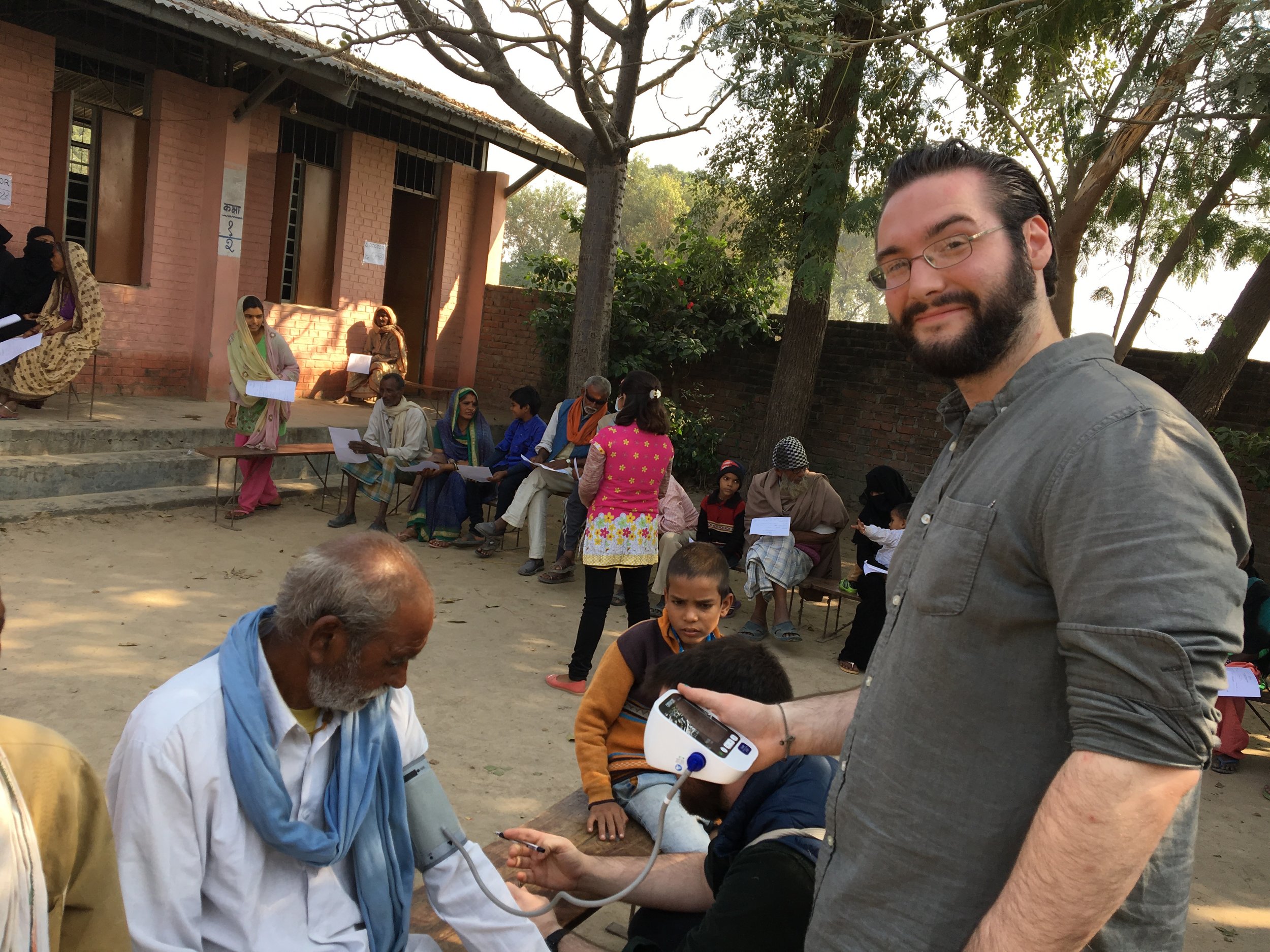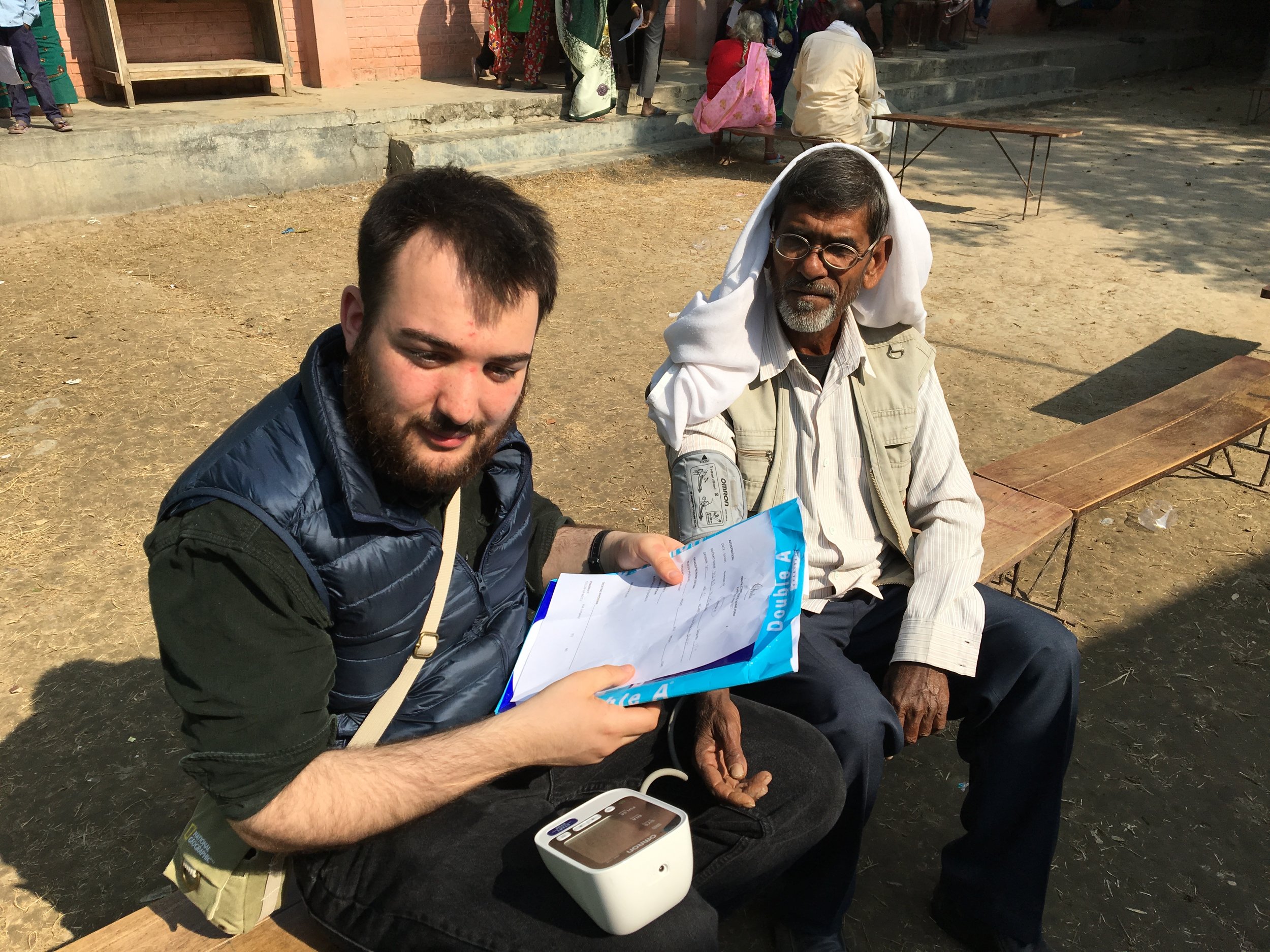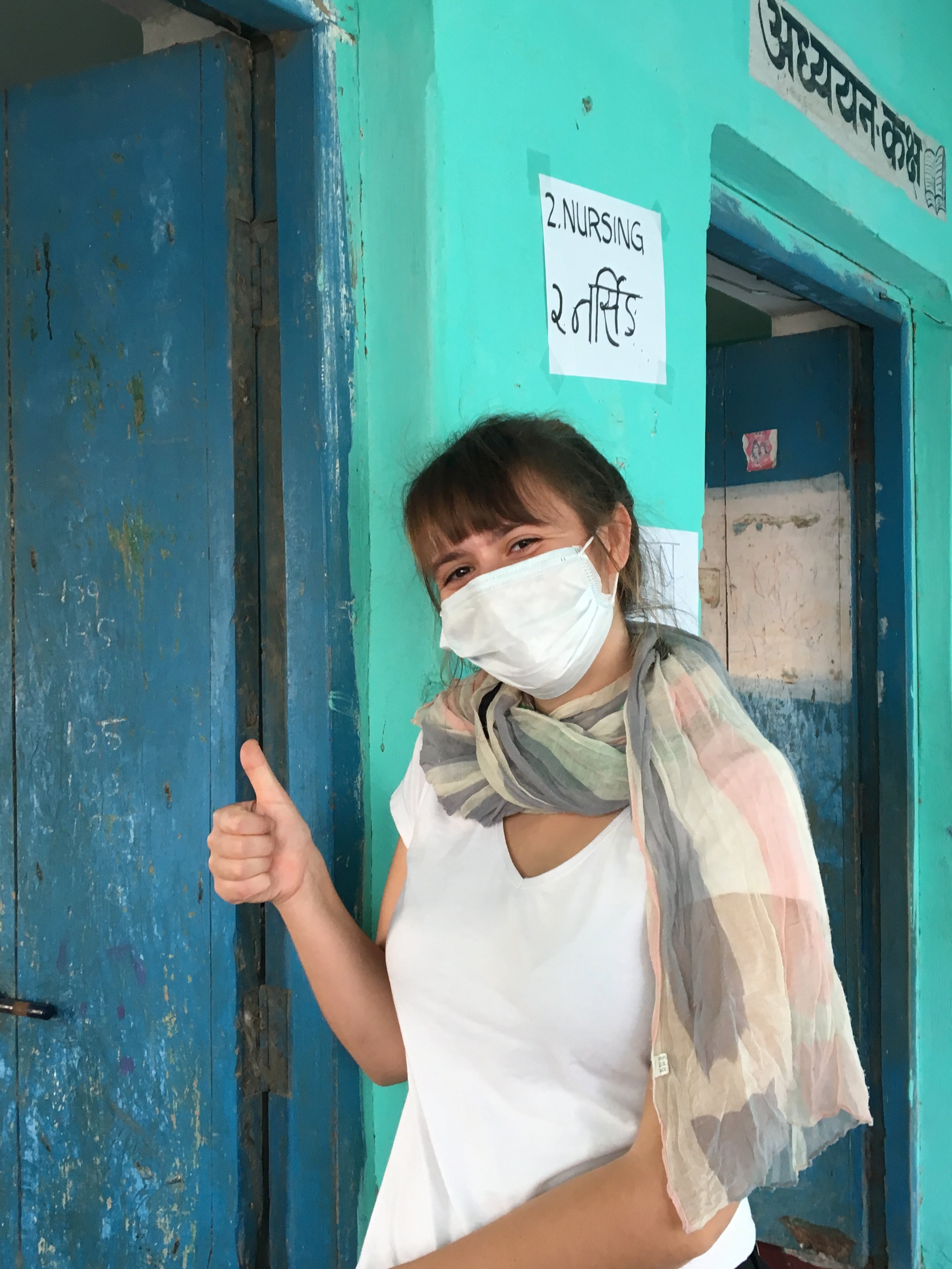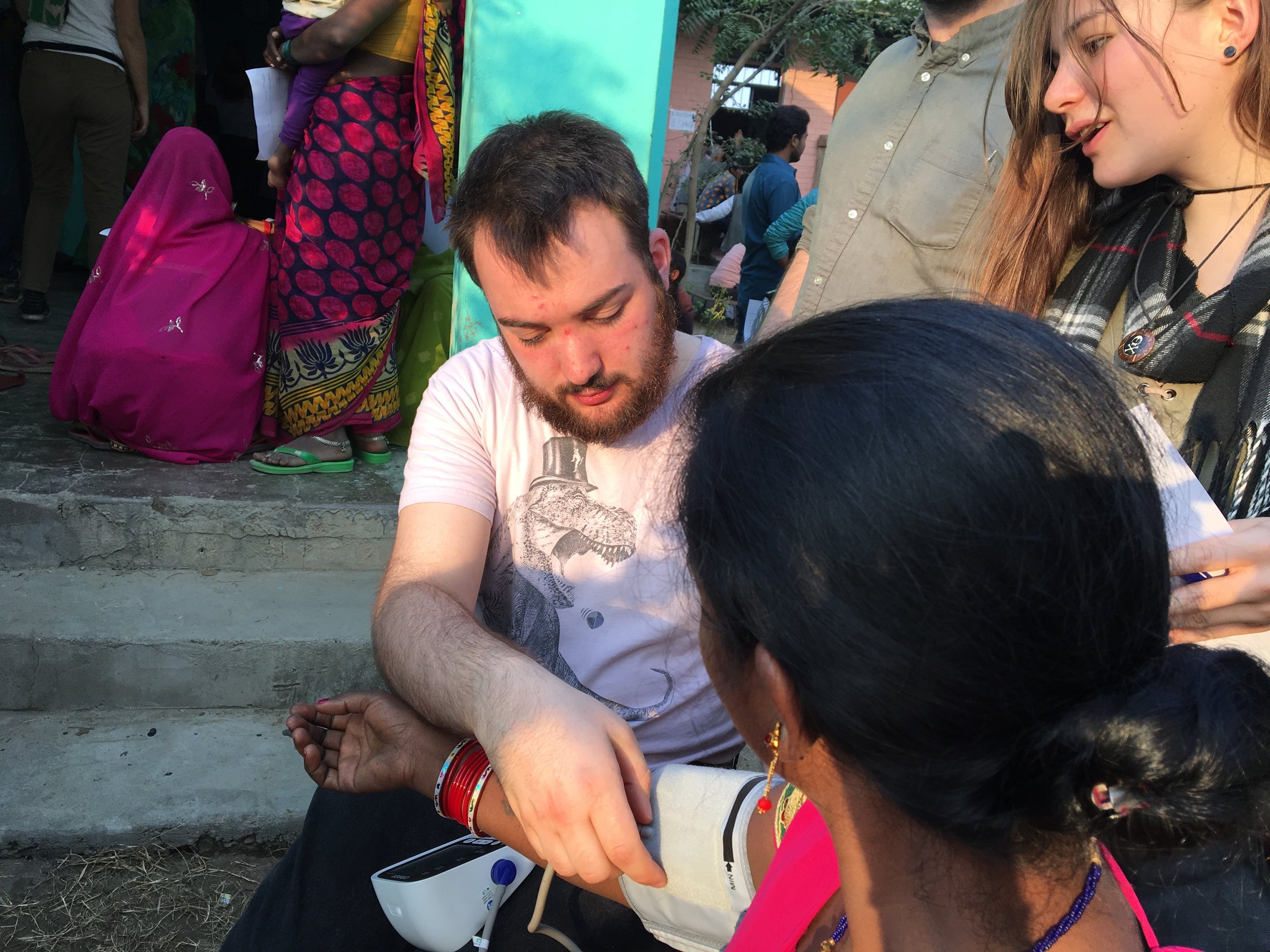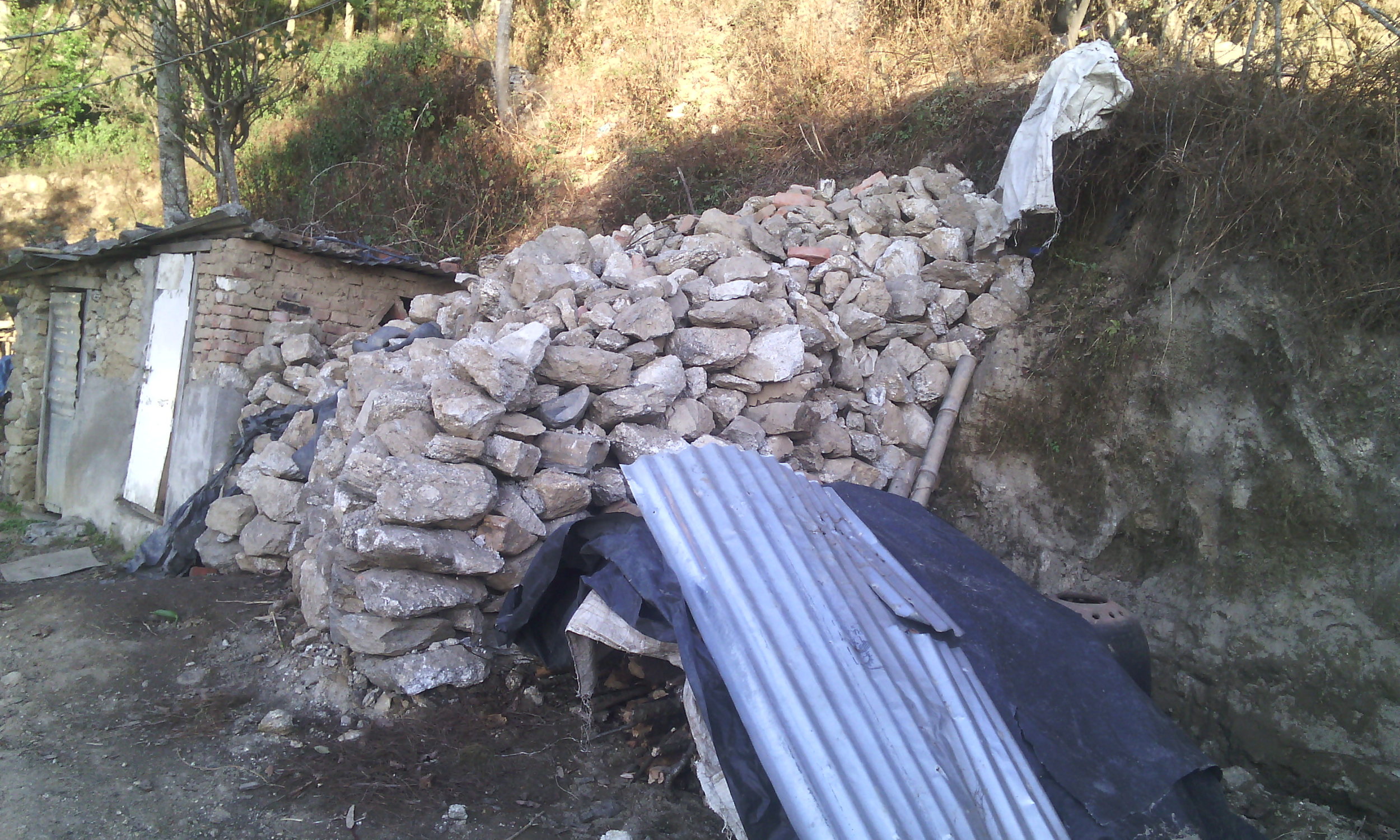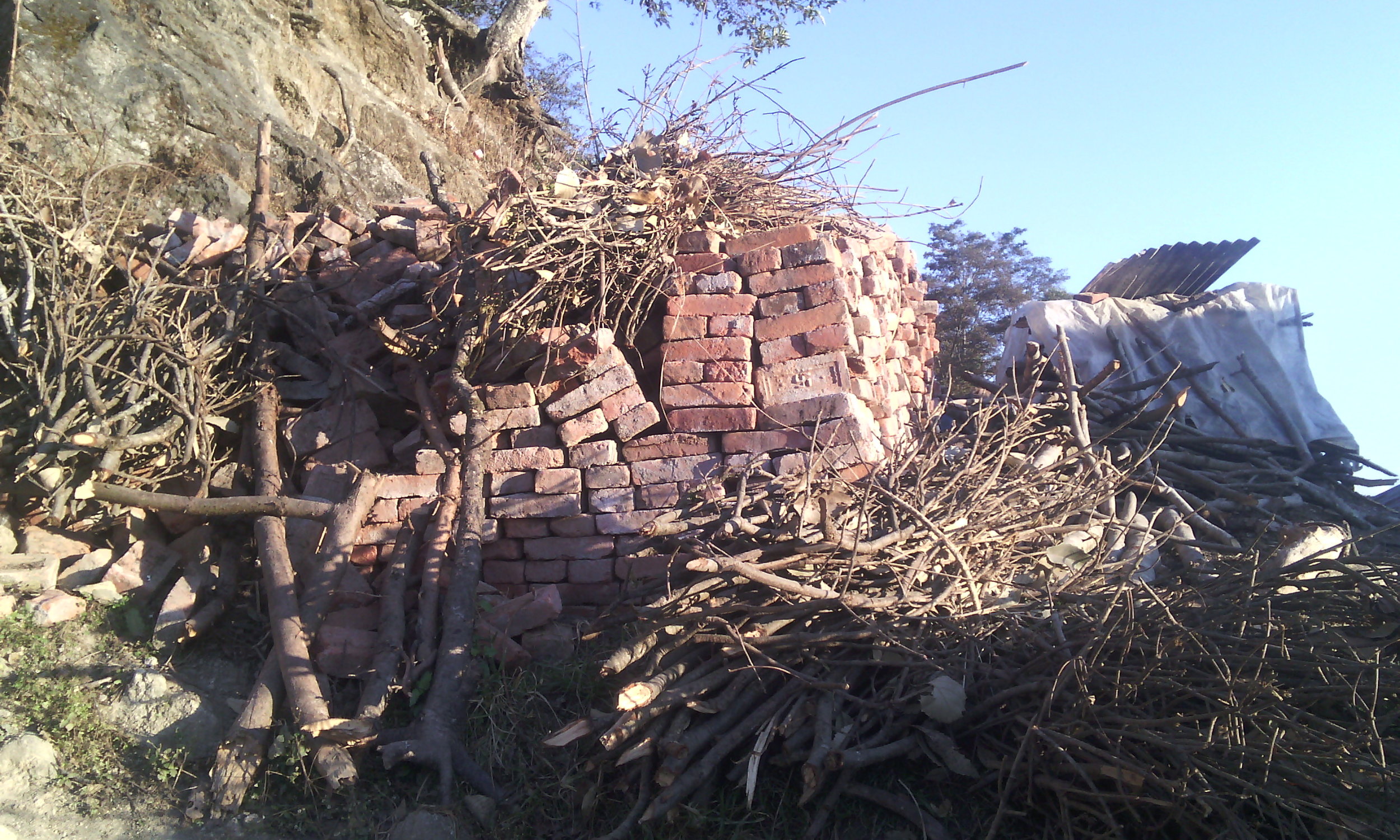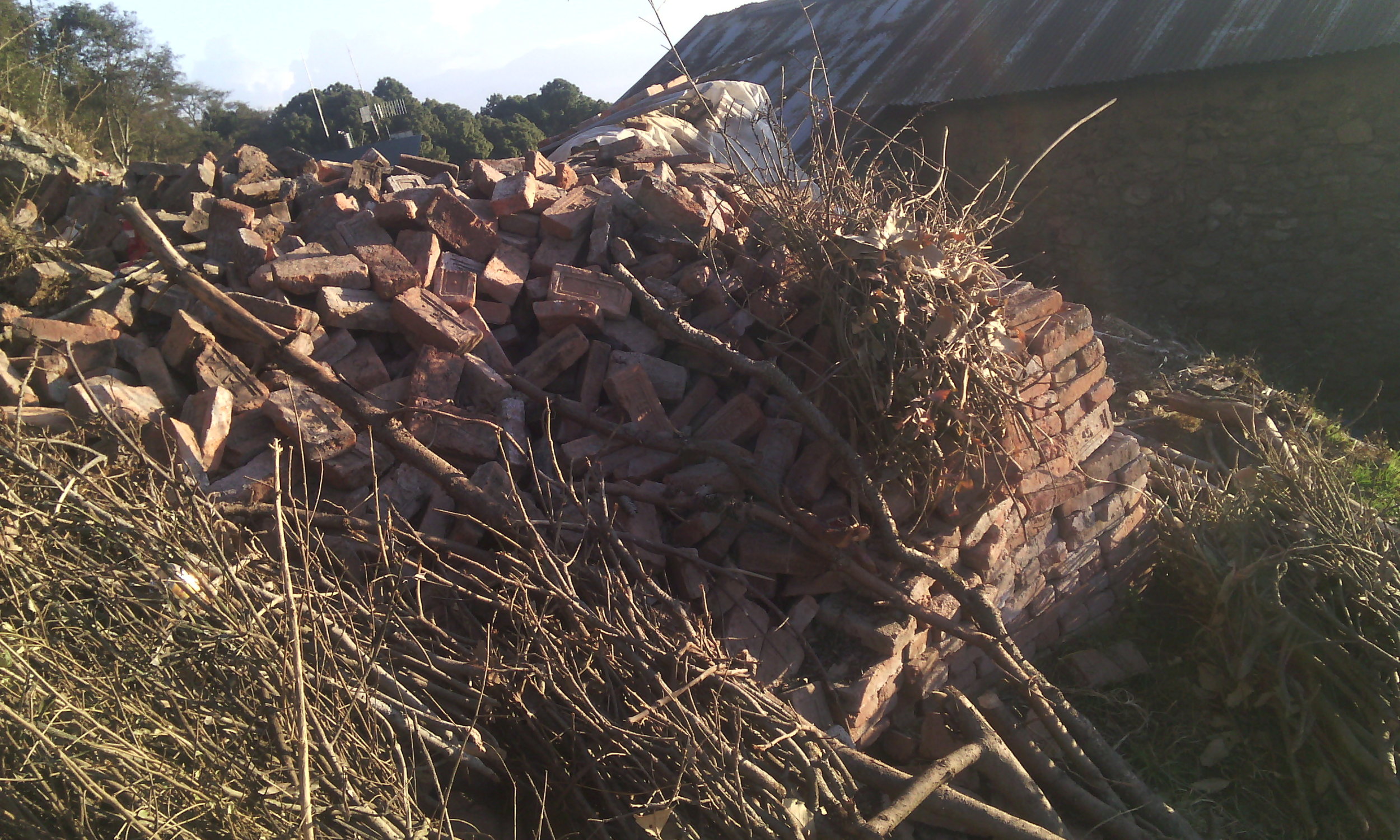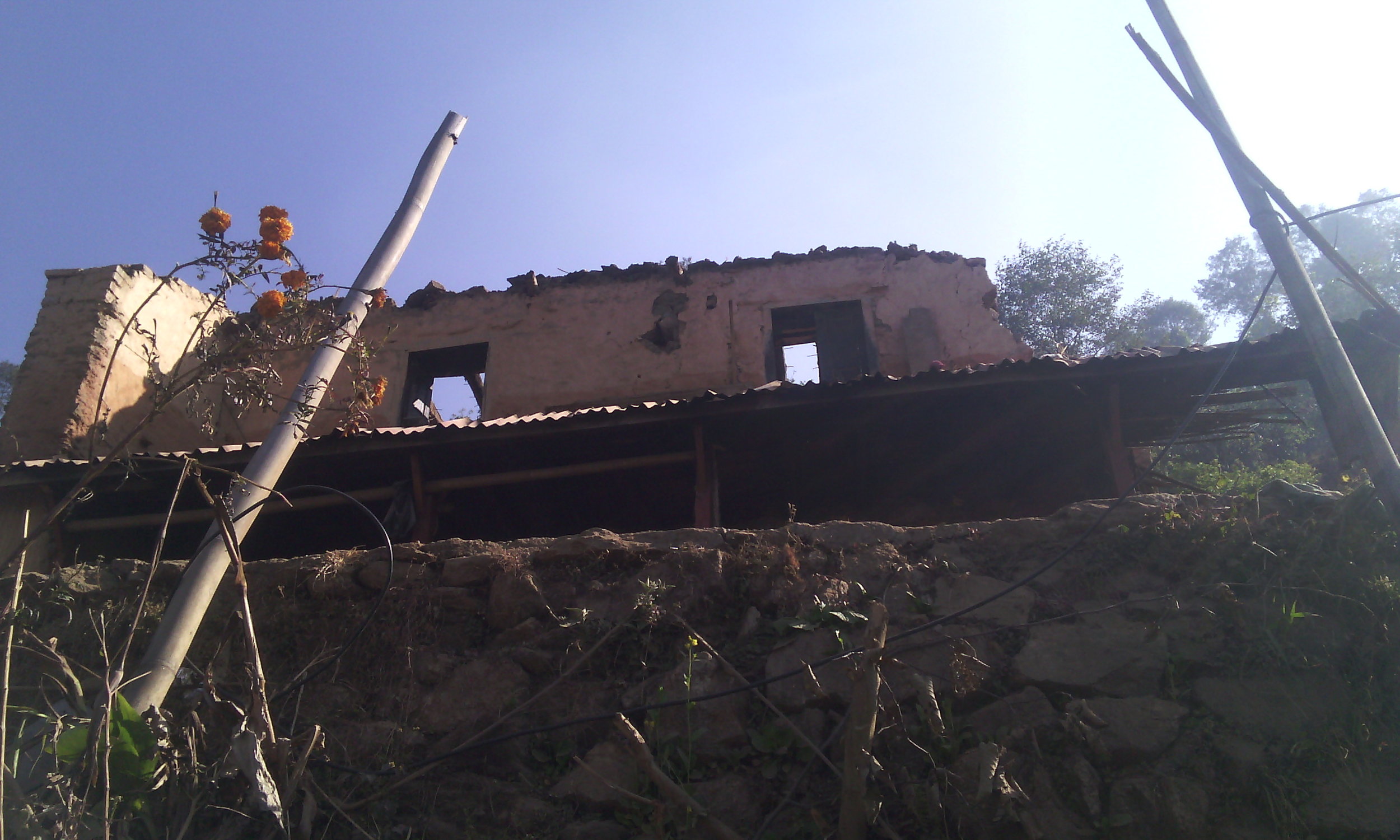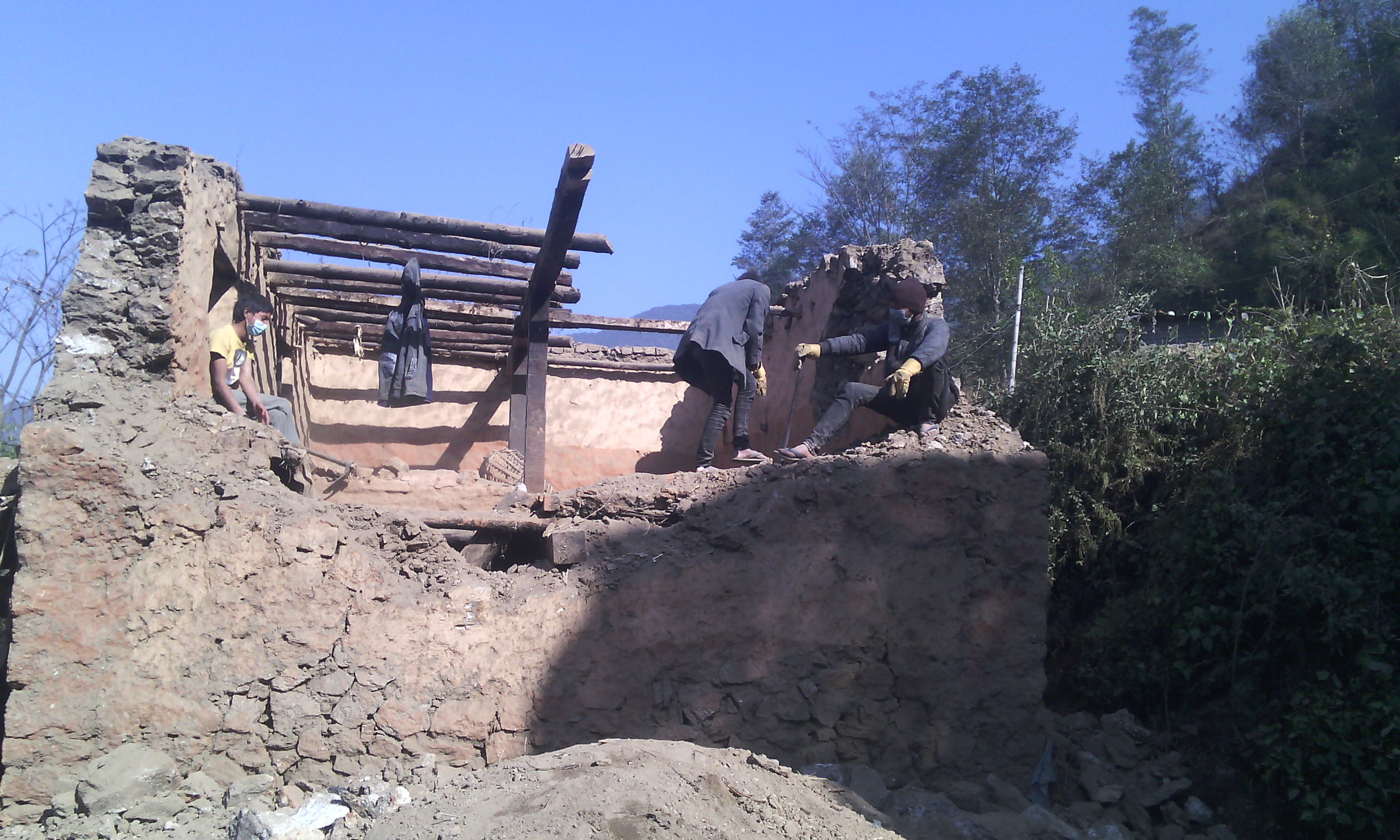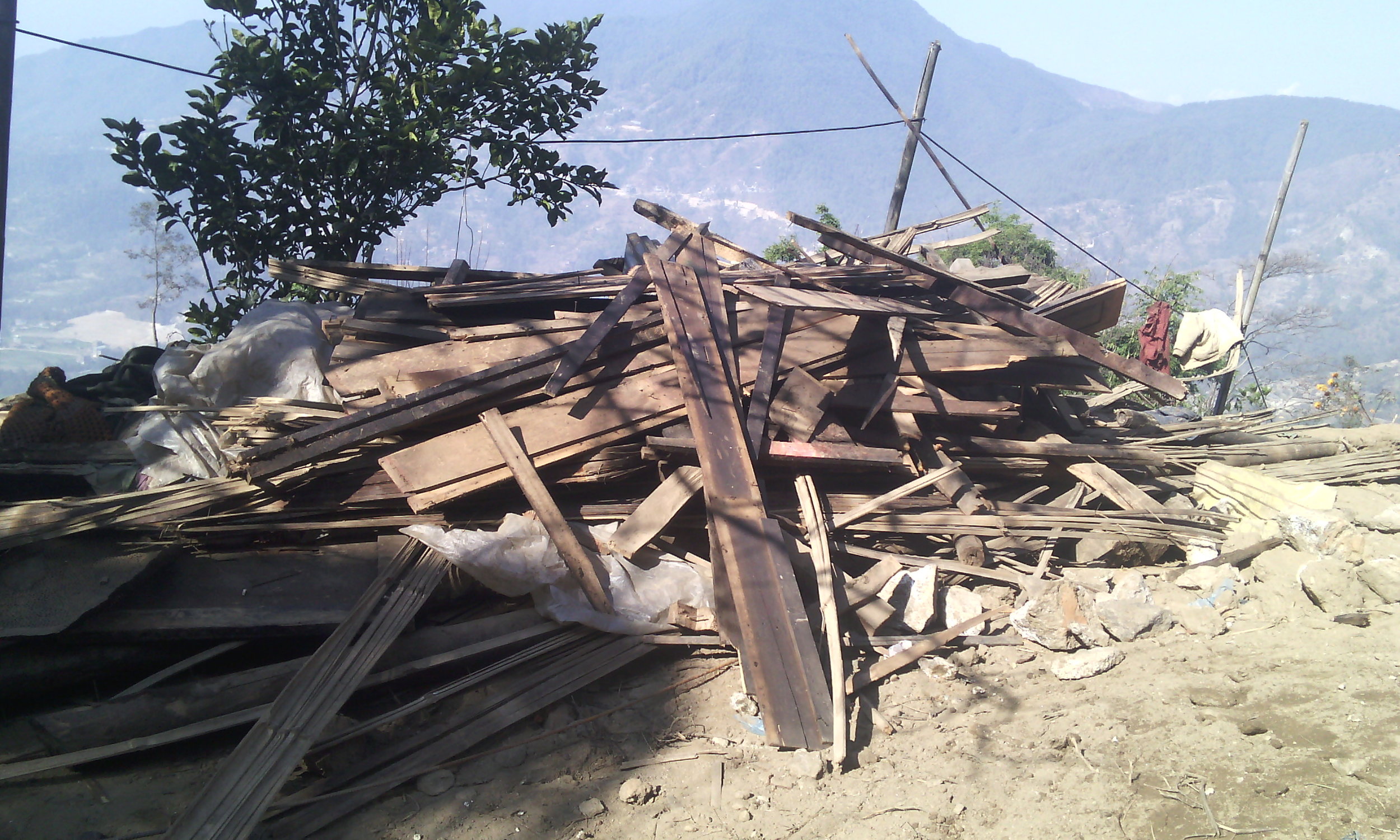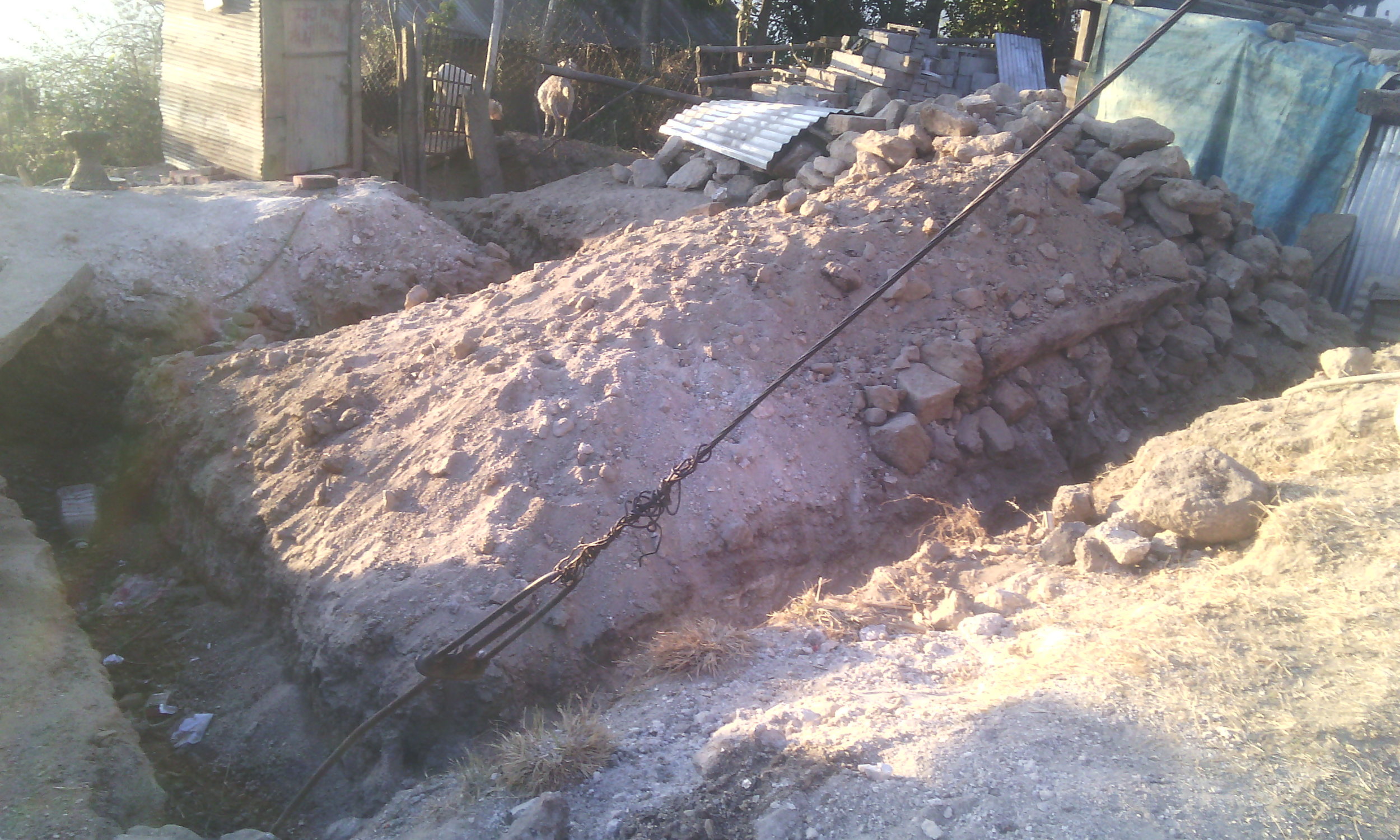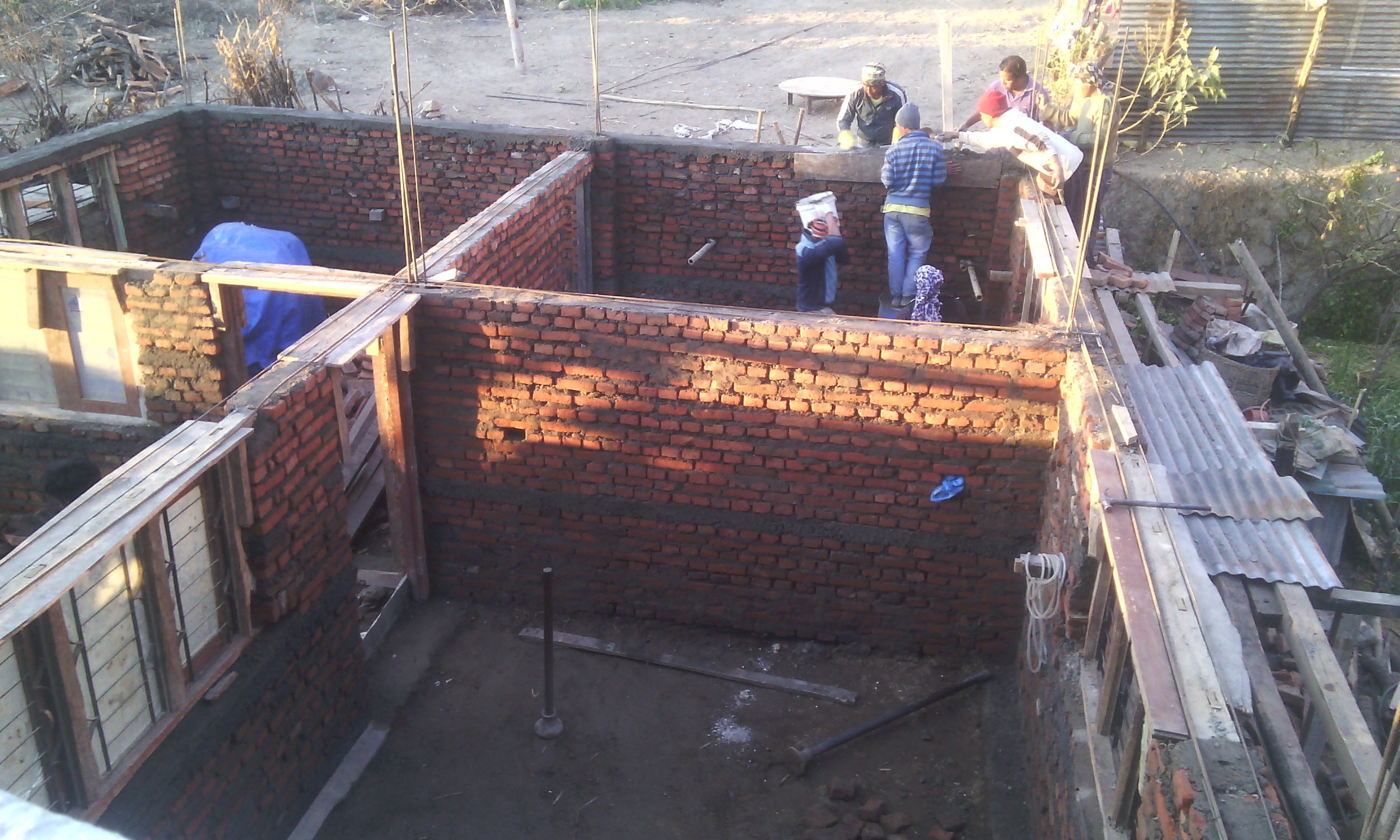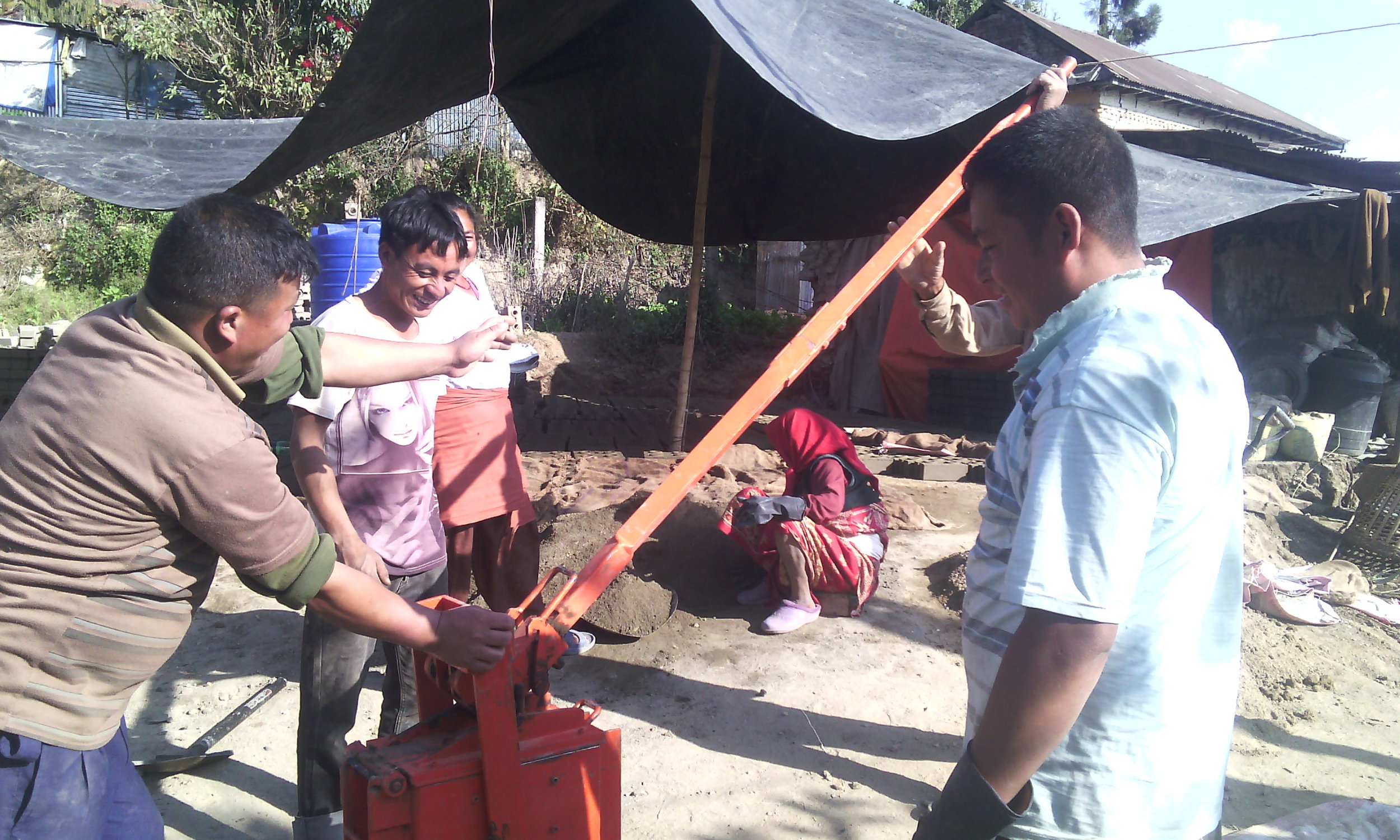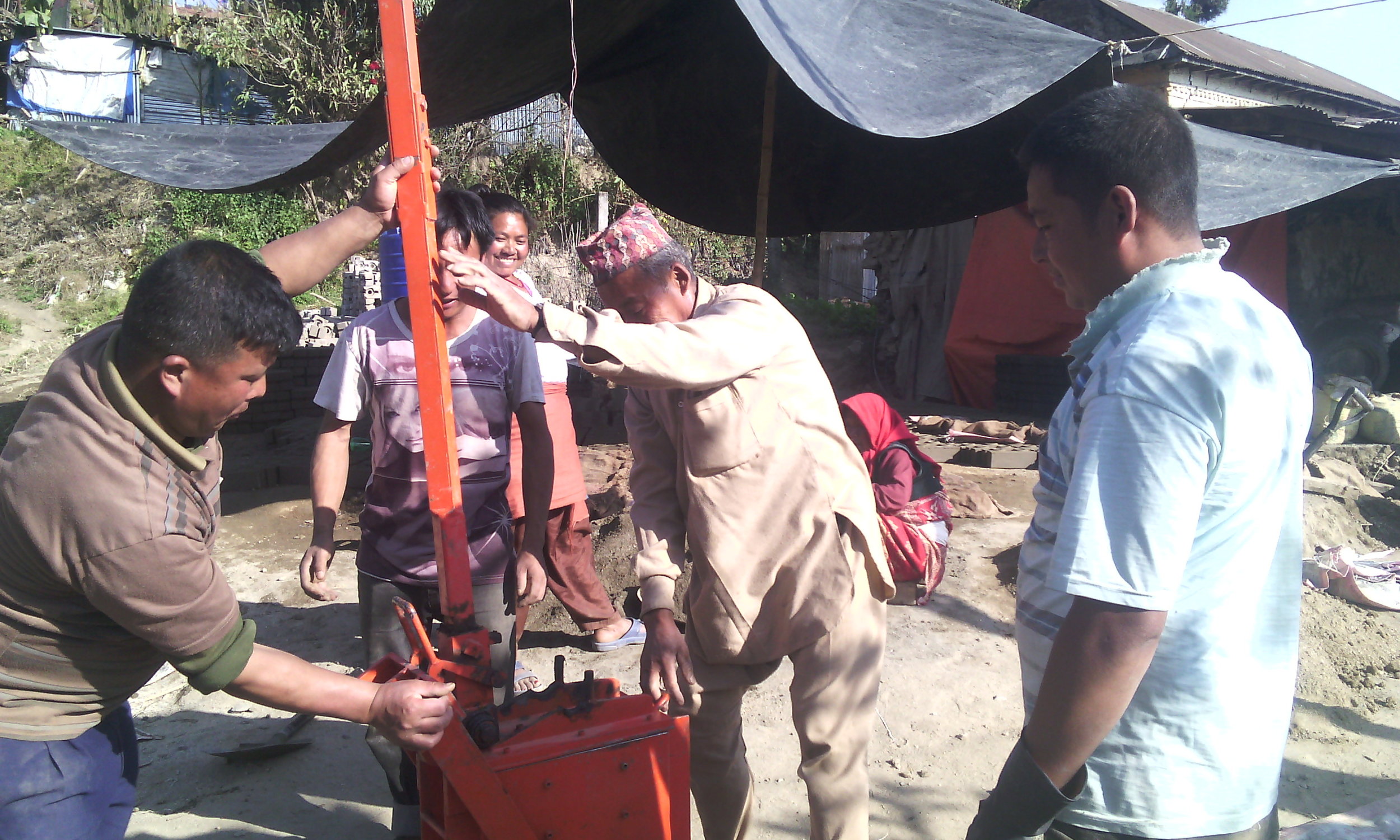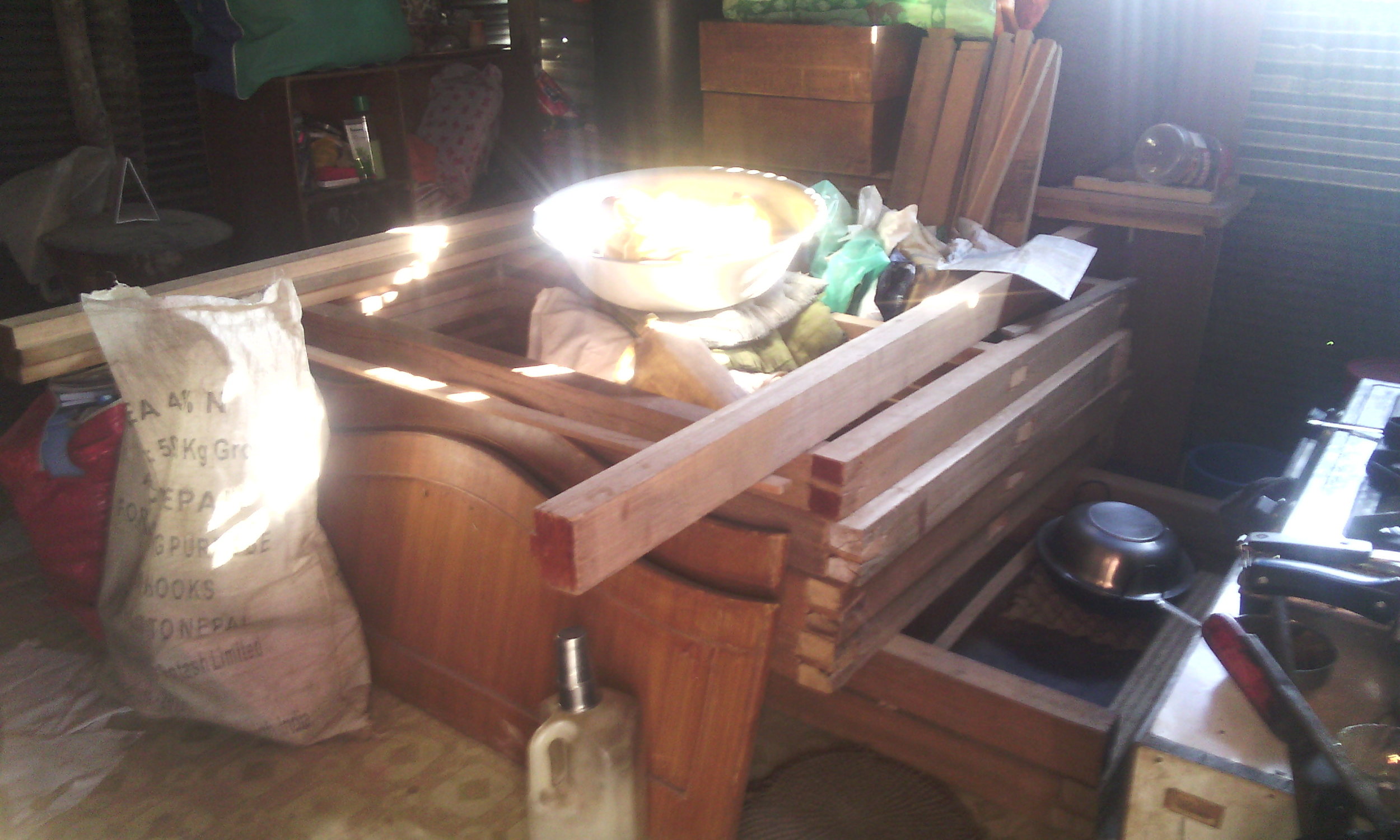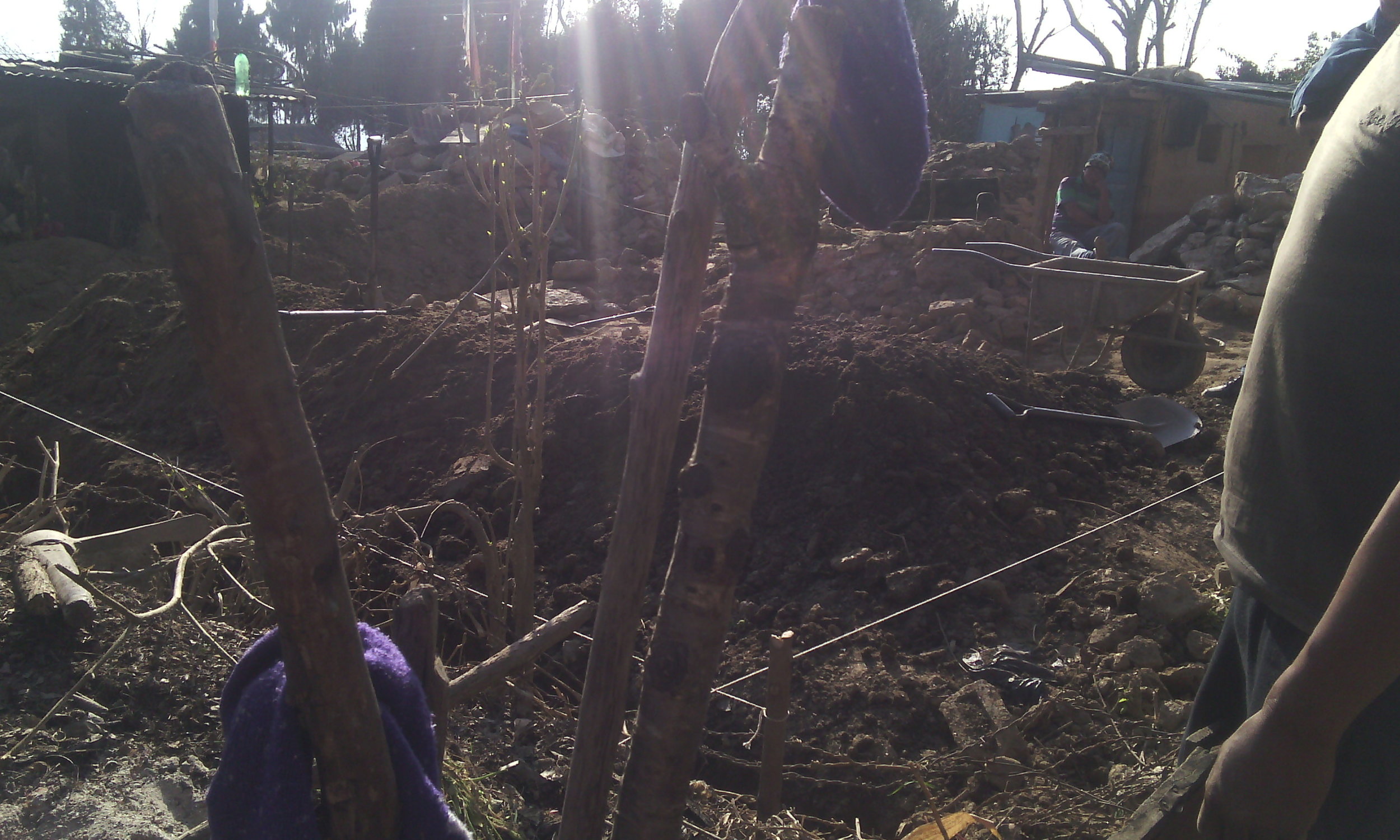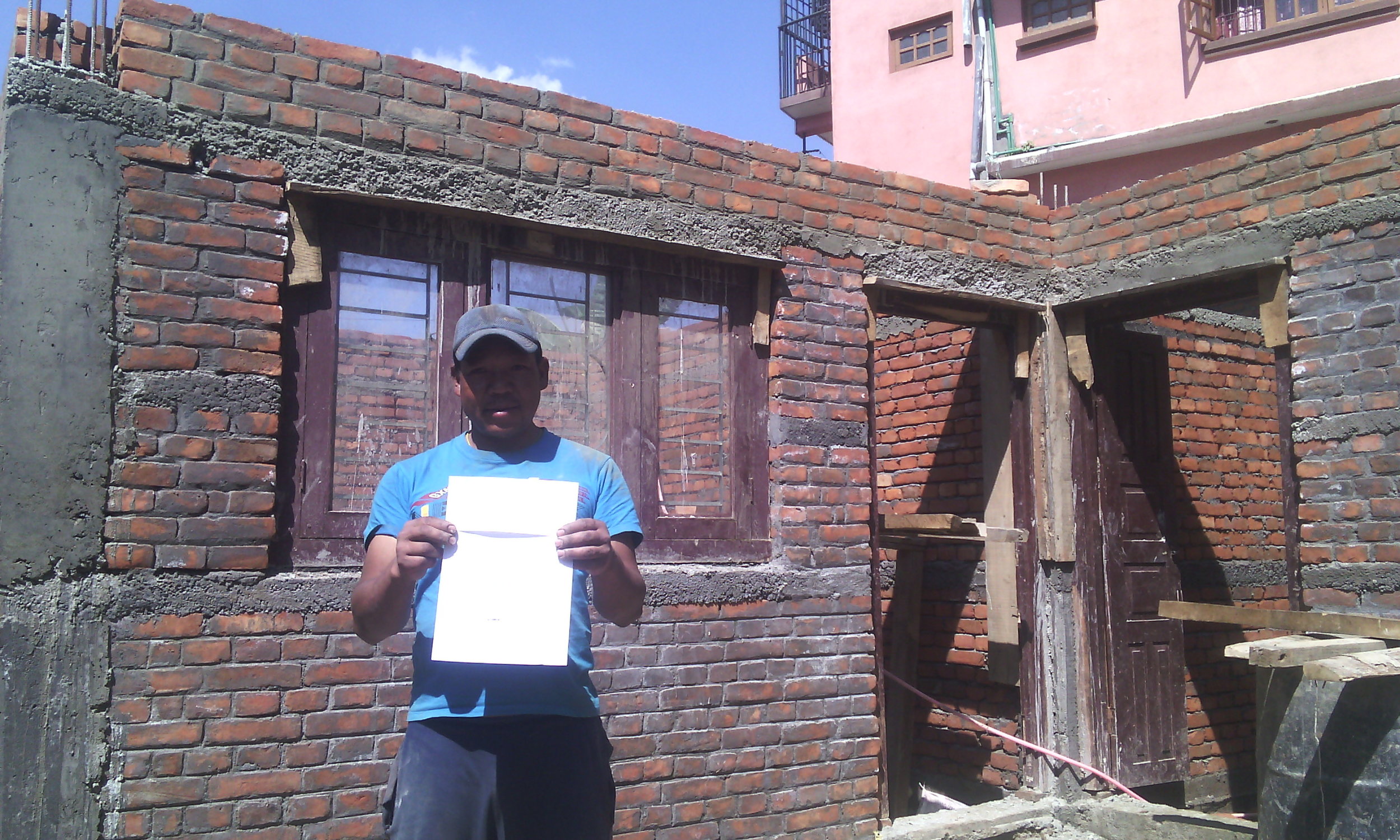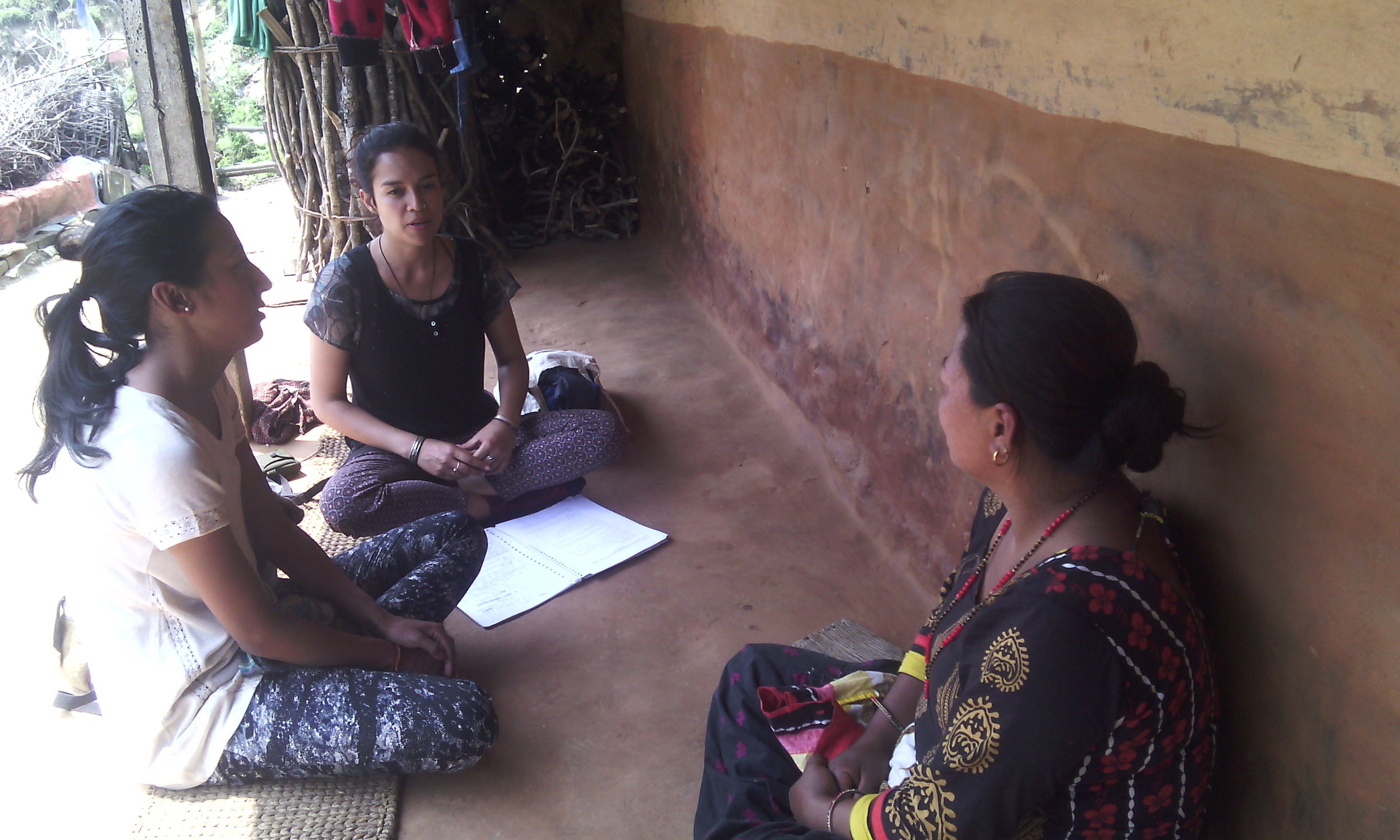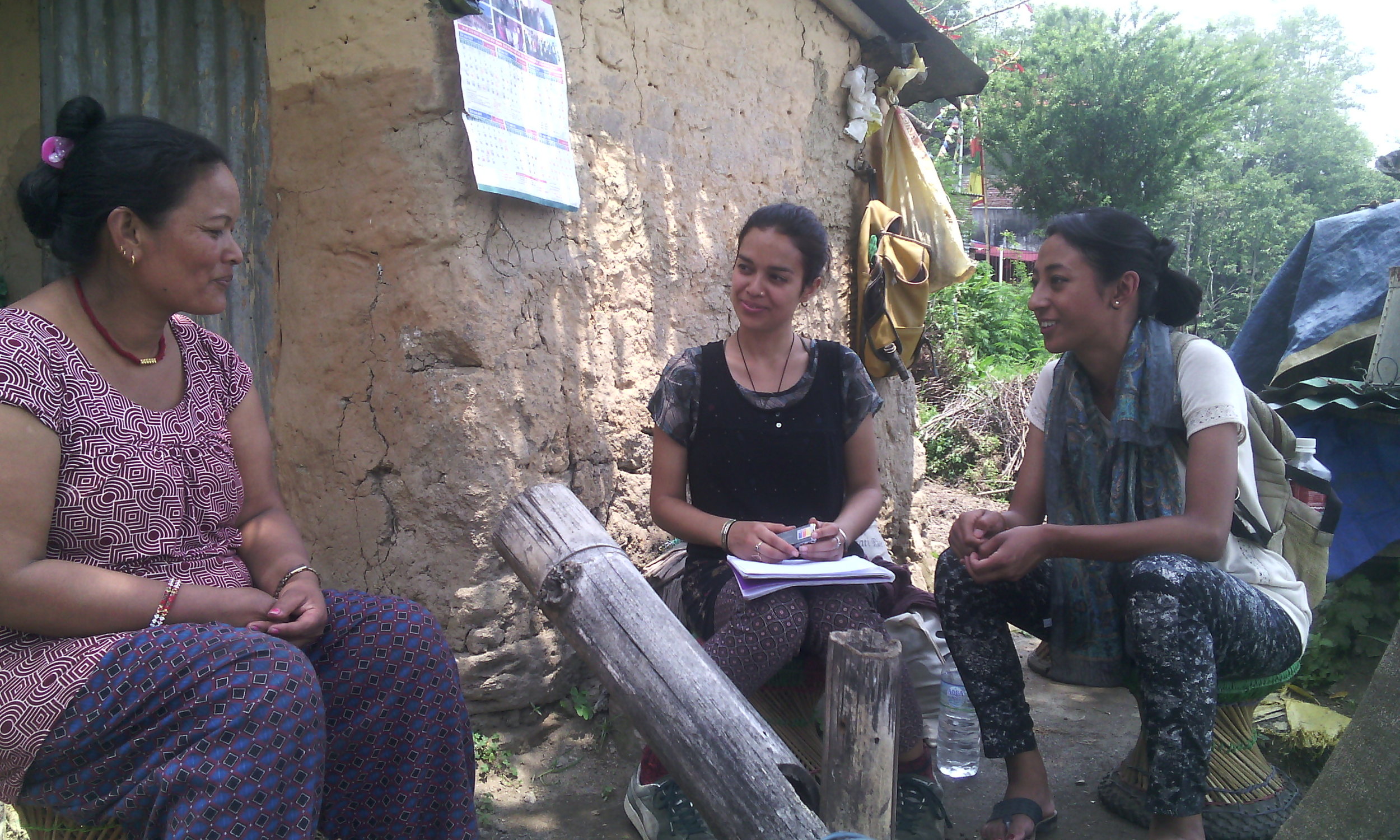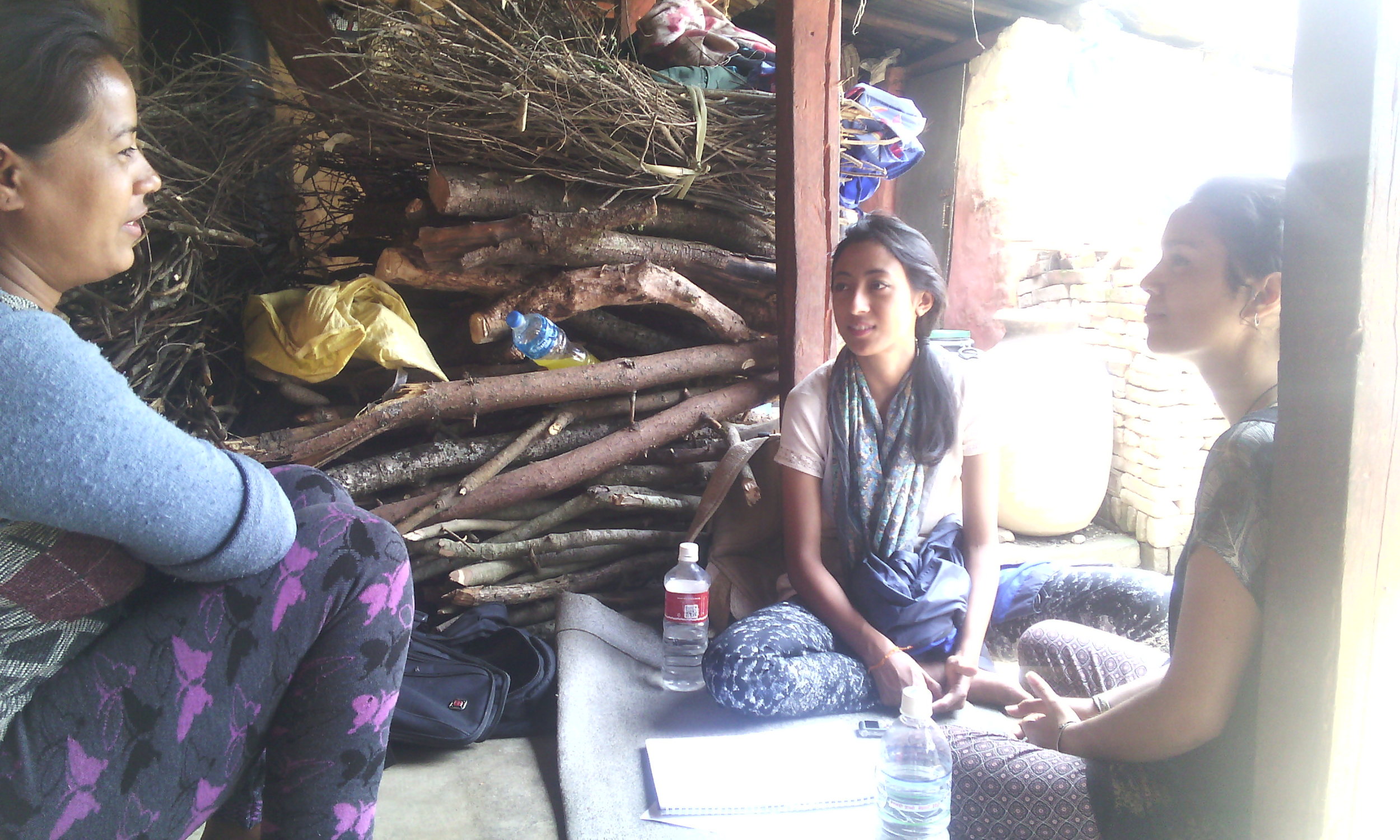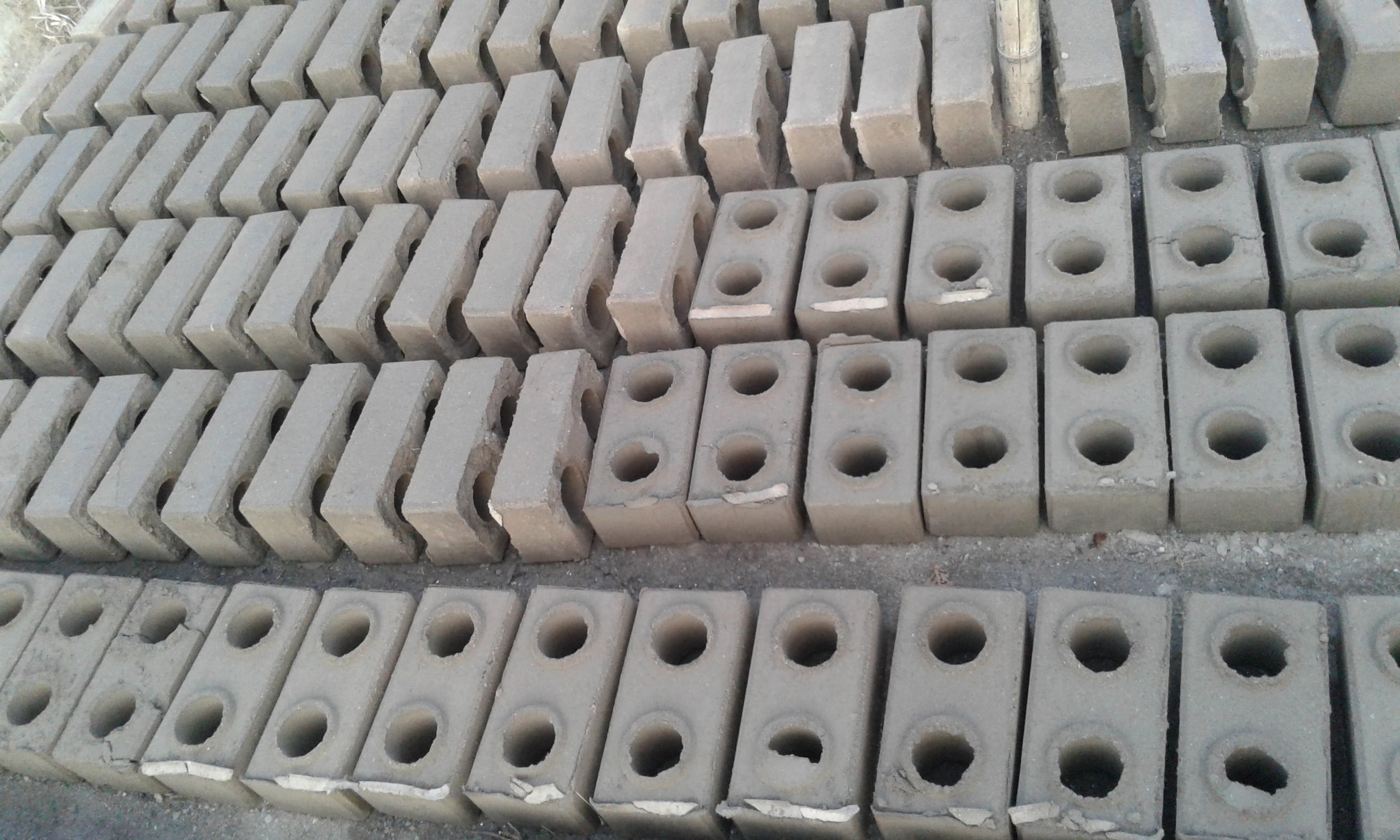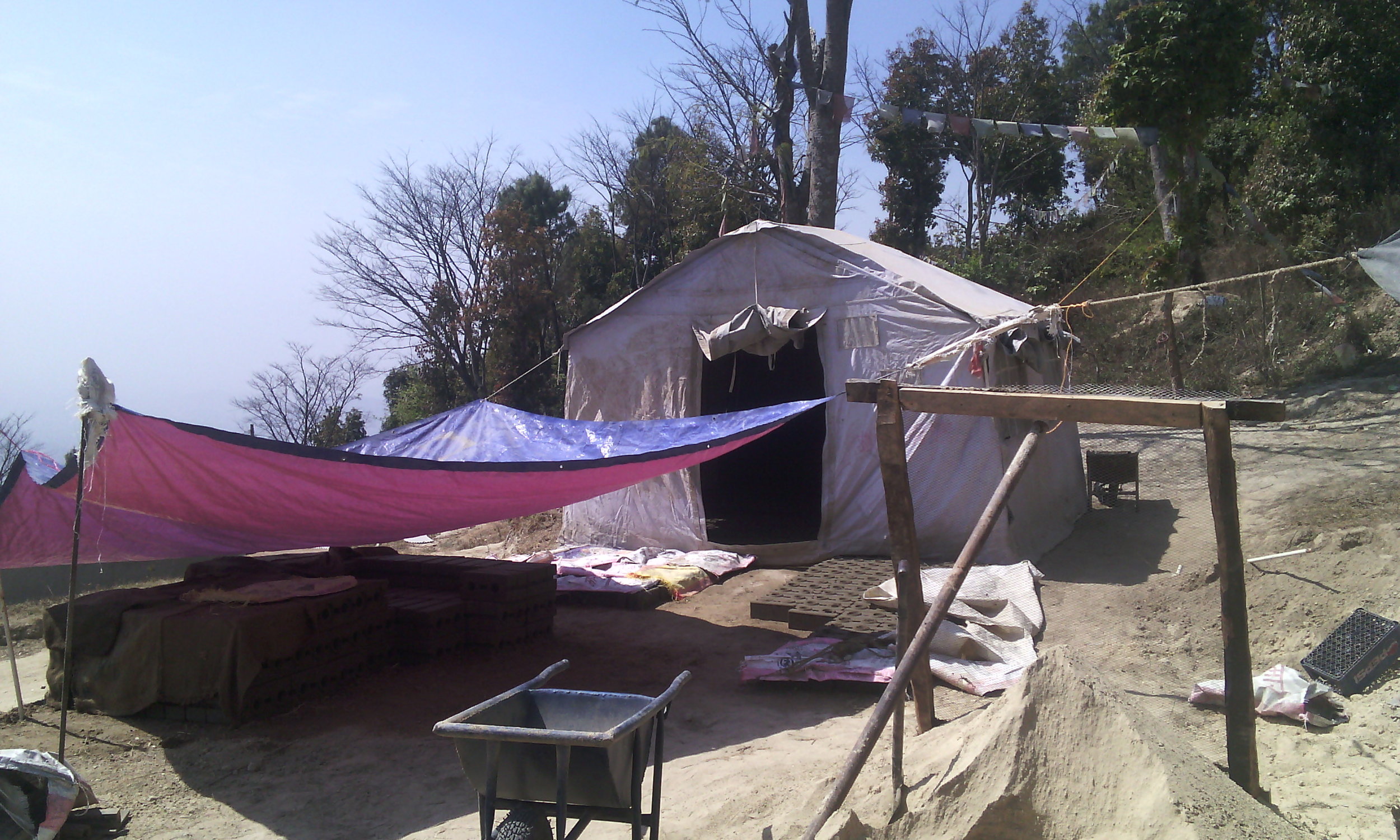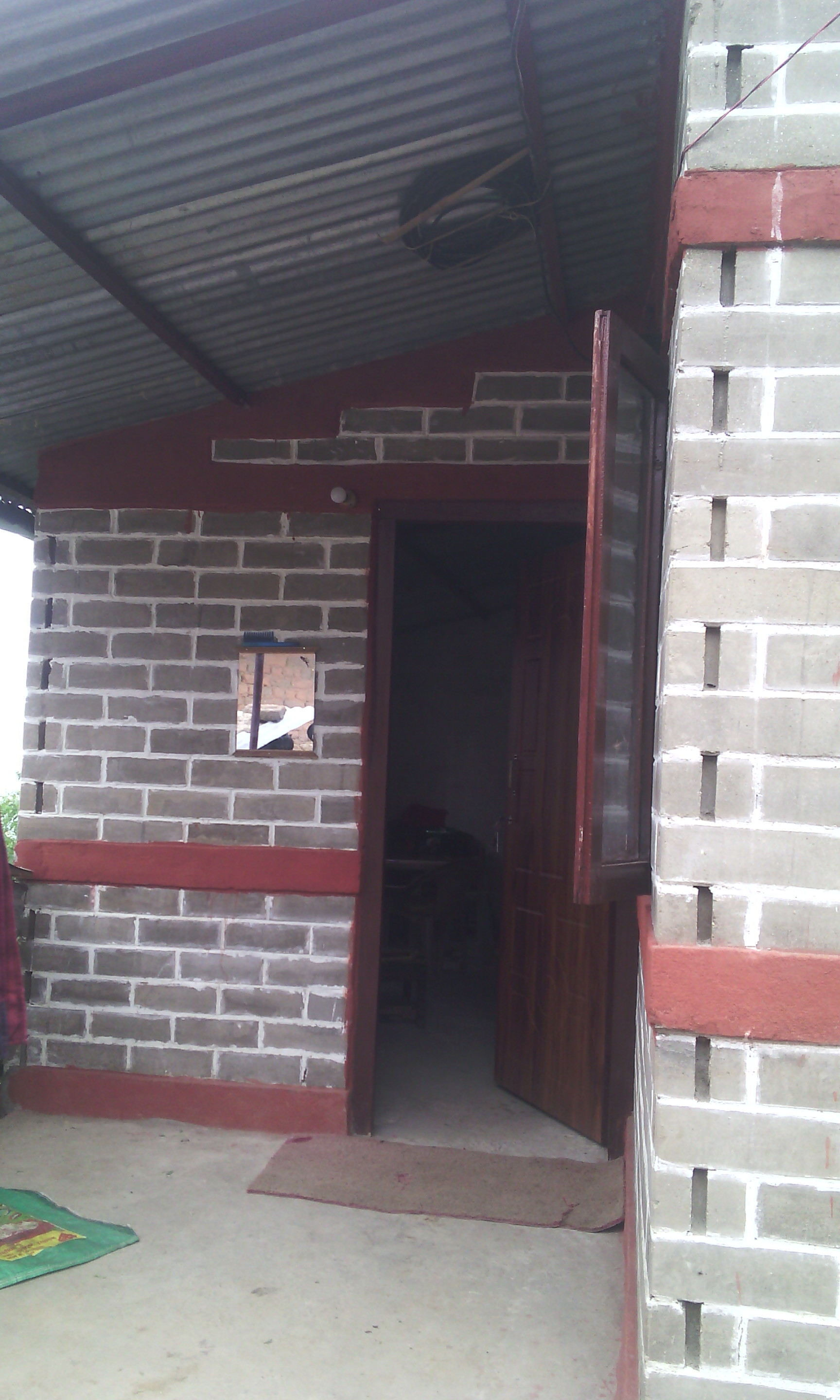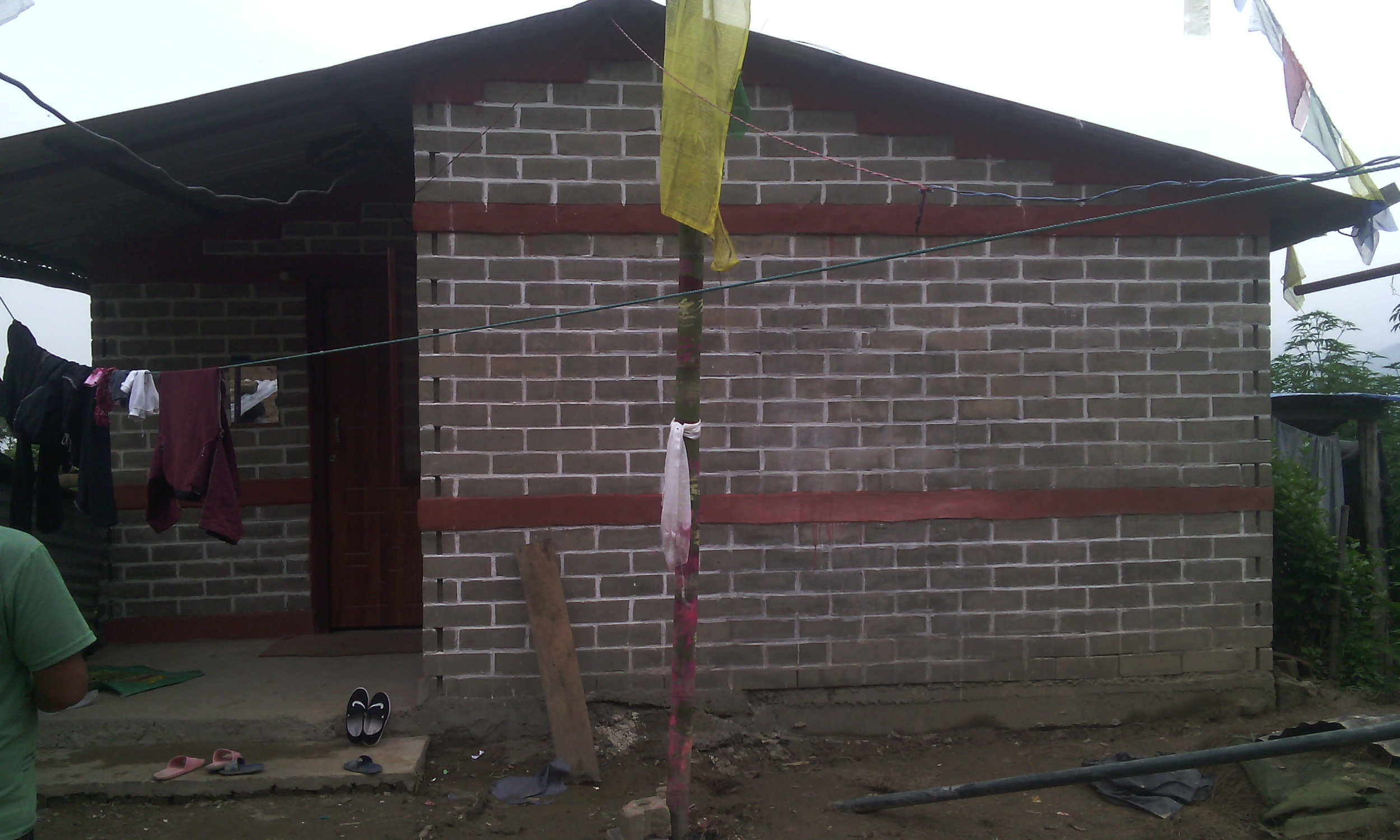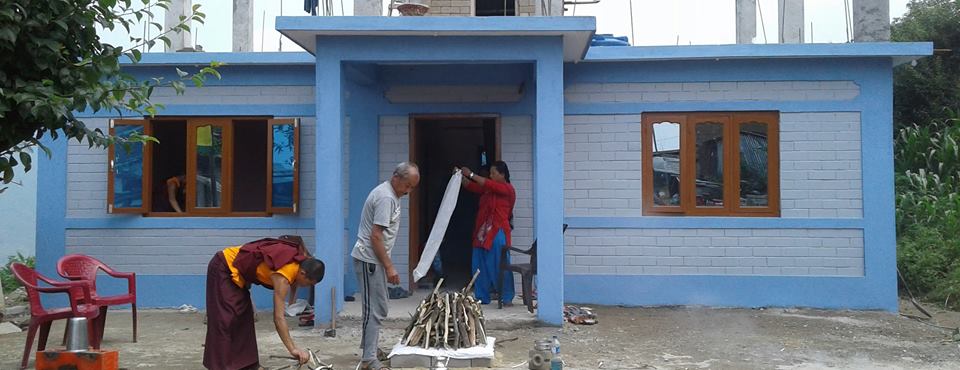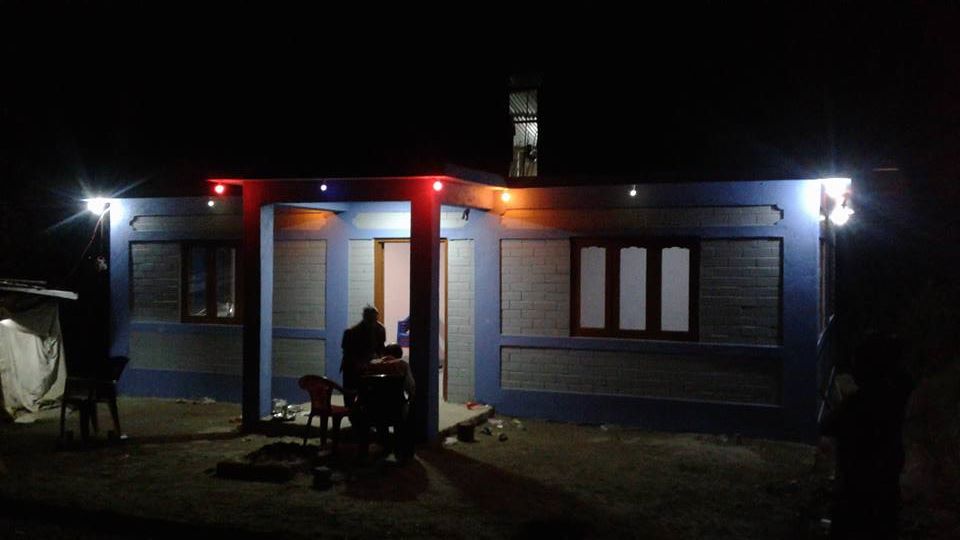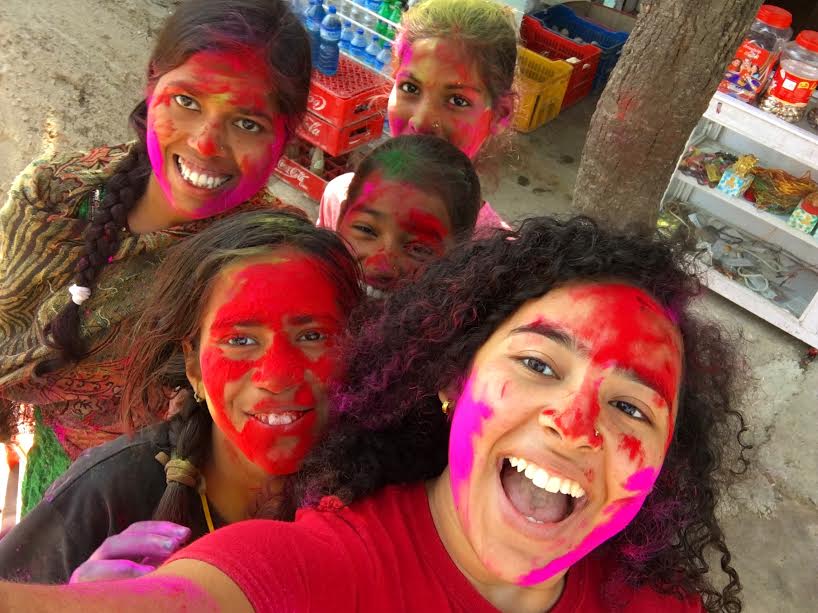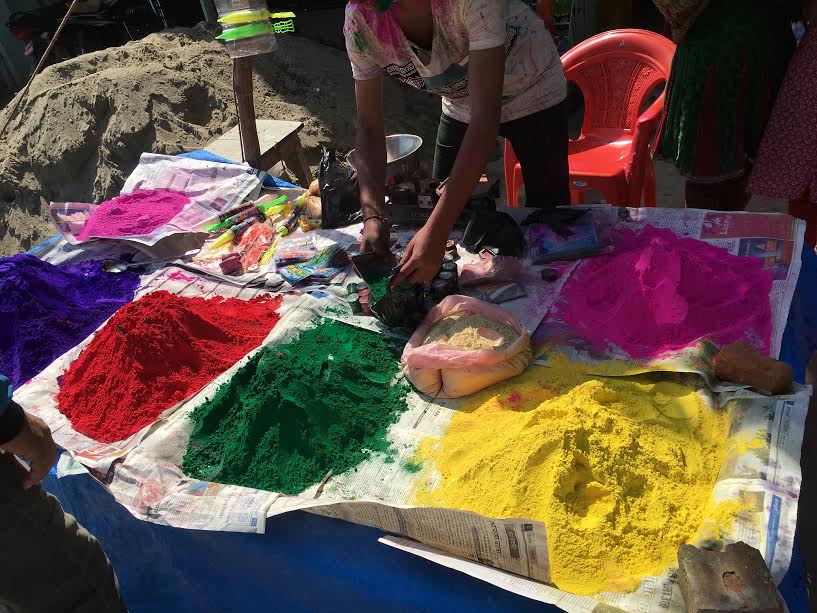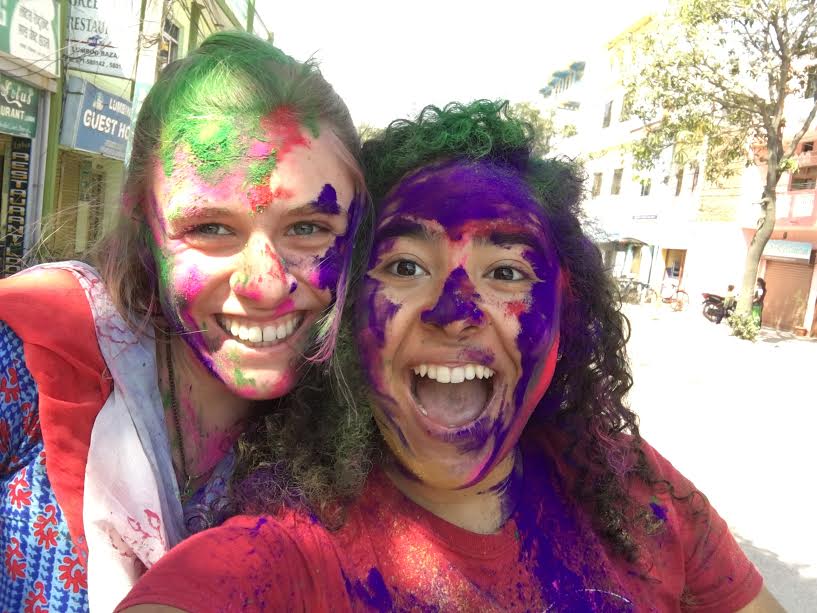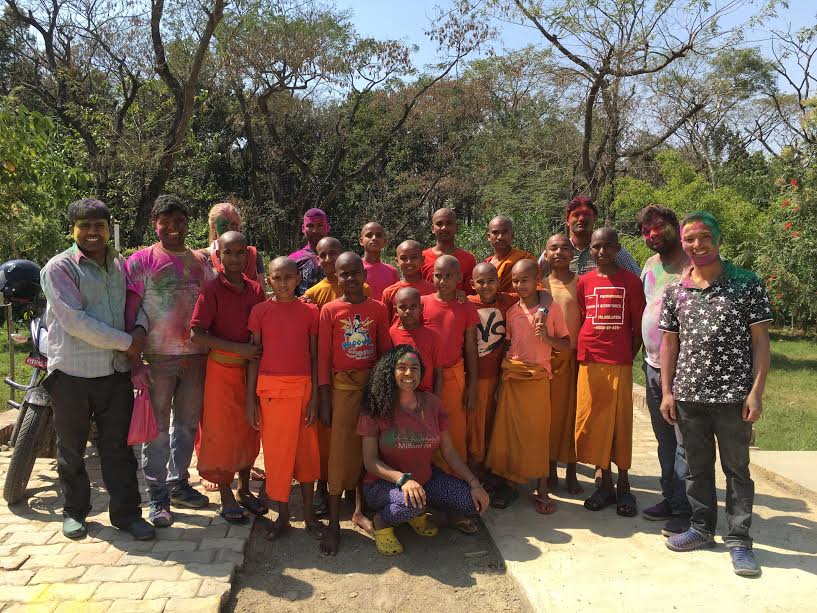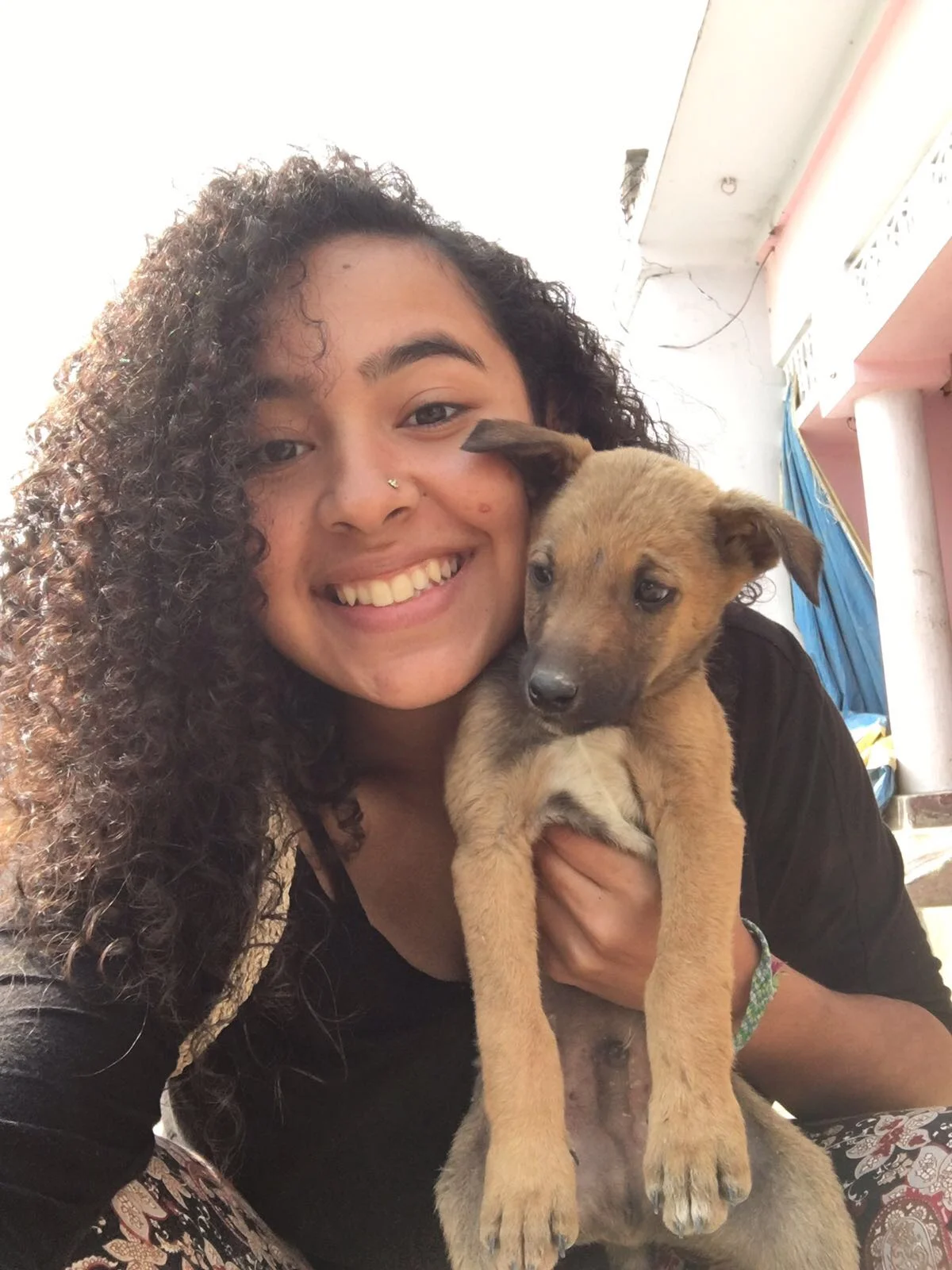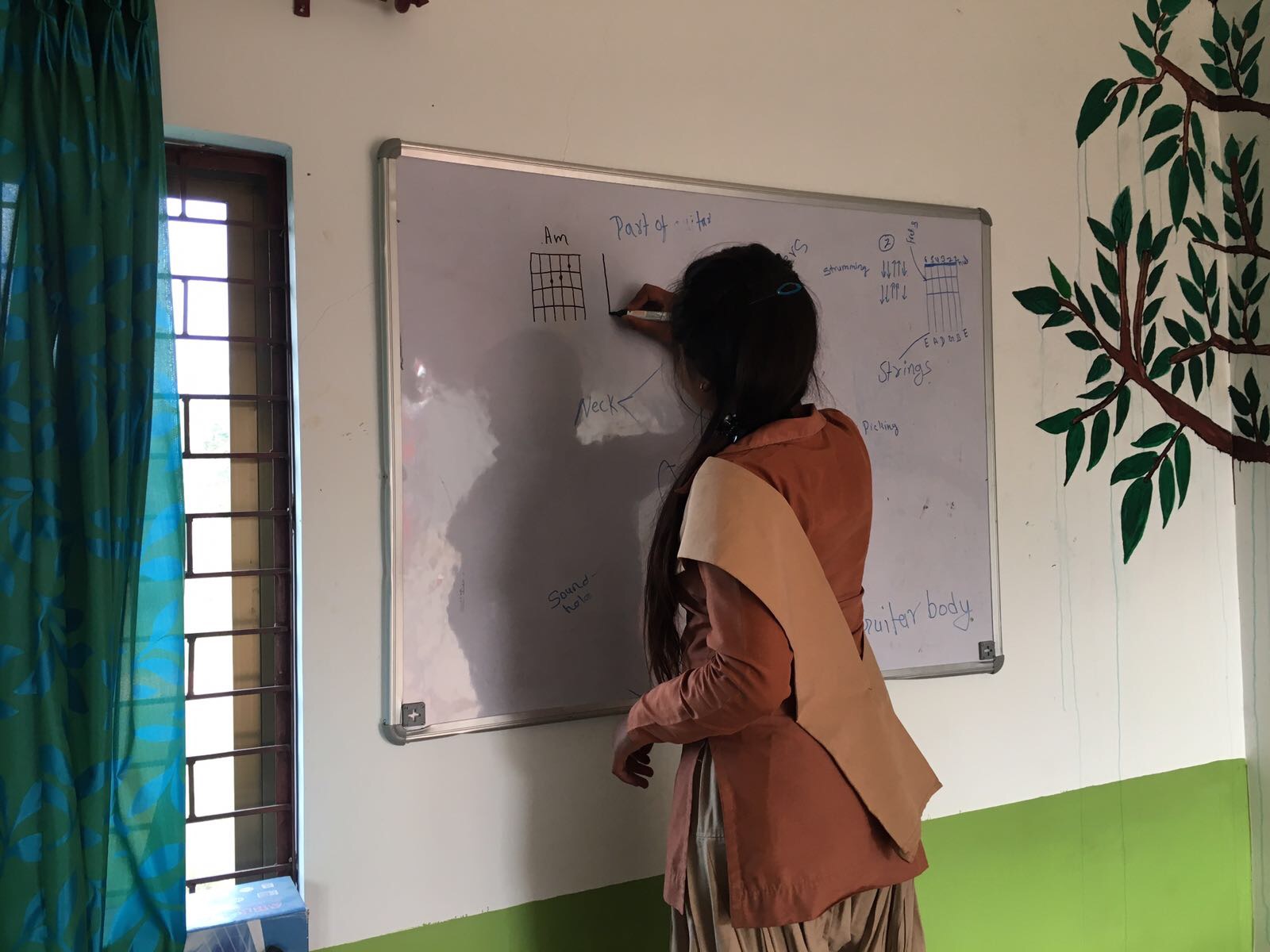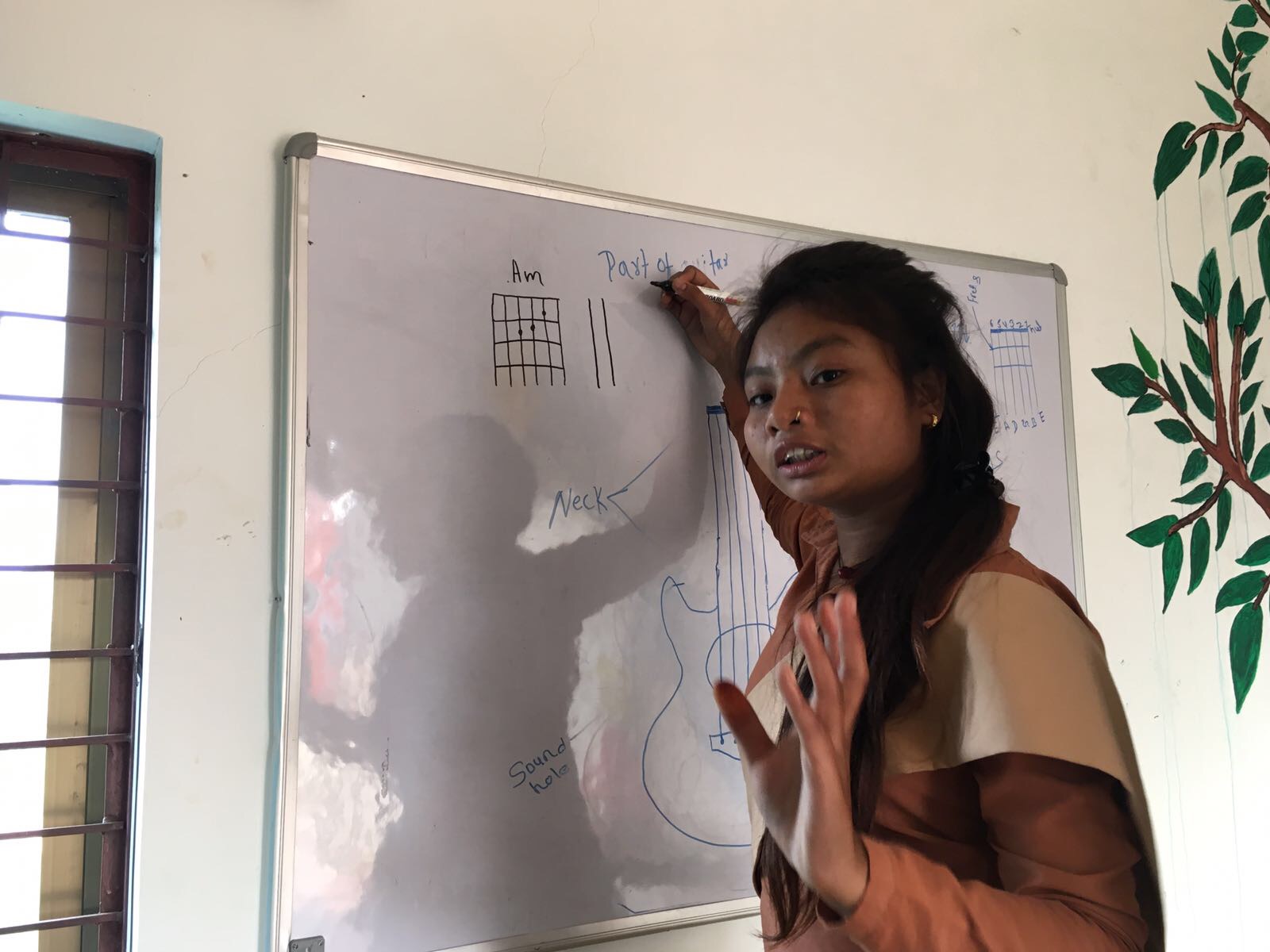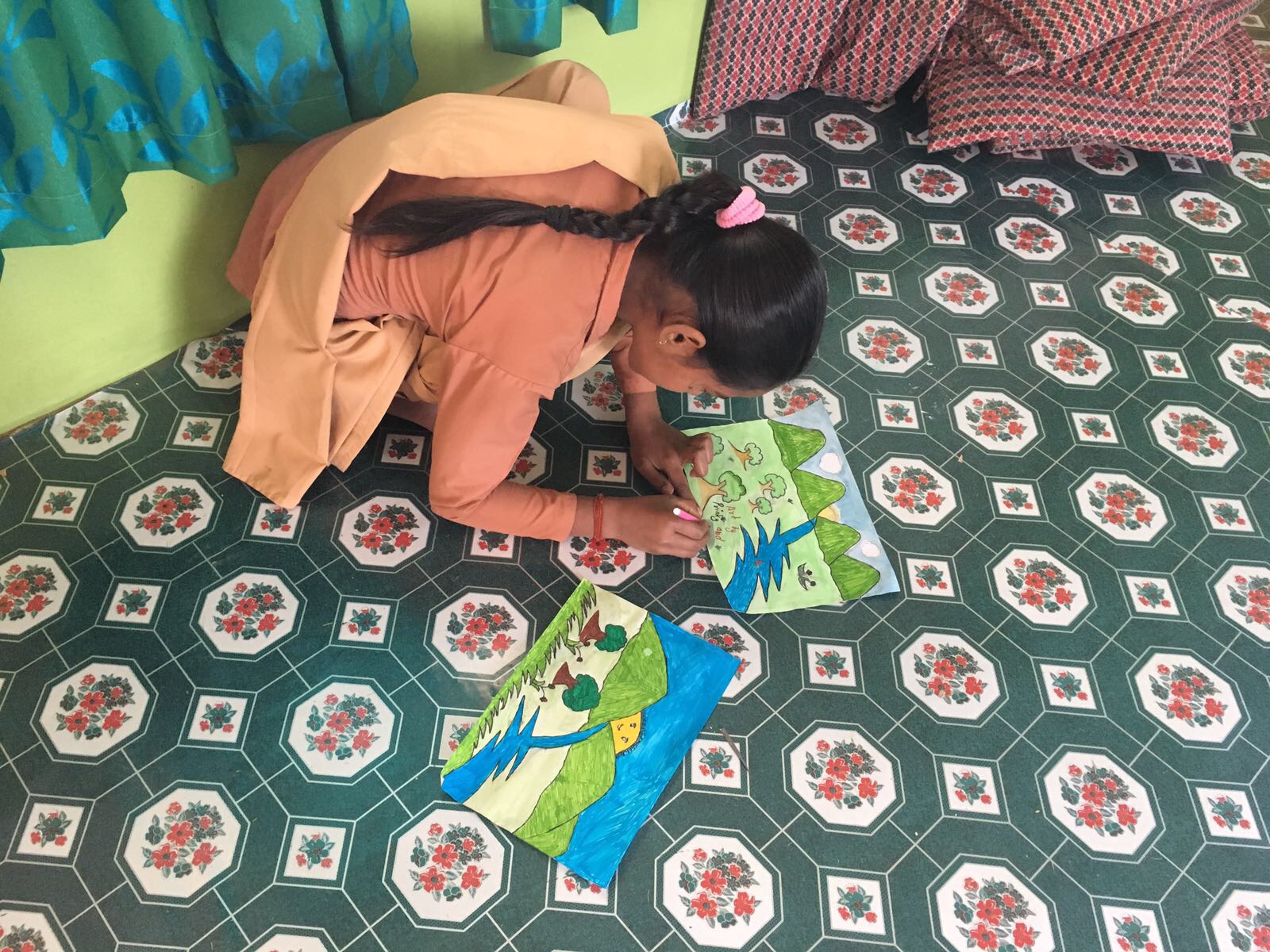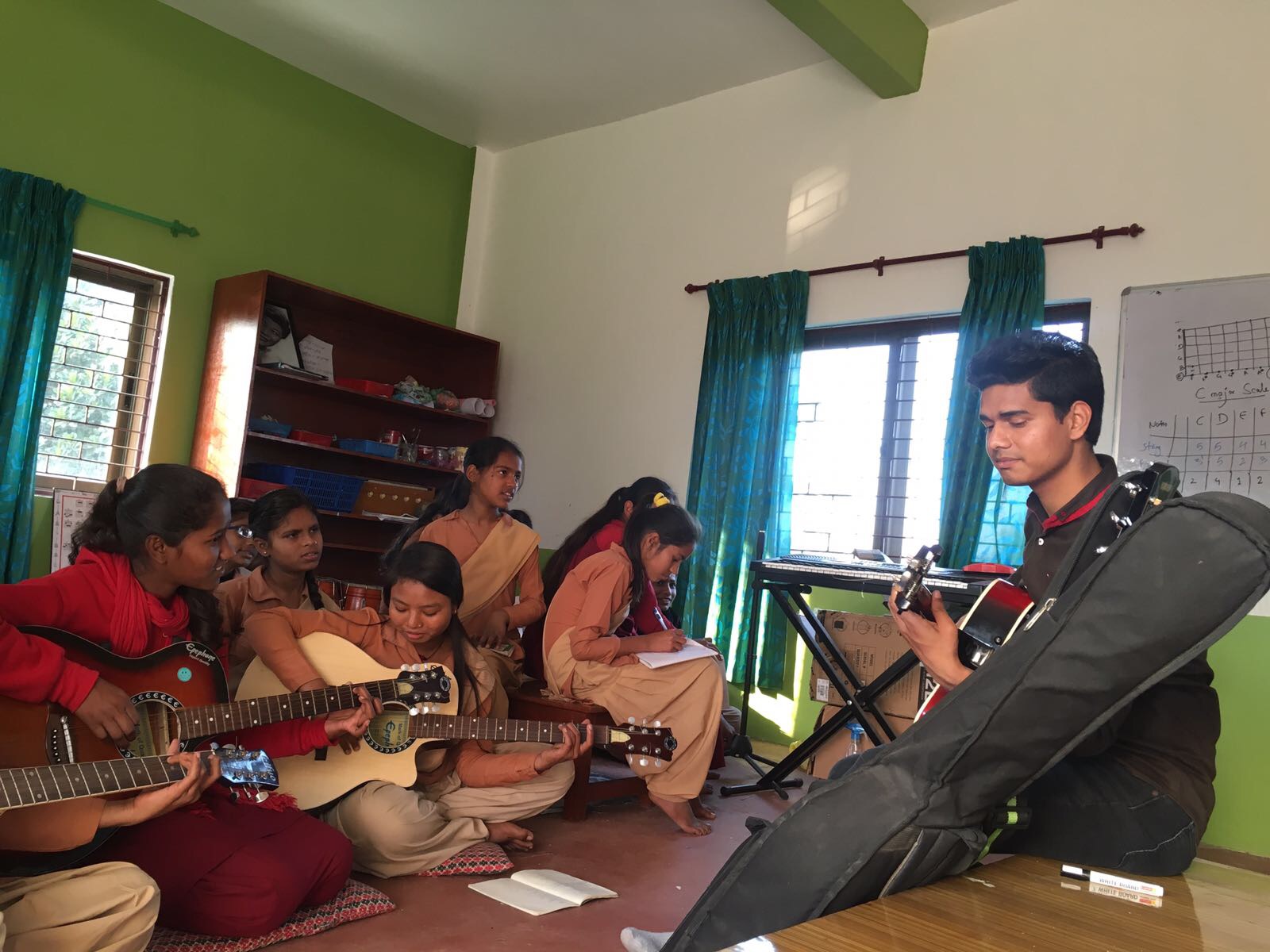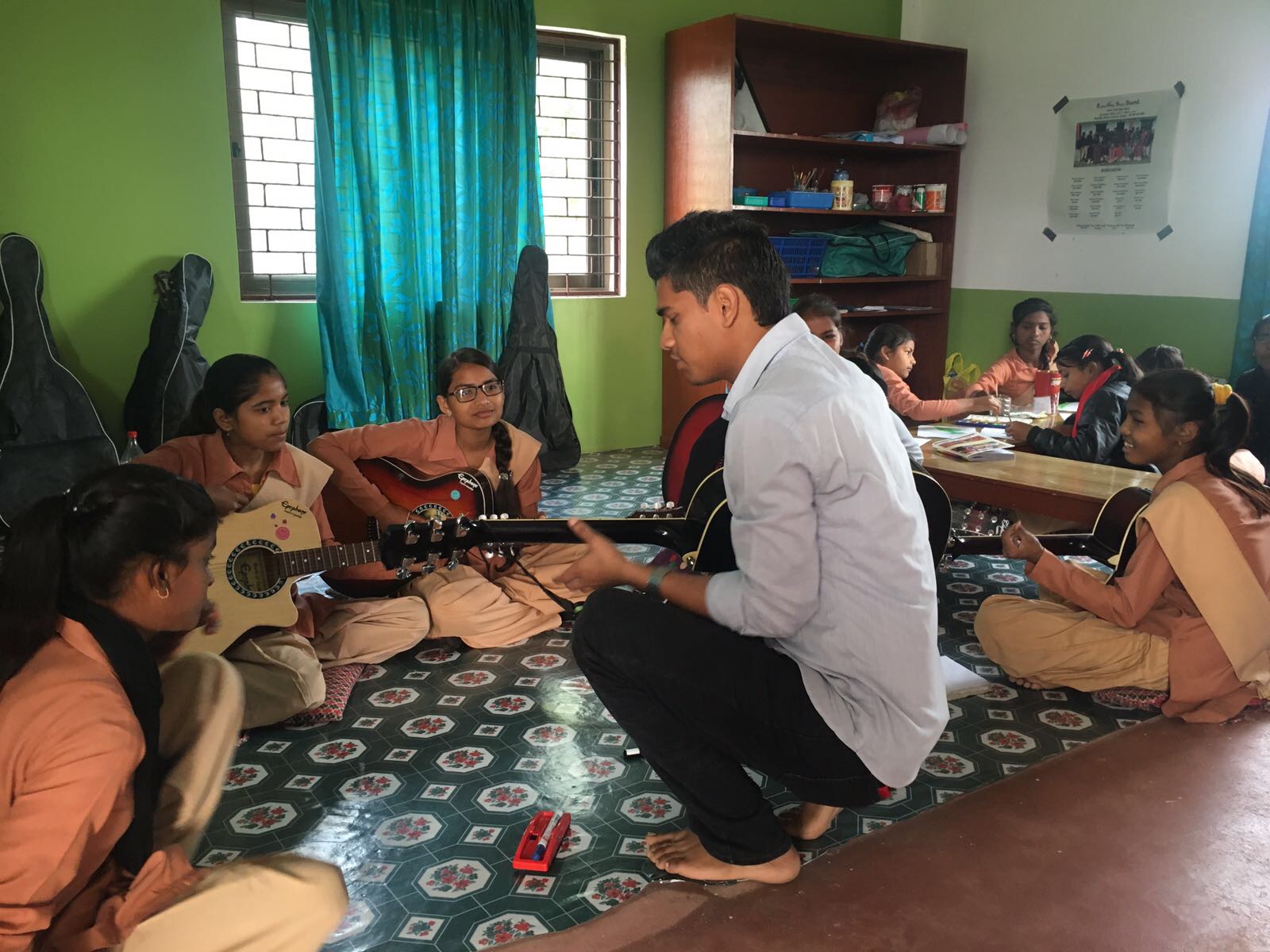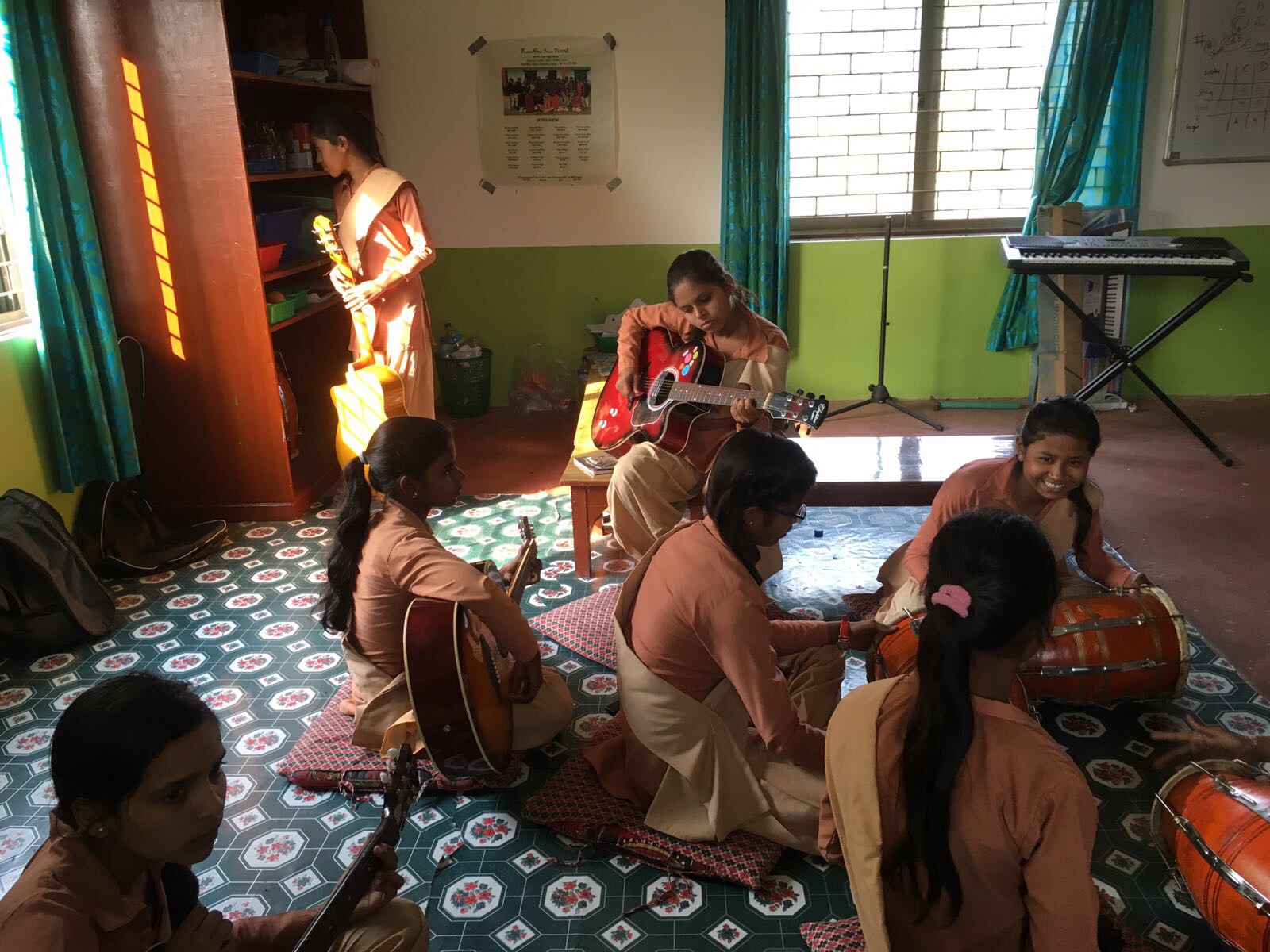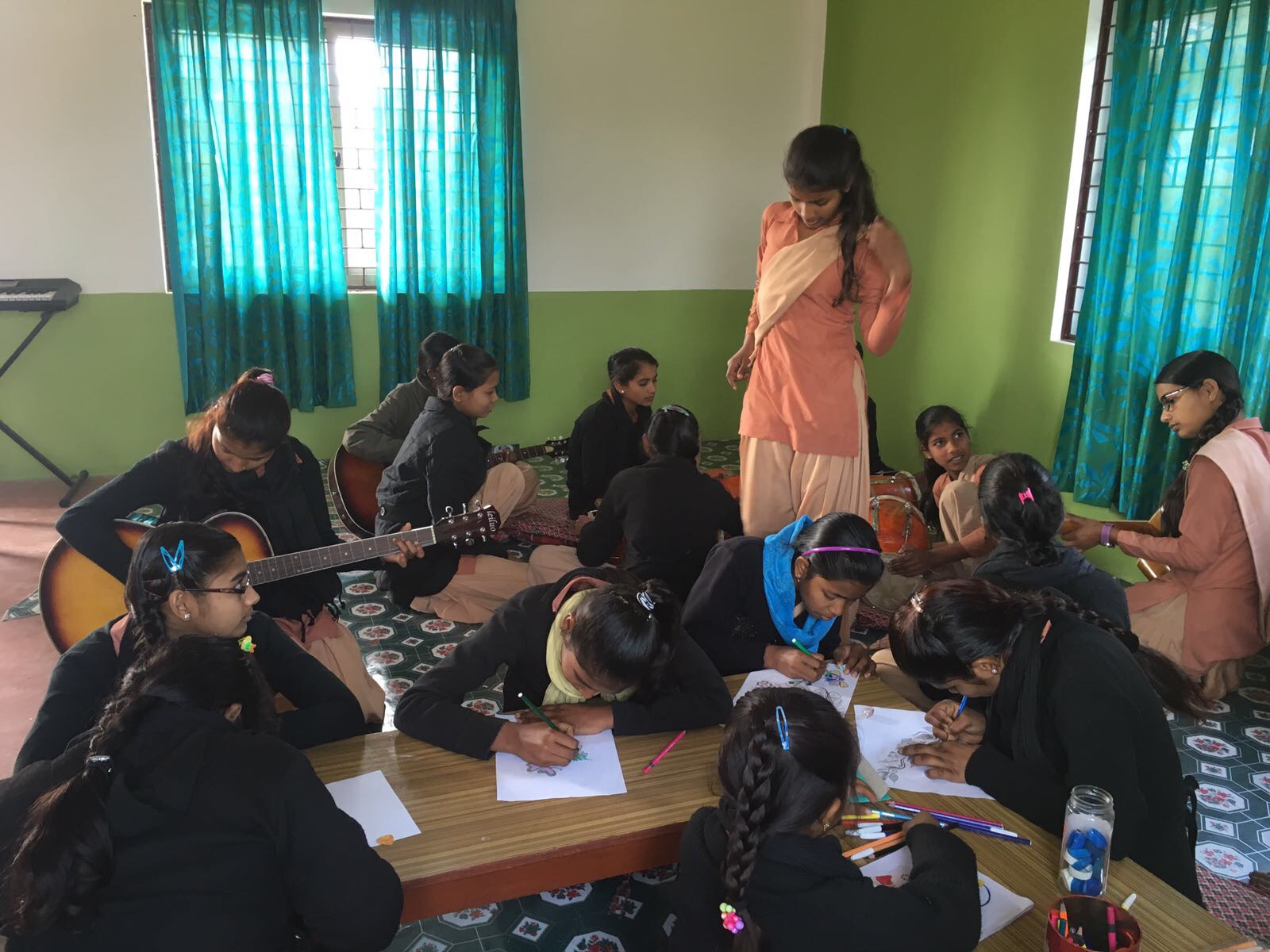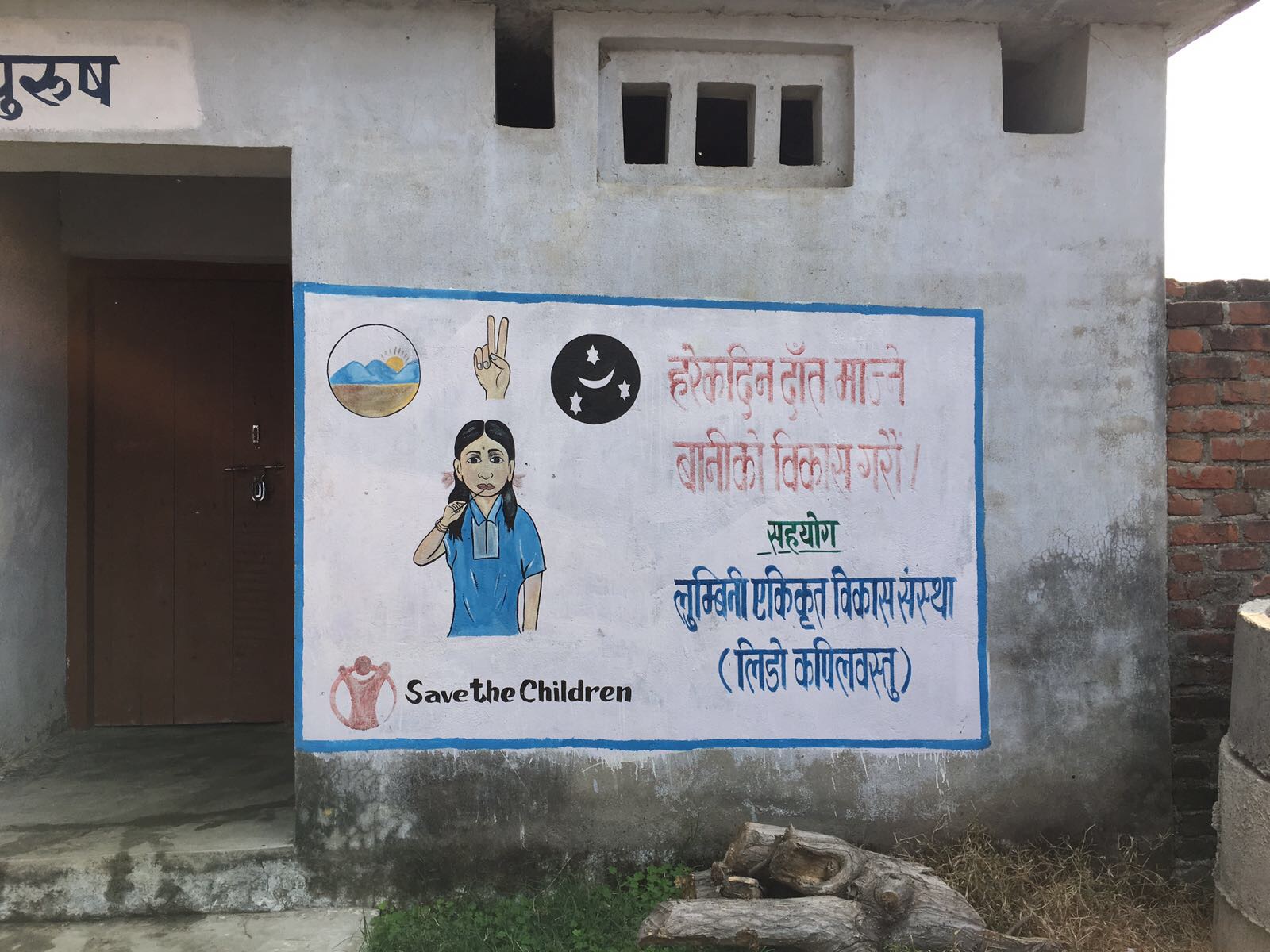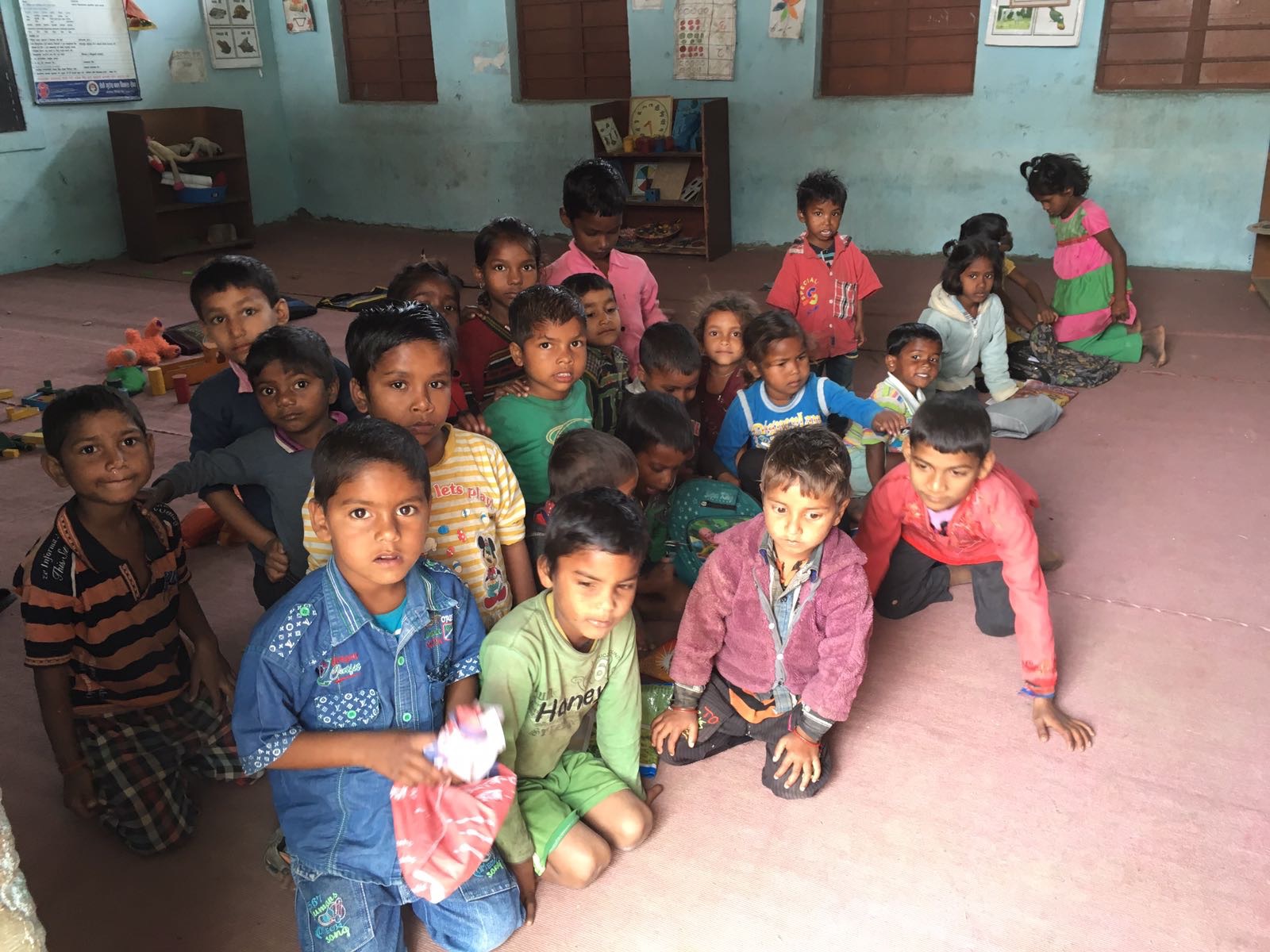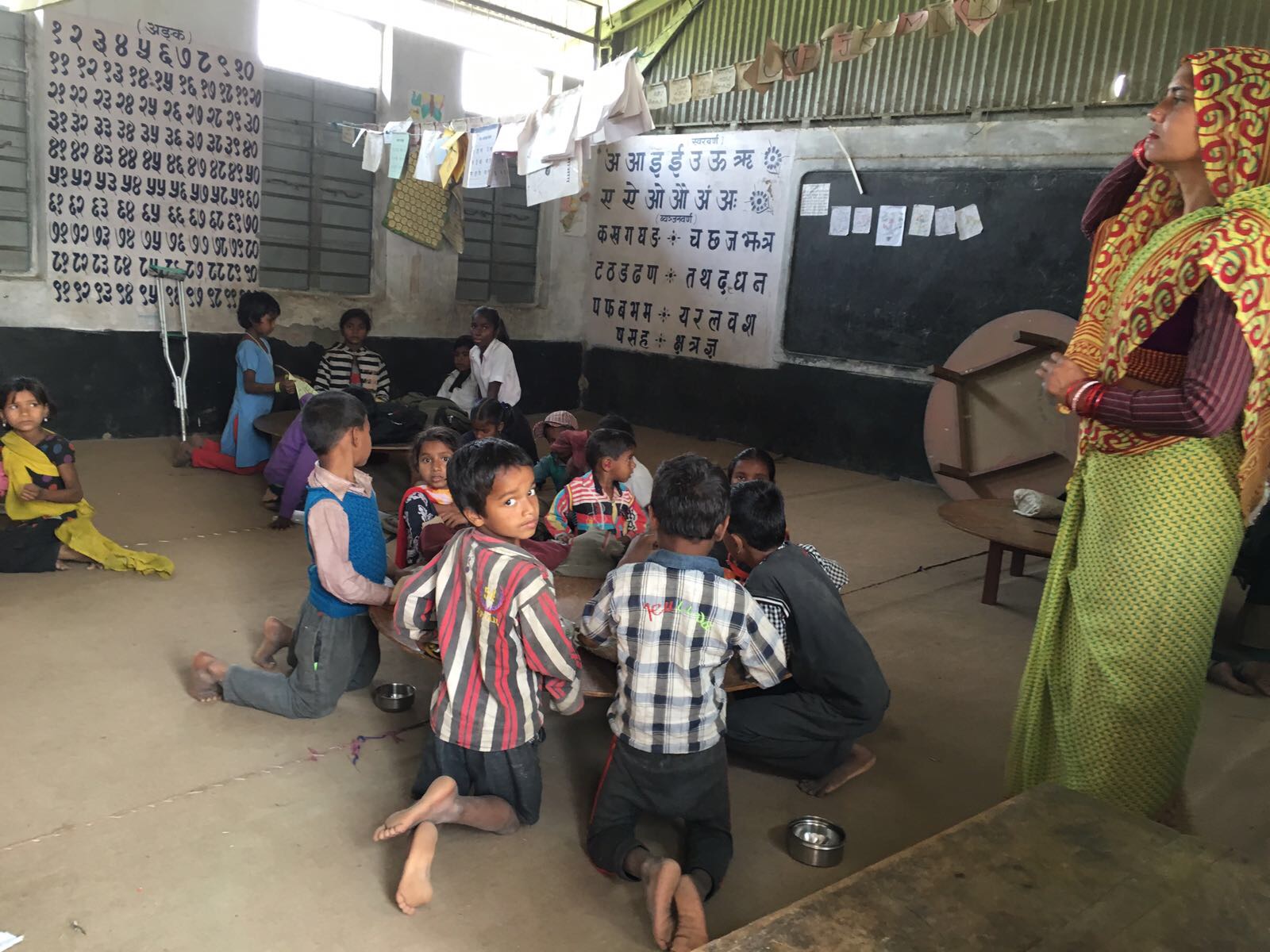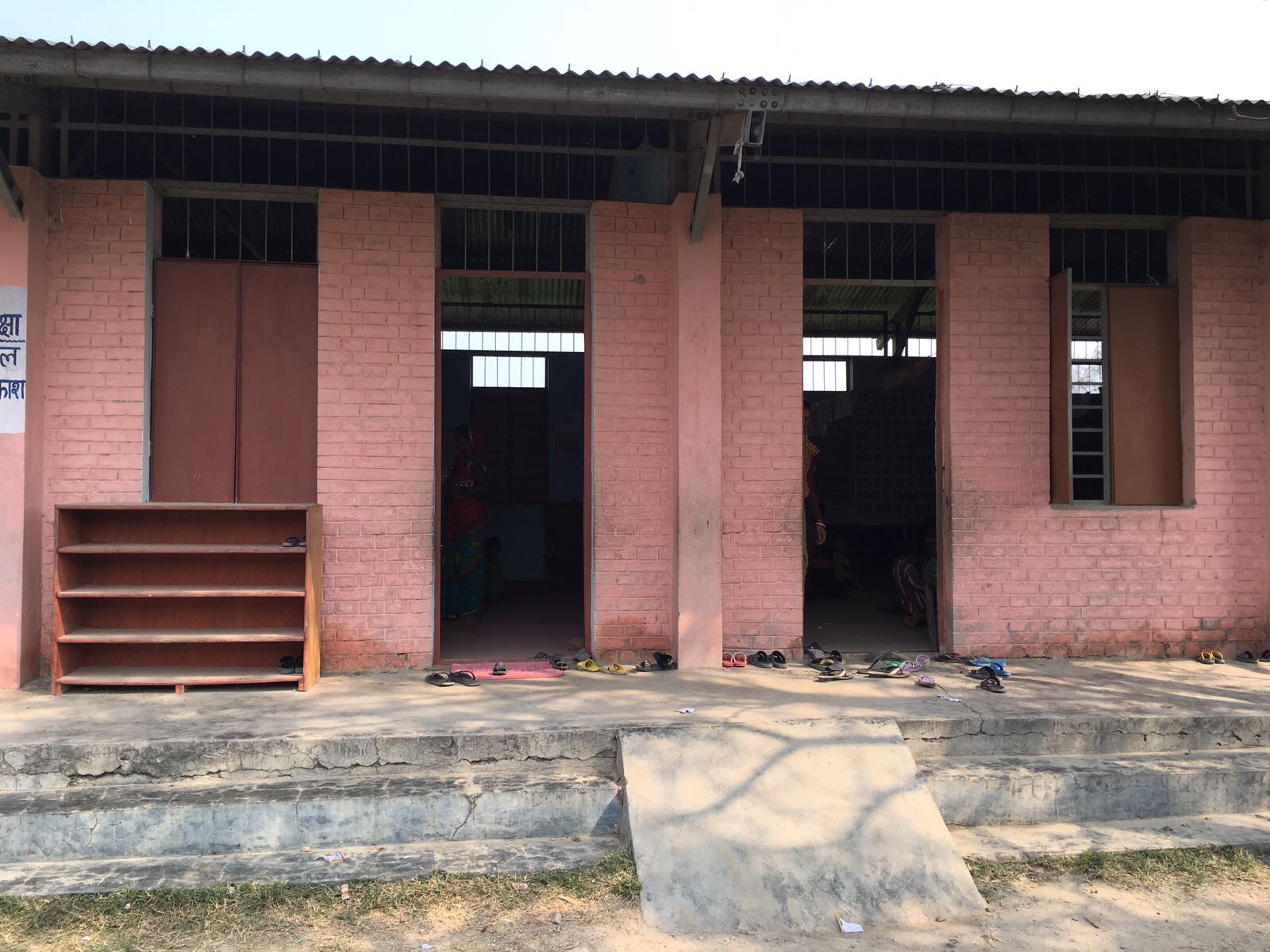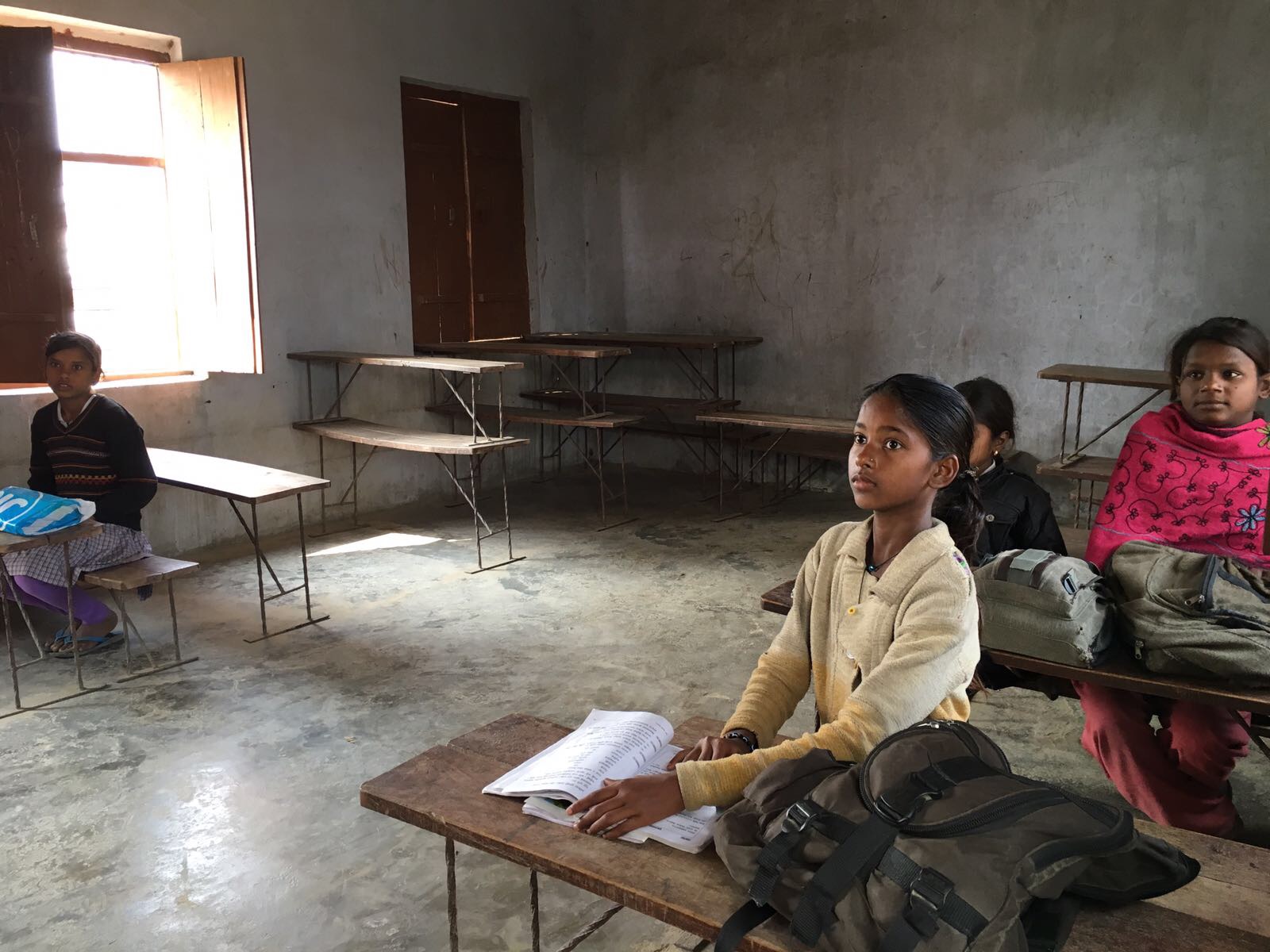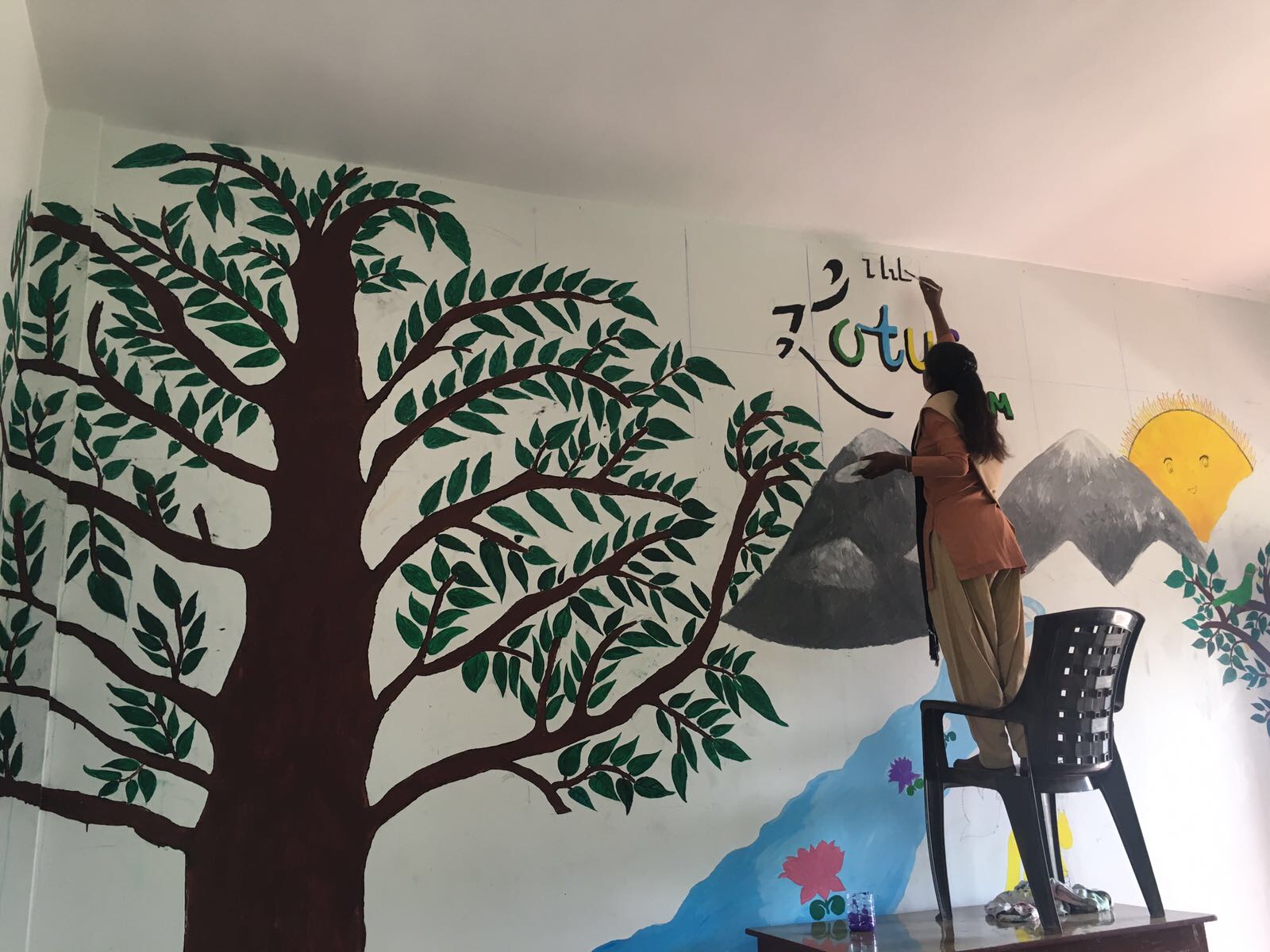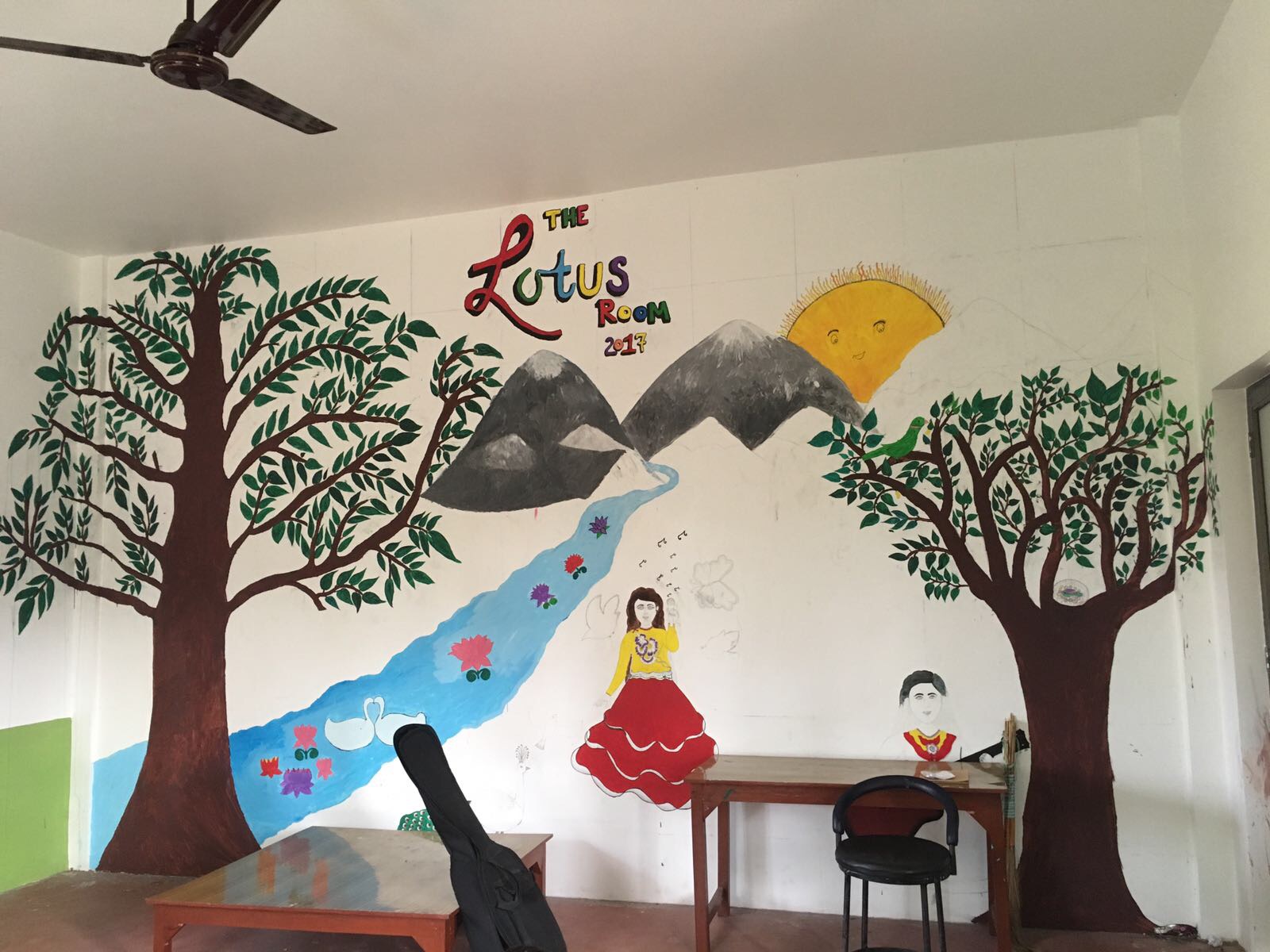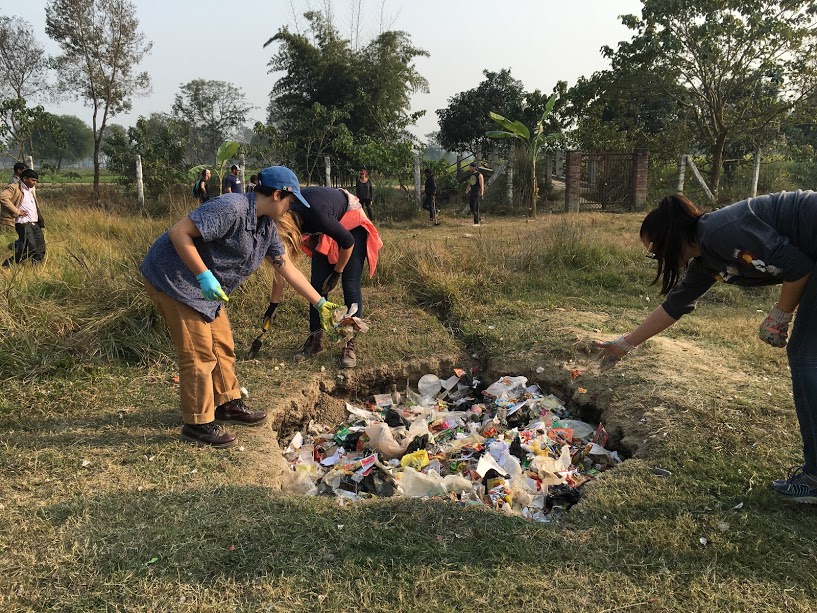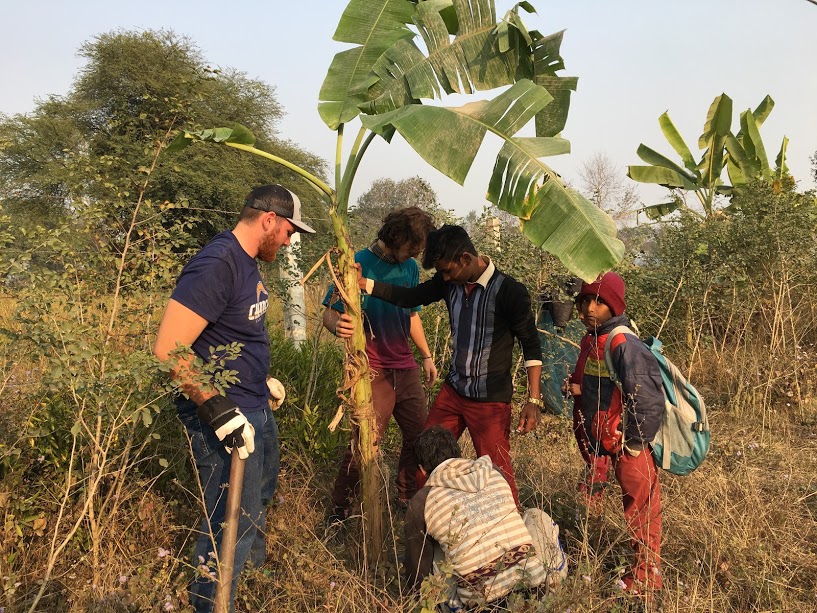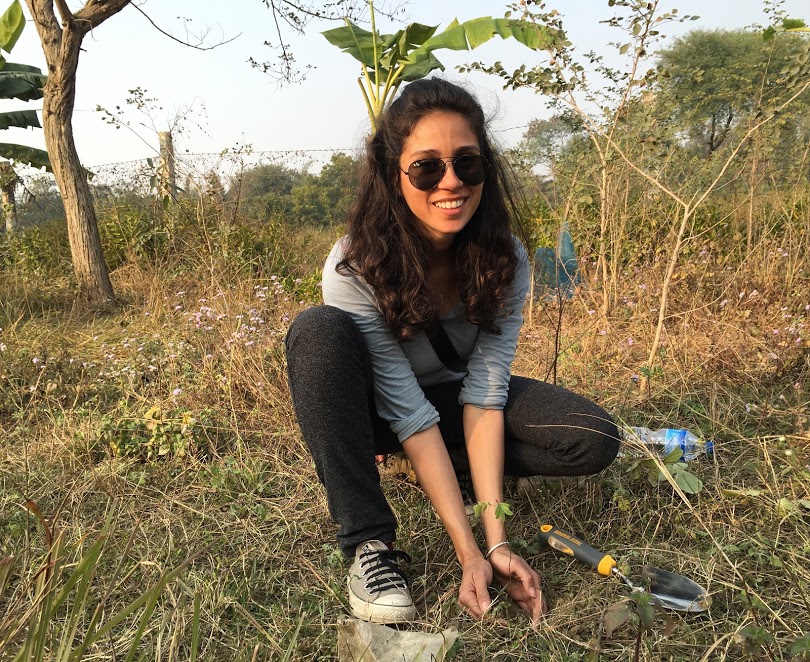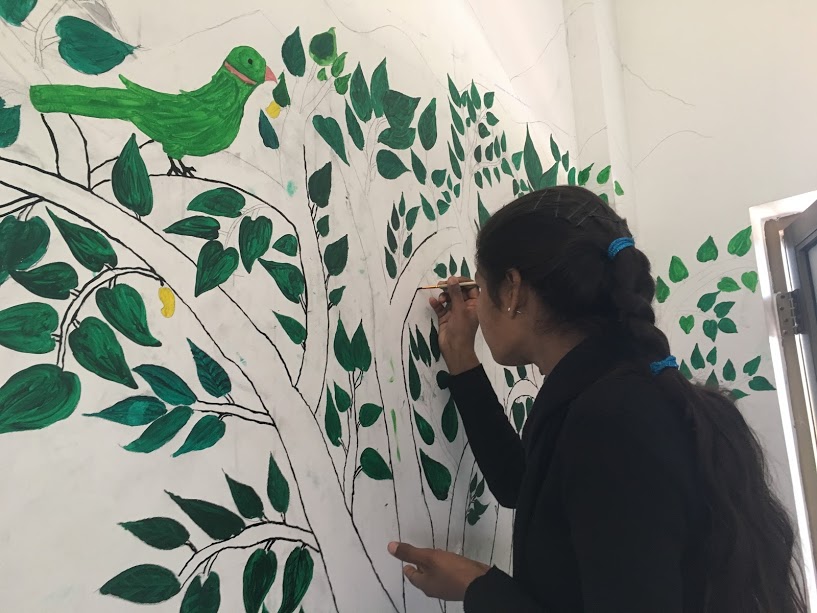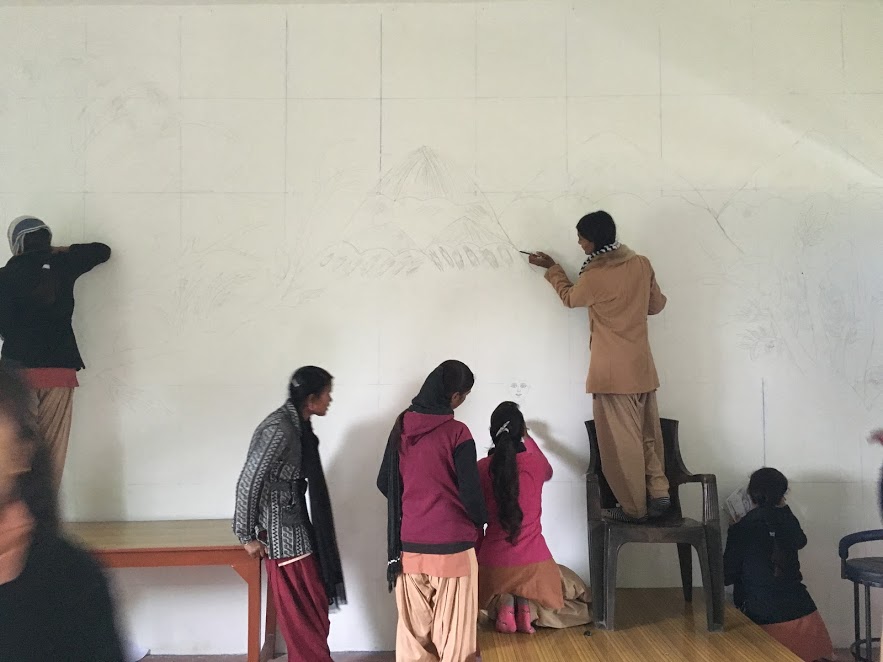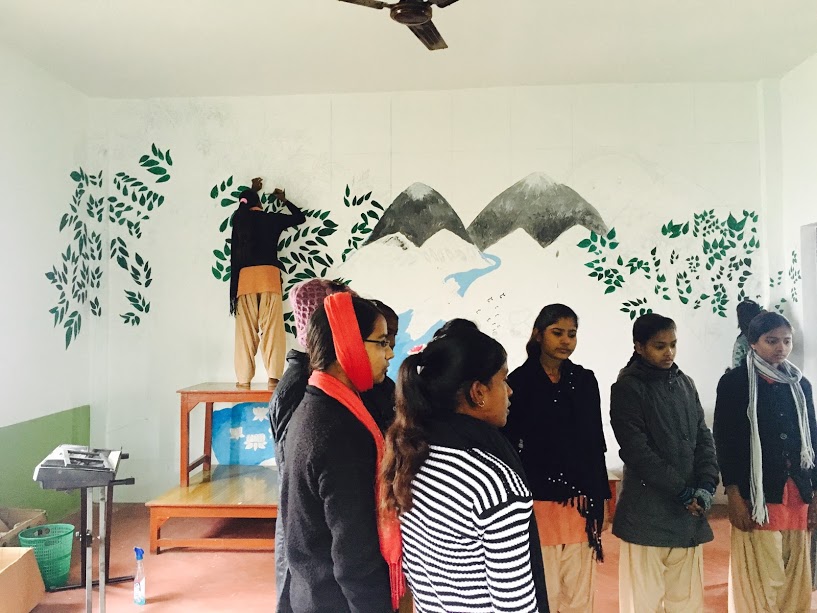2025 Meaningful Travel Look Back
This year our Heavenly Himalayan Adventure was a three-part experience. We journeyed through the ancient Kingdom of Lo in Mustang Nepal into otherworldly terrain, cave dwellings, and a storied past. Lumbini brought us celebration and re-connection, highlighted by the auspicious higher ordination of our dear Venerable Metteyya. Celebrations at Karuna Girl’s School, tree planting at Bodhi Institute, a sunset wander through the Lumbini Crane Sanctuary, and joyous visits with our ‘choris’ (daughters). As a special add-on, we explored the Spice Island of Sri Lanka with fabulous tour guides and accommodations, delving into the deep Buddhist history, re-visiting with elephant friends, and soaking in the various regions and biomes. Enjoy the mini collages below and consider joining us next time!
Join us in 2025…
CEBA/Anatta Heavenly Himalayas Holiday 2025 Itinerary
Mustang
Lumbini
Sri Lanka
HHH 2023: Exploration, Service and Love
This year our beautiful Heavenly Himalayas Holiday tour began in Kathmandu Nepal and covered the sacred lands of Lumbini, Java, Bali, and the natural sanctuaries of Indonesia.
Boudhanath
Bringing our group together
In Nepal we began with a few days of settling in and cultural touring in vibrant Kathmandu, followed by an immersion into the main work week in the Buddha's birthplace, Lumbini, the home of our Metta Family of projects and our guide, Venerable Metteyya. Here, immersed in the culture and heritage of this incredible World Heritage Site, we experienced the sacred sites, the local village, and nature walks as well as participated in Diwali and Tihar festivities.
Diwali Celebrations
Swayambhunath
Kathmandu
Patan
Central Canal - World Heritage Site
Everest Flight
During this time we witnessed the ongoing construction at Bodhi Institute, with completion of the second story of residences, and main story of the temple and the addition of the second story meditation hall. The 10th anniversary of Bodhi Institute was celebrated by installing and inaugurating a beautiful Borobudut-style Buddha, donated bye our friend and supporter, Kasim Padmanadi. The venerable Sangha and foreign guests were present for the blessing ceremony and lunch.
Venerable Sangha
Buddha Statue Installation and Blessing Ceremony
All Beings are Welcome
The 10-year anniversary of the Karuna Girls School was also celebrated in grand style with performances from students and alumni. Such great strides for girl’s education and women’s empowerment filled our hearts with gratitude!
Karuna Student
Karuna Performances
There was also opportunity for volunteer service at a two-day medical clinic for local villagers in Kapilavatsu. Over 2000 patients, most women and children were seen by our team of medical and service personnel. Many of the participants were alumni of the Peace Grove Nunnery who had completed higher education as nurses and lab technicians.
Kapilavastu location of Medical Camp
Exhausted but so happy - what a great team!
Welcome to Bali
Kecak and Fire Dance Performance
Monkey Forest
Rice Paddies and Coffee Growers
A temple encounter with a visiting Thai monk
There are 2,672 relief panels along the insides and originally 504 Buddha statues.
The long bumpy road to our venue
A day at the clinic
For the final part of our adventure, we In 2023 added a week in Bali where we enjoyed some relaxation at the beach, learned about local crafts and culture, visited with monkeys and explored elephant temples. As a culmination to the tour, we traveled to Java to visit the exquisite ancient Temples of Borobudur.
Balinese architecture
Nothing better than fresh coconut on a warm day
Zip lining over rice fields
Beach Gardens
Walking through time
Our group journey culminated in a flight to Java to visit Borobudur. Uniquely Indonesian, this world’s largest Buddhist Temple dates to the 9th century during the reign of the Sailendra kings. This UNESCO World Heritage site has 9 stacked platforms, 6 square and 3 circular with a central dome.
Consider joining us next time…
Meaningful Travel Tours are back in November 2023
Immerse yourself in the history and culture of Kathmandu, take an early morning flight to view Mt. Everest, visit Buddha’s birthplace in the company of our local family of monks and nuns. Volunteer at our many projects: schools, meditation center, rural medical camp. Catch a glimpse of the majestic sarus cranes and indigenous wildlife in their wetland sanctuary. Celebrate the 10 year anniversary of several of our projects and walk the rural villages during the Festival of Lights. Not done yet…time for some nature relaxation in Bali and a tour of the majestic temples of Borobudur in Java. Customization of the trip is possible …think about it and reach out if you are inspired!
Immerse yourself in the history and culture of Kathmandu, take an early morning flight to view Mt. Everest, visit Buddha’s birthplace in the company of our local family of monks and nuns. Volunteer at our many projects: schools, meditation center, rural medical camp. Catch a glimpse of the majestic sarus cranes and indigenous wildlife in their wetland sanctuary. Celebrate the 10 year anniversary of several of our projects and walk the rural villages during the Festival of Lights. Not done yet…time for some nature relaxation in Bali and a tour of the majestic temples of Borobudur in Java.
Customization of the trip is possible …think about it and reach out if you are inspired!
Update on our COVID-19 Response
Our local partners in Nepal at the Lumbini Social Service Foundation have put together this presentation about their work during Nepal's devastating 2nd and 3rd COVID-19 waves. We at Anatta feel privileged to have helped them conduct this vital work. Our partners worked in 21 different sites throughout Nepal and distributed 52 oxygen concentrators and 63 oxygen cylinders, along with medical equipment and food for hundreds of personnel.
We want to extend our deepest thanks to everyone who donated to our campaign, together you raised over 27000 dollars and helped people throughout Nepal survive in dire circumstances. This work shows how impactful your donations can be when channeled into local led efforts. We are proud to have been able to support our Nepali partners during this time, and are excited to move forward into the future with a deeper partnership. We will update you soon on the future of our work in Nepal. We also want to extend our gratitude to Canadian Engaged Buddhism Association (CEBA) and SELL FOR A WELL, who helped support this vital work. We will update you all soon regarding our future initiatives and how you can continue to support our work in Lumbini and elsewhere.
Thank you again,
The Anatta team.
Pratima Khatri talks about her dreams and KGS
Pratima Khatri is a former Karuna Girls School student and Journalism Club member. In this short video, she talks about her dreams and why she loved being at KGS.
Pratima is now studying facilities management at Sai Global college in Bhairhawa. She has this to say about her time at Karuna Girls School:
Karuna girls school was like a garden of full flowers. We girls were taught there main values of life and were taught to be honest. We were promoted to work for women empowerment. Our opinions had value there. We were taught to believe that girls can do whatever they want and can be whatever they want to be.
When I moved to another school I found totally different environment. I found different people with different mindset. There were very less people to encourage girls.
If you want to support Karuna Girls School and its students, please consider making a tax deductible donation to Anatta.
Featured Student: Vijita
Vijita is among the very first batch of girls graduating from our Metta School program. It was to insure a future with higher education for Vijita and other girls like her, that led us to start the Peace Grove Program. - Venerable Metteyya
Vijita’s Story
Vijita is among the very first batch of girls graduating from our Metta School program.
Cultural Background
Vijita's family name is Karishma Chaudhary and she comes from the native Tharu tribe (also known as Choudhary). Native Tharus are the original inhabitants of the Nepalese Terai. They were able to survive and thrive in this jungle environment due to their natural immunity to Malaria. Traditionally known for their gentle demeanour and simple life, Tharus were known for farming the land and fishing in wetlands and rivers.
The successful American-supported campaign to eradicate Malaria opened the Terai region for settlers from all over Nepal and India, resulting in clearing of the dense forests and settling of new villages and towns. The Malaria eradication came as a devastating blow to the Tharus. Unable to read and without knowledge of the sophistications of the modern world (ie. land deeds) , Tharu communities were not ready to cope with the changing world. Once the landowners of Terai, they were now considered poor, backward, and expendable by the ruling elite in Kathmandu. Young Tharu girls were enslaved as bonded labour (Kamalari) until the practice was abolished in 2006. Though illegal, in parts of Nepal (predominantly in eastern Nepal) Tharu girls as young as 8 years are still sold by their own families to work as domestic servants in wealthier homes.
Access to education in Tharu communities still remains very scant and girls from Tharu community rarely go for higher education.
Personal Background
As a young girl Vijita wanted to get good education and came to join Peace Grove together with her younger sister Dhammadinna. Vijita has very bubbly personality and is very caring towards her friends at Peace Grove.
Vijita's father is severely alcoholic and doesn’t offer much support in the family. If Vijita hadn't joined Peace Grove, she would have already been married at a much younger age.
The road to become educated was not always easy. In her high school levels Vijita struggled with mental concentration issues and started failing her high school exams. After trying for two years and still not passing, she was distraught. But good intervention from Conni Aunty and supportive encouragement from Bodhi ma and Peace Grove, she started again and ever since has done amazingly well.
Post regular education, Vijita graduated as the very first Clinical Laboratory Technician from Lumbini and is perhaps the first Tharu Girl from the Lumbini region to do so. Right after the completion of her training she recruited a few of her colleagues and ran the very first lab at the 2019 Anatta Health Camp in Kapilavastu. She has since found a job on her own, and has rented her very first apartment in Butwal city (the provincial capital-about 40 kms from Lumbini). We are very pleased to have watched her personality grow from a meek, shy little girl into an educated and confident young lady. She is an inspiration to all other young girls in Lumbini.
What Finally Won My Heart
Far Beyond the Descriptions. Lillian Ball — 2015 Anatta Trip
My adventures in Nepal began on a visit there with Anatta Outreach in 2015. When I met Cornelia and heard about the trip, I knew immediately it was the right timing.
We all met up in KTM and began the day-long odyssey to Buddha’s birthplace in Lumbini. Only a few months after the earthquake, there were rockslides and parades of windshieldless trucks.
I remember clearly when we arrived at the Peace Grove Nunnery we were greeted by the lovely girls with garlands of flowers and many kisses for Cornelia. Venerable Metteyya and his Dharma mother Bodhi Sakyadhita’s other endeavors there - clinics, schools, and institute, all went so far beyond the descriptions I had expected.
But what finally won my heart was the imperiled Lumbini Crane Sanctuary to protect the wildlife and Sarus Cranesthat had been in the area since Buddha’s time.
That was just the first of five subsequent trips to help the Sanctuary which would never have been possible without the kind generosity of Cornelia and the Anatta Program.
Rambro Cha Anatta!
Inspired by Education
Head Heart Hand. Irene Lehmann -- 2018 Anatta Trip
I learnt so much about Education on my wonderful trip to Nepal in October 2018. It seems to me, that in this culture there’s a lot more Heart and Hand talked and lived about at school, than what we Westers give to our young kids at school. And this education leads to very special adults…
For me it was wonderful to see, how young girls from the nunnery and their friends helped at Anatta’s Health Camp free of charge – just to help. To make it a better world.
I am impressed of what I read on this board at Shree Bar Vikas Samai English Medium Basic School! It’s not only about Maths and Languages - it’s about Feelings, Wishes, Art!
I am very blessed to have visited this country with people who care. Thank you Cornelia, Bodhi, Paula, and Metteyya. You all live what you write on your flag ‘We must be the change we wish to see in the world’.
Heavenly Himalayan Holiday 2019: December 5-21st
Could this be the year you travel with us?
Making patterns, Breaking patterns -- by Zeke Maben
Four months in Nepal:
When you do something long enough there is a point when it feels eternal. The human mind thrives on patterns and rhythm. A different drumbeat for each place, each activity. Follow one long enough and it gets stuck in your head, overrides other things.
By mid-February I had been teaching in Lumbini for 2 months. It was a powerful pattern: journalism club on Mondays, Wednesdays and Fridays; reading and playing on the others. Saturday was the only day off, filled with delicious local sweets (ladoo, soan papadi, kheer) and local friends (Mahesh, Mohan, Vivek.) At night, the fog closed in and Lumbini seemed the world entire.
But a pattern is an infinity until it isn’t. In those days my thoughts were full of only Nepal, the classes to teach, the plans to make, the cities to visit, the meals to eat. But when I passed the halfway point something seemed to slide, and here at four months my thoughts are consumed by what comes next.
I have inherited my mother’s love of dreaming ahead, of browsing places to live, things to buy. There is something so intoxicating about the future that it annihilates the present. Plans are imagined and never begun, but the imagining is enough, it brings that glad feeling backwards from the moment of completion. It is so easy to get lost in the future.
And I have been finding myself there as of late, especially with an upcoming trip into the mountains, I compose this to make sense of the past. There are lessons here, I think. I am still learning them.
Teaching.
There are moments when teaching is transcendent. There are moments when it is anything but. Everything depends on the level of engagement I can elicit from my students. If I have a topic in English they think is useful, or a game or an exercise that they can go along with, then it is easy going.
But all too often I find myself teaching at a level above my students, having to ask “do you understand” every few seconds. Some students in my classes, especially the higher level ones, really don’t understand the material I’m asked to teach them. This, and a shyness beaten into Nepali girls, can make for frustrating class periods. Many students will not speak when called upon, nervously chewing pens or staring at a classmate for help.
As hard as it is for me it must be worse for the students. No one deserves to be in a class above their level, it’s a humiliating experience. I mulled over possibly starting a remedial course, but the administration didn’t seem particularly enthusiastic about that. Being called on in class and not knowing the answer is humiliating enough, but being taken aside to start from the beginning could be even worse. The classes that were most in need had the most to do anyway, they leave early to go work in their homes and prepare for life after school. I do my best to simplify my language.
But, the good is oh so good. I find myself loving substitute teaching as well, the chance to give students just a little bit of their next math or science or social studies lesson to tide them over till the teacher came back. (do you want to mention the games you came up with to make this fun? Like the challenge about collecting garbage?)
Journalism club continues to be excellent, and while I haven’t made as much progress as I’d have liked with the recordings I find myself nurturing the stories of half a dozen young writers. Their talent is extra-ordinary and some of the phrases they make in English are all the more powerful coming from a language learner. With a recording intensive planned upon my return from Pokhara, I’ve switched my focus to helping them build up some articles to write over break. It remains an incredible part of my day.
Though it took us longer than we had hoped to make it happen, Indu Miss, the Nepali teacher, came through on her promise to do a language exchange. I started tutoring her first. Every day I didn’t have journalism club I ride my bike to her little apartment in Mahliwar. We share Kuduko roti, a kind of Cassava flour pancake, and go over tenses and verbs. When I taught her about articles it was like her mind was blown. “So much new learning!” she exclaimed, over and over again. I wish I could master Nepali as easily as she is picking up English.
I find myself waiting for that moment when I decide “yes! Teaching is what I want to do with my life!” but I do not think that decision, affirmative or negative, will come in a moment.
Language:
My number one most used Nepali phrase is Ek Chin which means “hold on a second.” My second is Mero Nepali naRamrocha “My Nepali is not good.” These are, of course, the most important phrases you can know in any language. Together with “where is the bathroom,” Kaha Bathroom Cha?, That should give you a good idea of my Nepali prowess. I know enough to conduct a purchase or entertain a small child.
Learning Nepali was the goal I had the least confidence in when I came here. I do not have the greatest felicity with languages. Latin in high school was my highpoint and it has been downhill since then. The practice aspect of it can be difficult, and while I have become better at building routines including languages. Perhaps it is the other alphabet, though I’ve learned to sound out Devanagari, it still presents me with many difficulties when I try to sight read. Sounding it out, then translating, frustrates me.
Still, the fact I’ve learned Devanagari makes me happy. It is nice to sound out signs, even if I can’t understand them. Perhaps I shall learn to read all the scripts of the world and understand none of them.
People Are Alike All Over -- by Schuyler De Vos
I remember a Twilight Zone episode I saw once called "People Are Alike All Over". I don't really remember what happens; I think astronauts land on Mars and the Martians are either nice, or cruel, or both. Probably some of you know this episode and exactly what happens, but for me the plot was negligible. What stuck with me was the phrase. "People are alike all over". It is - and was meant to be, I think - ambiguous. People are what, all good? People are all evil? Or people are all just people - all the slurry of human thoughts, emotions, hopes and dreams flows into the same sea. In a way, it's a phrase so vague as to be meaningless. So people are all people. So what does that mean?
In a way, that is the question I secretly came here hoping to answer. What did it mean to have hopes, dreams and fear in Nepal, what drew people here or away from here, who was I in relation to all this, and how could I change it for the better?
It's still an evolving question. I think, when traveling and adapting, there are two kinds of shocks the traveler faces. One is the shock of the new. This is, say, the lack of hot water, accidentally frying your electric razor because of a voltage difference, subsisting solely on rice and lentils. Every day. In Nepal I do things I've never done before: meditate, learn new languages, examine the infrastructure of rural computer labs. These are the things people commonly think about when traveling.
A different shock, and a more insidious one, is the shock of the old, of time-worn feelings and problems which you didn't expect to find in your new location. In Nepal I do things I do back home: I fish, sit around bonfires, take walks, talk to people and listen to music. Sometimes I am sad, thinking about old problems or old problems cleverly disguised in new light, and sometimes I am happy, encountering new mysteries and modes of thinking and talking to people and catching fish.
Of course, I'm not implying Nepal isn't special. Far from it. Nepal is a unique country. The people are, truly, the nicest and most unassuming I've met to date. I have literally never felt unsafe here, and not just because I stand a full foot taller than the population - I find even the idea of someone doing violence against me here as something I can't really fathom. People will help you, or at least try, even (or especially) when you don't speak their language. And the children, especially, are amazing. I think one of my most vidid memories is seeing a mural painted on the Metta school wall - some kind of acrostic for 'education' - about the limitless potential that children have for the future. And it's really true! the kids want to learn, and they study hard, and they're always asking me questions I am always happy to answer. They're curious, and determined, and it's heart-warming to see. If America is the country where anyone can do anything, Nepal seems like the country where everyone wants to do something which, in my opinion, is a much more valuable trait.
Up to now, I've been focusing my efforts on shoring up their IT infrastructure at the Karuna Girls College. Nepal is a country where the people haven't quite caught up to the technology they're using: most people have a smartphone in their family, but aspects of cell phone and computer use someone in the West would find obvious are not as obvious of them. When I first examined the computer lab the computers were having trouble connecting to the internet, and all of the students (and teachers) were under the impression the computers all had terrible viruses, which of course wasn't true. It turns out that someone had uninstalled the correct computer drivers: user error is a big problem here. Another problem, which may sound quaint to us, is that of scams: the people here are much more susceptible to being misled about what is true and what is false on the Internet. Most of us have an intuitive sense of what to believe and what to avoid that Nepali people, with less experience, lack.
Energy consumption is also a big problem. The computers they have are very big and rather old, and they take up a lot of power: this is bad because it costs money and because there are frequent power outages here. To help fix this, we are undertaking a campaign to replace the older, bigger computers with very small Raspberry Pi computers, which will use much less energy. After that, I'll spend some time teaching computer literacy courses. Hopefully, I can get a good foundation set up for when I leave.
In conclusion, traveling to a new country doesn't change you. It can help change the way you think, and give you new opportunities to examine yourself. But ultimately only you are responsible for what you do and what you want, and following what you want and doing what you do. That is Nepal's true secret, which it taught me: only you can change yourself. I'm grateful for the opportunity to change things for the better here, and to be changed for the better by these unique people in this unique place. It truly is magical.
Finding A Foothold -- by Zeke Maben
In December 2017 we left Zeke, one of our Anatta volunteers, in Nepal for the next 6 months. Here he describes his first month in retrospective...
Nepal, 1 month in.
Month one: Finding a foothold.
This has been a month of exploration and impressions, of trying to develop a story, a narrative of the place I’ll be spending half a year in. I had been told by people who had taken the journey before me to control my expectations. It’s not good to imagine a place before you go there; it prejudices you, or leaves you disappointed. I laid a few basic plans: I would teach English at the Karuna Girls’ College, I would teach audio recording and editing to their journalism club, and I would do my best to meet the country where it was at.
I tried my best not to imagine the future. This was hard for me, as I am someone who likes to think ahead in the most general of ways. Daydreaming myself ahead is one of my favorite pasttimes: to think of the things I’ll see, experience, accomplish. I kept Nepal a vague lacuna, all prognostication kept to “what comes will come.” And then the moment we got off the plane the sheer enormity of the undertaking swamped me. I was in Nepal and I didn’t know my schedule or my exact living situation. All I had were a couple guidebooks and some people to help me along. One moment I was in Kathmandu and one bumpy day of a car ride later I was in Lumbini. It was all rather disorienting.
A school break and exams meant that we weren’t able to go directly into teaching or working for the school. Absent any clear curriculum, Schuyler and I did what we could: we took pictures for the Kapilvastu health clinic, and drilled Nepali with Alex, one of the medtechs in the Lumbini Emergency Response Network (LERN). We began to make friends: with Mahesh, local legend and director of the LERN program, Dharmendra, head of the crane sanctuary and Metta school veteran, and Alex, the aforementioned medtech, who shared her stories of volunteering with us and taught us our first Nepali.
Gradually, I found myself forming routines and building little projects. With my phone and the audio recorders I brought for the girls college, I started to explore the sounds of Lumbini and the stories of the people I met. As we left our small hotel and moved into the Bodhi Institute for Peace education, I began to feel at least somewhat comfortable in Lumbini. Feeling at home in a place is a function of routine. If you can find repetitions and patterns, you can find a home anywhere, even if you only speak a little of the language, even if its halfway across the world.
This new pattern was interrupted by a trip to Kathmandu we took to see Schuyler’s sister present on the research she did as part of SIT Kathmandu’s Program for the Study of Tibetan and Himalayan peoples. It was a bit of a shock to take the bus back only 20 days after coming to the Terai, but I found myself settling into routine again, going to the SIT presentations and recording them, interviewing newfound friends amongst the students, and trying out all the varied foods that Kathmandu had to offer.
In Kathmandu’s Thamel district we picked up some books on how to learn Nepali, as well as an assortment of Nepali novels. Alex had been very insistent on the value of reading Nepali books and learning the language. “It’s a matter of respect” she said “to learn the language of the place you’re staying in.” So, we started our journey through Nepali and Devanagari, in fits and bursts, interrupted by the occasional bout of food poisoning. I’ve only just managed to wrap my head around the Nepali characters, all 47 of them. But learning Nepali has already proven to be an engaging and rewarding experience. It is a joy to read street signs and advertisements. Every time I see an advertisement and understand, I think of a rainy Friday in NYC when I was five. Looking out the window of a Japanese restaurant, I recited the neon across the street with slow determination. “Zeke!” My grandmother shouted, astonished “You can read.”
It is extraordinary to be able to conjure up that glad feeling, all these many years later.
We said goodbye to our new friends after a week in Kathmandu and returned, ready to finally begin our work at the Karuna girls college, and rebuild our routines in Lumbini. I came down with a stomach bug the moment we came back, but it passed and I recovered, slowly but surely. We acquainted ourselves with Dr. Shankar and Mr. Sunil, the Principal and Vice Principal of the Girls College. They were both tremendously accommodating, and encouraged us to develop our own projects and integrate into the school however best we could. We got in our first week of work before the new year, and had a lovely Christmas at our favorite restaurant, GG cafe.
As the new year dawns and I settle into my new home at the Bodhi Institute, I think I have finally found a pattern that works, a track to follow, at least for the next few months. I’ve made friends with several of the monks. We play games and meditate together. They’ve taken me to see their home villages, and Schuyler and I have been tutoring them for their exams. The teachers at the Karuna girls school are co-operative and accommodating, and we’re experimenting with schedules; maybe Monday Wednesday Friday there, Tuesdays and Thursdays at the Metta school. It is invigorating, to teach. When a student discovers something, it is like the whole world falls into place. As for my recording project, the Journalism club at the girl’s school has taken to it like a fish to water. I can see a vision building, of them tracking down stories and distributing them with incredible passion. We’re planning to collect old folk tales, and save them as records of a quickly changing Lumbini. I want this to be a project that continues even after I leave for the states.
There are still those moments when I am unsure of my path in Lumbini. But that anxiety is part of any trip, any job, any life. I am in a place now where I can live my priorities and plan and execute exciting work that can only be done here. I am so grateful to Annata, for giving me the opportunity to teach here, to record incredible sounds, to see the sun set over the monastery next door, to learn a new language, to plan out my future in this extraordinary country and beyond. I am doing my best to craft a narrative of my travels that I will be proud of, that includes and helps others. Whatever obstacles there are to making this story, its creation will have been immensely worth it.
First Medical Camp in Kapilavastu November 2017
Kapilavastu is one of the poorest and most underserved regions in the Nepali Terai, despite its historical significance. This is the place were Prince Siddhartha, the future Buddha, was raised and lived until the age of 29. The foundational ruins of hie father's palace remains a sacred place for locals and an important pilgrimage stop for Buddhists from all nations.
Close to 140 historical sites related to the Buddha have been identified within this region. There is also evidence, in this region, of ancient sites of potentially profound historical significance, as yet untouched by archaeologists.
Currently almost 600 thousand inhabitants are a cultural mix of largely Awadhi, Muslim, and Tharu peoples. The economy is agrarian, with paddy rice and sugar cane as the major crops. A large portion of the young people rely on foreign employment. This is also a marsh region of ecological importance and biodiversity.
During the past year, our local volunteer team, headed by Rockey Tripathi, reached out to the Kapilavastu villagers to assess the feasibility of conducting a large-scale medical camp. It seems this area has not seen a medical camp in some 10 years as it is located rather remotely.
Fortunately, the local school principal and his team were very supportive, and volunteered the school as potential venue. On further inverstigation, the site lended itself well to our needs. Local residents offered to supply lunch and chai tea to the entire team. We purchased the vegetables and they did the rest!
Come follow our journey through the below photo carousels:
Our pharmacy supplier delivers to Peace Grove Institute and the journey begins....
Local Faces and Colors
Featuring our EMT LERN team
HFN Dang, AMNs, and our International Medical Team treat over 1000 patients in 2 days!
Everyone generously volunteers and adapts
Re-construction Update from Dadagaun Village
Early in 2017, the slow pace of earthquake re-construction got a boost from the Build Up Nepal organization who began a brick making training program for the Dadagaun villagers. Saru Tamang has graciously provided updates to all the sponsoring organizations, including Anatta. We are happy to share her photos documenting the progress.
Old House Demolition:
Brick Making and Reconstruction:
Sponsor Funding Distribution and Village Roadway Construction:
Recognition for Women Brick Makers:
Saru Tamang Reports: "On May 7th, 2017 a foreign social development student visiting from England, doing independent research on women's roles in rural post-earthquake reconstructions projects along with Sabrina Dongol from Build Up Nepal visited Dadagaun. They interviewed the women who had taken part on making bricks. I have shared some pictures below please have a look."
The Latest Developments - June 2017:
Saru Tamang reports: "Two of the earth brick houses have been completed and the people have started living on them. I have shared some of the pictures below please have a look. Thank you."
March 2017 Natalie's Final Blog from Nepal
My last full month in Lumbini was an eventful one! Although it was a time to finish working on current projects, Nepal’s calendar had great holidays and events in store for us throughout the whole month.
LUMBINI SOCIAL SERVICE FOUNDATION DATA COLLECTION:
The collection continues… So far we have collected student, household and health history information from over 300 students in the 3 local schools. With this information we’ve recorded that the students come from 61 different villages in the region and are part of nearly 80 different castes. In the upcoming school year the data collection will still be in process and will be led by LSSF members Dharmendra and Sudharma.
HOLI FESTIVAL 2073 (Nepali year)
This famous holiday celebrated in India and Nepal celebrates the good over evil.
KGS MURAL PROJECT UPDATE:
The mural project is almost complete! With end of year exams, the students at Karuna Girls College have been very busy preparing. But will continue as soon as the new school year commences. This is the first student led art project at KGS but will definitely not be the last. The girls are already planning to create more around the school.
As I’m typing this final Lumbini update, I can’t believe six months have already passed. Life in Nepal can feel very strange. Almost as if I’m living in a different world. The experiences and emotions will be remembered and felt for lifetimes.
Lumbini Emergency Response Network: Expanding access to health care
Background
In late 2016 Cornelia Santschi connected Henry Ashworth with Rockey Tripathi and an amazing collaborative project began.
Rockey is well known to Anatta, and very much at the core of our international family.
He is currently working in financial management in Dubai, but remains the main coordinating manager for so many of our health and education projects in Lumbini.
He was a force to be reckoned with during the post earthquake disaster relief, and there is no way we could manage our medical camps without his expertise and incredible LSSF volunteer network! Rockey is also working on a number of social concept projects which tie in with our local sustainability efforts.
Henry is an EMT, a Master’s in Public Health student at University College Dublin and a current Fulbright grantee to Nepal.
He is a former student of Cornelia's sister, Linda who wisely thought they might come up with a like-minded collaboration . Henry went to Nepal in 2015 to work in some hospitals as an EMT and ended up with a 10 month Fulbright Scholarship.
Henry is is also working on a project designing and implementing epidemiological data collection and analysis in Lumbini as part of his Master's Thesis. We intend to incorporate this information with our medical camp data to more fully understand the population our hospital will serve.
Introduction
Located in the Lumbini zone of Nepal, the rural city of Mahilwar is a 45-minute motor vehicle ride from the nearest hospital. Without an ambulance service to serve this region, residents of Mahilwar and its satellite villages do not have access to medical services when emergencies arise. The 2015 earthquake in Nepal also highlighted the need for emergency response services suitable for difficult terrain around Mahilwar.
Project Concept
Working under the auspices of Lumbini Social Service Foundation, project leader Henry Ashworth is working to create the self-sustaining Lumbini Emergency Response Network (LERN). LERN’s mission is to provide emergency transportation and basic first-aid services in Mahilwar and a defined ~10km surrounding rural area. LERN will serve those who, because of terrain or inadequate medical infrastructure, cannot otherwise access medical services in an emergency situation. A variety of funding models are being investigated, but the current expectation is that user fees will be levied based on ability to pay. This sustainable model, once proven, could be applied to other organizations and locations in Nepal.
Project Status
Twenty volunteers have already been selected to serve in LERN. US-certified emergency medical technicians Henry Ashworth, Zena Marpet and Haven Allard, are utilizing their past experience in emergency response training, are preparing the LERN training program based on curriculum from the US National Registry of Emergency Medical Technicians. Henry and Zena will be donating their time to train the recruits and set up a continuing education program comprised of training videos accessible on the Internet in addition to annual in-person training through a partnership with the Eckerd College Emergency Response Team. Also, Eoin Minnock and Bronte Jong, two of fourth year medical students at University College Dublin are providing medical guidance, research assistance and support.
The missing project component is transportation. A projected US$6,000 is needed to purchase a new motorcycle and cover startup costs for supplies, gasoline, motorcycle maintenance, and public outreach for the first year. After one year, local funding from services provided is anticipated to cover annual costs of the project.
Action Plan
Once funding is secured for first year costs, training of the volunteers can begin. LERN could begin offering services within 6 months after funding is secured.
To learn more or donate: https://hcashwor.wixsite.com/lernnepal https://www.generosity.com/medical-fundraising/lumbini-emergency-response-network--2/x/15844182
February 2017 Natalie's Lumbini Project Update
February 2017 Lumbini Project Updates
It doesn’t take a while to notice that the students at Karuna Girls College are very passionate about music and arts. Lumbini Social Service Foundation volunteers, Vanessa and Olivia spent much time teaching the students about music and essentially helped them fall in love with it. During the first week of February a few students came up with the idea of teaching guitar to other students who are interested. Since there isn’t a permanent music teacher at the moment this is a way for them to continue playing on their own and share their knowledge with others. Other students who are more interested in art spend their morning free drawing and painting.
But surprisingly the following week a new temporary guitar teacher came to the afternoon music class. Barun Sawhney is a medical student from Lumbini and studies in Bhairawa. He had a few weeks off and heard about the KGS music program through the school’s principal. Throughout his time with us he has taught over twenty students from four different grades. He is currently teaching the class a Nepali song called ‘Jaha Chan Buddha Ka Aankha’ which translates to ‘Where Buddha’s Eyes Are’. The students are preparing to perform the song next month.
On February 16 a group of LSSF volunteers took a trip to the district of Kapilavastu in search for a school where Anatta’s next medical clinic could be held. Most of the villages in Kapilavastu are some of the poorest in Nepal. The families here do not have access to health care and most times live their lives without a single medical checkup. The next medical clinic here will be Anatta’s first in the district. Previous medical clinics were held in the neighboring district of Rupandehi in Punnihawa.
KGS MURAL PROJECT UPDATE:
January 2017 Natalie reports from Lumbini
Happy New Year from Nepal !!!
During the first week of January the mural team at Karuna Girls School started bringing their sketches to life on the wall of The Lotus Room (the music and art room). A small team of 10 students planned and designed how the mural would look, using art which was submitted by students in the school. This project was started and managed by LSSF volunteer Franzi and now myself.
The girls are very dedicated to their work. Every day they come in, stacking chairs and tables up high to create huge mountains and beautiful trees. This project promotes creative thinking for the girls by allowing them to make their own decisions as a team and letting their ideas flow freely.
On January 15 the group of Eckerd College students spent a day clearing a path at the Crane Sanctuary. A new well was also being drilled, making the space more suitable for visitors.
The following day the Eckerd group took a trip to Metta School for an afternoon of gardening. Many different trees were planted including a few banana trees! In the past gardening projects at the school weren’t successful due to lack of maintenance. This time we have high hopes that it will be different. Metta School now has an environmental club where a group of students are responsible for the care of the plants and regular trash cleanups.
On January 26 the first day of data collection at Punnihawa School begun. Metta Family volunteer, Dharmendra, and I started the collection with the oldest students, class five. The population of students in Punnihawa School is much smaller than that of Karuna Girls School and Metta School. Many children in this area still do not attend school despite the easy access to it. With the students’ data we hope to understand their lives and the lives of their families much better, so we can serve them better in the future.
Towards the end of the month the mural team at Karuna Girls School started painting, after just a few weeks of outlining. The mural team has grown since the beginning of the month. Every day different students come in fascinated by the mural and become inspired to help in any way. Here is how the mural looks as of right now…
stories from the field
An occasional blog about Anatta's work in the world.

